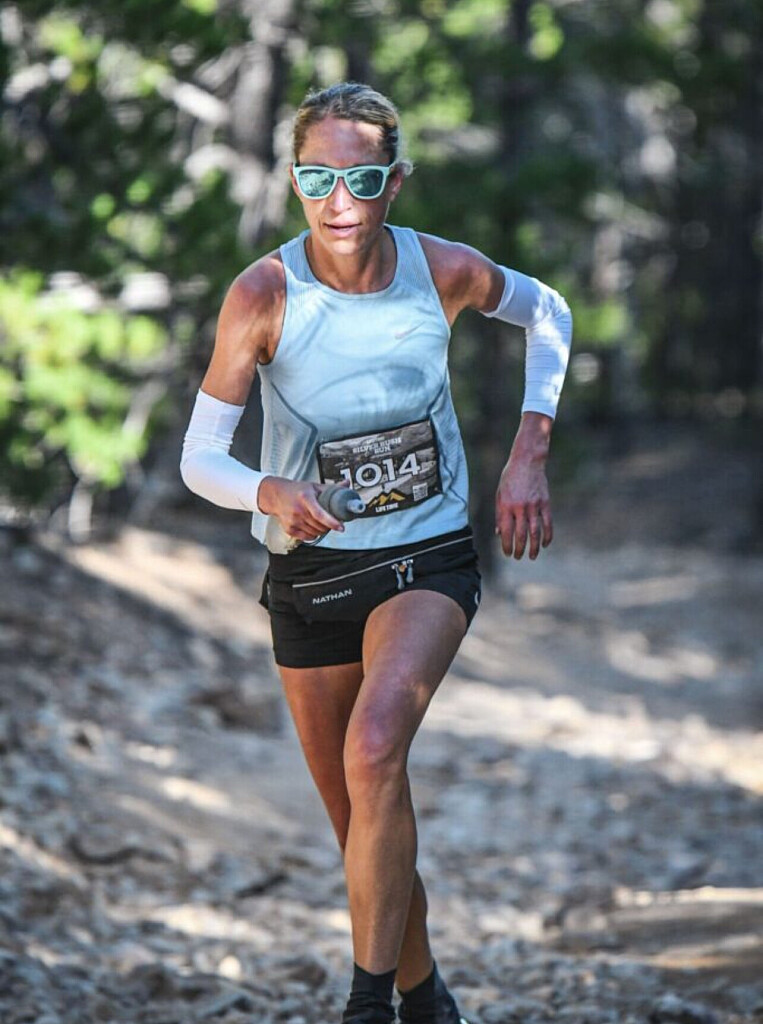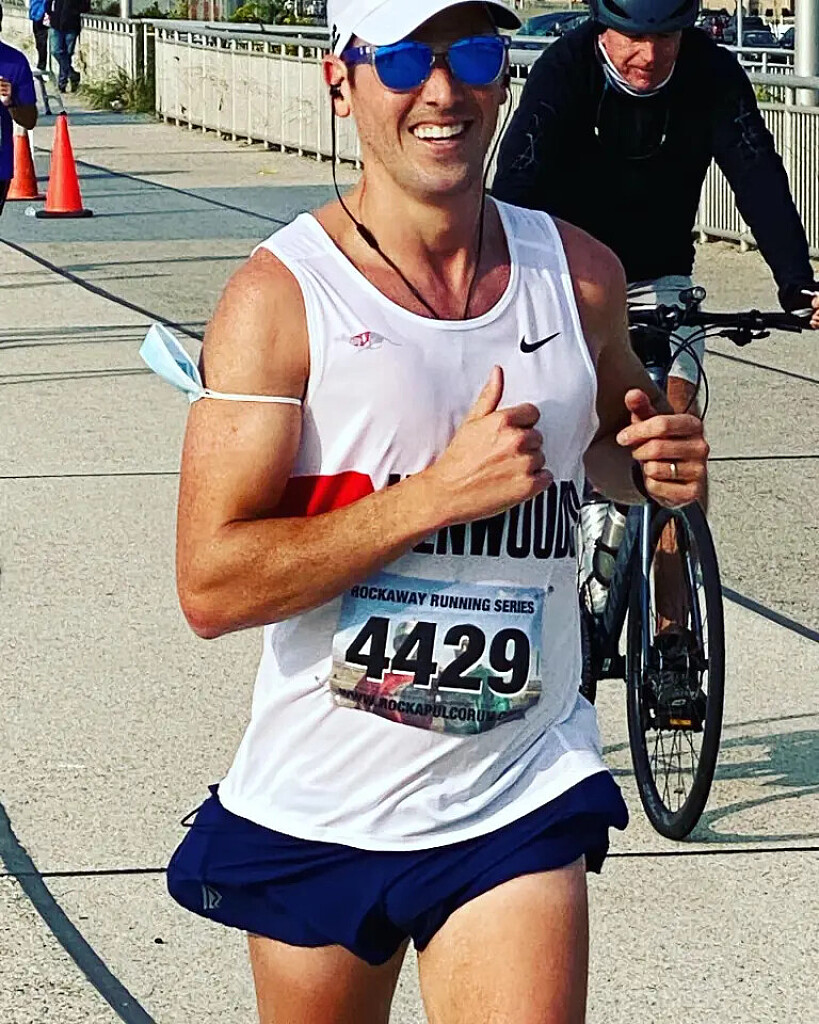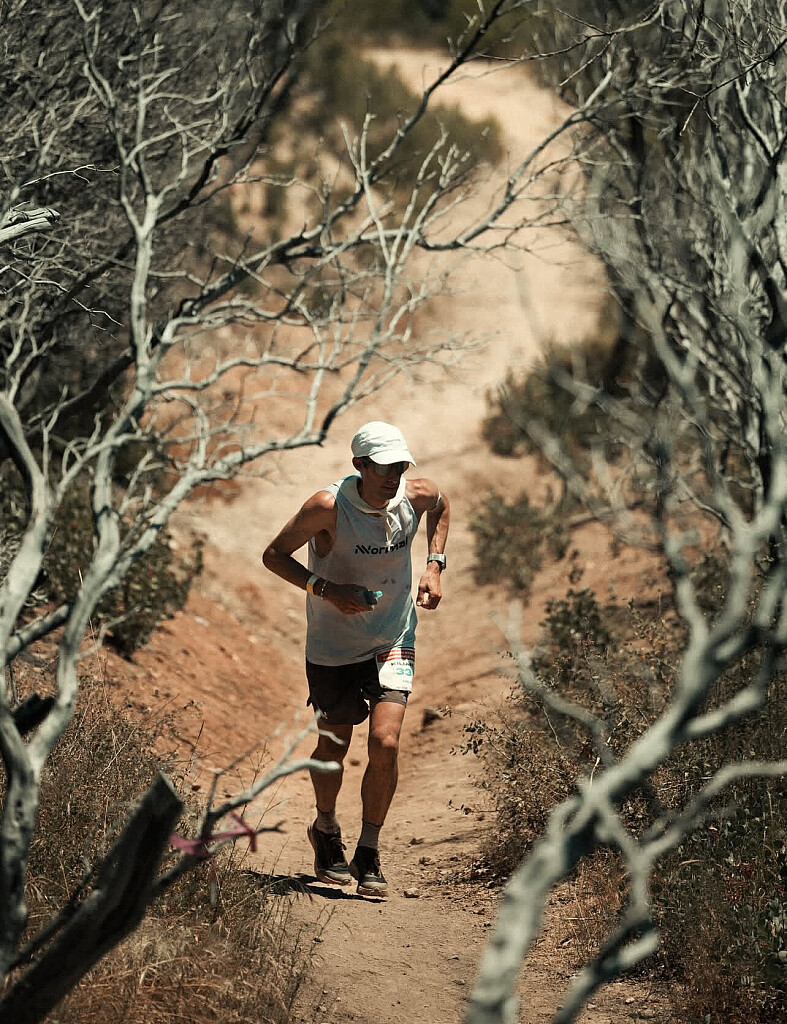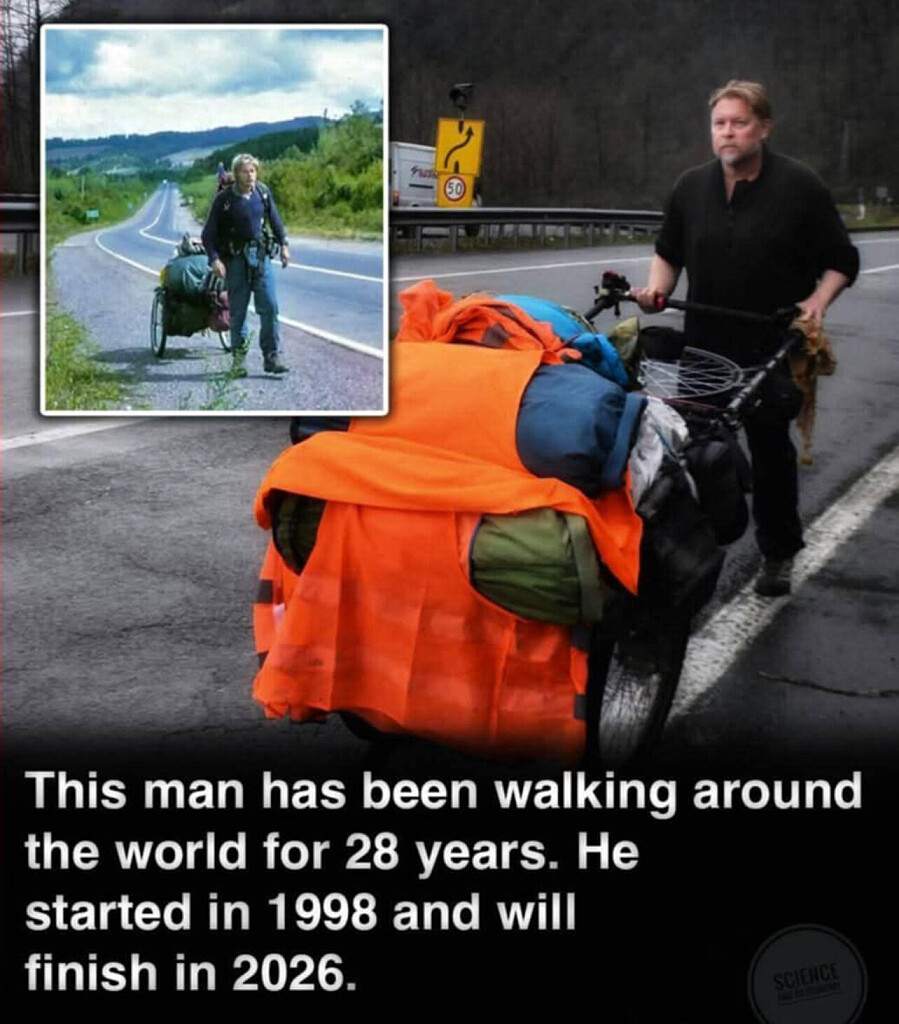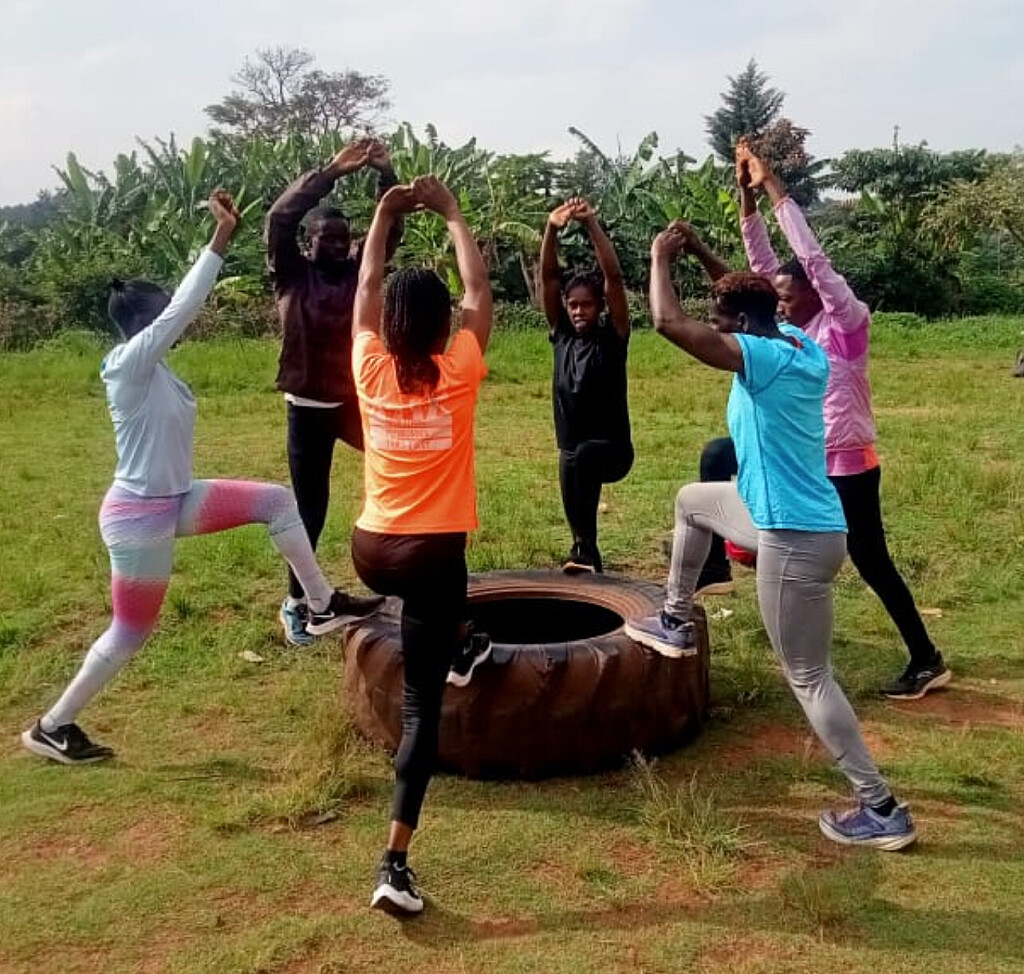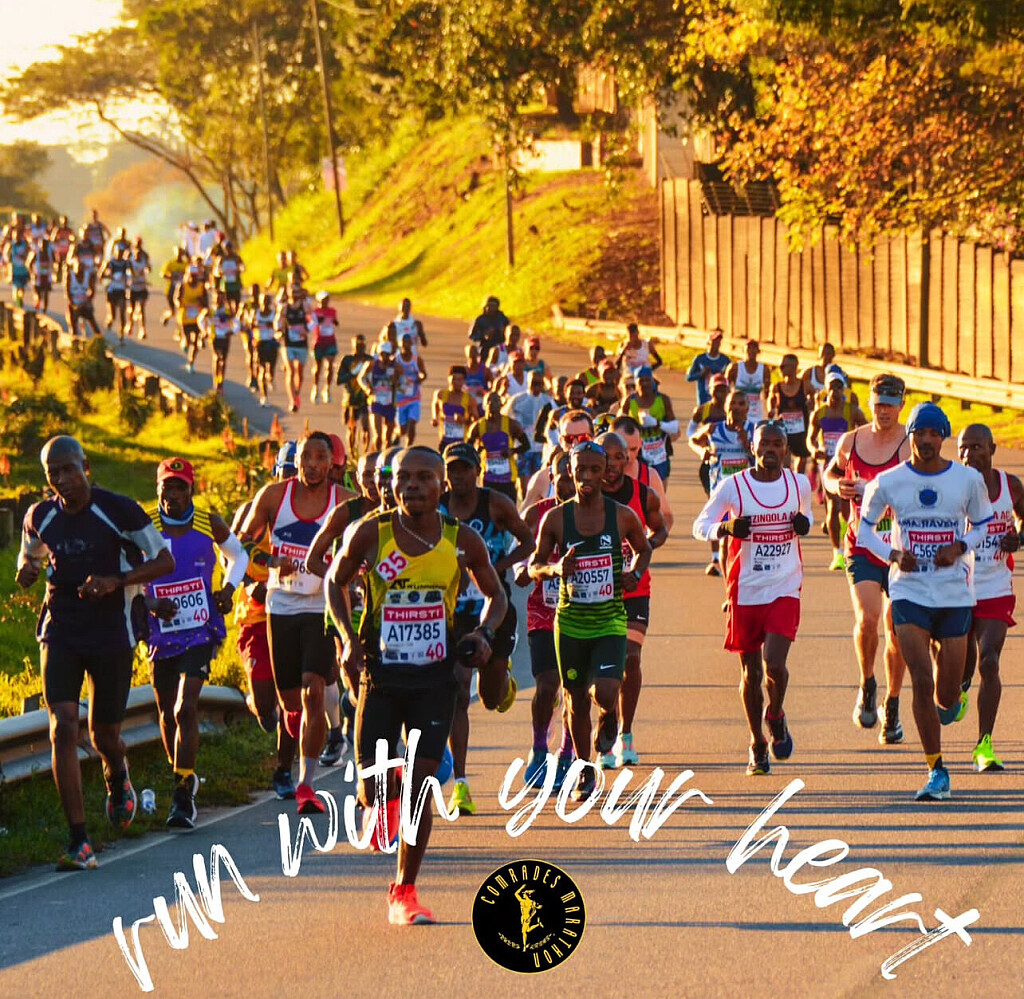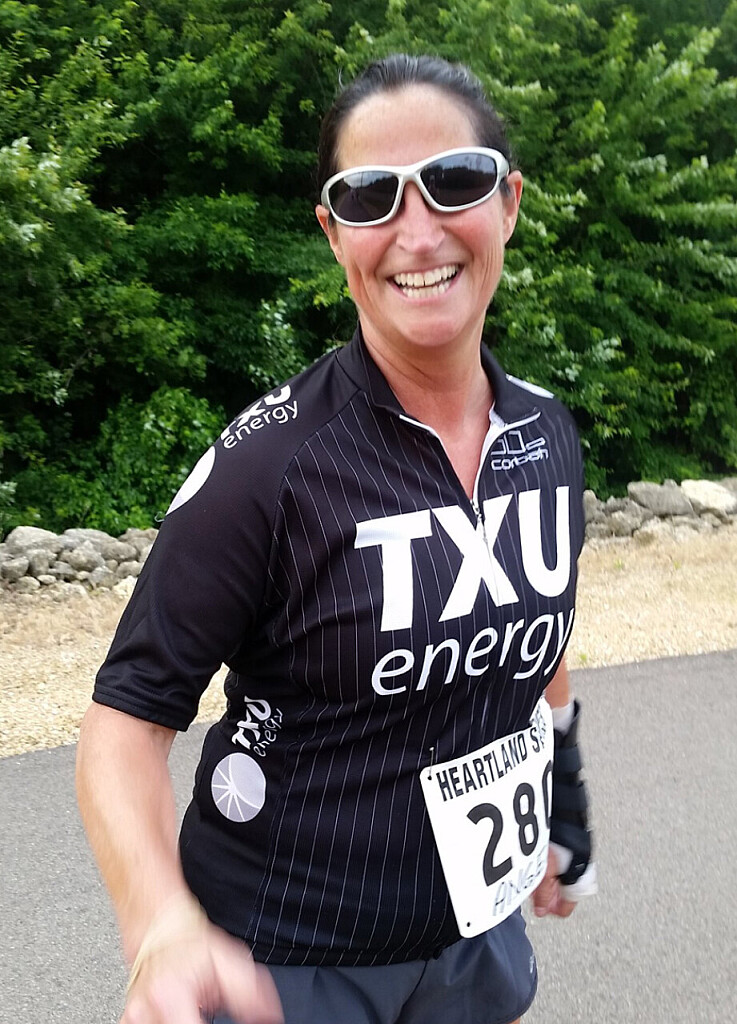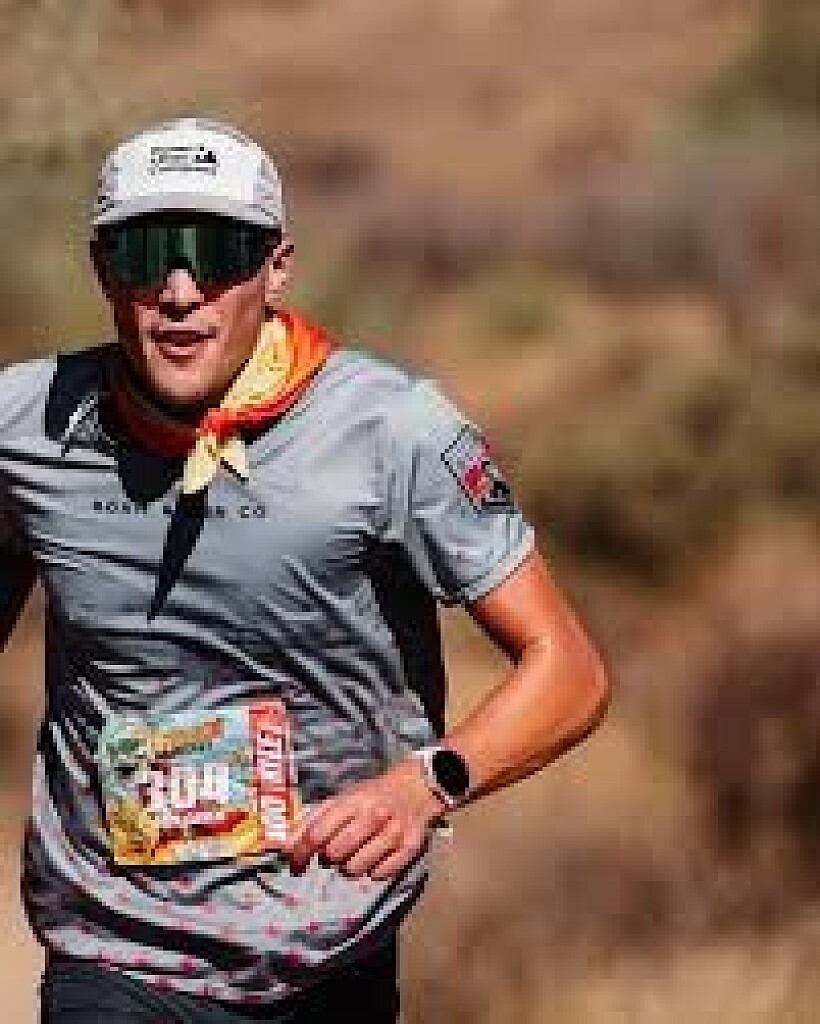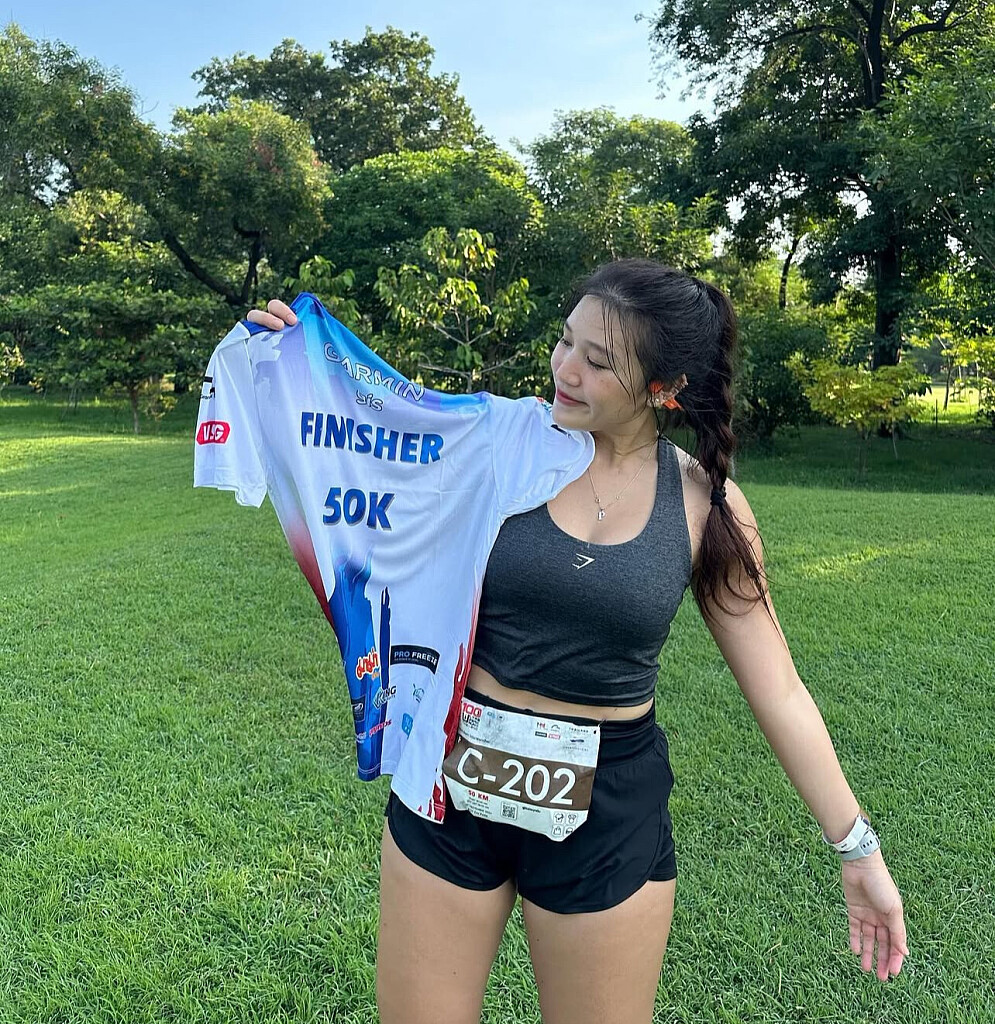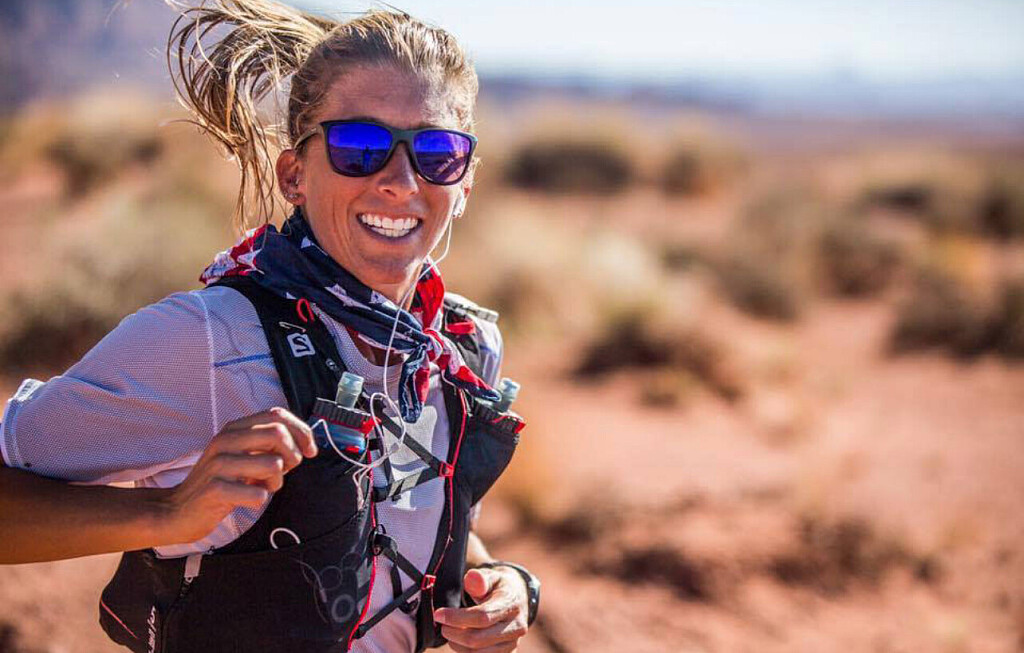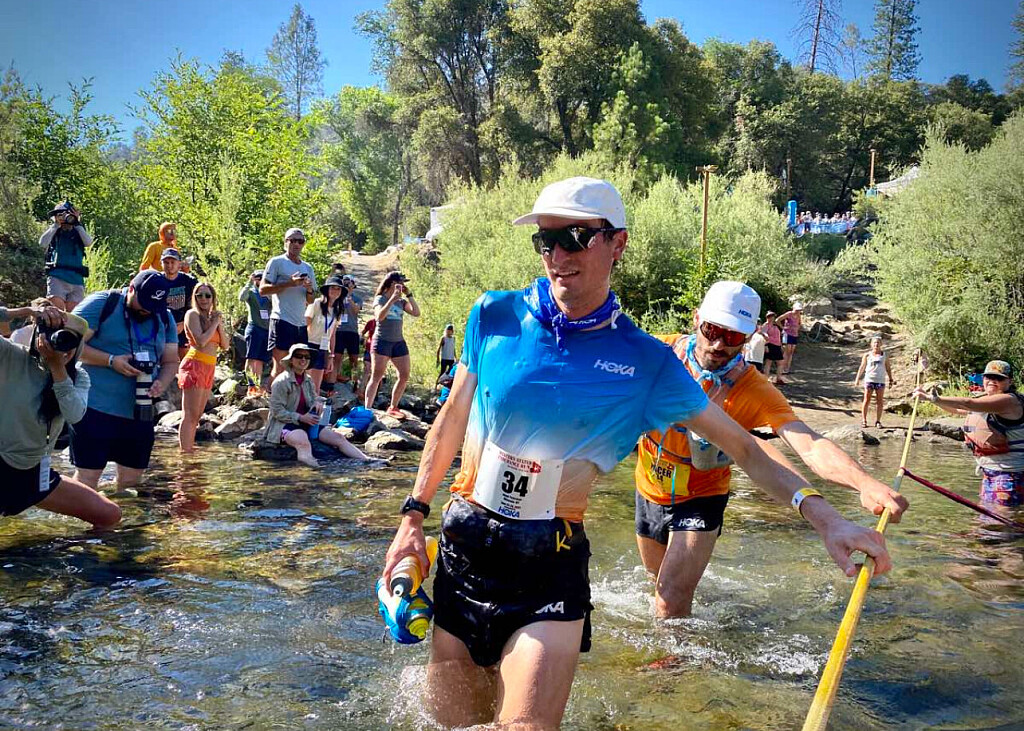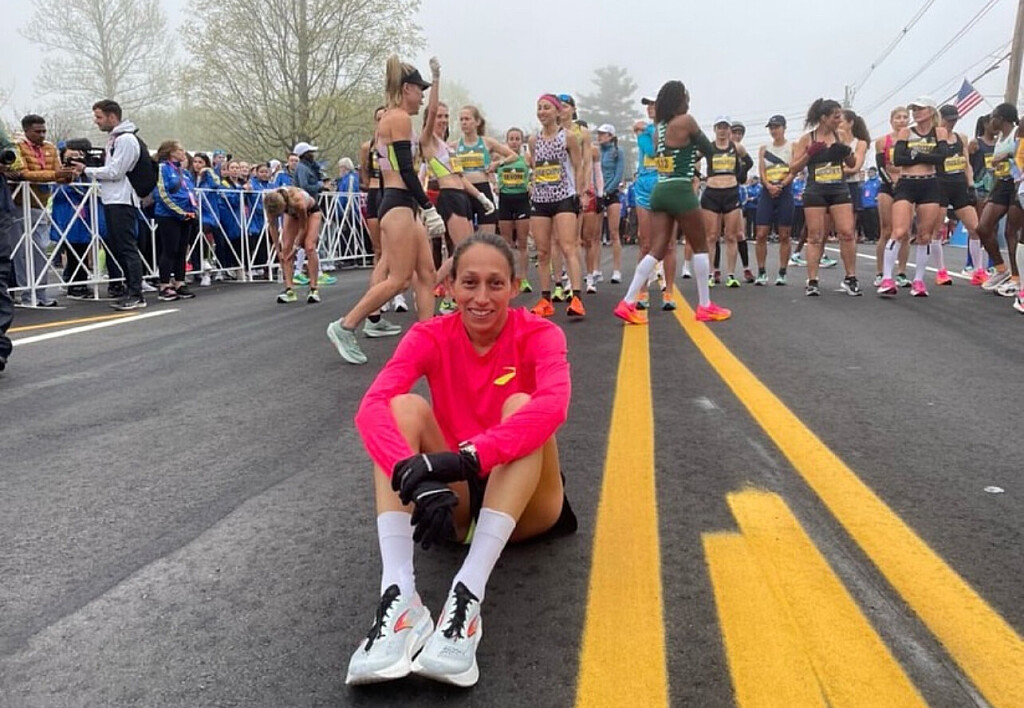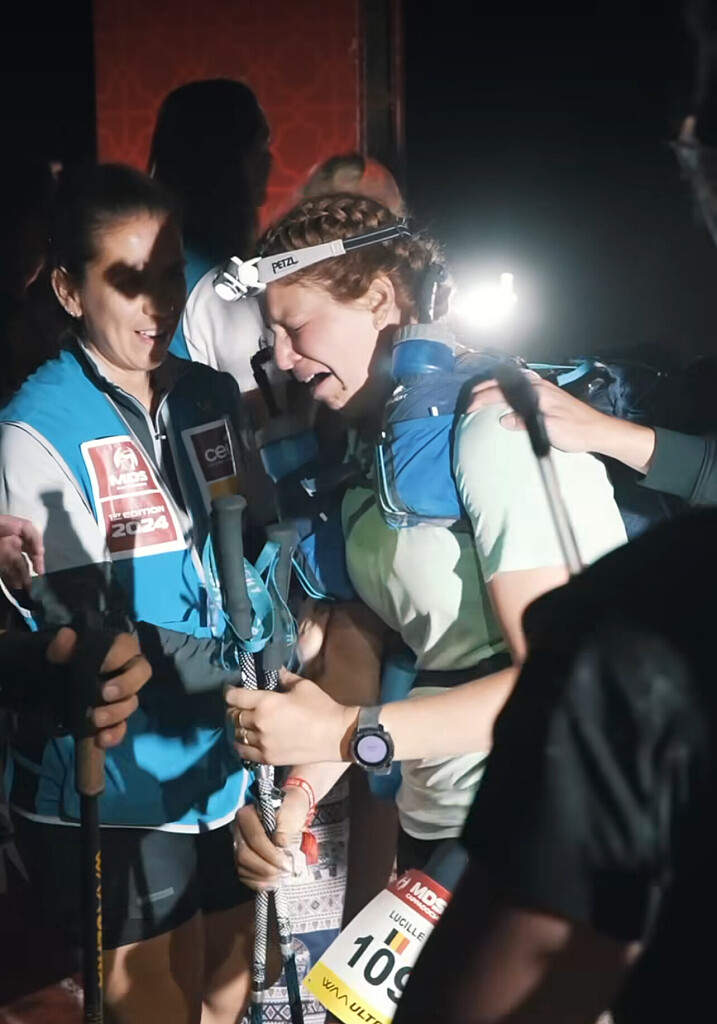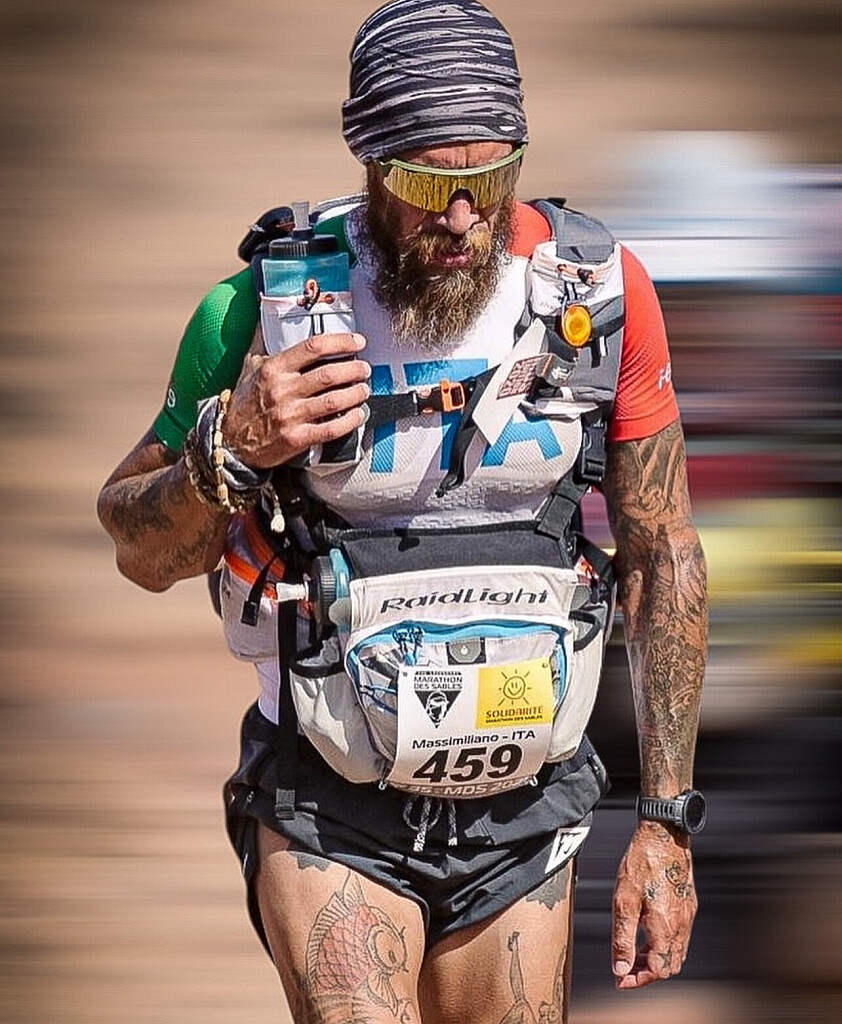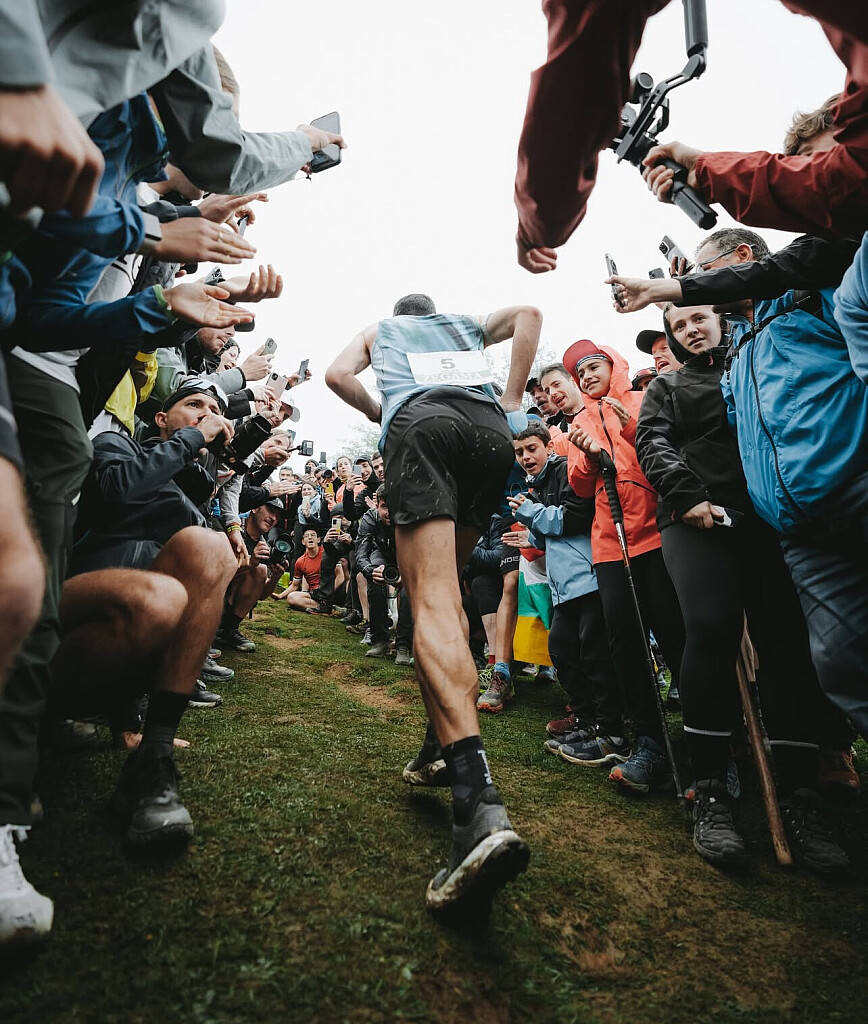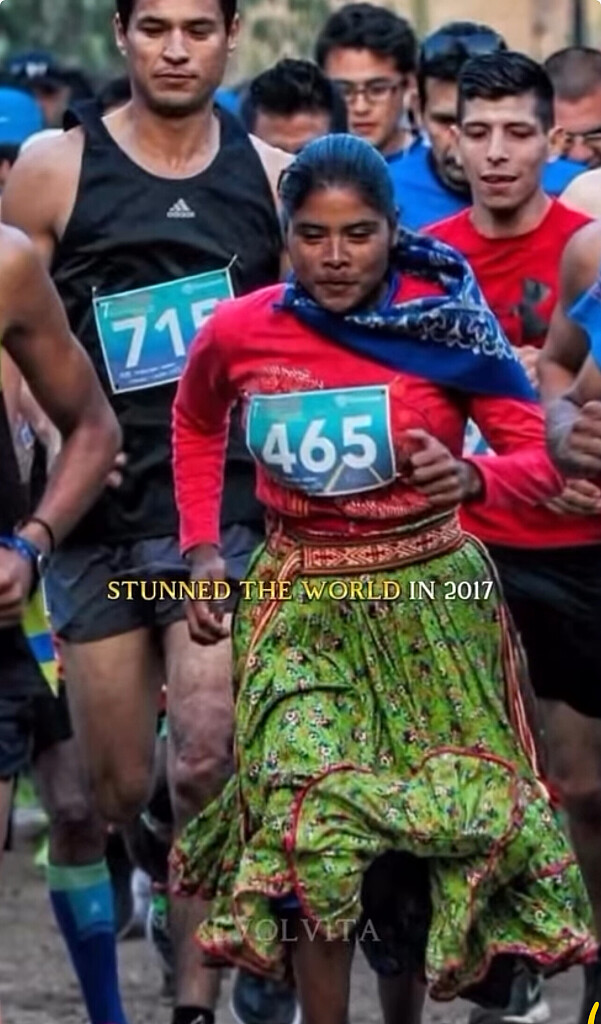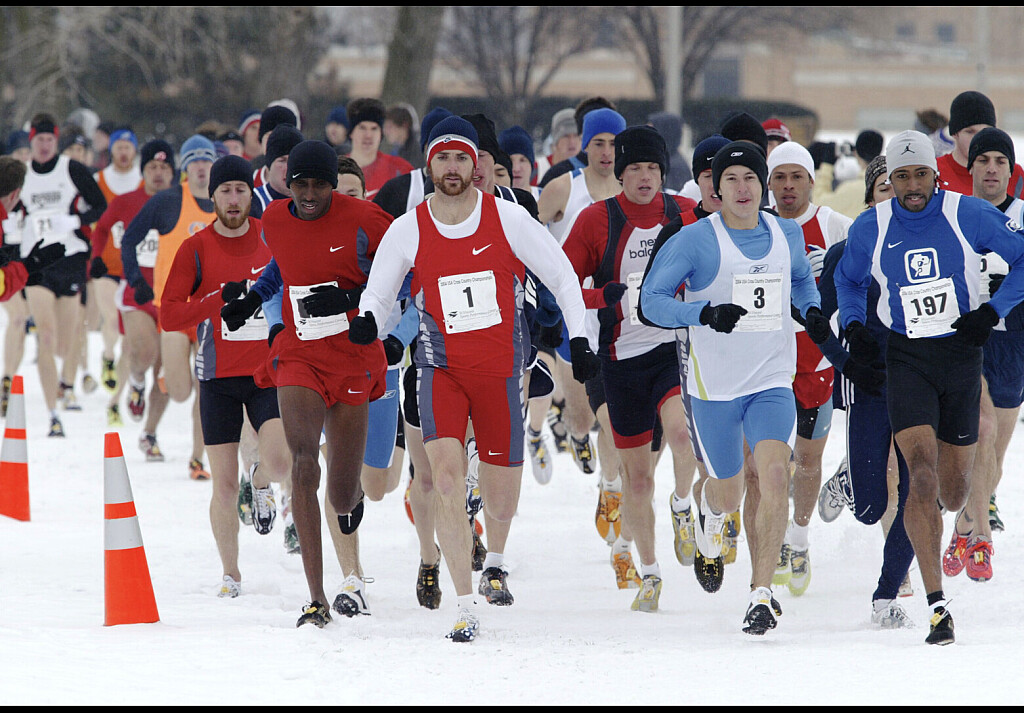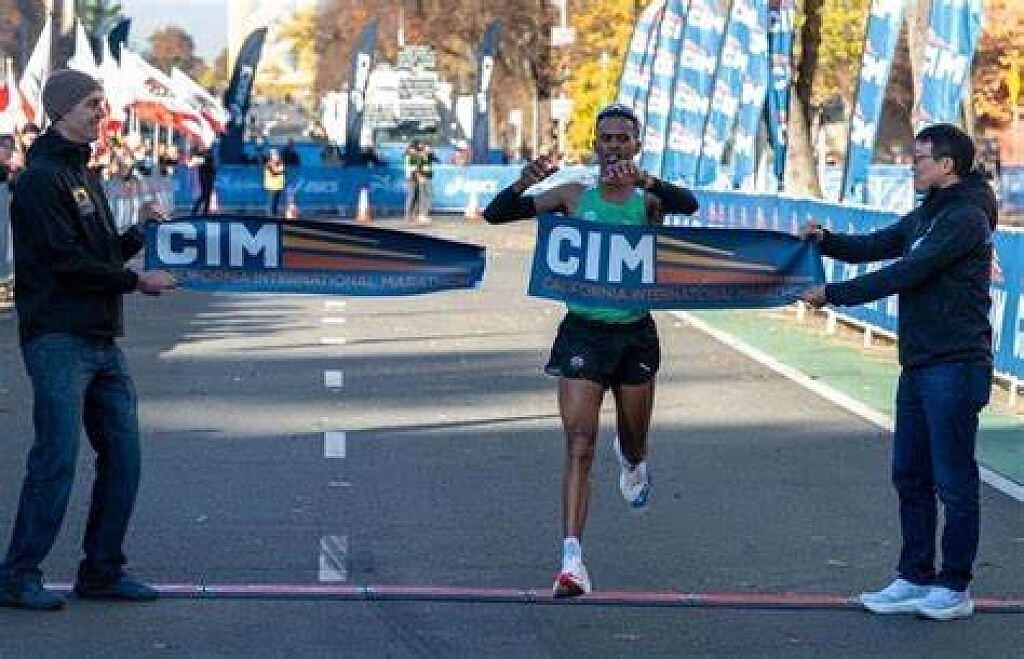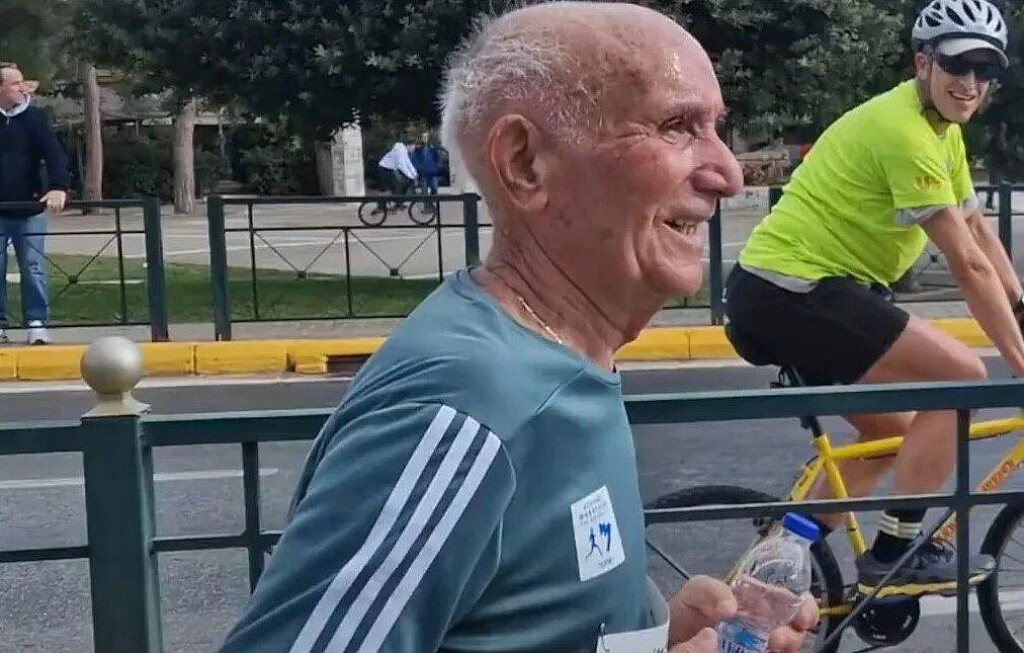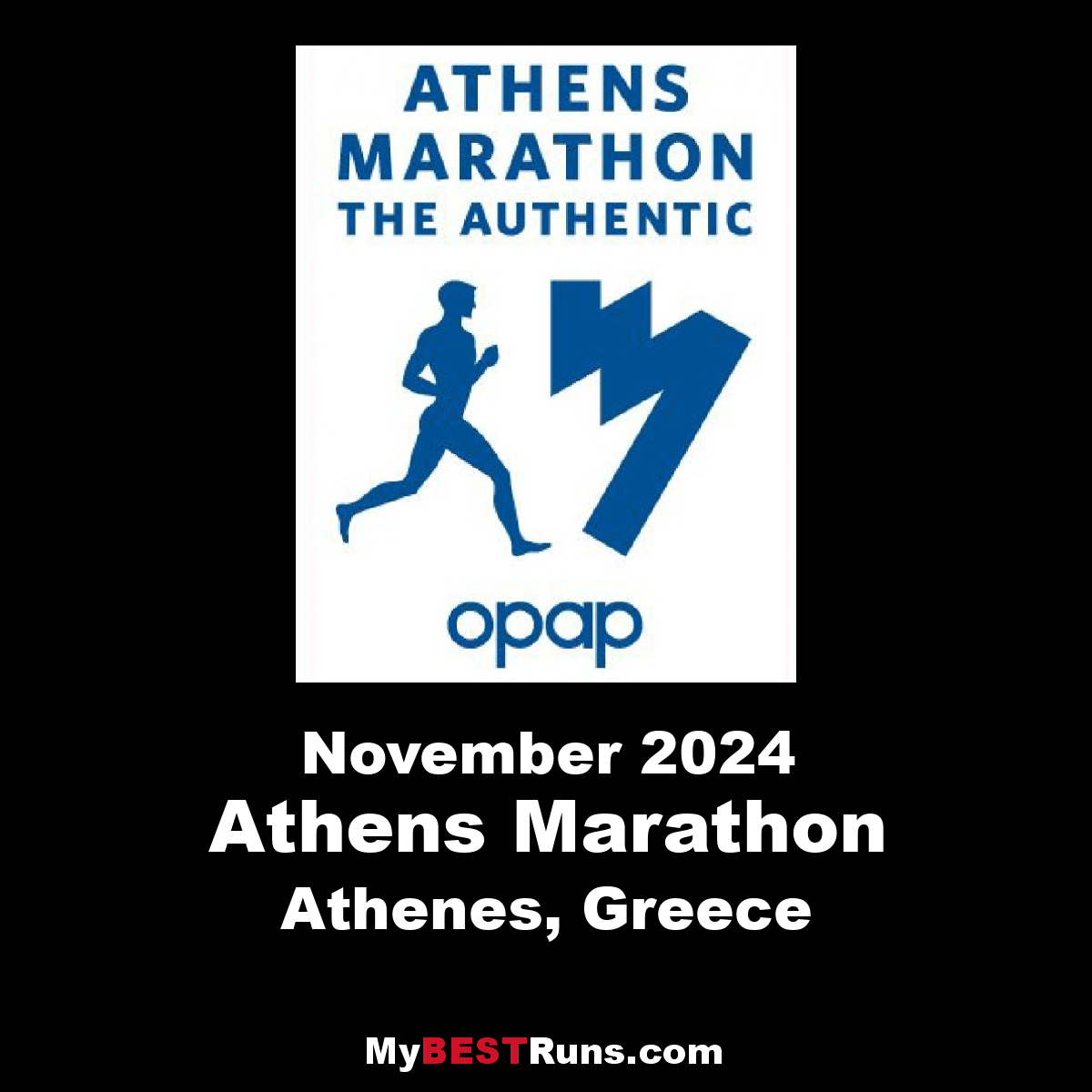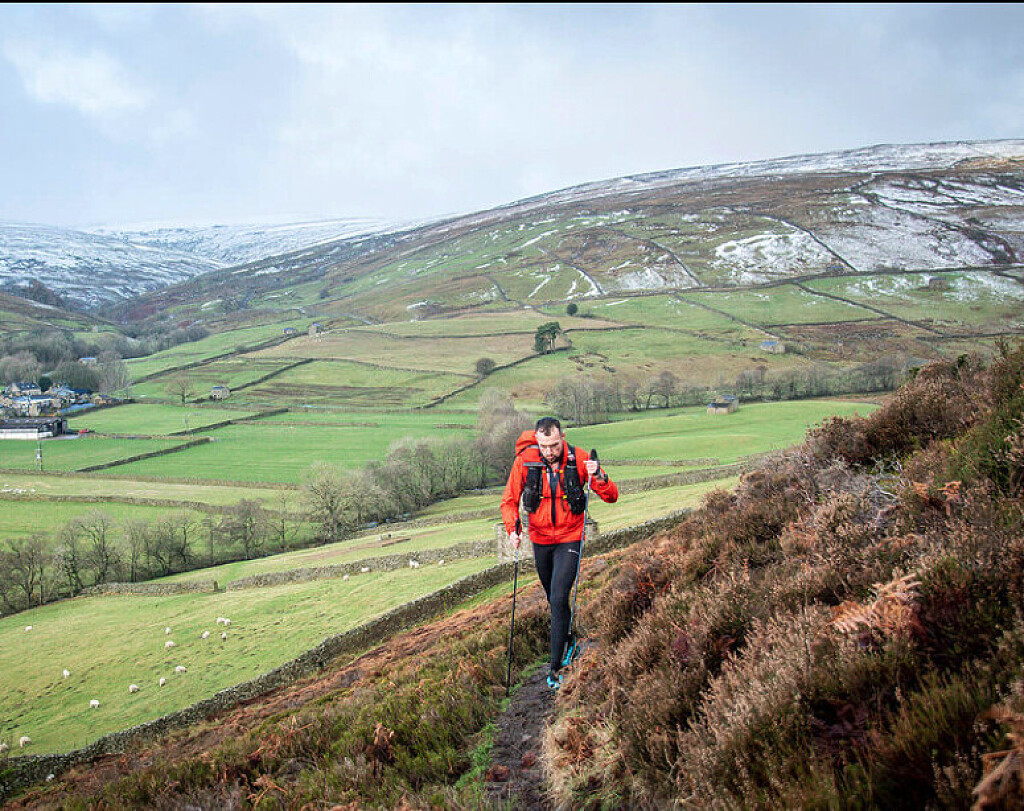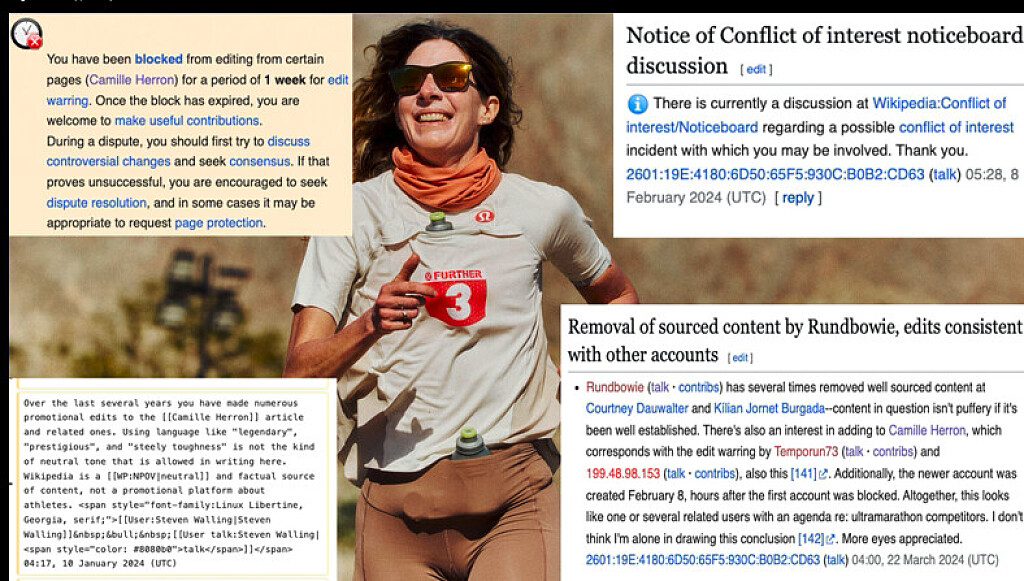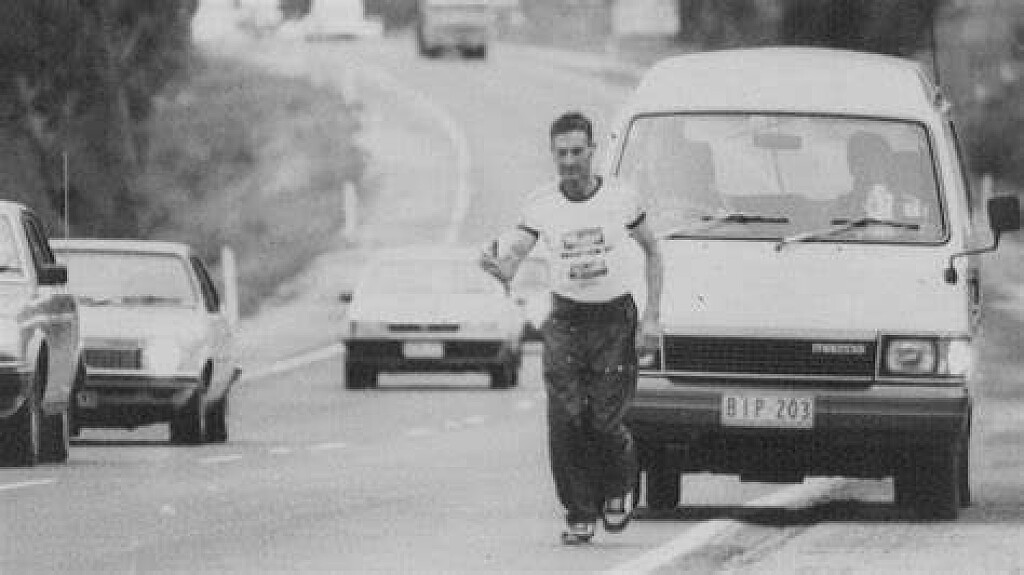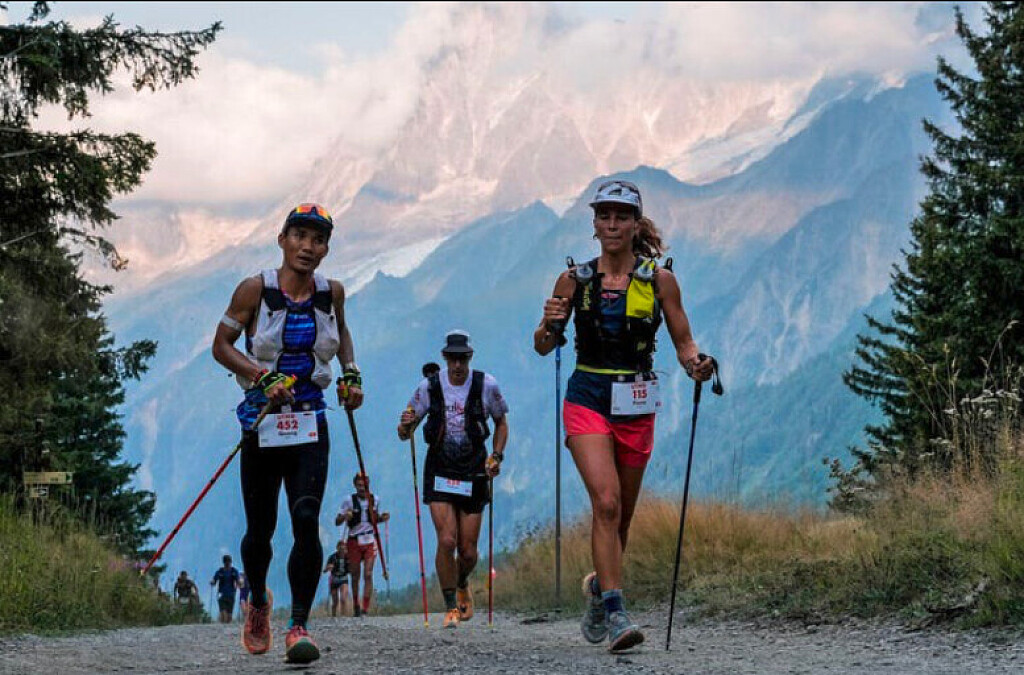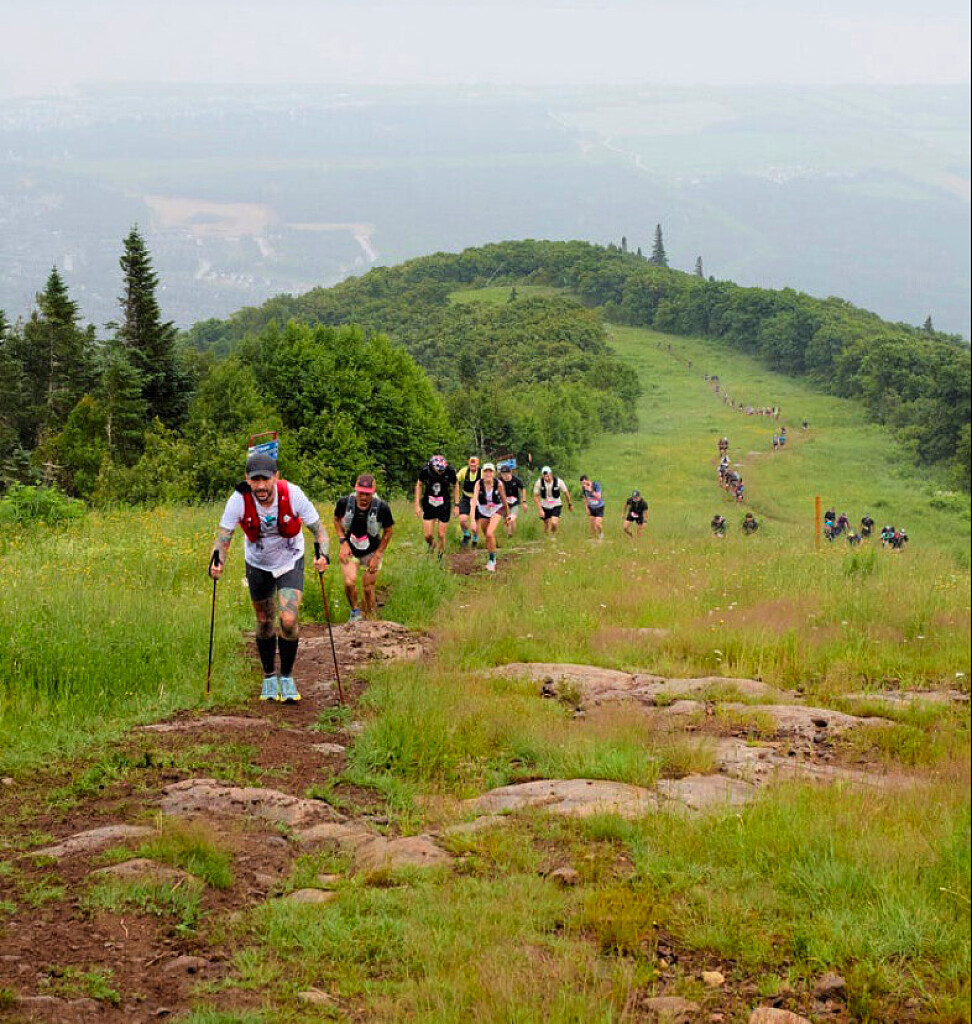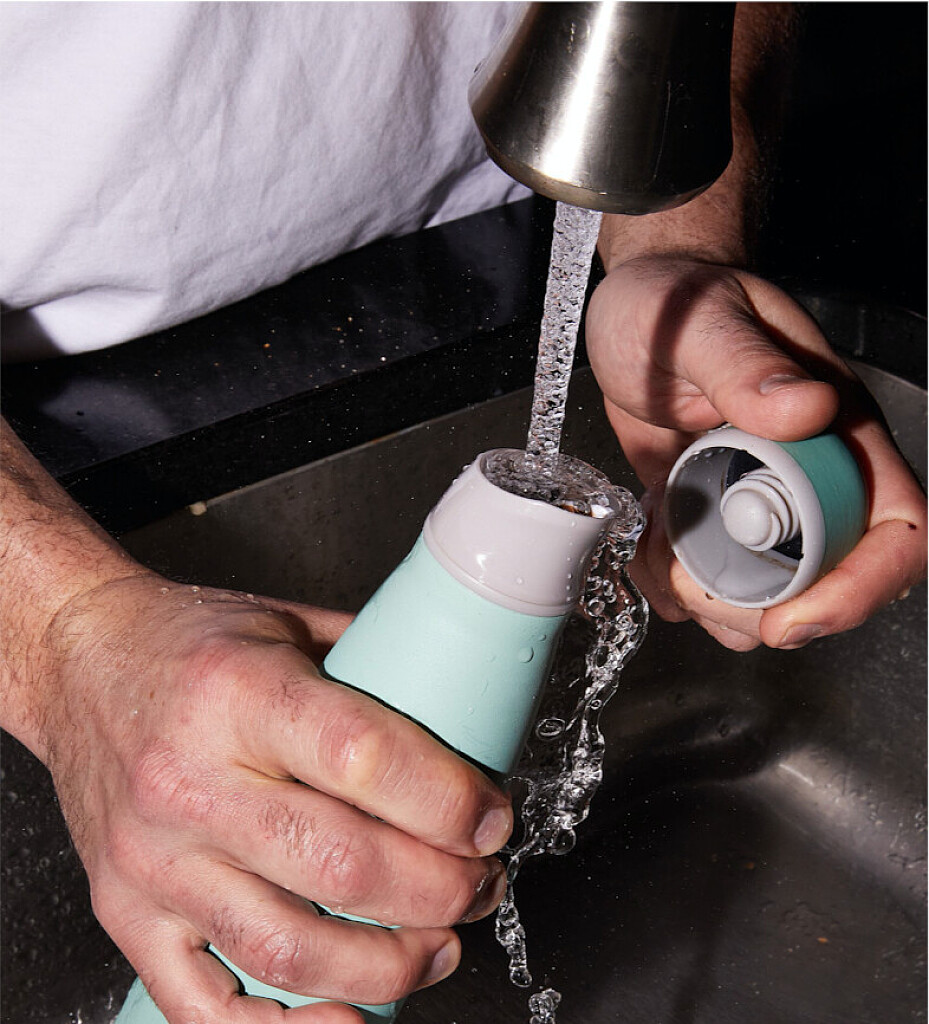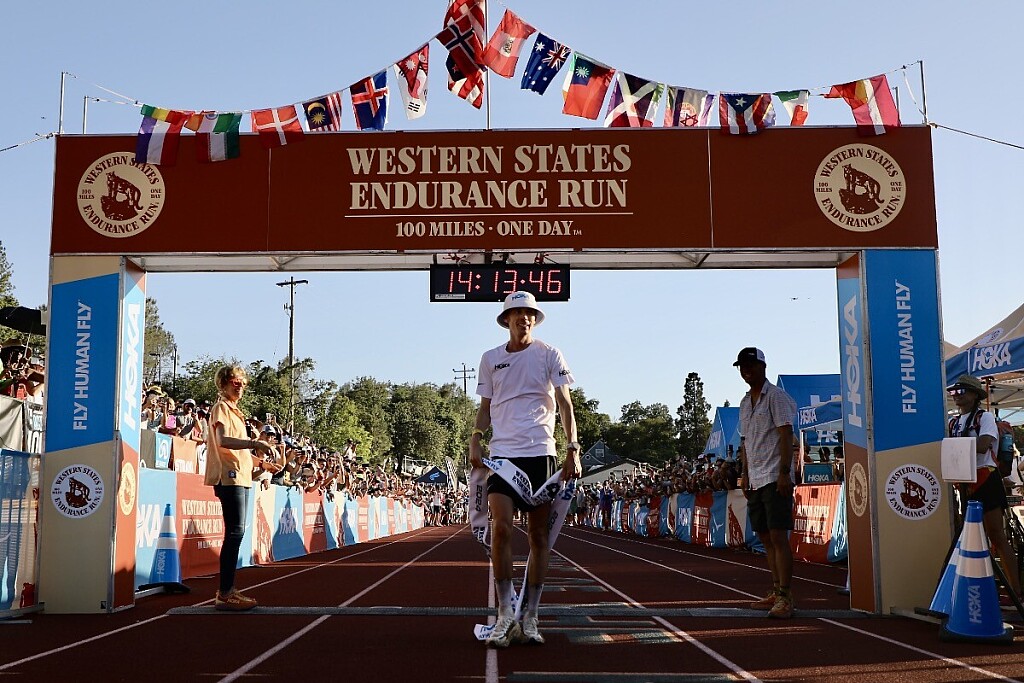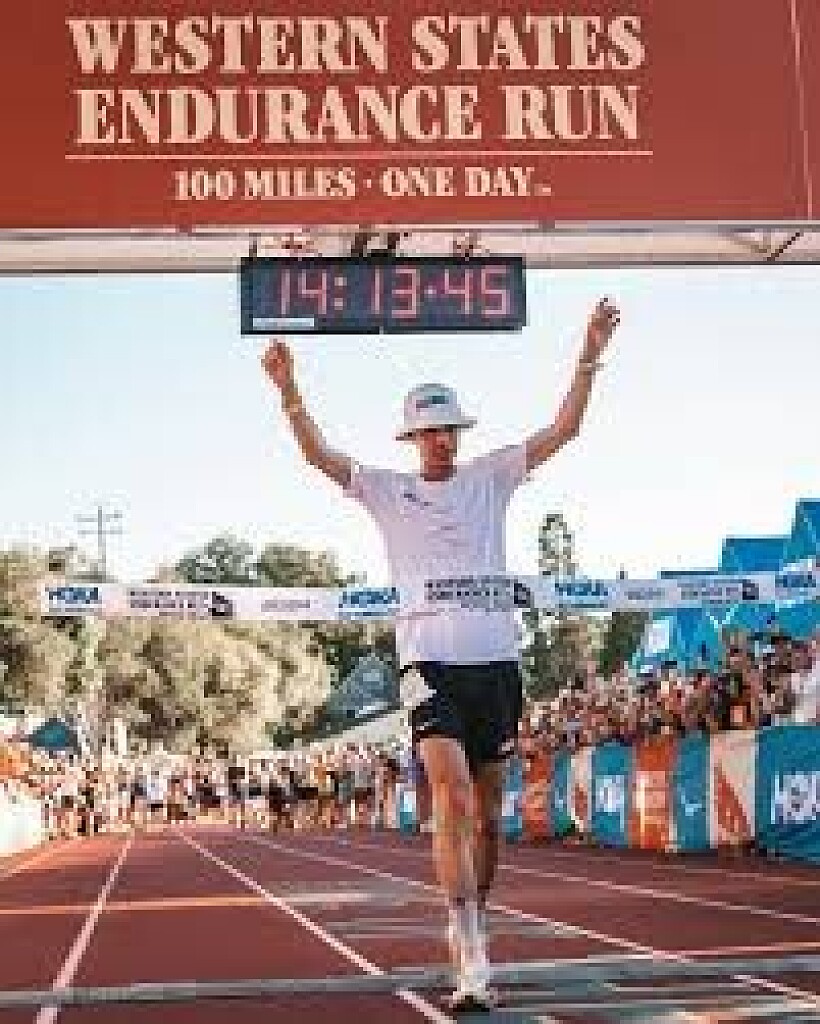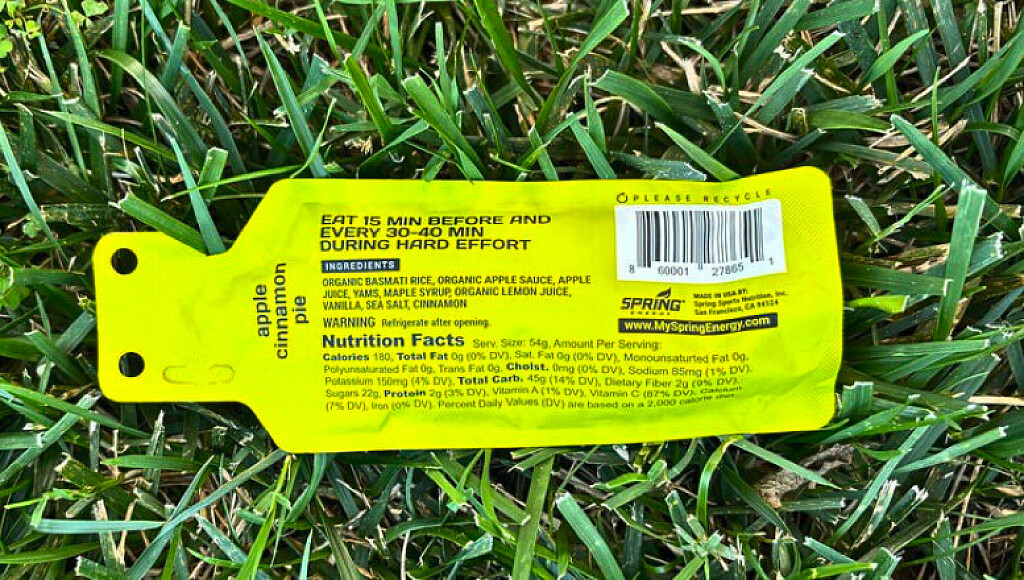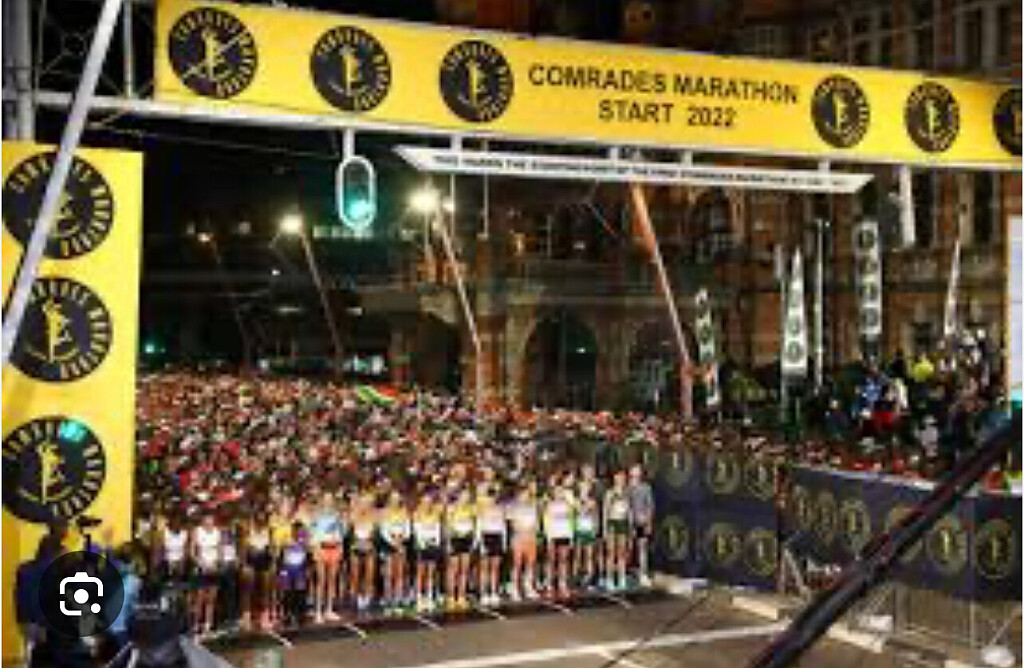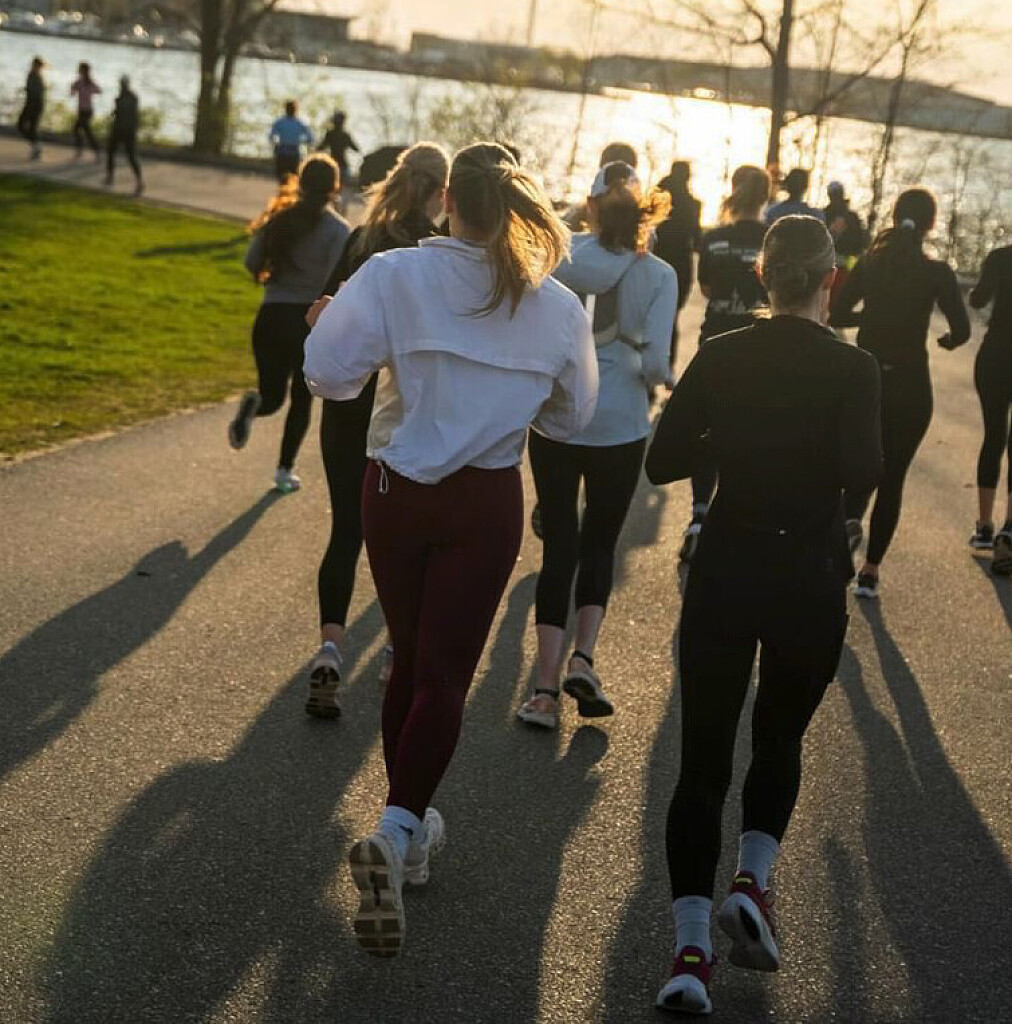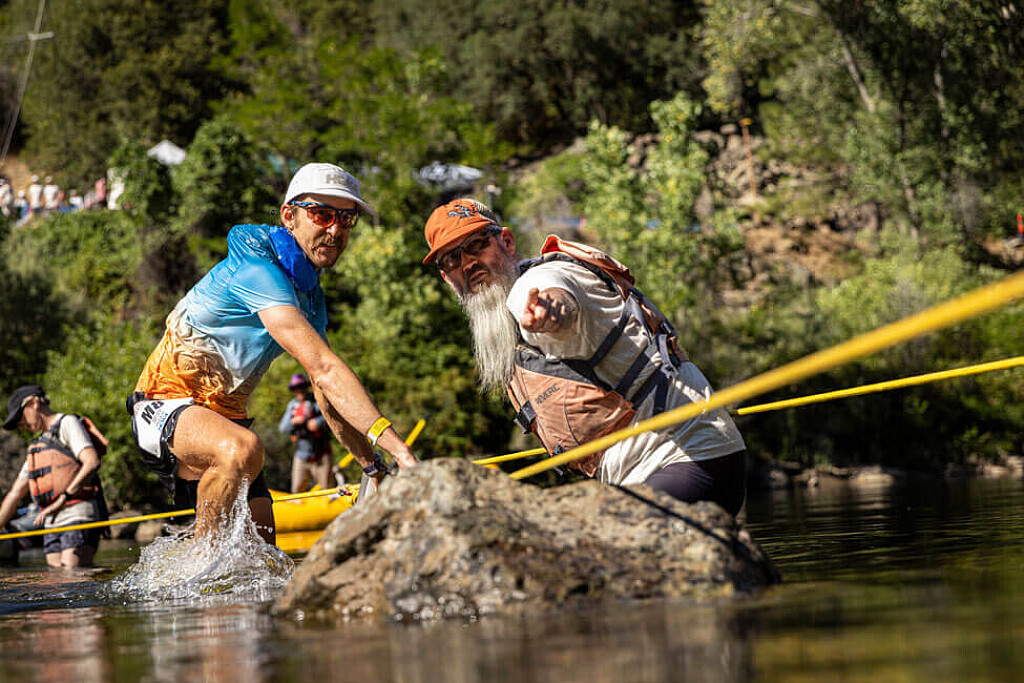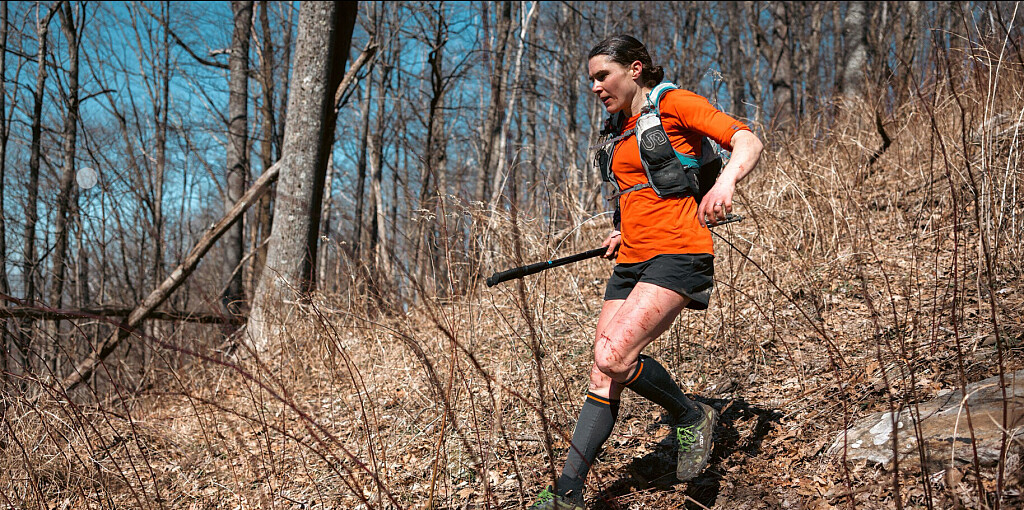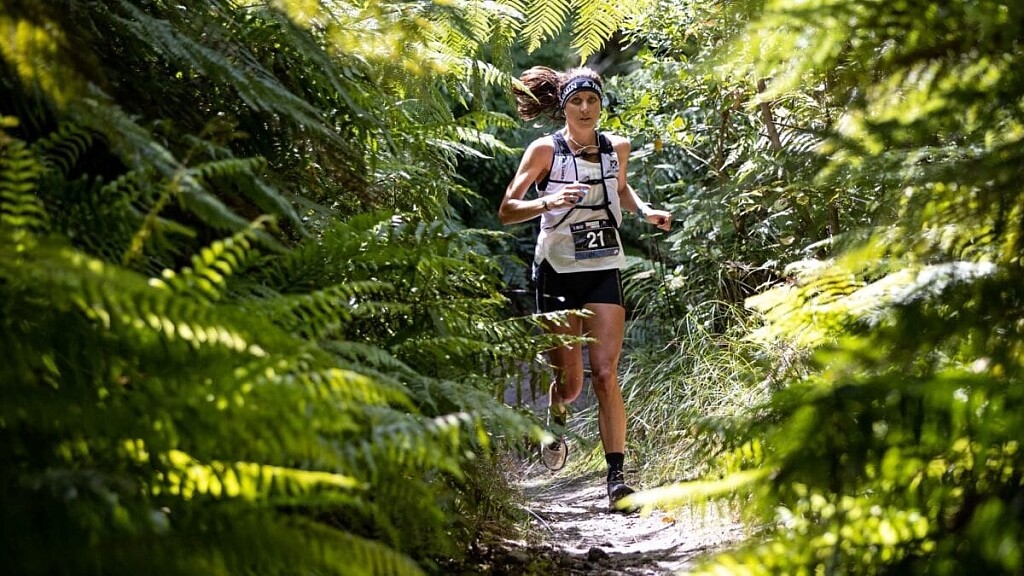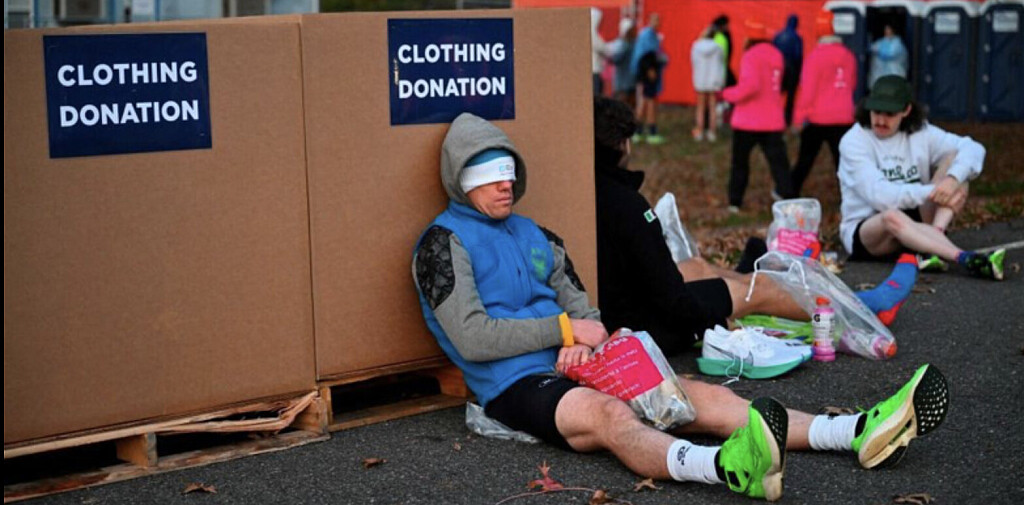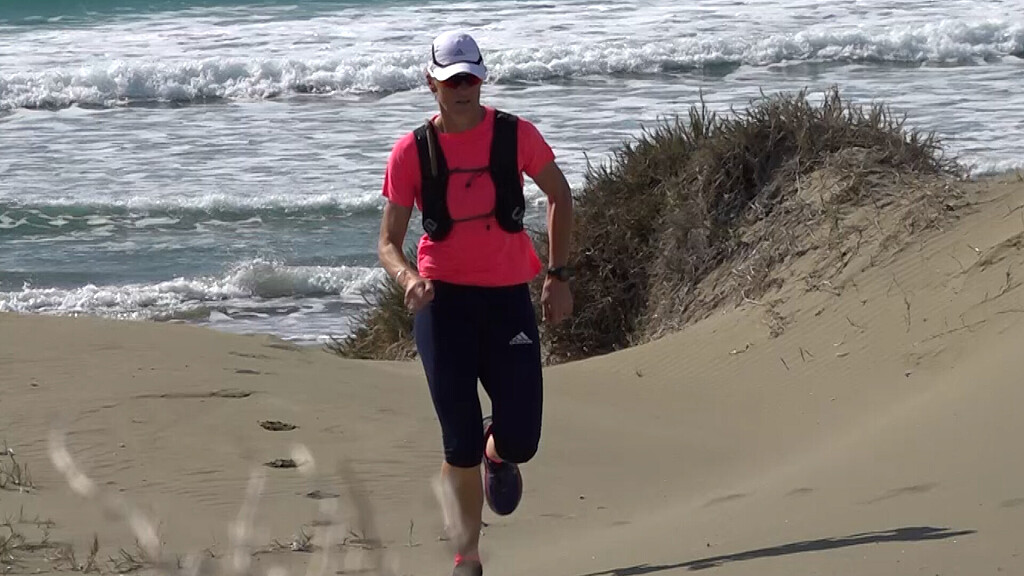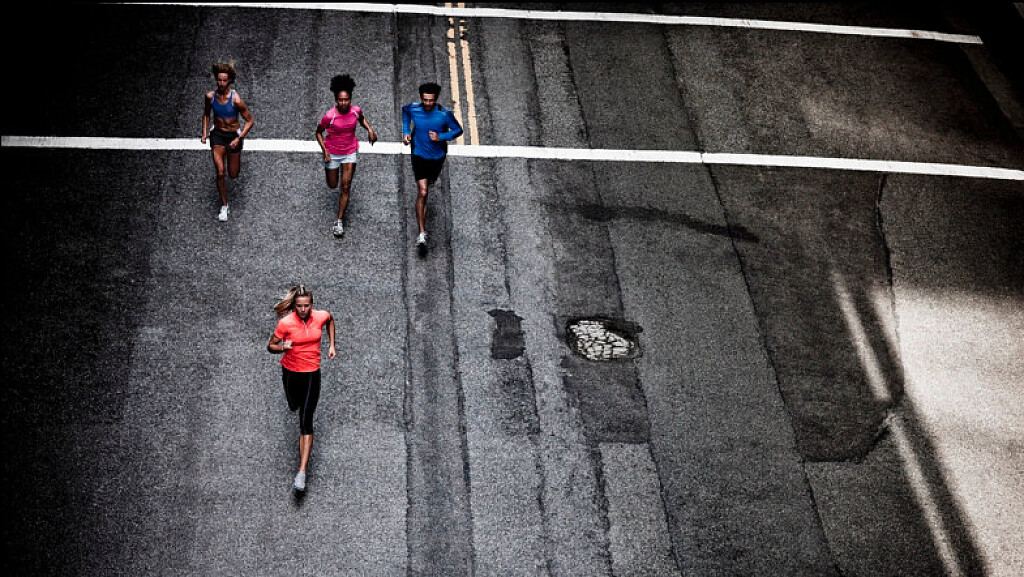Running News Daily
Running News Daily is edited by Bob Anderson. Send your news items to bob@mybestruns.com Advertising opportunities available. Train the Kenyan Way at KATA Kenya and Portugal owned and operated by Bob Anderson. Be sure to catch our movie A Long Run the movie KATA Running Camps and KATA Potato Farms - 31 now open in Kenya! https://kata.ke/
Index to Daily Posts · Sign Up For Updates · Run The World Feed
Articles tagged #Ultramarathon
Today's Running News
Anne Flower Sets New Women’s 50-Mile World Record at the 2025 Tunnel Hill 50 Mile
In a stunning display of endurance and precision pacing, emergency-room physician and ultramarathon standout Anne Flower blazed to a new women’s world record of 5:18:57 for the 50-mile distance at the 2025 Tunnel Hill 50 Mile in Vienna, Illinois. The mark shatters the previous record of 5:31:56 held by Courtney Olsen, set on the same course last year.
Record-Setting Performance
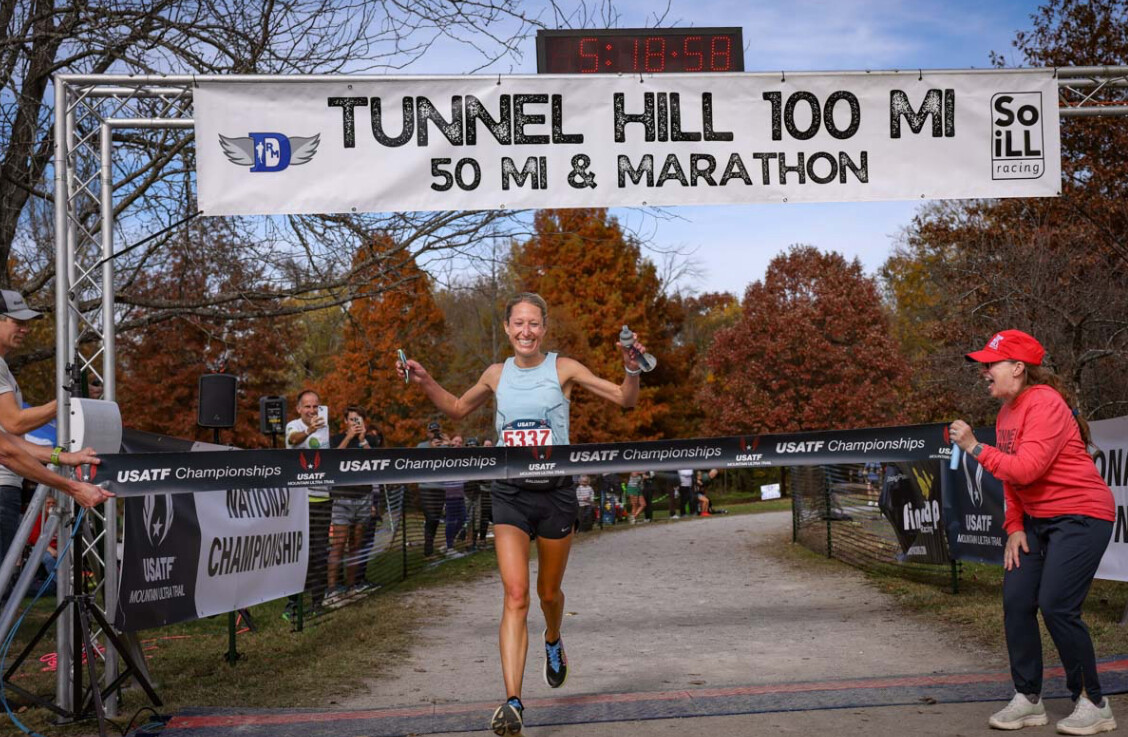
Held on the flat, crushed-gravel rails-to-trails route of the Tunnel Hill State Trail, the race has become a proving ground for world-class performances. Flower averaged an extraordinary 6:23 per mile (3:57 per kilometer) across the full 80.47 km course, running even splits and showing no signs of strain even as temperatures climbed later in the race.l
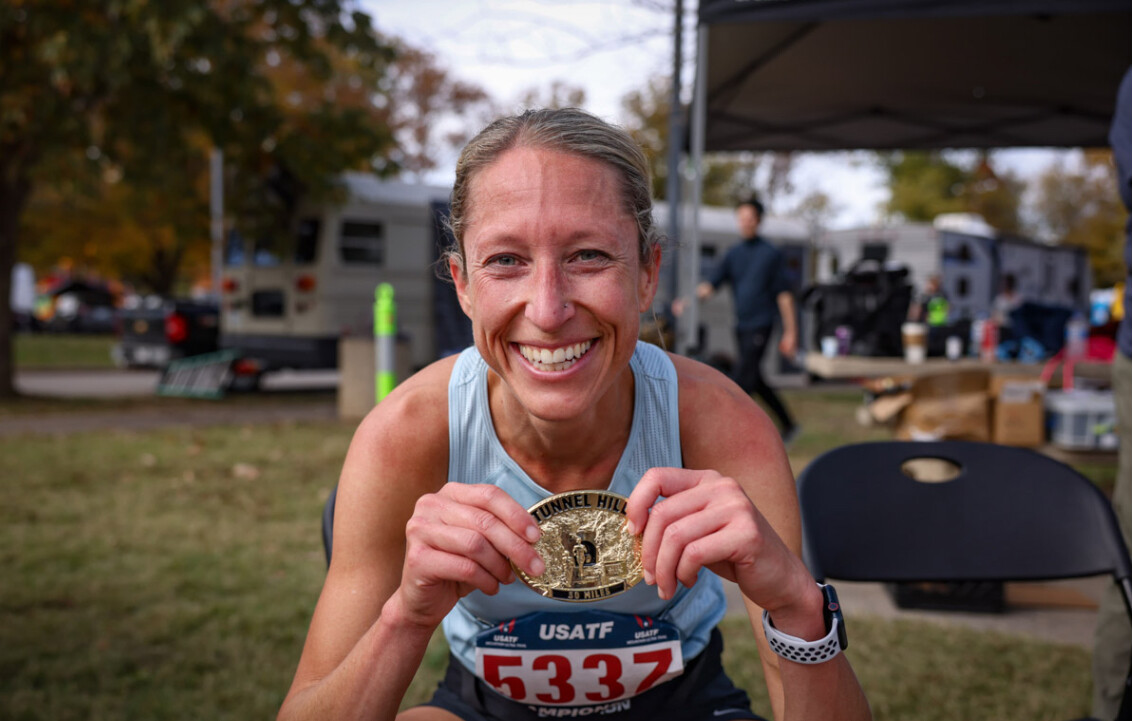
From the opening miles, Flower stayed well ahead of record pace, never faltering and closing strongly to seal a performance that redefines the women’s 50-mile standard. Olsen, competing in the 100k event this year, passed the 50-mile mark in 5:33:59—still an elite split, but more than 15 minutes behind Flower’s record pace.
From Marathons to Ultramarathons
Based in Colorado Springs, Colorado, Flower balances her demanding career as an emergency-room doctor with elite-level training. Before moving to the trails in 2019, she competed in marathons and took part in the 2020 U.S. Olympic Marathon Trials. Her road background shows in her efficient stride and disciplined pacing.
Over the past two seasons, she has built an impressive résumé:
Winner of the 2024 Javelina 100k
Champion of the 2025 Silver Rush 50 Mile
Record-breaker at the 2025 Leadville 100 Mile, where she eclipsed Ann Trason’s 31-year-old mark in her debut at the distance
These results paved the way for her dominant performance at Tunnel Hill, demonstrating both her endurance and her remarkable consistency.
Raising the Bar for Women’s Ultrarunning
Flower’s 5:18:57 isn’t just fast—it’s a historic leap forward. Taking more than 12 minutes off a world record at this level is rare, and doing so with such control underscores her potential for even greater achievements ahead.
Tunnel Hill has become synonymous with world-record performances, and Flower’s run further cements the race’s reputation as one of the premier venues for ultradistance excellence.
What’s Next
With records now at both 50 and 100 miles, Flower’s next challenge may be defending or lowering her new mark—or shifting her focus toward international championship events. Whatever path she chooses, her rise through the sport has been nothing short of extraordinary.
Anne Flower has proven that it’s possible to balance a demanding professional life with world-class athletic performance. Her blend of discipline, determination, and pure endurance has elevated her into the top tier of ultrarunning’s global elite.
by Boris Baron
Login to leave a comment
Oz Pearlman: Mentalist and Marathoner with a 2:23:52 Personal Best
Oz Pearlman is most known as a world-class mentalist and entertainer, dazzling audiences with mind-reading feats. While his stage act is about illusions and mind-reading, his running accomplishments are very real and recognized in the endurance community.
Oz has carved out a reputation as an elite runner, with marathon credentials and ultra-endurance performances that prove his strength goes far beyond the stage.

Marathon Credentials
Oz’s personal best marathon of 2:23:52, set at the Philadelphia Marathon in 2014, is a time most competitive runners can only dream of. He’s also posted:
• 2:26:59 at the 2014 New York City Marathon
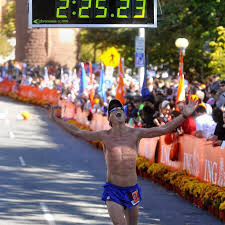
• 2:29:19 at the 2021 NYC Marathon
• 2:40:14 at the 2022 NYC Marathon

Along the way, he’s notched victories in regional races, including the New Jersey Marathon, underscoring his range and consistency.
From Marathons to Ultramarathons
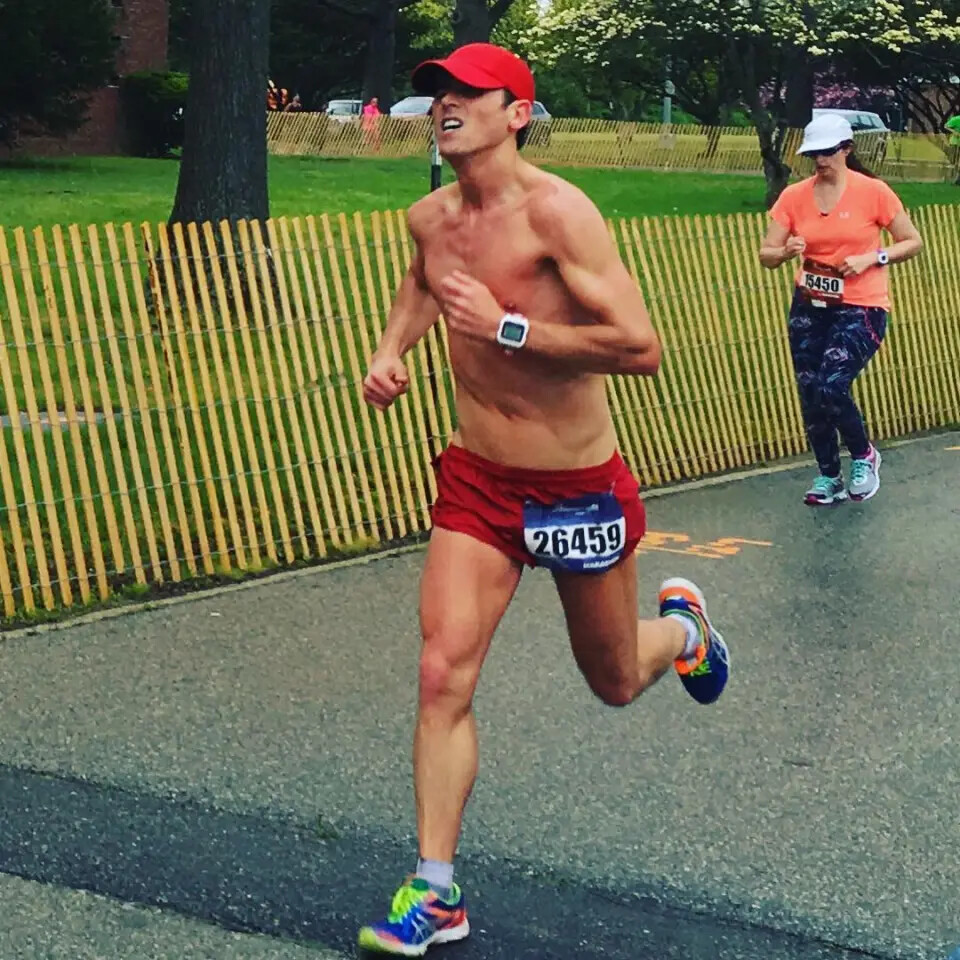
Oz didn’t stop at 26.2. He’s tested his limits in some of the sport’s toughest arenas:

• 100 miles in 16:53:25 at the Keys Ultra (2021), finishing second overall.
• 100 miles in 18:25:23 at the Umstead 100-Mile Endurance Run (2025).
• 117 miles in Central Park (2022), setting the record for most loops in a single day while raising funds for Ukrainian relief.
• A nonstop run from Montauk Point Lighthouse to Times Square — over 130 miles in 24 hours.
These efforts highlight not only his physical endurance but also his ability to push through the mental barriers that define ultra running.
Mind Over Miles
As a mentalist, Oz has honed a mastery of focus, patience, and mental toughness — qualities that translate seamlessly to distance running. Whether chasing sub-2:25 marathons or grinding through 100-mile ultras, he shows that success in endurance sport comes as much from the mind as from the legs.
Running With Purpose
Many of Oz’s longest challenges have doubled as fundraising efforts, proving that his running is about more than personal achievement. His Central Park ultra raised significant support for Ukraine, reflecting how he uses his talents — both on stage and on the course — to make an impact.
Oz Pearlman is more than an entertainer. He is a reminder that resilience, consistency, and the power of the mind can take us further than we imagine — sometimes all the way from Montauk to Manhattan.
by Boris Baron
Login to leave a comment
Kilian Jornet Announces Bold New Ultra-Endurance Challenge
Kilian Jornet, widely regarded as the greatest endurance athlete of all time, has unveiled his most audacious project yet—combining the grit of the Tour de France with the relentless grind of marathon running.
The mountain-running icon plans to summit every 14,000-foot peak in the contiguous United States, linking them all by bicycle and on foot. His concept blends cycling stages on par with the Tour de France and running a marathon each day, all while climbing some of the highest mountains in America.
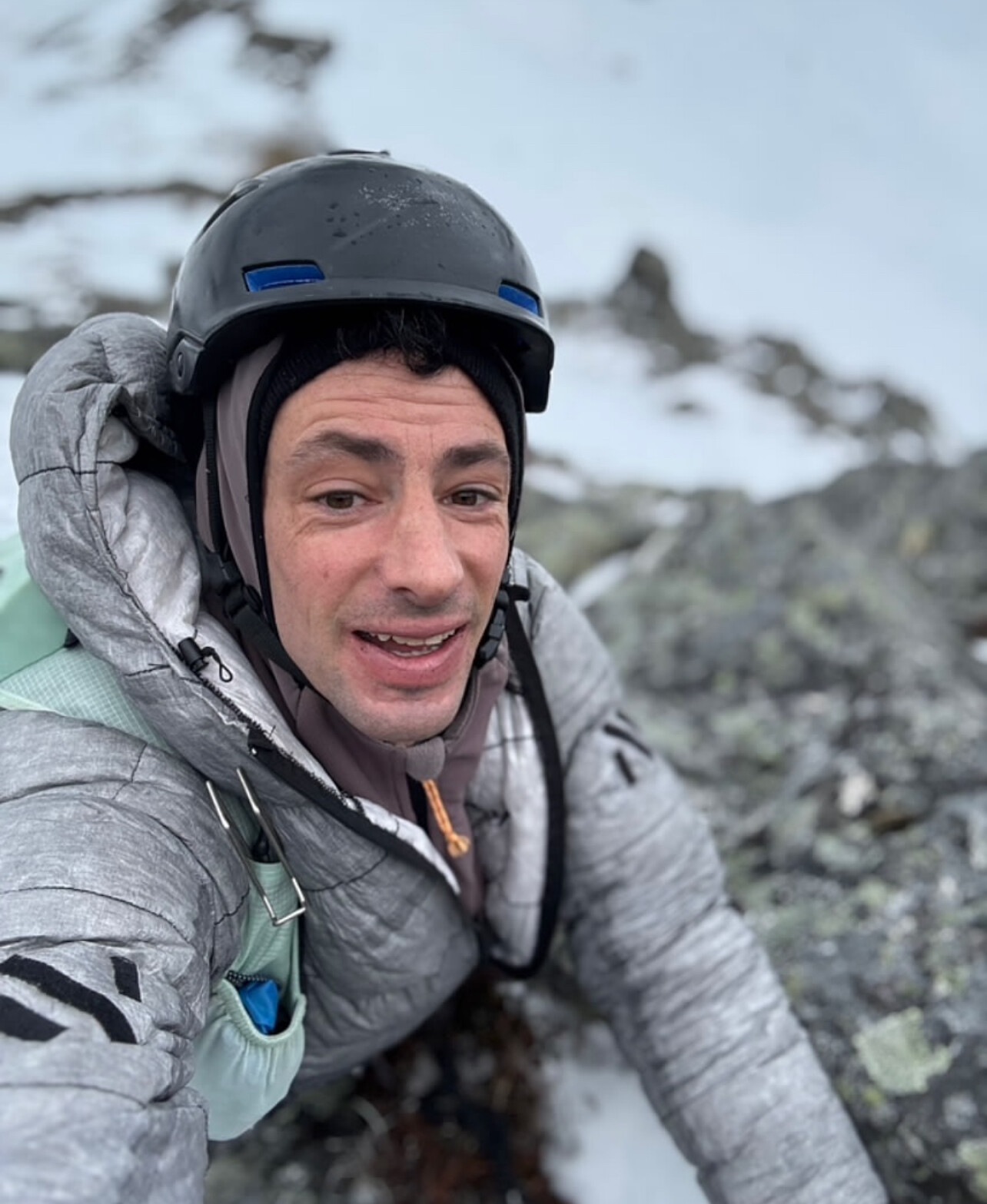
A New Level of Endurance
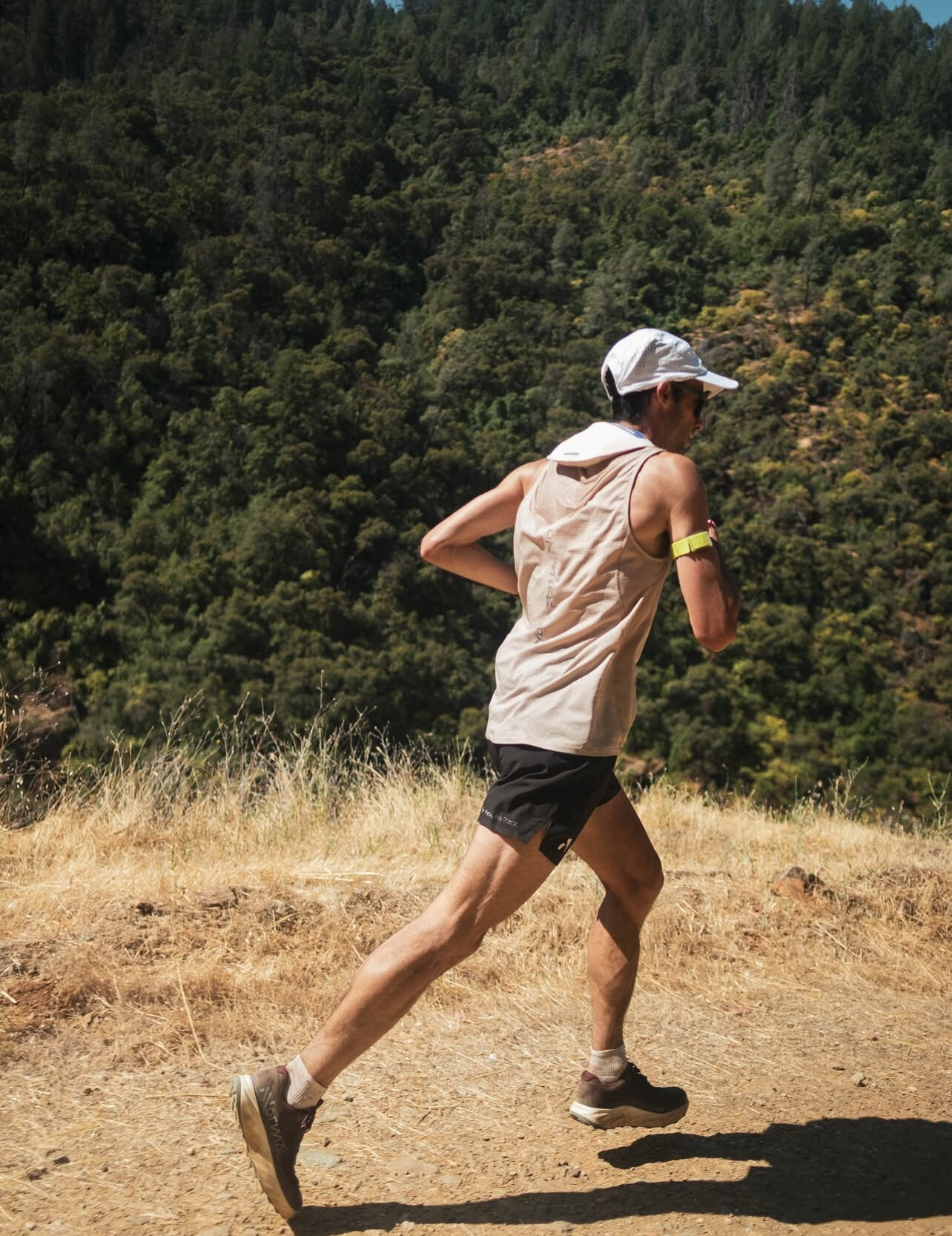
Jornet has long redefined the limits of human performance. From setting speed records on Mont Blanc, Everest, and the Matterhorn, to dominating ultramarathons around the globe, his career has blurred the line between mountaineering, cycling, and distance running.
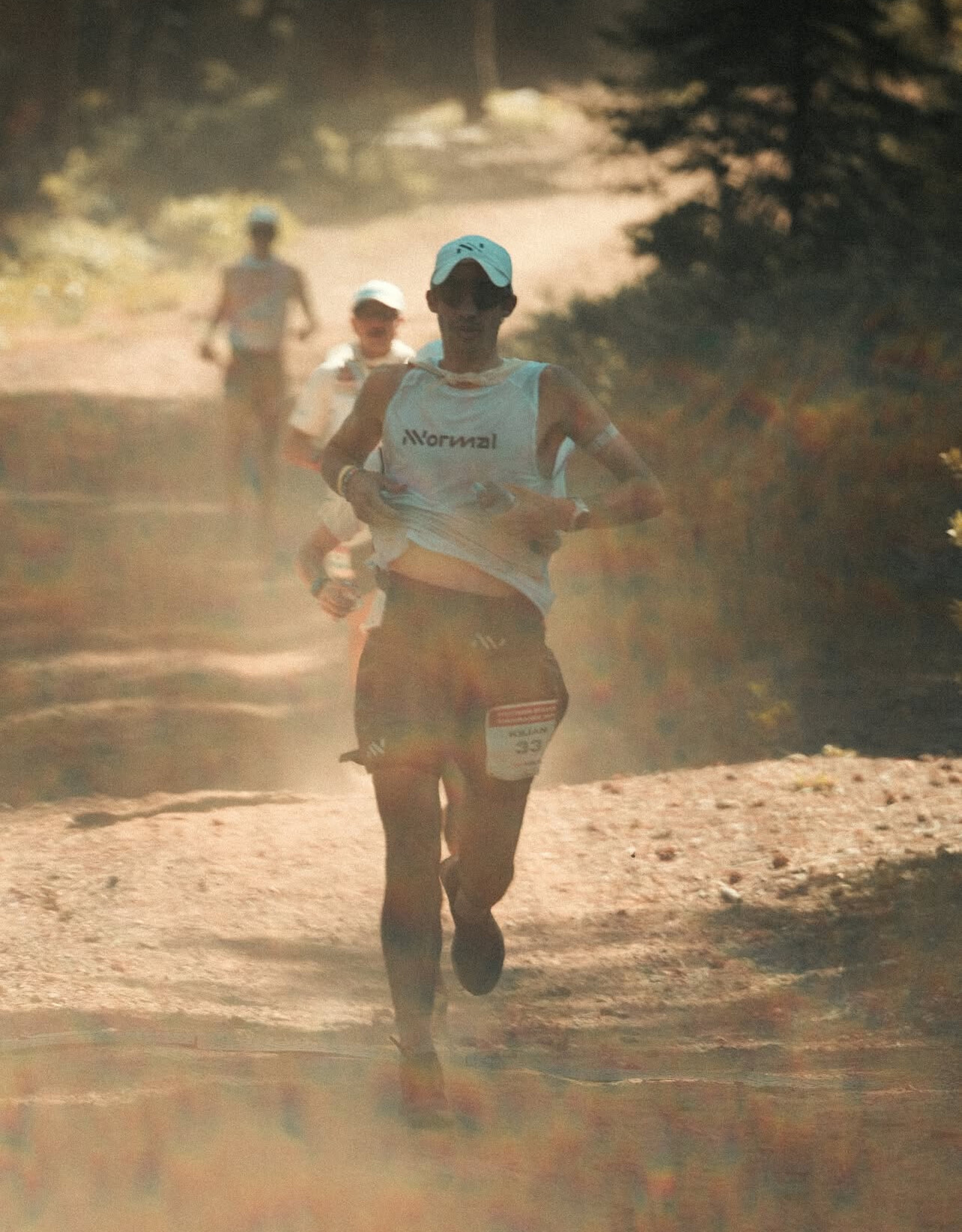
This latest challenge pushes even further—requiring not just peak physical conditioning, but also careful logistics, recovery, and resilience in some of the toughest terrains on earth.
Why This Challenge Matters
The project is more than just an athletic quest. By connecting summits, marathons, and cycling stages into one continuous journey, Jornet is symbolically uniting three of endurance sport’s greatest disciplines. His effort will not only test human possibility but also inspire runners, cyclists, and climbers to think beyond conventional limits.
As Jornet himself has often said, his greatest motivation comes from curiosity—asking what lies beyond the next climb, the next trail, or the next idea of what’s possible.
The Road Ahead
No specific launch date has yet been set, but anticipation across the endurance community is already high. If Jornet succeeds, this could go down as one of the most ambitious endurance projects in modern history—an odyssey across mountains, roads, and trails that only someone like Kilian could attempt.
by Boris Baron
Login to leave a comment
This Isn’t a Story About a Runner — It’s About a Man Who Walked the World
In a world where we celebrate marathons, ultramarathons, and world records, one man has quietly redefined the limits of human endurance—not with speed, but with sheer, relentless determination.
Karl Bushby, a British former paratrooper, has spent the past 27 years walking an unbroken path around the globe. His feat isn’t measured in finish lines or medals, but in every step he’s taken without shortcuts, without flying, and without giving up. This is not a story about a runner—it’s the story of a man who set out to walk the world and never looked back.
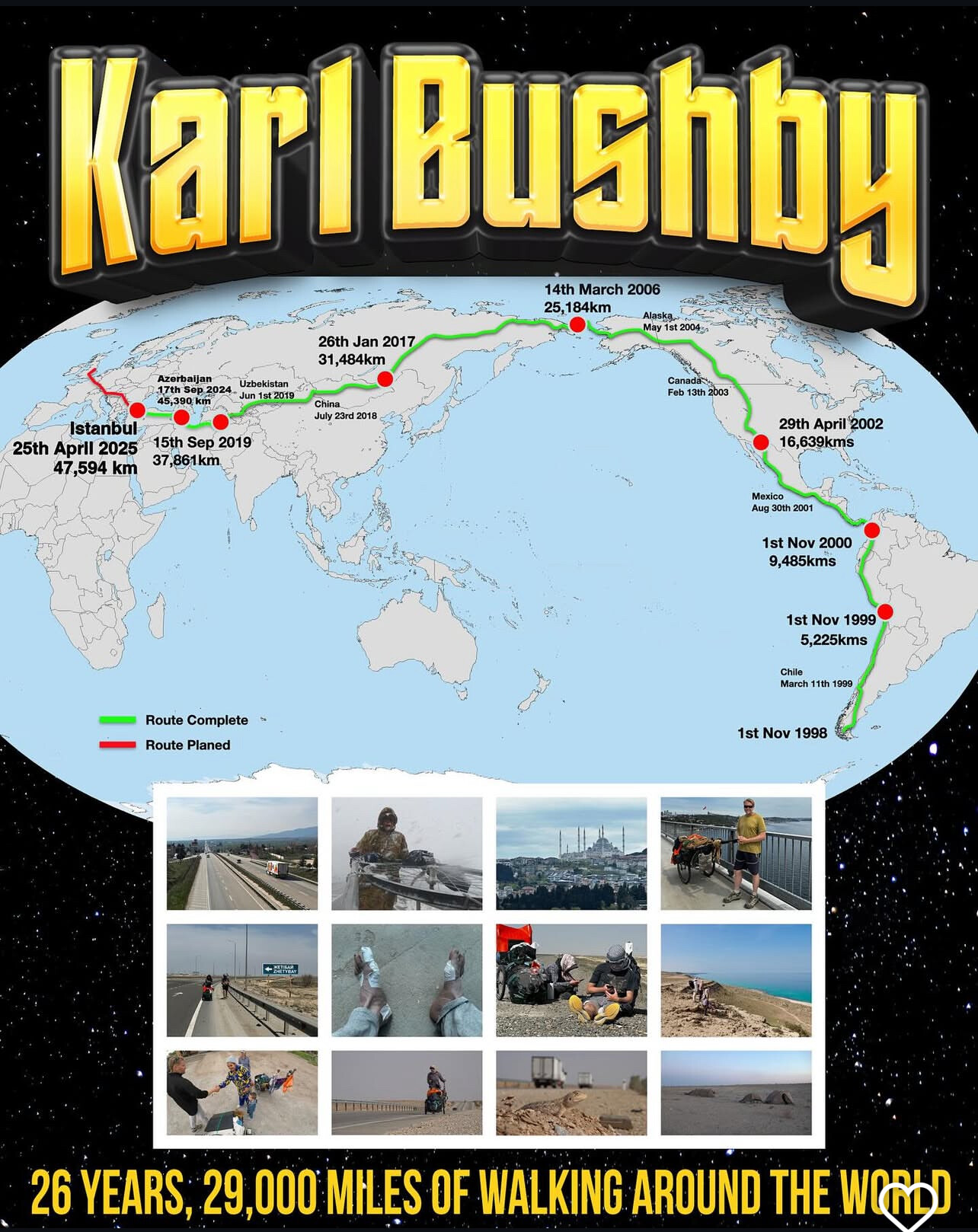
In 1998, Karl left Punta Arenas, Chile, on foot with one goal: return home to Hull, England under his own power. What began as a wild dream has become one of the greatest adventures in human history—the Goliath Expedition.

Today, Bushby has walked over 47,000 kilometers (about 29,200 miles) across 25 countries, enduring landscapes and trials that would stop most in their tracks. He has crossed the deadly Darién Gap, walked the frozen Bering Strait from Russia to Alaska, swum the Caspian Sea, and navigated the crushing bureaucracy of closed borders. He’s been detained, deported, threatened, and tested beyond reason.
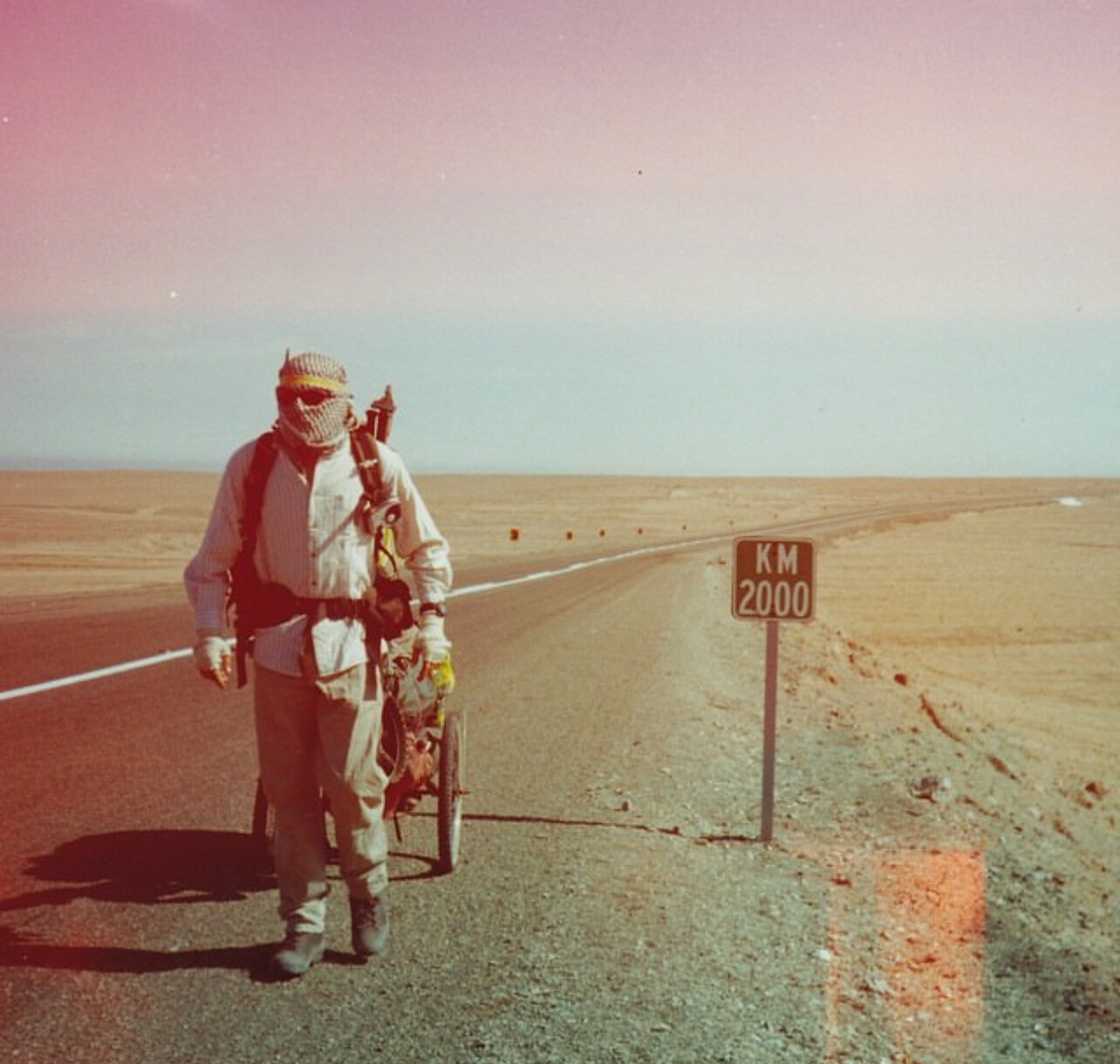
Through every setback—political, physical, or personal—Karl has honored a simple promise: never fly, never quit, never cheat.

As he approaches the final leg of his odyssey with a projected finish in 2026, Karl Bushby stands as a modern icon of perseverance. His footsteps are a tribute to human resilience, curiosity, and the belief that the world is still worth exploring—one step at a time.
by Boris Baron
Login to leave a comment
From 100 Meters to Ultras: KATA Expands Its Reach
The KATA sprinters team is quickly becoming a force to be reckoned with in the Kenyan athletics scene. Operating under the broader KATA (Kenyan Athletics Training Academy) family, this dynamic group of athletes is trained and led by Coach Julius Migwi, whose focus on speed and power has begun to deliver impressive results.
“We started training our sprints team in 2023,” says Coach Migwi. “At KATA, we operate as one family. Our sprint team trains with precision and discipline, and this year we’ve already achieved a lot.”
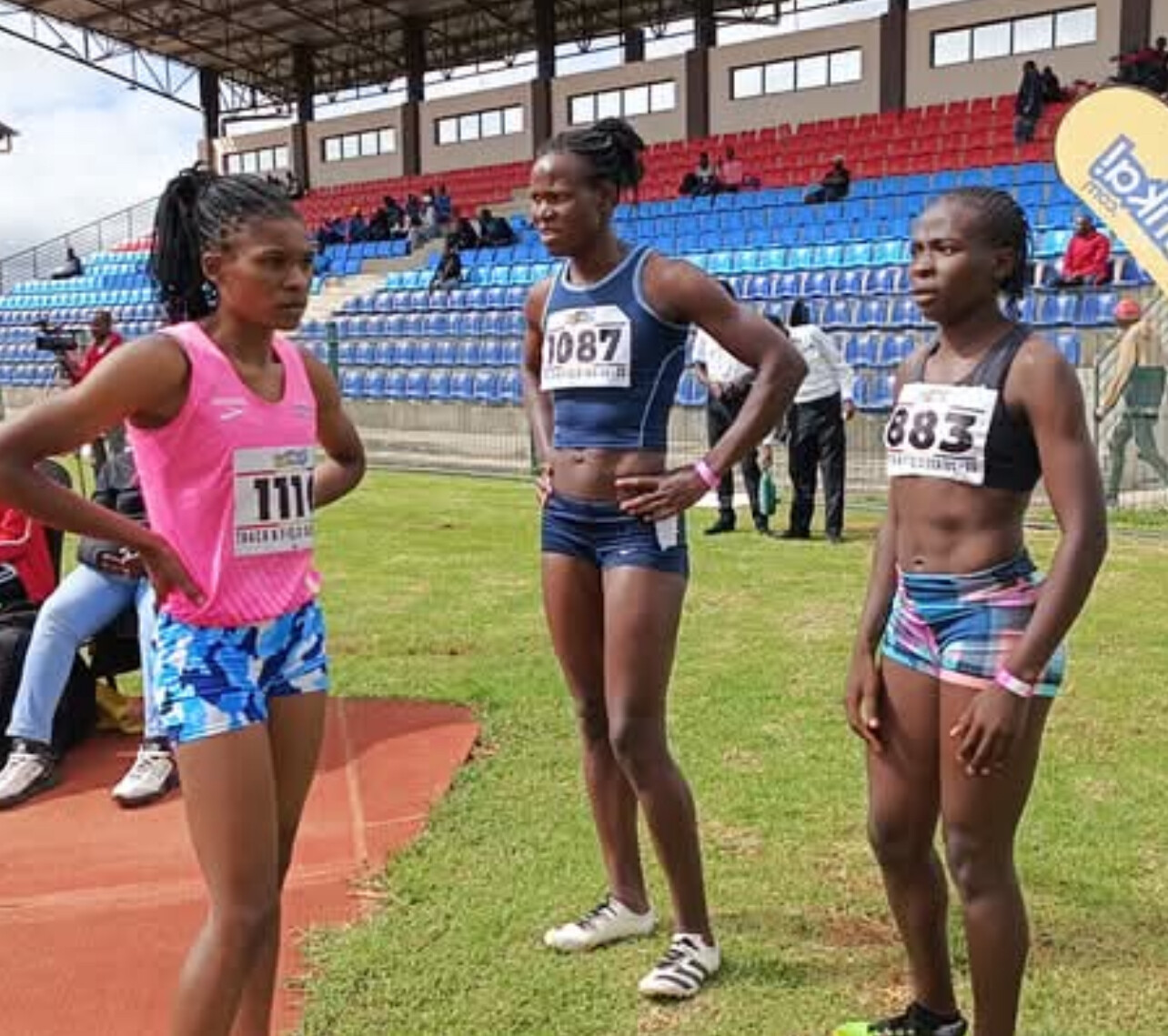
Standout Performances in 2025
Among the team’s top achievements:
• Doreen Waka placed 2nd at the prestigious Betika Grand Finale earlier this season and earned an invitation to compete at the Kip Keino Classic, scheduled for May 31.
• Peris Chege represented Kenya at a relay event in Ethiopia, showcasing her talent on the international stage.
• Gladys Ngure claimed 2nd place in the 100m hurdles, further demonstrating the growing strength of KATA’s women sprinters.
In addition, several emerging sprinters are progressing rapidly, signaling the depth of talent within the academy.
A Vision Beyond Distance Running
“I’m extremely proud of what our KATA sprint team is accomplishing,” says KATA director Bob Anderson. “When I first came up with the idea of launching a KATA training camp back in 2014, I imagined it would be focused solely on distance runners—training the Kenyan way. But after we officially began with distance runners in 2019, I quickly realized there was a need to support athletes across all events, from the 100 meters to ultramarathons. That vision has become a reality. We now have a growing sprint program in Kenya and a second KATA location in Portugal, with more ideas taking shape. KATA is making its mark on the global athletics stage.”
Looking Ahead

Coach Migwi and the team remain focused on the future. One of their current challenges is training on a murram (dirt) track. He hopes to eventually transition to a tartan surface, which would enhance both performance and injury prevention.
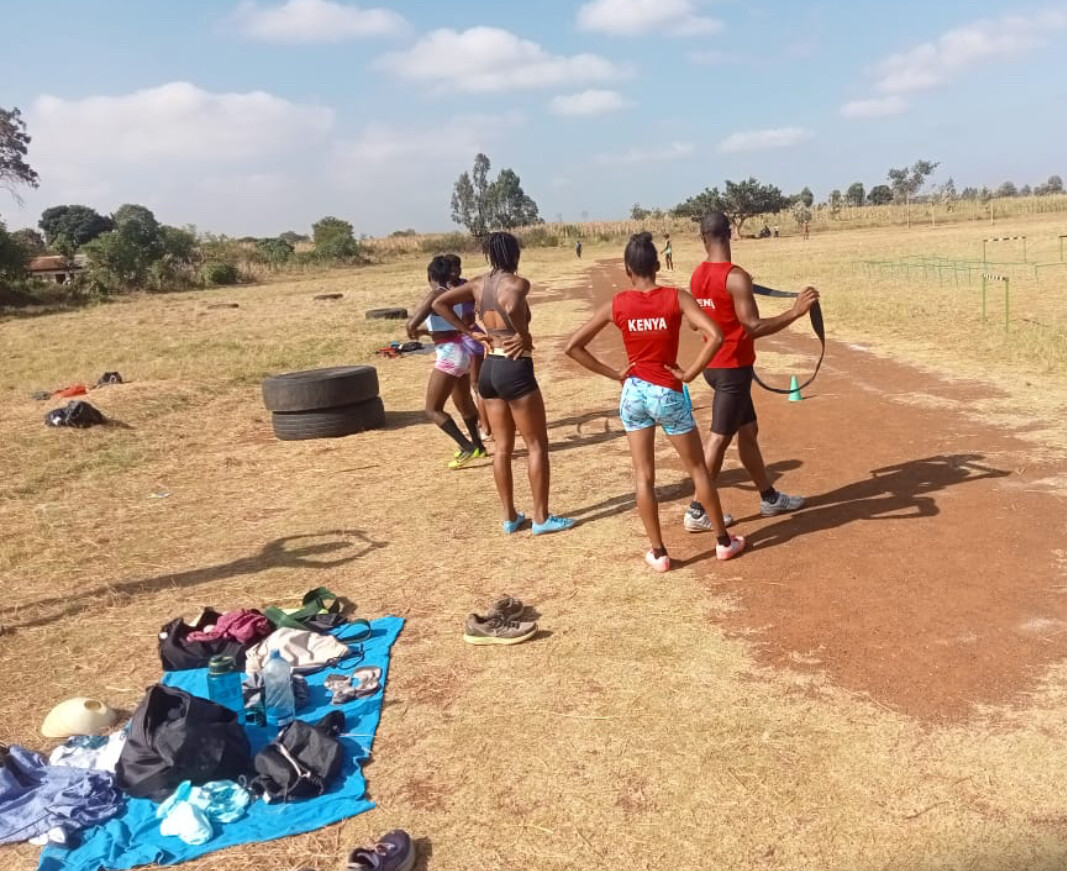
“Our goal is to be record breakers and to produce the best out of the best,” says Julius. “We are committed to building a world-class program.”
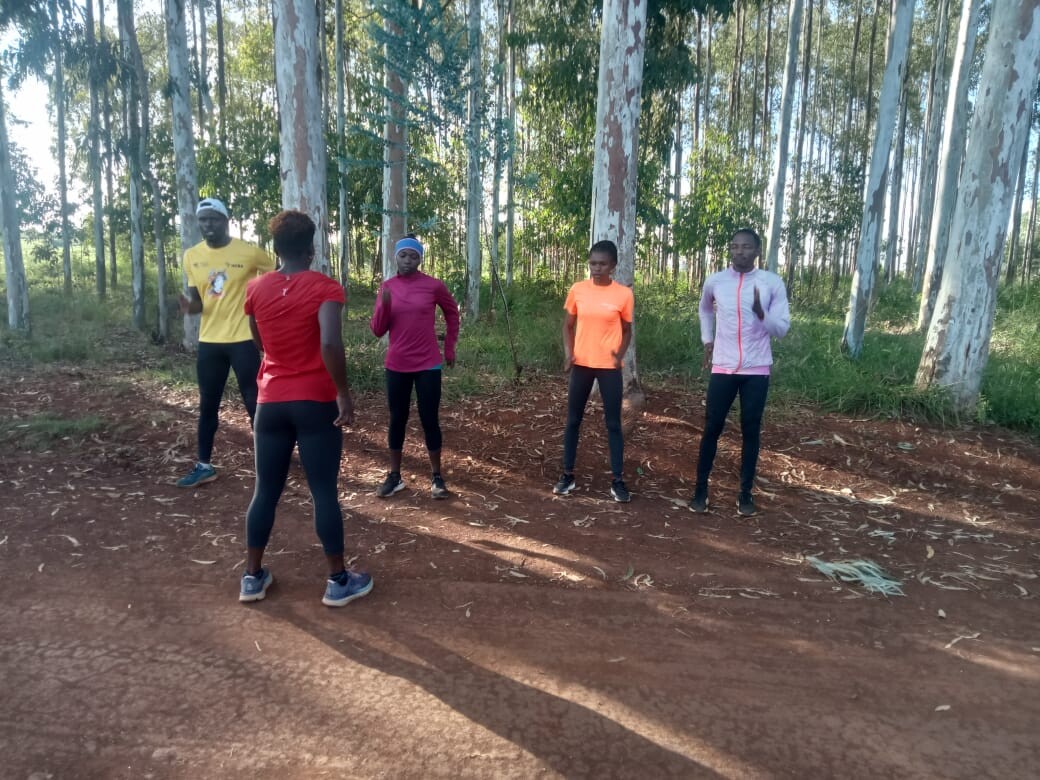
He offers a guiding principle that drives his athletes: “Never give up, press on.”
“Long live the KATA family under Bob Anderson leadership,” he adds. “Together, we are building something special.”
As the sprint team continues to evolve, it stands as a powerful symbol of KATA’s broader mission: to develop world-class athletes across all disciplines—distance, middle distance, and now, sprint events.
by Boris Baron
Login to leave a comment
KATA Time Trial Series
Welcome to the KATA Monthly Time Trial Held at the Kenyan Athletics Training Academy in Thika, Kenya, the KATA Monthly Time Trial is a unique and inclusive event designed to support runners of all levels in achieving their goals and showcasing their fitness. This event offers both 10K and 5K distances on an accurate, certified course, providing participants with...
more...Comrades Marathon Returns in 2025 for Another Unforgettable Chapter in South Africa
The world’s most iconic ultramarathon is set to captivate once again. On Sunday, June 8, thousands of runners will gather in South Africa for the 96th edition of the Comrades Marathon, a race that continues to define endurance, resilience, and tradition.
Held between the cities of Pietermaritzburg and Durban, this year’s event is a “down run,” covering approximately 87.7 kilometers (54.5 miles) with a net descent toward the finish at Kingsmead Stadium. But don’t be fooled—this course remains one of the most challenging tests in distance running, with punishing hills and unpredictable weather adding to the drama.
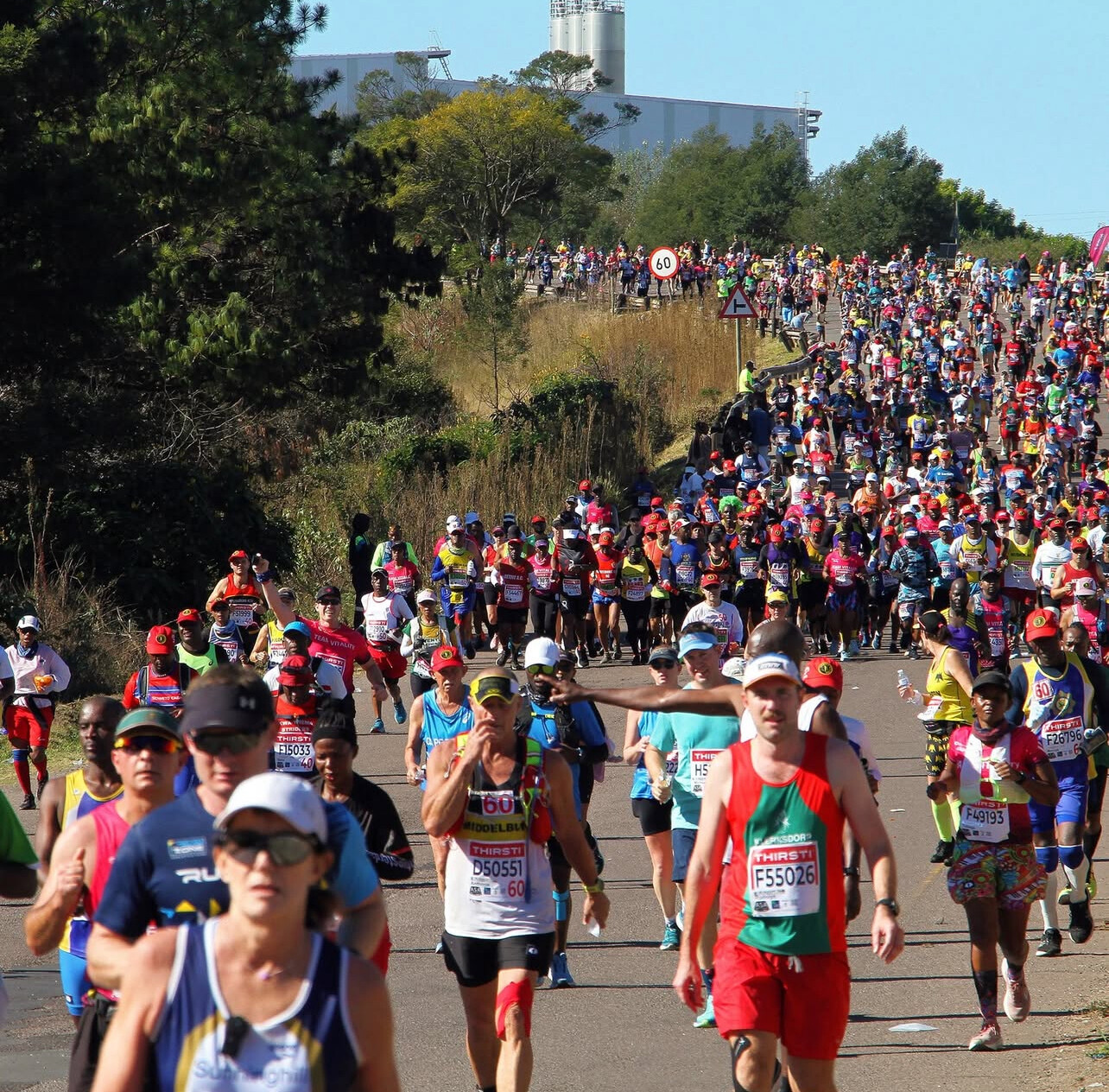
The Comrades Marathon is far more than a race. It’s a cultural phenomenon that draws over 20,000 runners from around the globe and inspires millions more who line the course or tune in from afar. From elite athletes chasing gold to first-timers fighting for a 12-hour finish, every participant adds a chapter to this legendary story.
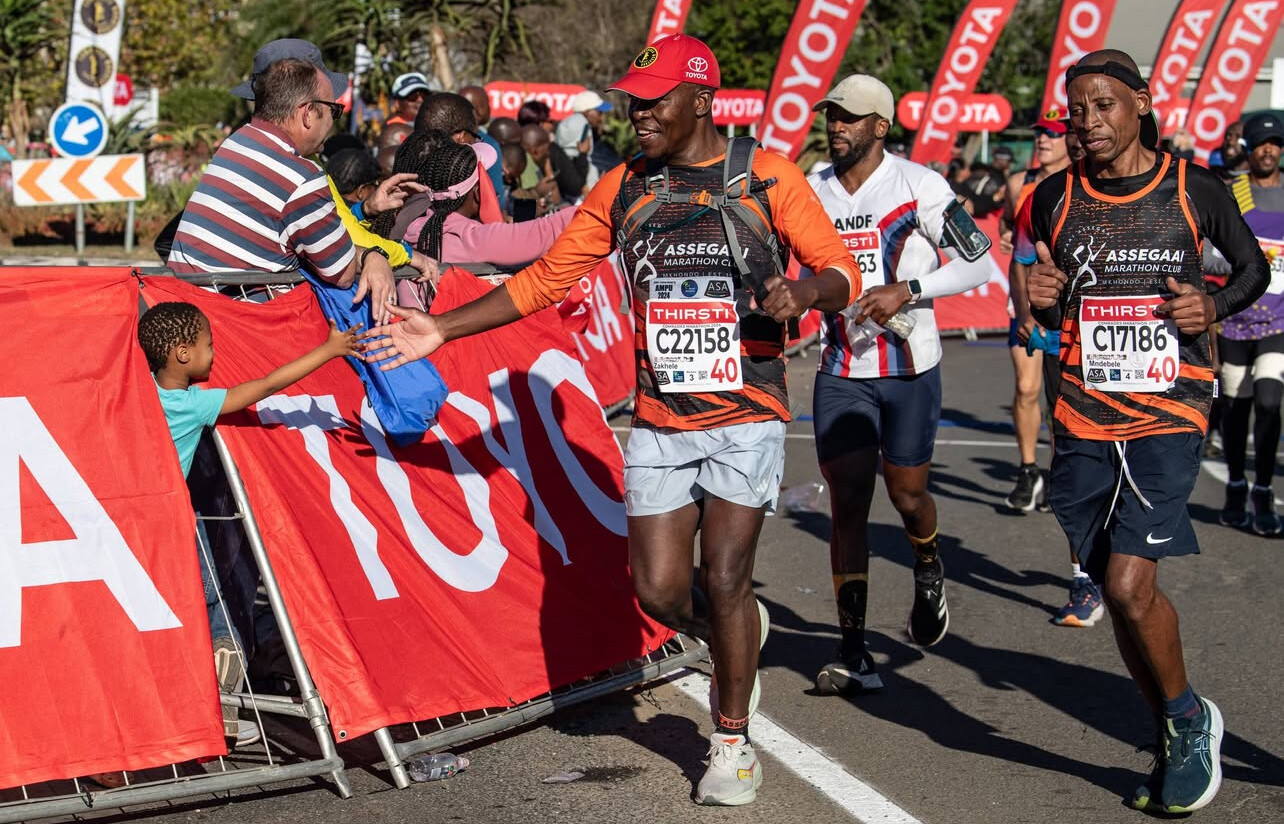
To complete the 2025 Comrades Marathon within the strict 12-hour cutoff, runners must maintain an average pace of approximately 13 minutes and 19 seconds per mile, or 8 minutes and 17 seconds per kilometer, across the 87-kilometer (54.06-mile) course. While this may seem manageable to experienced marathoners, the Comrades route—with its relentless hills, varying terrain, and heat—makes even this pace a serious challenge. Consistent pacing, smart energy management, and mental toughness are crucial to reaching Kingsmead Stadium before the final gun signals the end of the race.
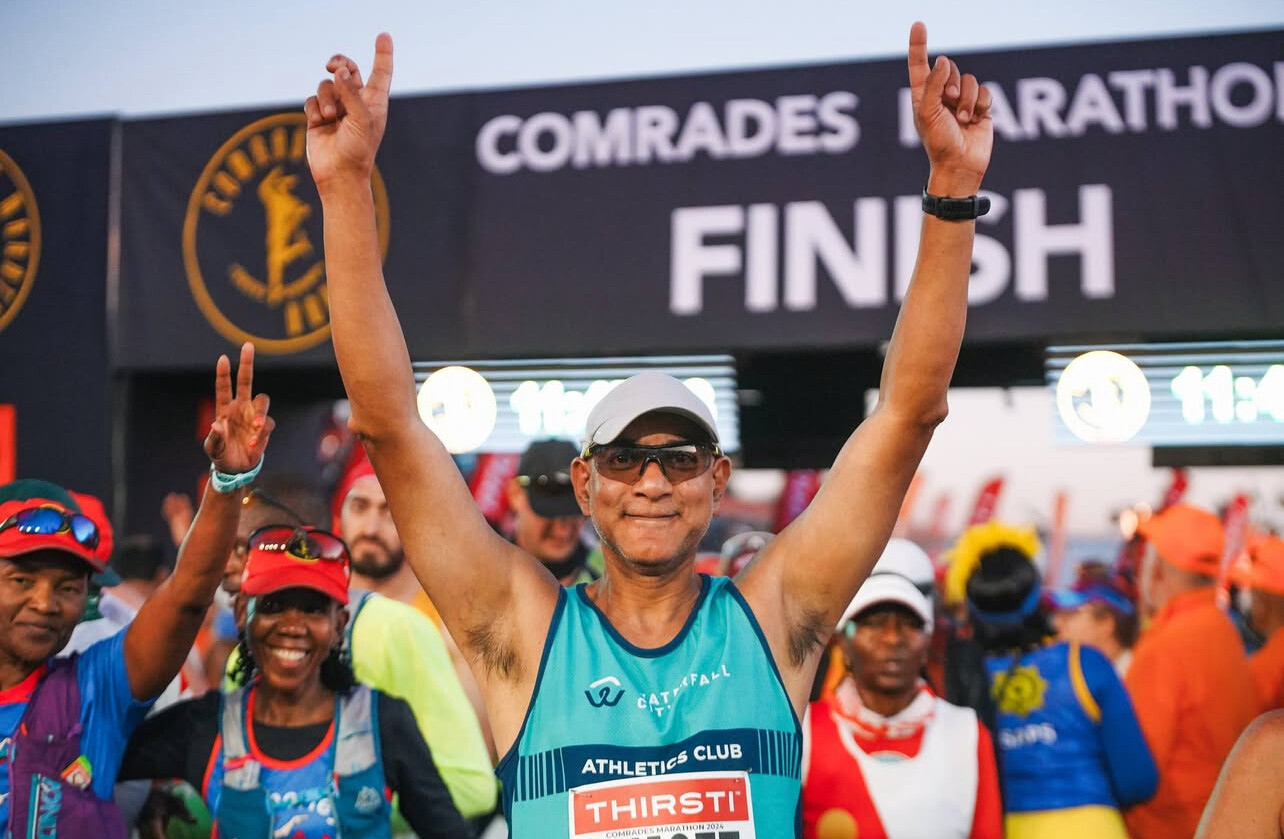
South Africa’s own Gerda Steyn, who smashed the women’s down run record in 2023 with a time of 5:44:54, is expected to return as a favorite. On the men’s side, all eyes are on Tete Dijana, the two-time champion looking to bounce back after a tough showing in 2024. International contenders will also line up, eager to challenge the homegrown champions on their turf.
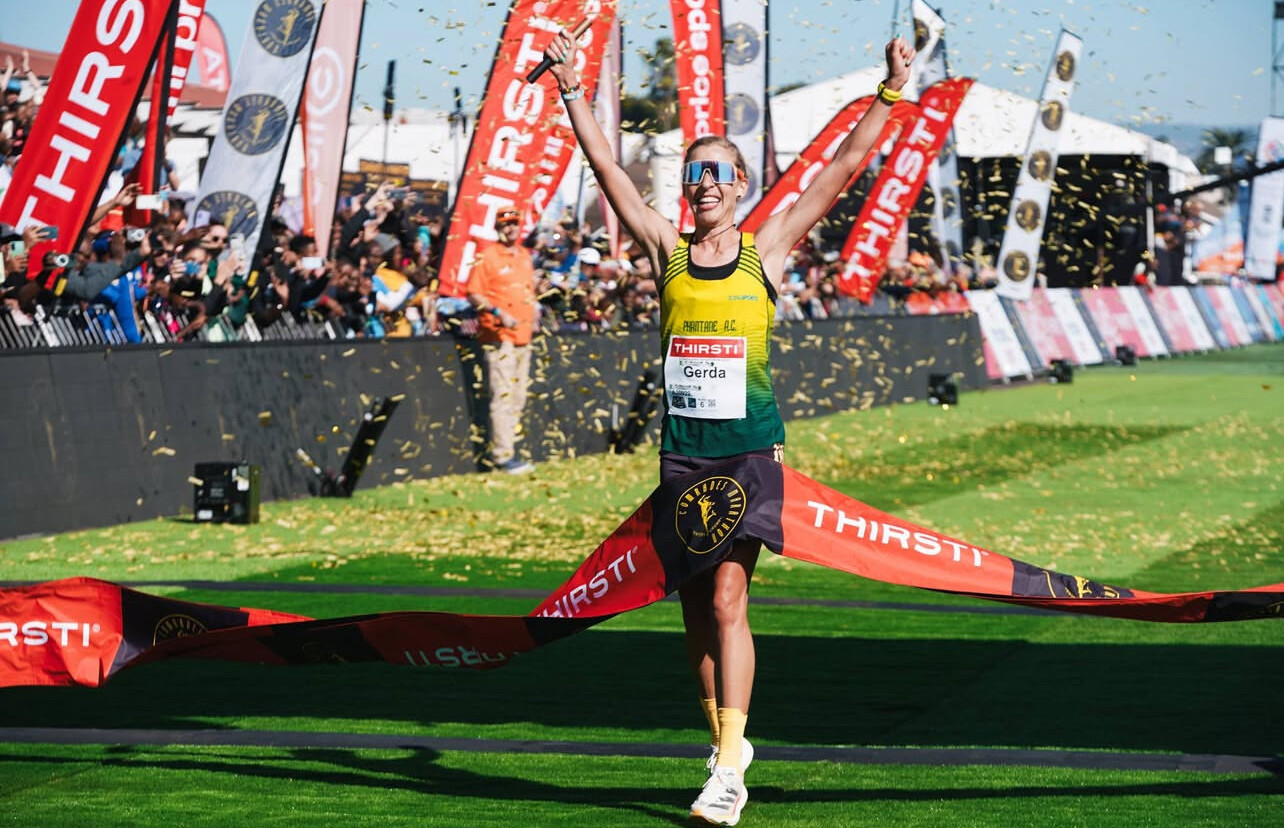
The Comrades is known for its strict 12-hour cutoff, and it’s often the final moments—when exhausted runners sprint or crawl to beat the clock—that leave the most lasting impressions. Medals are earned not just through speed, but through heart.

The course, supported by cheering crowds and rich traditions, includes notable landmarks like Polly Shortts Hill, Inchanga, and the halfway mark at Drummond. Local spectators offer music, support, and refreshments, creating an atmosphere like no other in distance running.
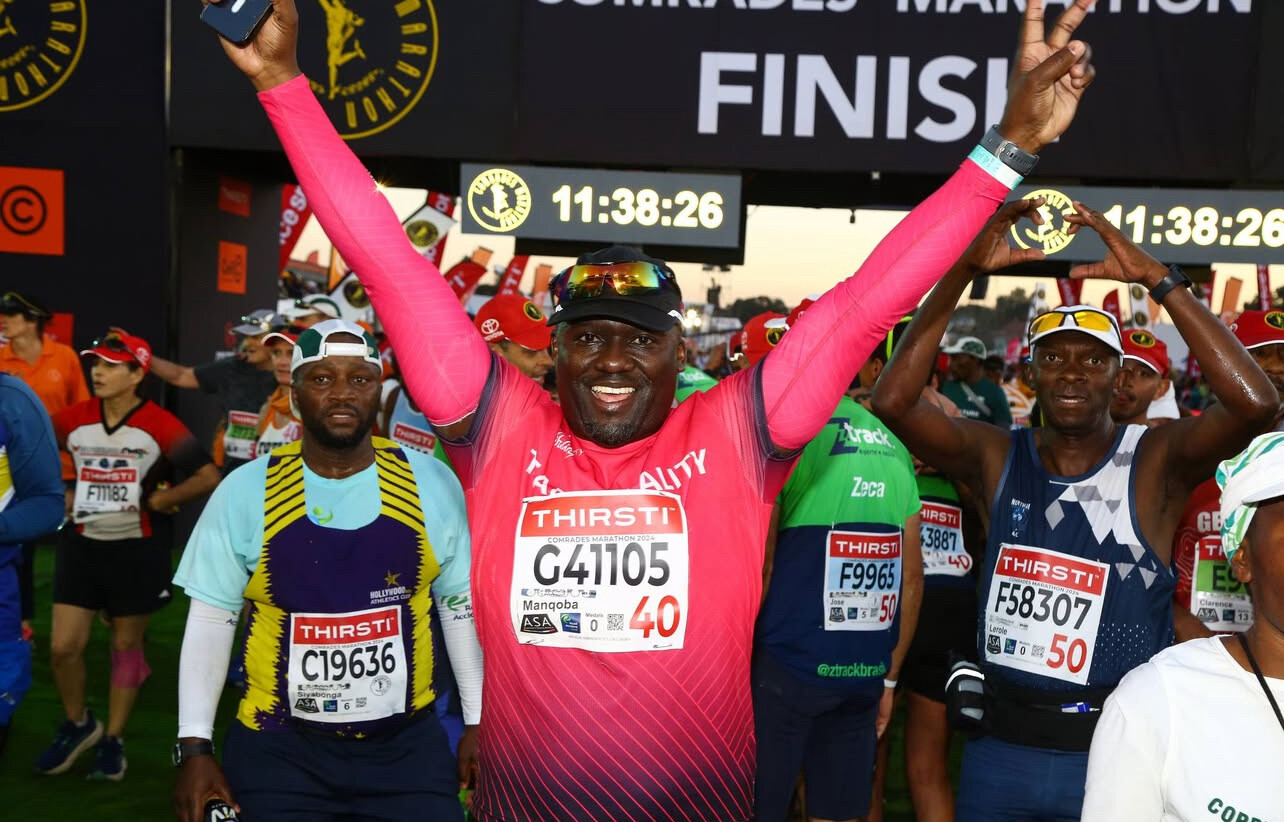
Whether you’re chasing a personal best, a gold medal, or simply the finish line, the 2025 Comrades Marathon promises to be another unforgettable day in the global running calendar.
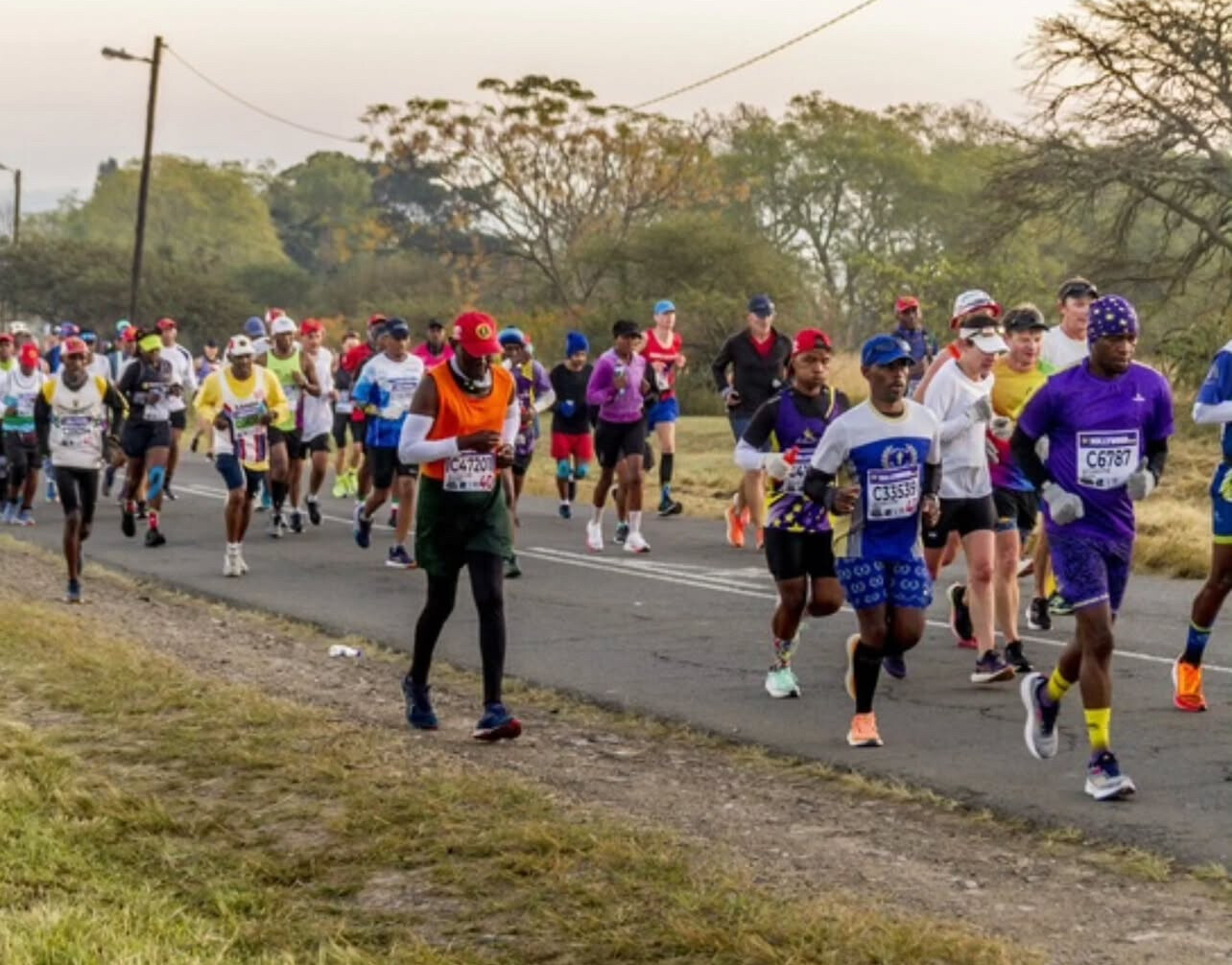
by Boris Baron
Login to leave a comment
Comrades Marathon
Arguably the greatest ultra marathon in the world where athletes come from all over the world to combine muscle and mental strength to conquer the approx 90kilometers between the cities of Pietermaritzburg and Durban, the event owes its beginnings to the vision of one man, World War I veteran Vic Clapham. A soldier, a dreamer, who had campaigned in East...
more...Angela Tortorice’s 1,000 Marathons and a Guinness Record — But Do the Numbers Add Up?
Angela Tortorice, a Dallas-based runner and full-time accountant, has received widespread praise on social media and in the running community for her astonishing endurance achievements. According to Guinness World Records, she holds the title for the most race marathons run in a single year by a woman: an incredible 129 marathons completed between September 1, 2012, and August 31, 2013. Nearly a decade later, she was celebrated again for completing her 1,000th marathon at the Irving Marathon in Texas on April 2, 2022, reportedly making her the first American woman to reach that milestone.
These accomplishments are inspiring — but they also raise serious questions.
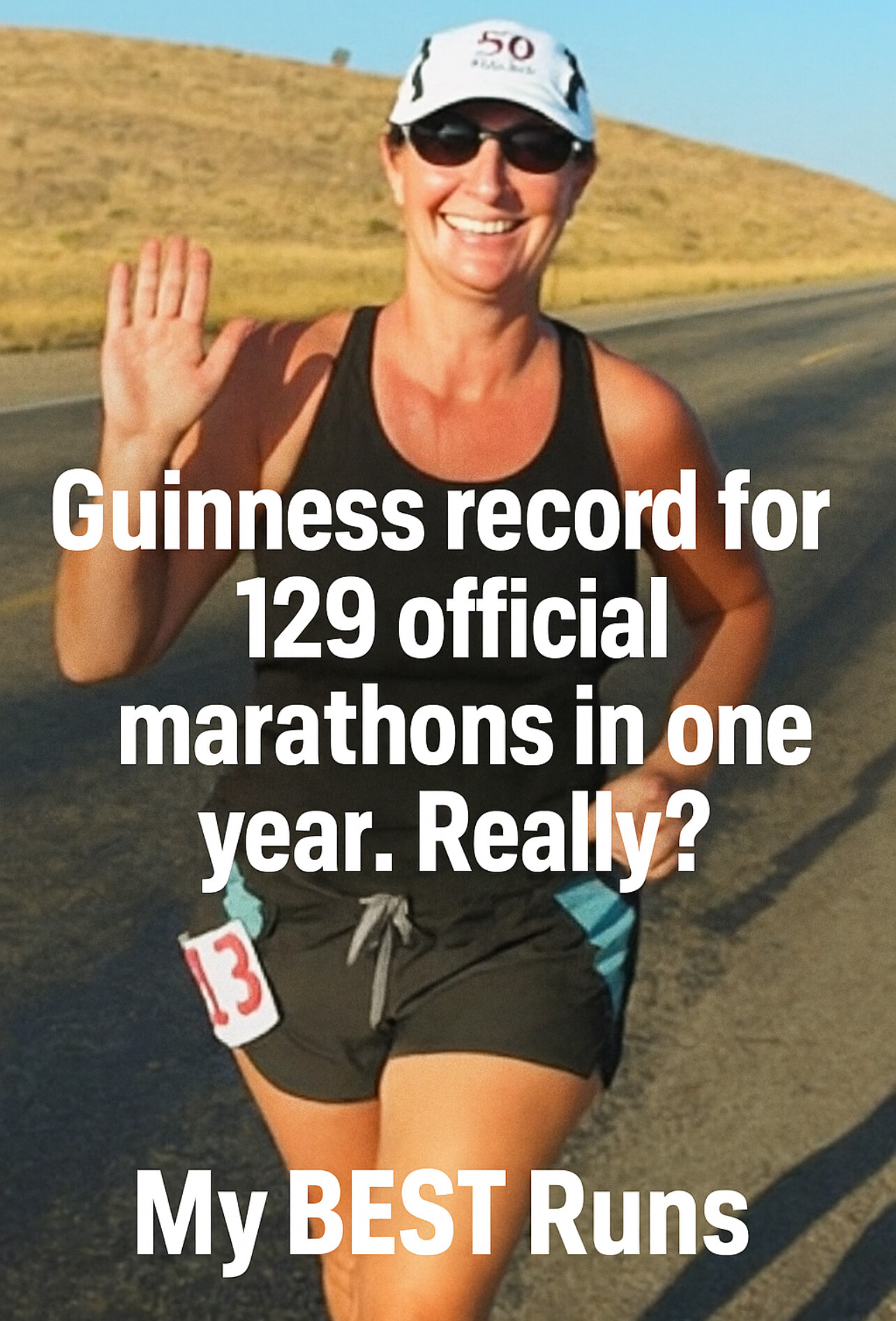
The Math Behind the Record

Completing 129 marathons in 365 days averages to one marathon every 2.8 days. Since most official marathons take place on Saturday or Sunday mornings, a runner could theoretically participate in two marathons per weekend — totaling 104 races per year if no weekends were lookmissed. To reach 129 official marathons, one would need to find an additional 25 races held on weekdays, which is highly unlikely, especially in the U.S. where weekday marathons are rare.
Moreover, Angela reportedly maintained a full-time accounting job throughout this year, making the travel, recovery, and logistics of such a schedule even more challenging.
So how was this record verified?
Guinness Confirmation Process
According to Guinness World Records, all record attempts must be supported with documentation, including:
• Official race results
• Event certifications
• Witness statements
• Media coverage
While Guinness confirmed Tortorice’s record, the details of how each marathon was documented and what criteria defined a “race marathon” have not been made public. Many in the running community are left to wonder: Were all 129 races USATF- or IAAF-certified events? Or did some involve multi-loop courses, self-organized races, or training runs that happened to reach 26.2 miles?
If the latter, should they count toward an “official” marathon record?
The 1,000 Marathon Milestone
Tortorice ran her first marathon in November 1997 at the San Antonio Marathon. Reaching 1,000 marathons by April 2022 spans approximately 24.4 years. To accomplish this, she would have had to average more than 41 marathons per year for nearly two and a half decades — while working full time and recovering from each race.

Even with her 129-marathon year included, the pace remains difficult to reconcile with the typical calendar of official events. A search on marathonview.net, a site that tracks certified marathon results, lists only 313 races under her name — far short of 1,000. That gap again raises concerns about how these totals are being calculated and what types of events are being counted.
Ultrarunning Records Raise More Questions
Further complicating the narrative is data from UltraRunning Magazine, which tracks ultramarathon performances across the U.S. According to their published records, Tortorice competed in:
• 6 ultramarathons in 2012, totaling 182 miles
• 5 ultramarathons in 2013, totaling 152 miles
These included timed events like Run Like the Wind (26.7 miles in 6 hours) and longer efforts such as the Sunmart Texas Trails 50K and the Nashville Ultra. Running multiple ultramarathons during the same period she allegedly completed 129 marathons suggests an even greater load on the body — further straining plausibility.
To perform at this level, she would have needed to recover within 24–48 hours, every single week, for a full year, without serious injury. That level of resilience is virtually unheard of in the sport.
A Matter of Integrity
This story began as a celebration of one woman’s determination and consistency. Angela Tortorice clearly has passion and commitment to the sport, and there’s no question she’s run more marathons than most runners will ever attempt.

But when numbers like “129 official marathons in one year” or “1,000 official marathons in a career” are published and shared without full transparency, it matters. The integrity of marathon records — and the accomplishments of every runner who pushes through 26.2 miles — depends on clear, consistent standards.
If some of these marathons were self-supported runs or informal events, they are still worthy efforts — but should be categorized appropriately.
800 Marathons by 2019 — Then 200 More in 30 Months?
Another milestone adds complexity to the story. On October 5, 2019, Angela Tortorice celebrated her 800th marathon, as shown in a Facebook post and commemorative photo holding a cake at the finish line. That celebration is just 2 years and 6 months before her 1,000th marathon, reportedly completed at the Irving Marathon on April 2, 2022.
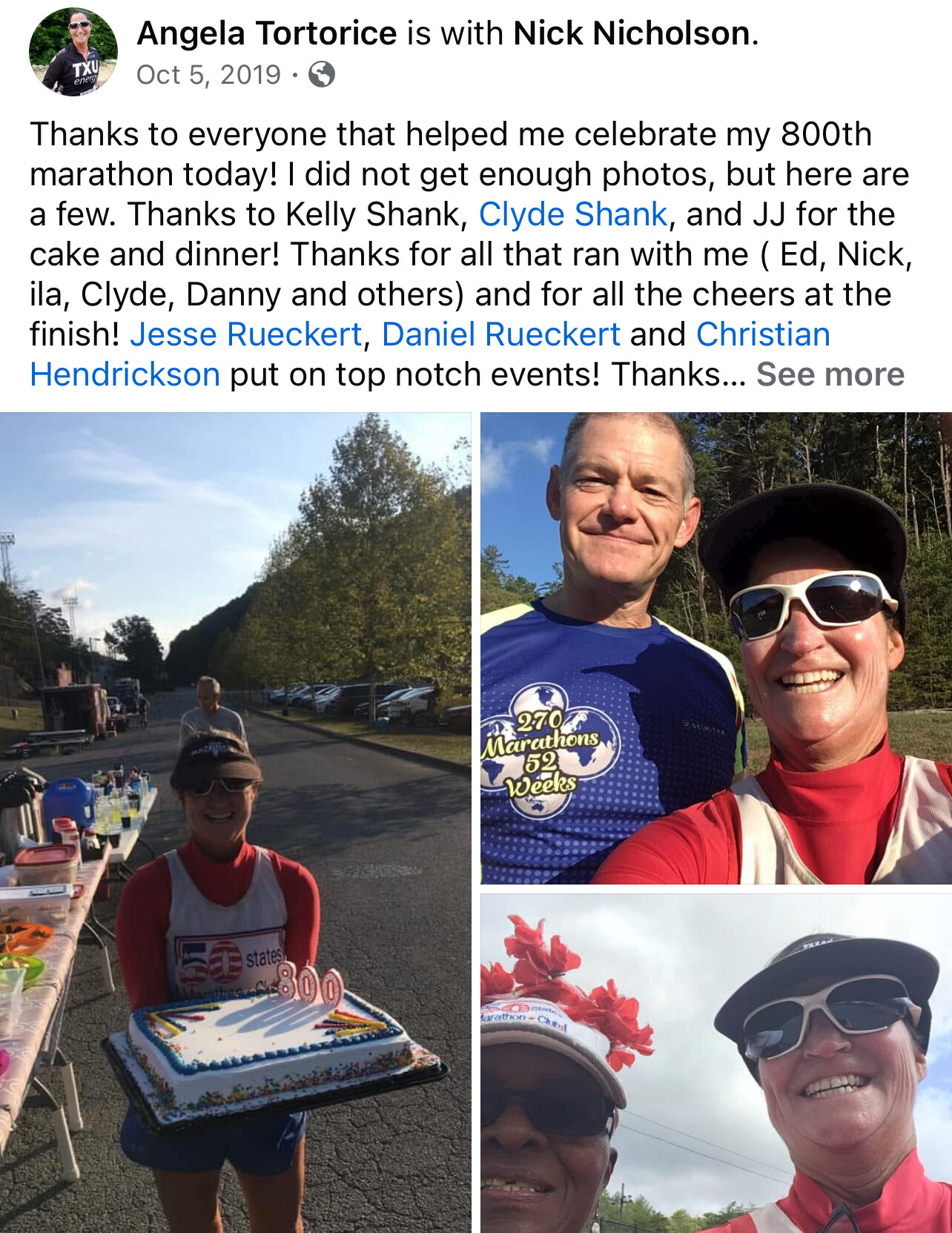
That means she would have completed 200 marathons in just 30 months, averaging over 6.5 marathons per month, or about 1.5 per week, every single week — during the height of the pandemic era when many events were canceled or limited.
Even more striking, race result records from this period show that she was also participating in ultramarathons, including at least one 24-hour race, according to UltraRunning Magazine. These events demand far more recovery than standard marathons. Yet her pace of marathons never seems to slow down.
The Core Question Remains
Angela Tortorice has no doubt logged thousands of miles and displayed a deep love for running. But the record of 129 marathons in a single year, verified by Guinness, was widely interpreted as representing 129 official, certified marathons — the kind that appear in race databases, are publicly timed, and meet governing body standards.
The mounting evidence — including her ultrarunning participation, the 800-to-1000 marathon timeline, and her full-time employment — raises a fundamental question: Were all of these “marathons” part of certified, organized events, or were many informal, self-organized, or private runs?
For a record with such significance, the running world deserves clarity. Not to diminish the accomplishment — but to ensure accuracy and integrity in what we celebrate.
Angela Tortorice has no doubt achieved extraordinary things. But the marathon world deserves clarity: What exactly counts as a marathon in these records? If the claim is that all 1,000 were “official race marathons,” then we must ask — where’s the list?
Until those questions are answered, the celebration must also come with scrutiny. The running community deserves both inspiration and truth.
by Bob Anderson and Boris Baron
Login to leave a comment
Arizona’s Monster — Why the Cocodona 250 Is One of the Toughest Races on Earth
The Cocodona 250 isn’t just a race—it’s an odyssey through Arizona’s most rugged and awe-inspiring landscapes. Spanning 256.5 miles from Black Canyon City to Flagstaff, this ultramarathon demands everything a runner has—physically, mentally, and emotionally.
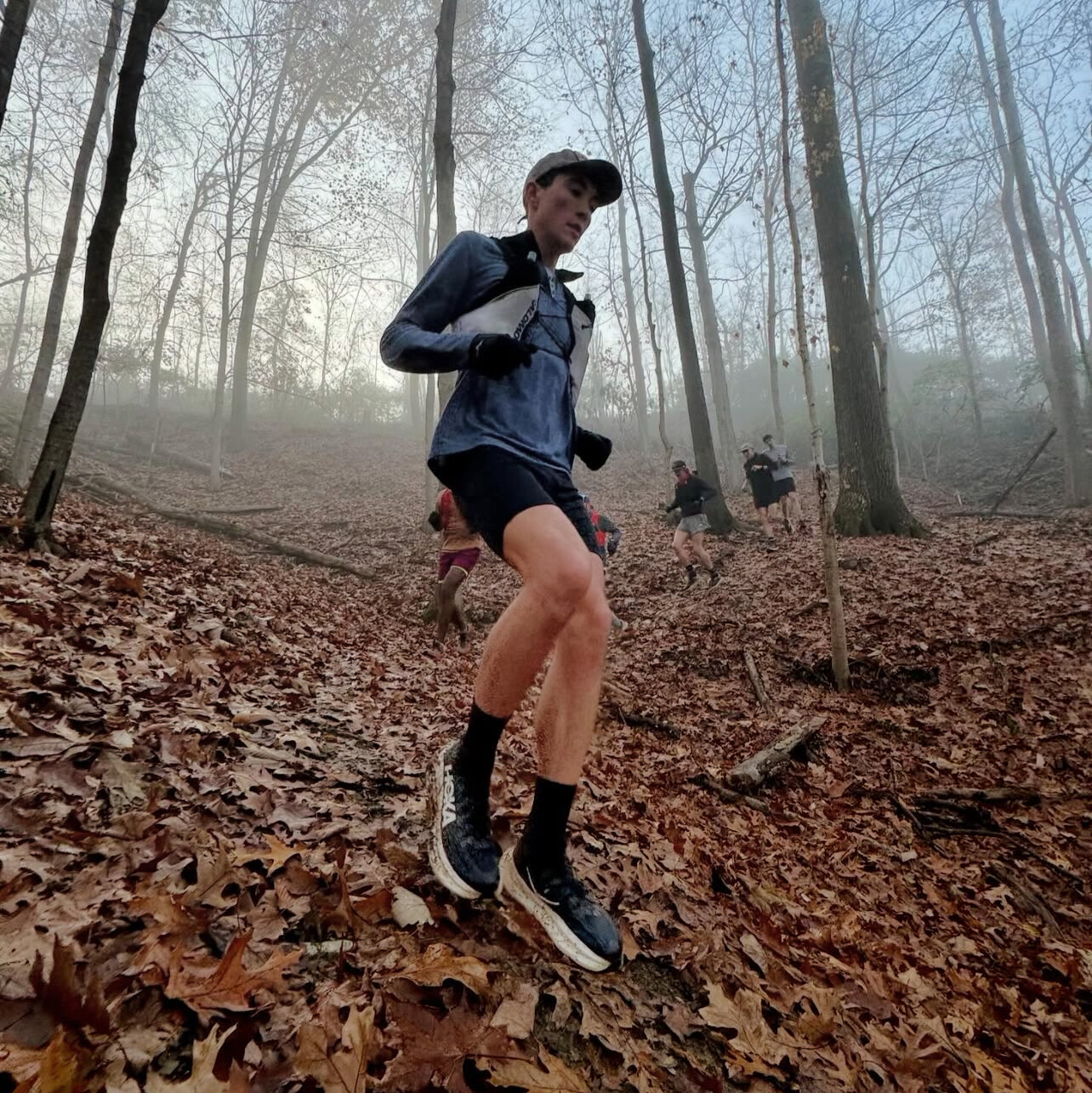
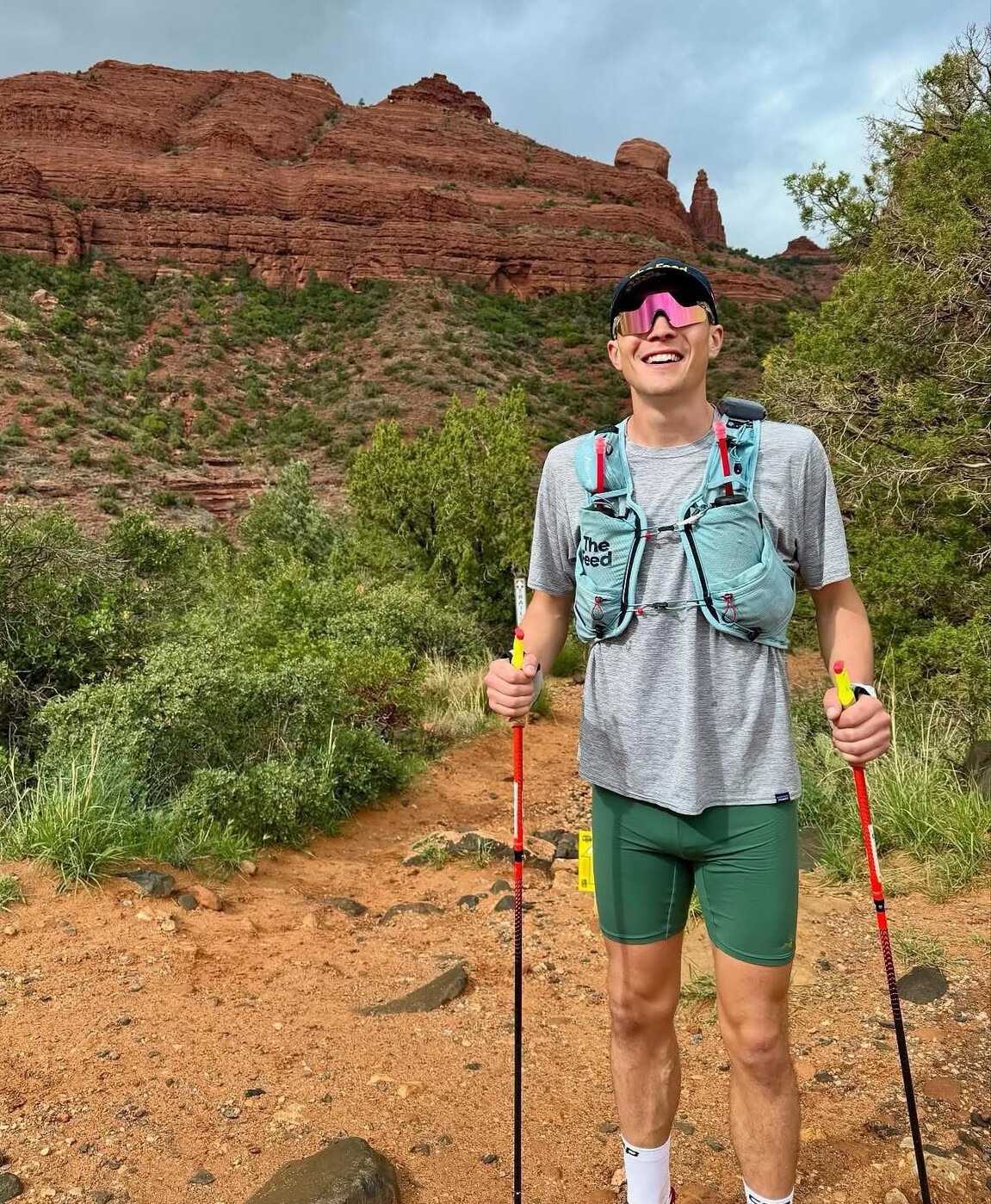
With over 40,000 feet of elevation gain, participants climb mountain passes, descend desert valleys, and navigate technical trails through towns rich in mining and frontier history—Crown King, Prescott, Jerome, Clarkdale, and Sedona—before reaching the final climb to Mount Elden and the finish in Flagstaff.
The terrain breakdown reflects the challenge:
• 45% single-track trails
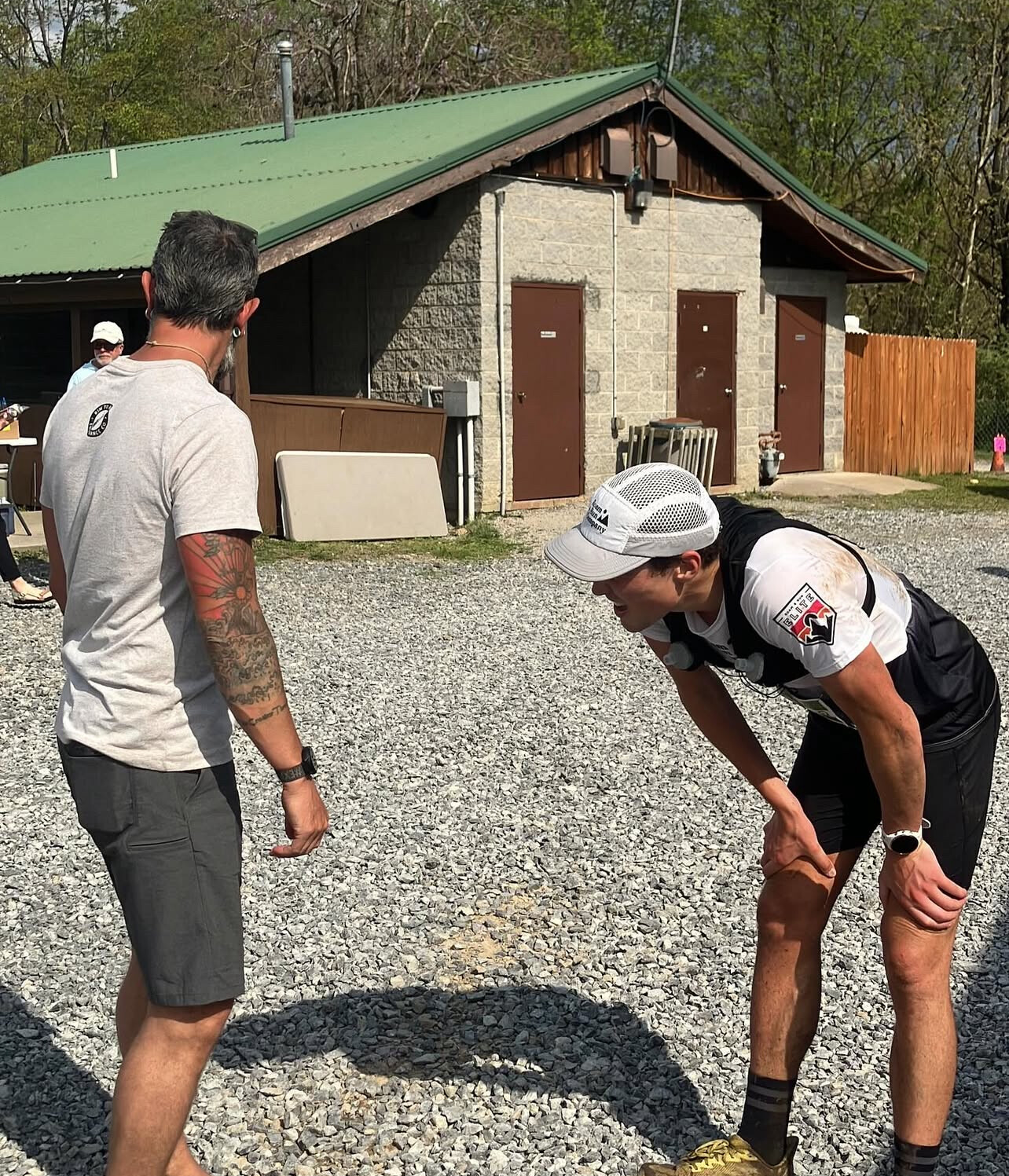
• 46% jeep and double-track roads
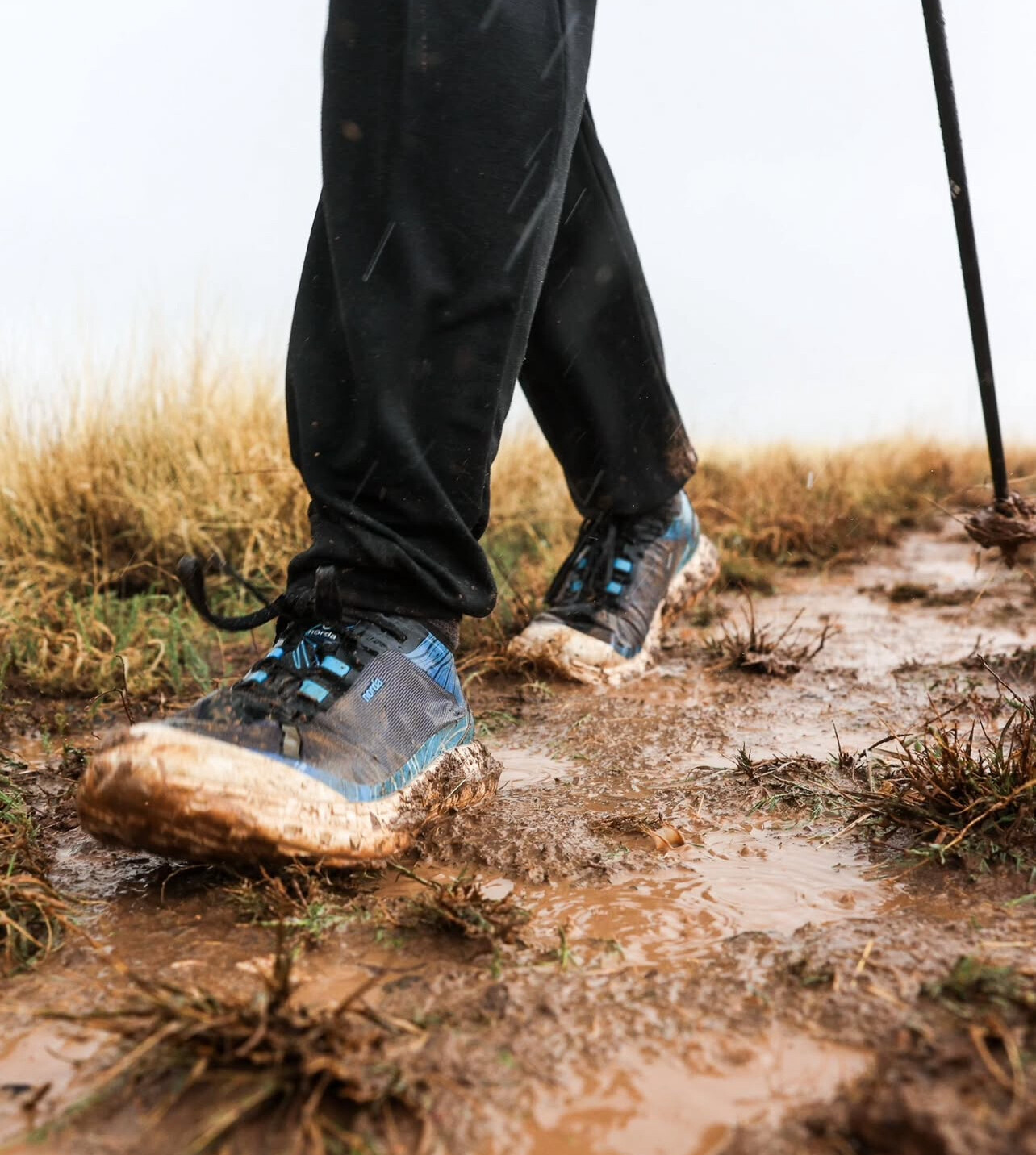
• 9% pavement
Runners face a 125-hour cutoff to complete the course, pushing through heat, altitude shifts, and sleep deprivation. With elevations ranging from 1,996 feet to over 9,200 feet, it’s a test of true ultrarunning grit.
For those who dare to take it on, Cocodona is more than a race—it’s a journey across time, terrain, and personal limits.
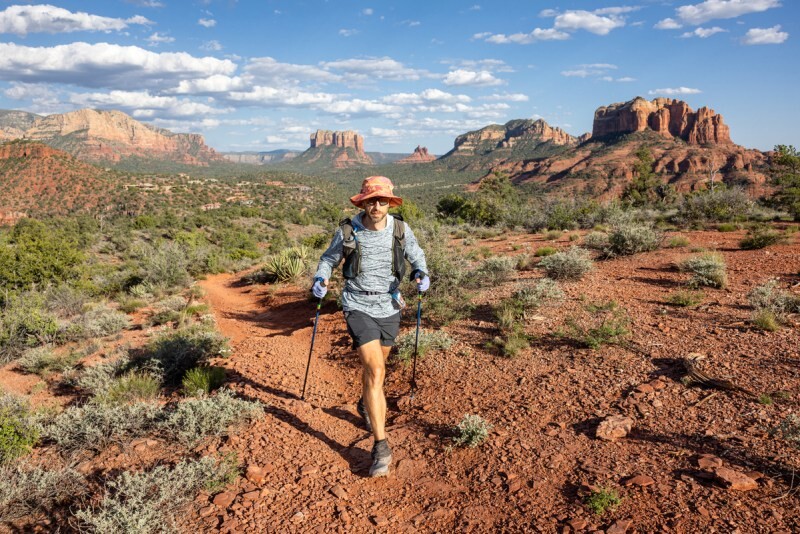
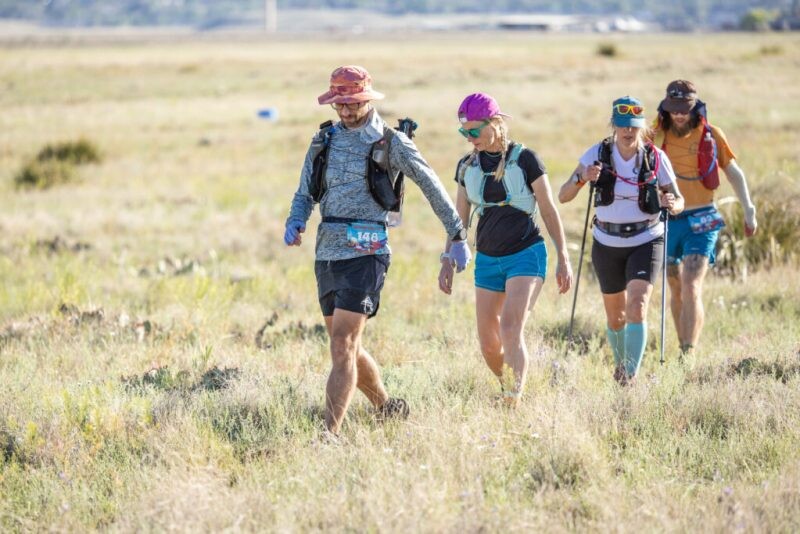
by Pros Baron
Login to leave a comment
Dan Green Wins Cocodona 250 in Record Time Averaging 13:45 per mile
Dan Green, a seasoned endurance athlete from Huntington West Virginia, took on the grueling Cocodona 250ultramarathon across Arizona this week—and not only finished the race, he won it in spectacular fashion.
Green completed the 256.5-mile course in 58 hours, 47 minutes, and 18 seconds, setting a new course record and surpassing the previous best by over an hour. That’s an average pace of 13 minutes and 45 seconds per mile—an incredible feat considering the race includes nearly 40,000 feet of elevation gain.
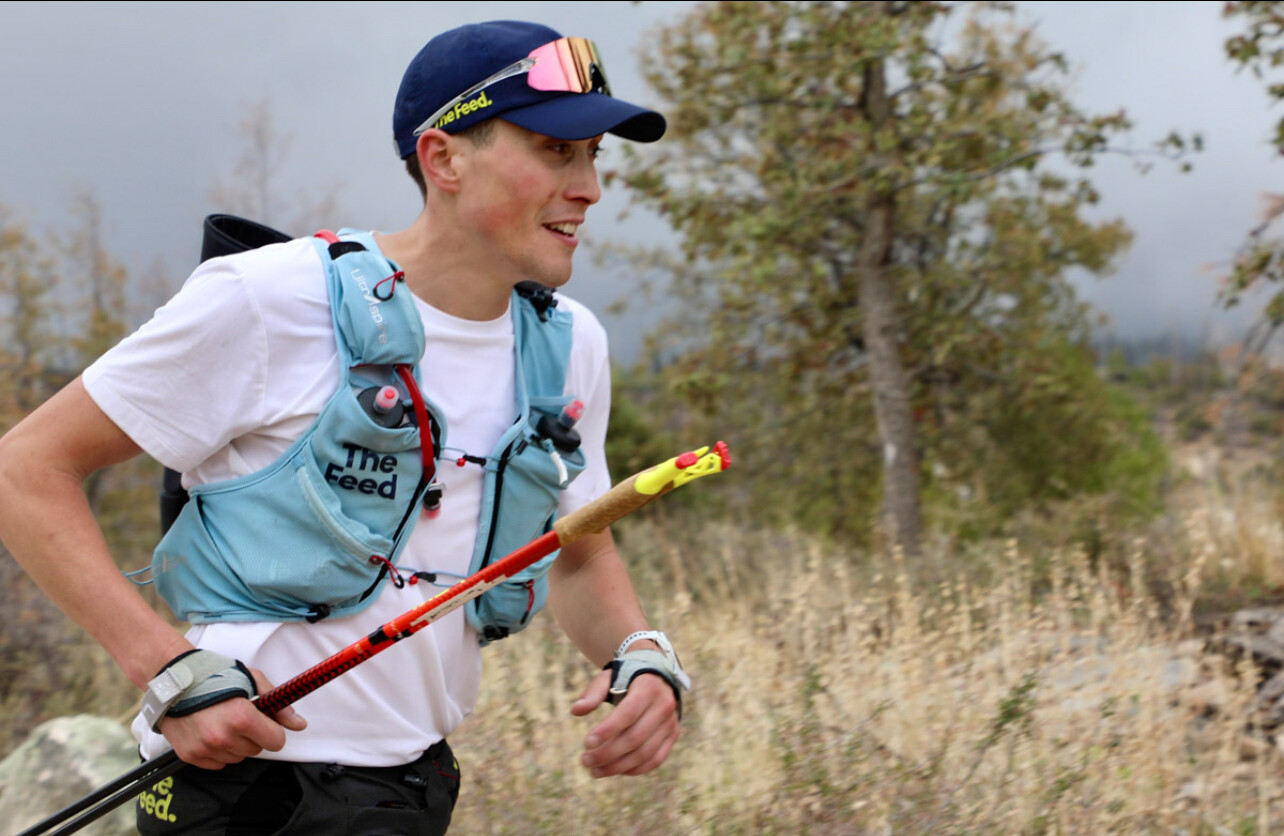
The Cocodona 250 is one of the most challenging ultramarathons in the world, stretching from Black Canyon City to Flagstaff, with runners navigating desert heat, rugged mountain trails, and rocky ascents through towns like Prescott, Jerome, and Sedona. The course is roughly 45% single-track trail, 46% jeep and dirt road, and just 9% paved.
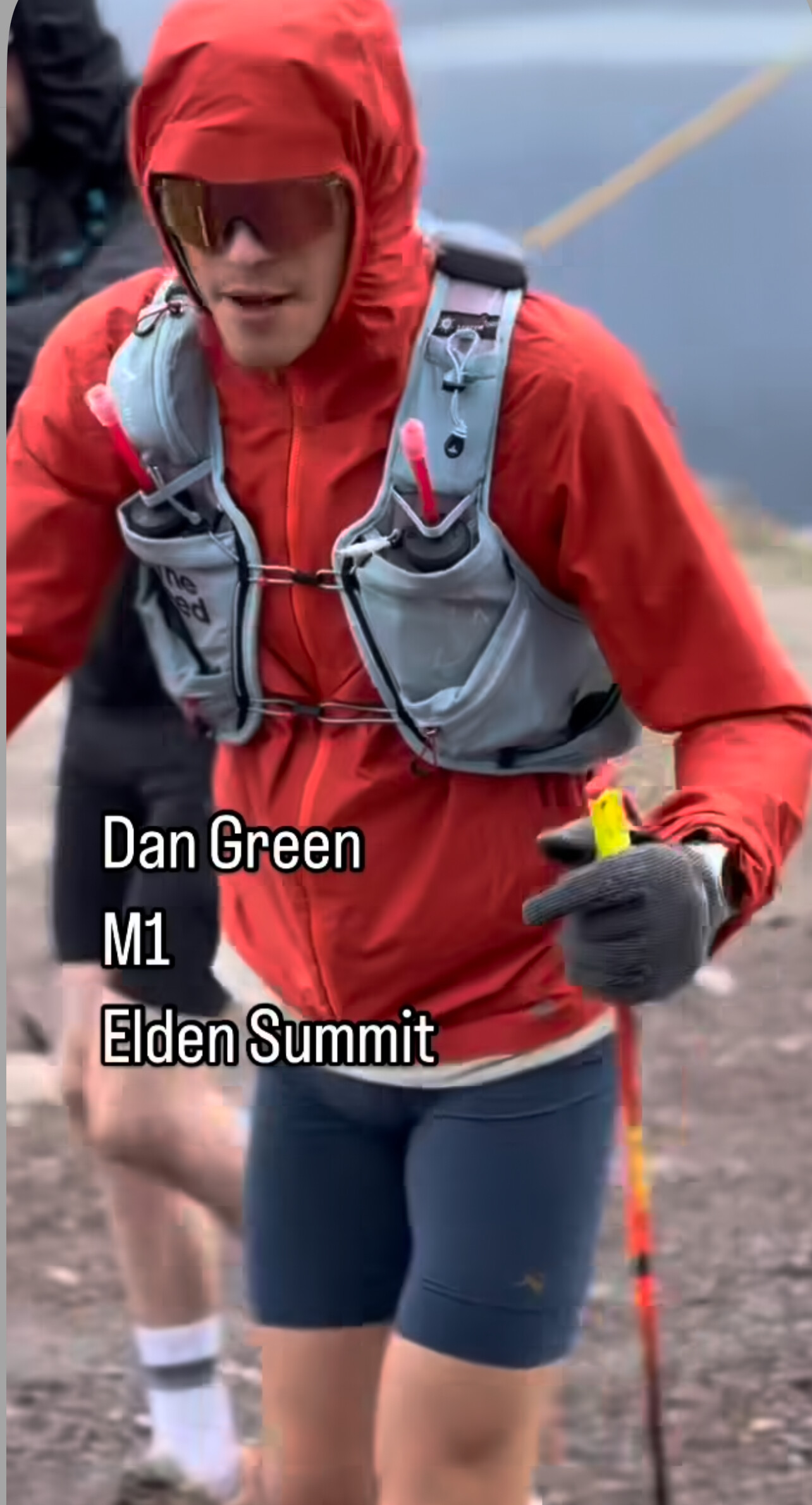
Top 5 Men’s Finishers
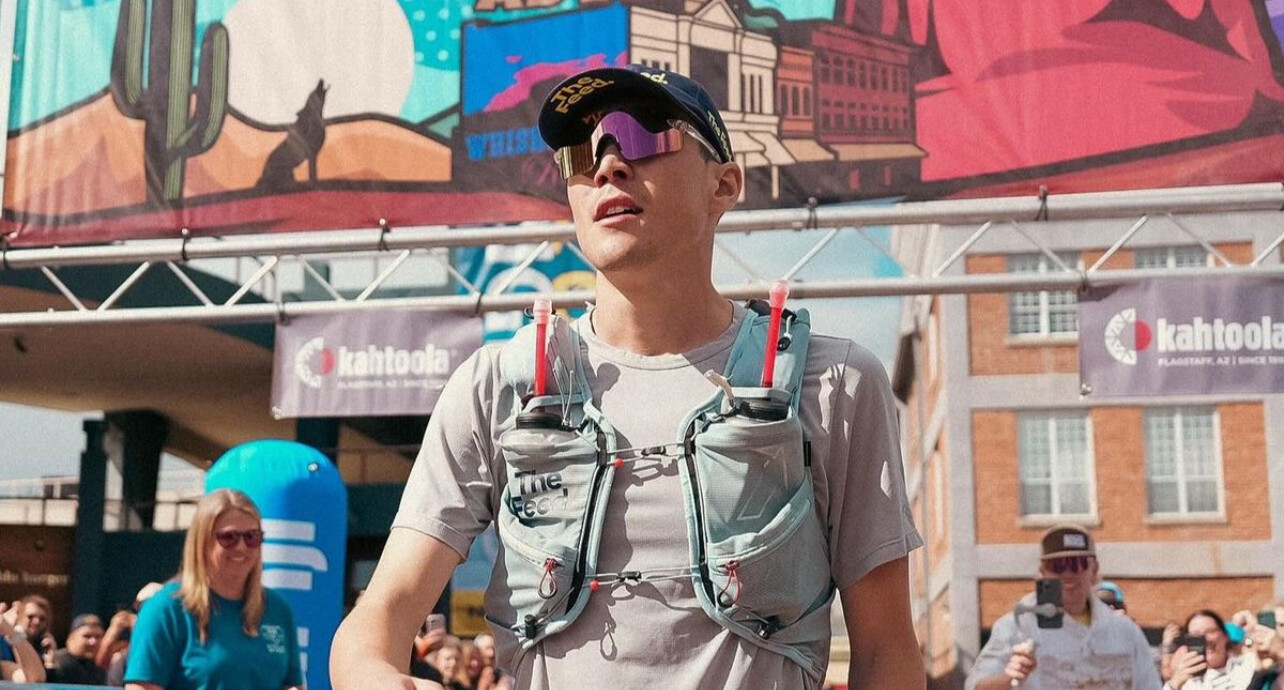
1. Dan Green (USA) – 58:47:18 (13:45/mi)
2. Ryan Sandes (South Africa) – 61:21:04
3. Edher Ramirez (Mexico) – 63:10:13
4. Harry Subertas – 65:28:53
5. Finn Melanson – 66:29:40

Women’s Champion
• Rachel Entrekin – 63:58:15
Set a new women’s course record by more than seven hours
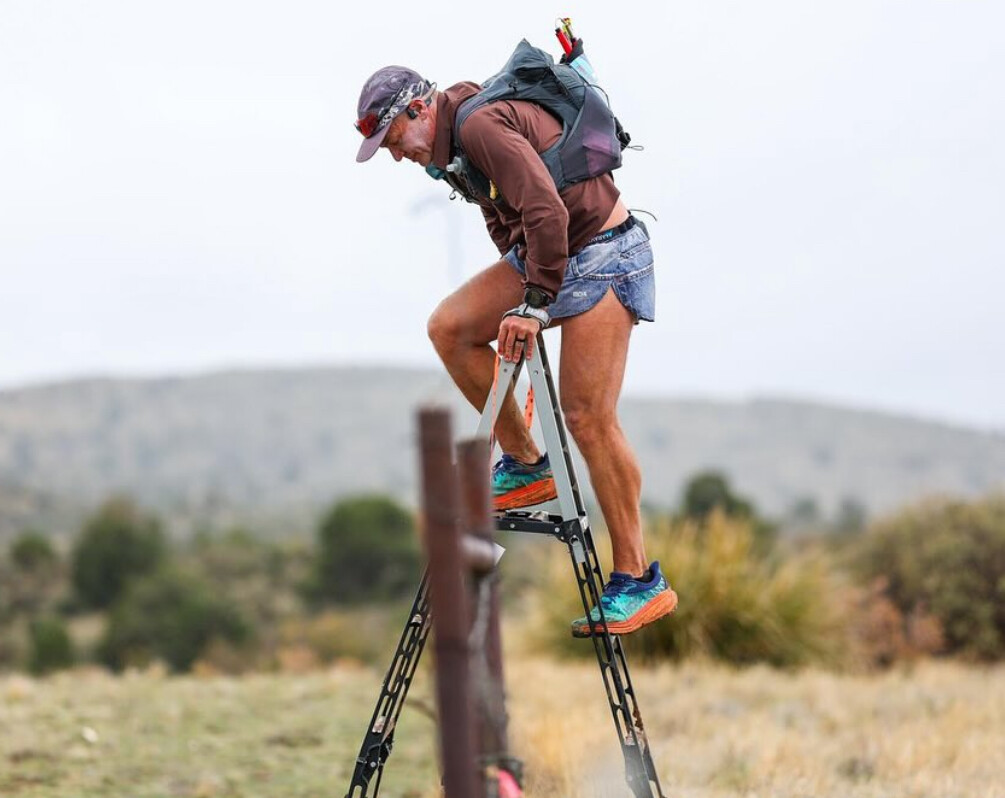
Green’s calm and steady demeanor helped him manage the distance. Speaking with a reporter mid-race via video call, he said:
“Some people take it too seriously. Like why? I mean, you can have fun, still do good, and you can brighten people’s day a little better too.”
This mix of positivity and performance is exactly what the ultrarunning world thrives on—and Dan delivered both in Flagstaff.
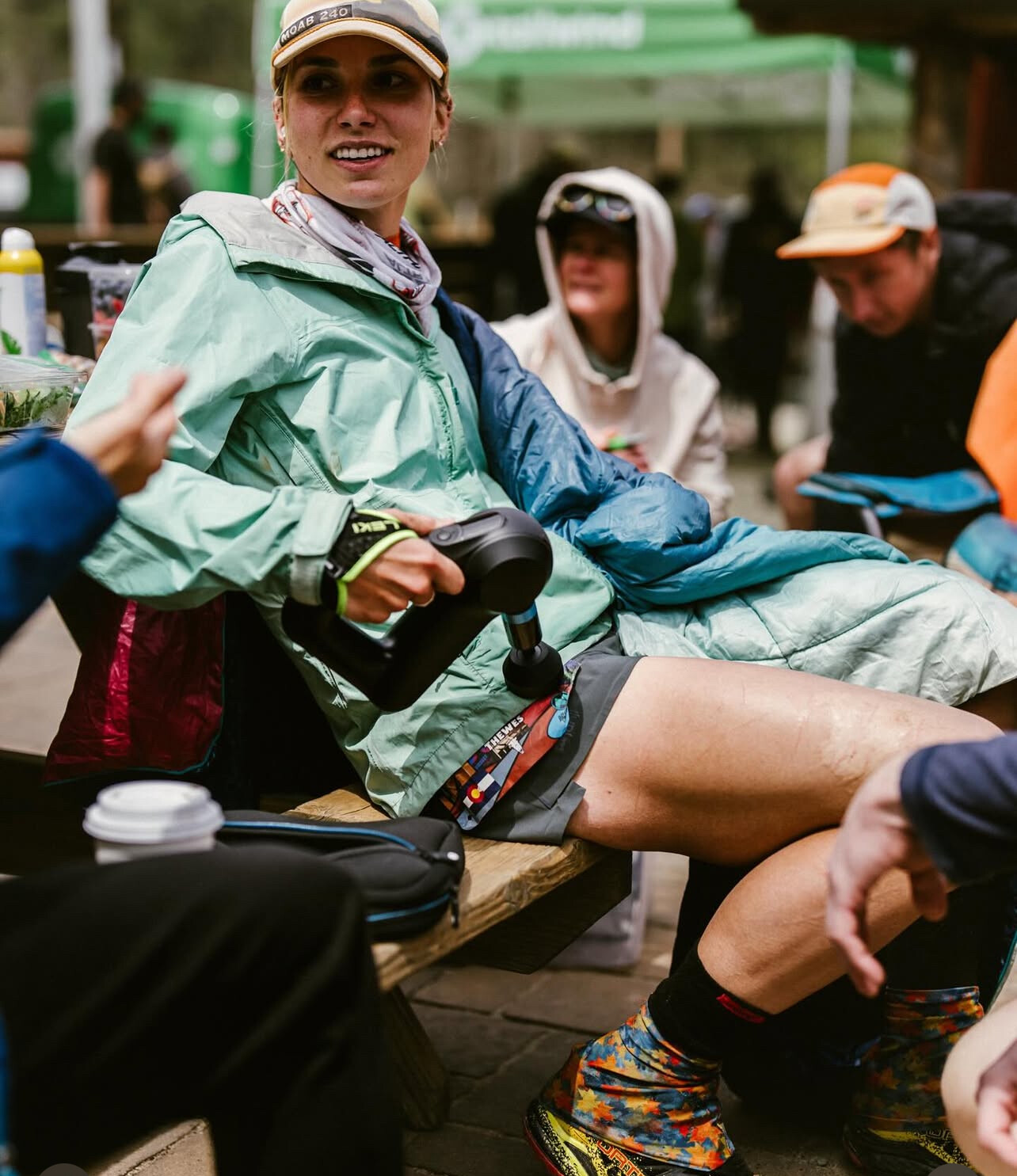
Cocodona 250 Quick Facts
• Distance: 256.5 miles
• Elevation Gain: ~40,000 ft
• Time Limit: 125 hours
• Cutting Through: Black Canyon, Crown King, Prescott, Jerome, Sedona, Flagstaff

• Terrain Breakdown:
• 45% single-track trail
• 46% double-track/jeep road
• 9% pavement
"Congratulations to Dan Green—your new course record holder and a shining example of what grit, strategy, and a good attitude can achieve over 250+ miles," says MBR editor Bob Anderson
by Boris Baron
Login to leave a comment
Why more runners are making the leap from 5k to 50k and beyond
In the not-so-distant past, ultramarathons were seen as the extreme edge of running—reserved for a rare breed of hardened athletes who thrived in pain caves and ran through mountain storms for fun. But something is changing.
Across the globe, more everyday runners are stretching beyond the familiar finish lines of 5Ks, 10Ks, and marathons to take on the once-daunting 50K. What used to be a niche goal is becoming a natural next step.
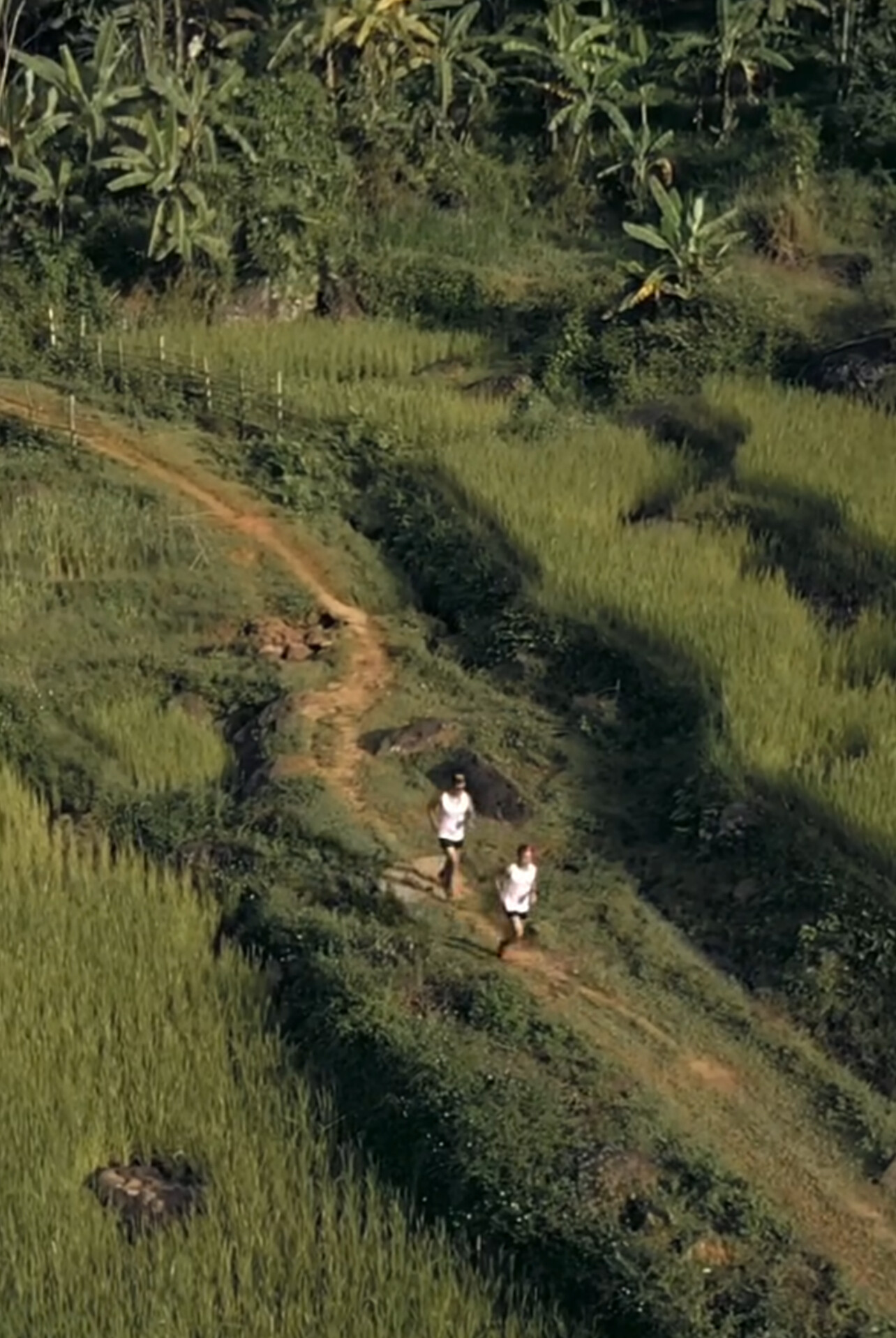
What’s Driving the Ultra Boom?
Social media has played a role, sure. So has curiosity. But at the core, it’s about something deeper.

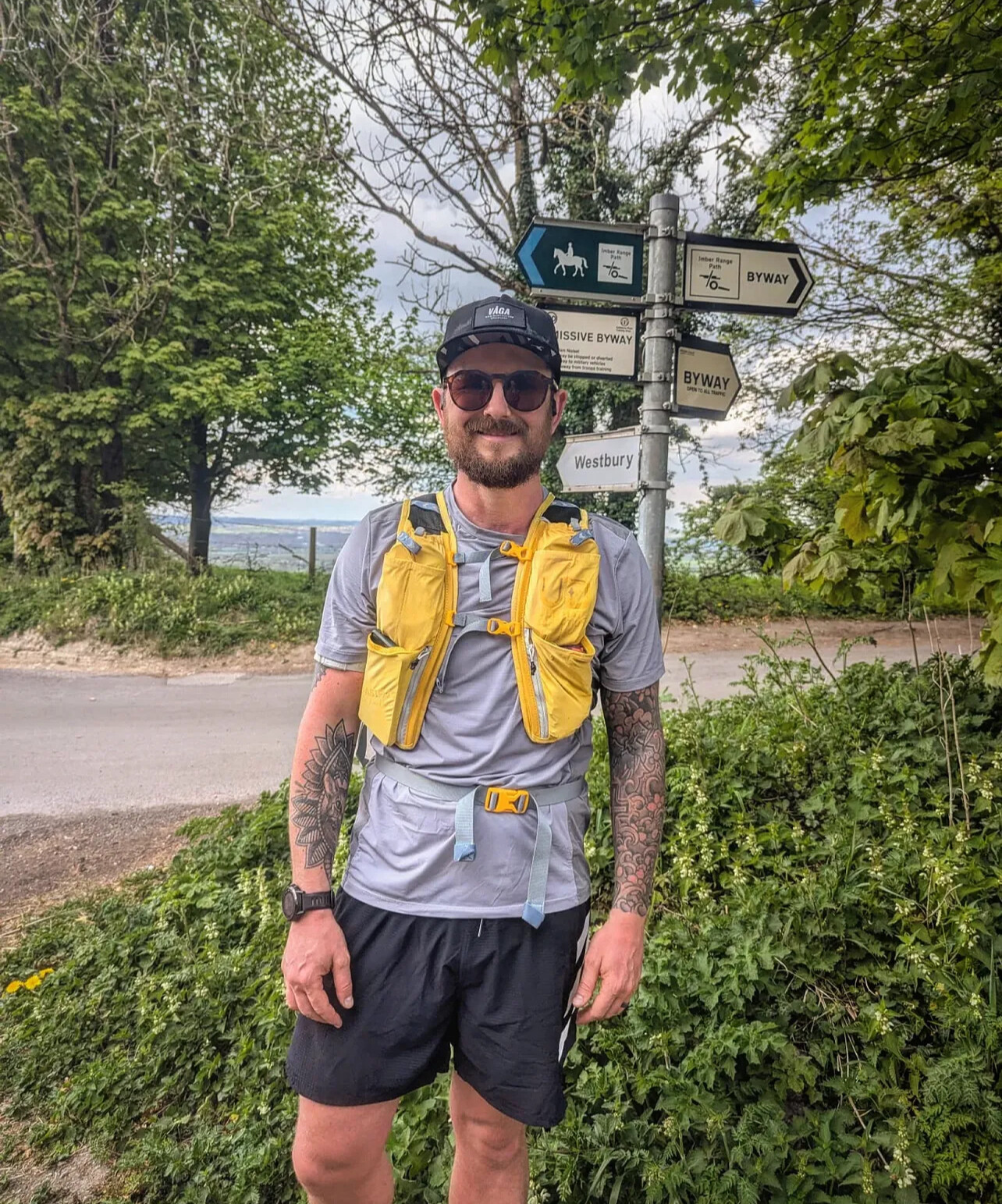
“After I ran my first marathon, I thought that was the pinnacle,” says 37-year-old Julie Ramos, who recently completed her first 50K on the trails outside Asheville, North Carolina. “But a friend talked me into trying a 50K, and it unlocked something I didn’t expect. It wasn’t just harder—it was more meaningful.”
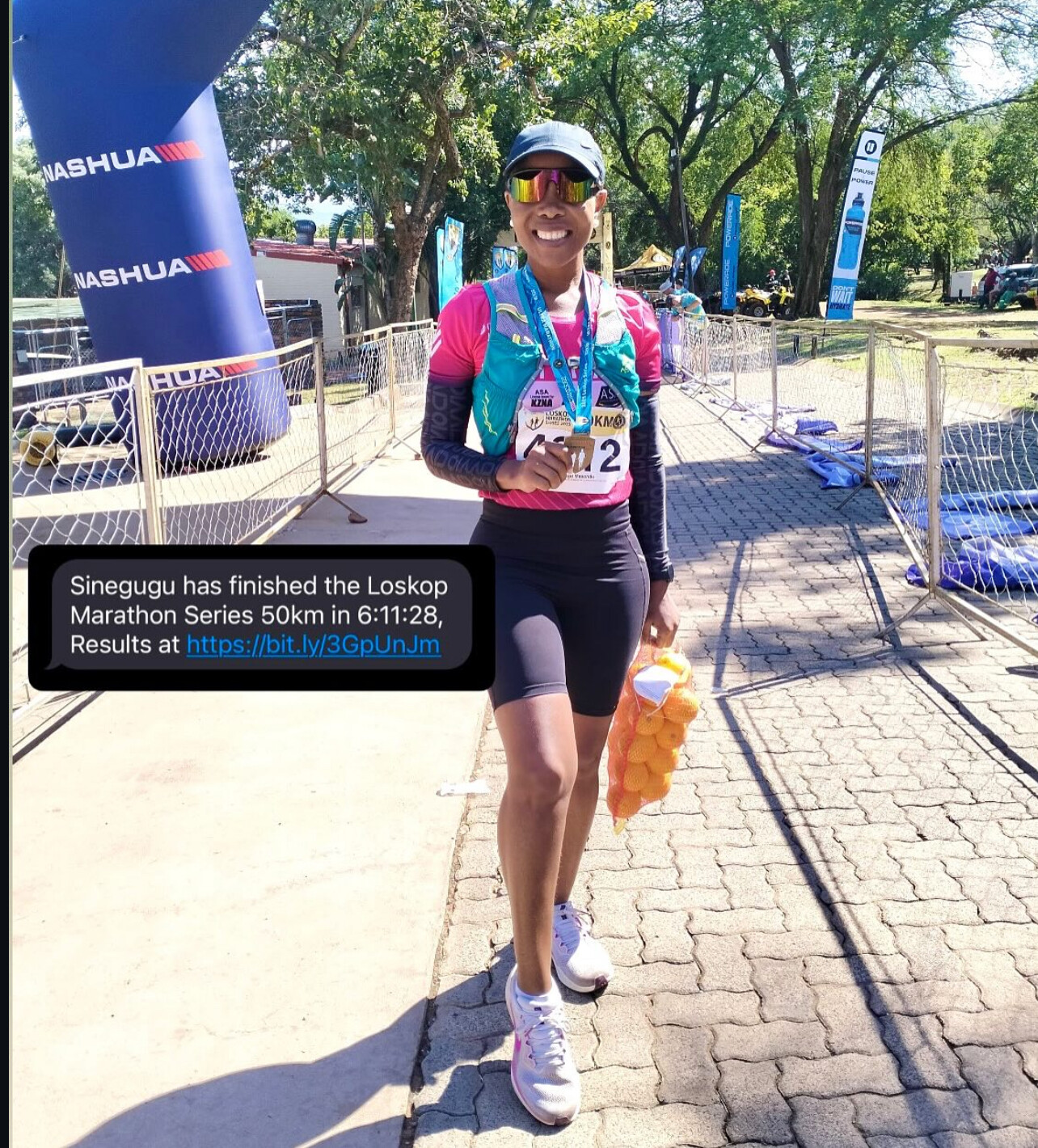
Runners are discovering that going longer doesn’t necessarily mean going faster—it means going deeper. Trail ultras, in particular, emphasize patience, community, and adaptability over raw speed.
From Speed to Sustainability
Unlike the highly structured splits of road races, ultramarathons invite a different rhythm. Walk breaks are expected. Aid stations offer more than water and gels—they serve up peanut butter sandwiches, broth, and even slices of watermelon. The vibe is supportive, not competitive.
“There’s a psychological shift,” says Bob Anderson, founder of My Best Runs. “Many runners are drawn to ultras not because they’re chasing a PR, but because they want to test their limits in a new way. There’s a freedom in going long.”
Making the Leap: What to Know
1. Mileage Must Rise Slowly: You don’t go from 5K to 50K in a month. Most runners build over 6 to 12 months, increasing their long runs gradually and incorporating back-to-back long days on weekends.
2. Fueling Is a Skill: Unlike a 10K, you can’t get through a 50K on water and grit alone. Learning how to eat during your run—without upsetting your stomach—is essential.
3. Recovery Is a Priority: Because weekly mileage often exceeds marathon training, recovery—sleep, stretching, rest days—is no longer optional. It’s the foundation.
4. Your Mind Is Half the Battle: Many first-time ultrarunners say the final miles are more mental than physical. Developing mental strategies (mantras, visualization, focusing only on the next aid station) is key.
The 50K as the Gateway Ultra
The 50K, just over 31 miles, has become the entry point for most new ultrarunners. It’s a logical step from the marathon, with just 5 more miles—but those extra miles often take place on trails, where terrain and elevation replace city streets and cheering crowds.
“There’s something raw and pure about it,” says 29-year-old Aaron Cho, who finished his first trail ultra last month in Utah. “It feels like running stripped down to its essence.”
Final Stride
Ultras aren’t just about distance—they’re about rediscovering your relationship with running. As more 5K and 10K runners look for new goals, the 50K offers a powerful alternative to racing faster: running farther, with purpose.
And for many, that’s exactly what they’ve been looking for.
by Boris Baron
Login to leave a comment
The GOAT Returns: Courtney Dauwalter Takes on the Cocodona 250 Mile Ultra
Courtney Dauwalter, widely regarded as one of the greatest ultrarunners of all time, is set to take on the formidable Cocodona 250—a 250-mile ultramarathon stretching from Phoenix to Flagstaff, Arizona. This grueling race, commencing at 5 a.m. PT on Monday, May 5, 2025, marks her first race over 200 miles since 2020 .
Born on February 13, 1985, in Hopkins, Minnesota, Dauwalter’s athletic journey began with cross-country skiing, where she became a four-time state champion during high school. She continued her athletic pursuits at the University of Denver on a cross-country skiing scholarship and later earned a master’s degree in teaching from the University of Mississippi in 2010 . Before turning professional in 2017, she taught middle and high school science in Denver.
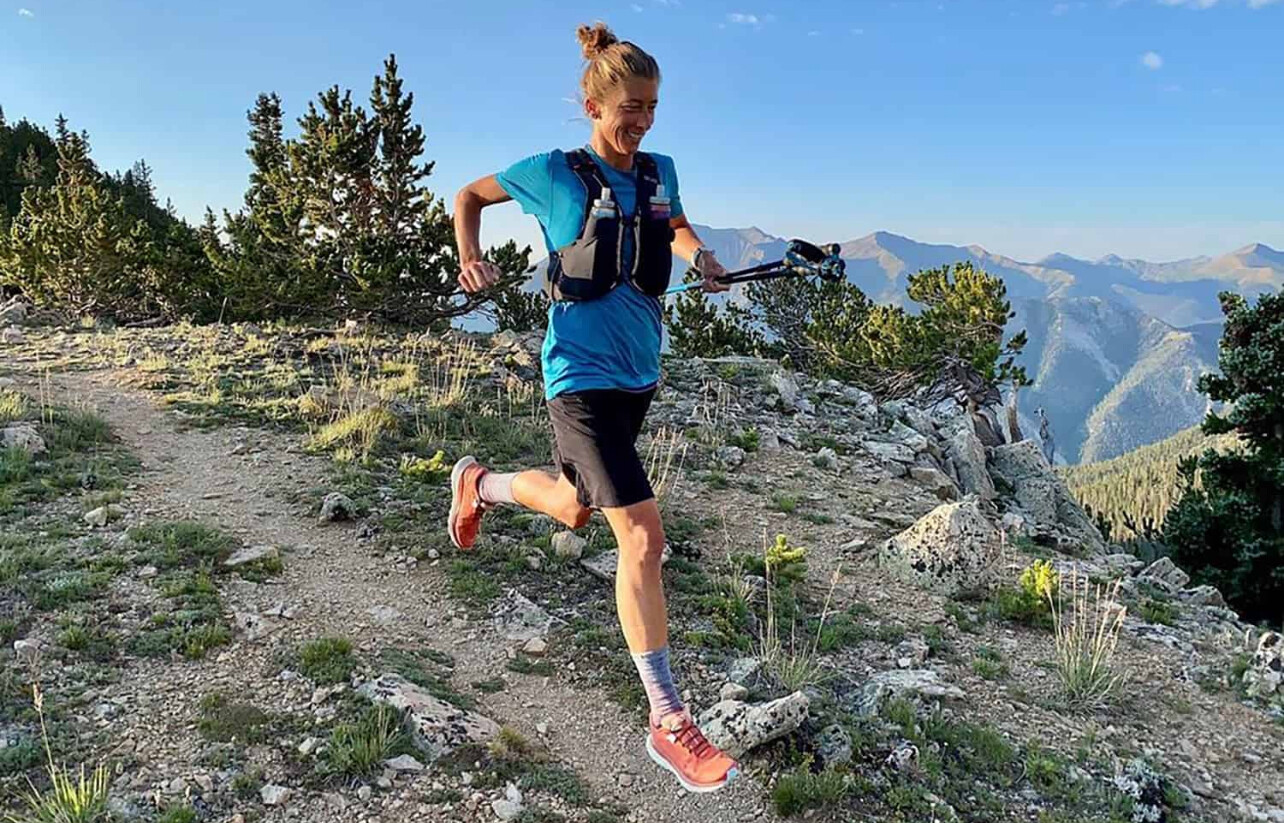
Dauwalter’s ultrarunning career is marked by remarkable achievements. In 2023, she became the first person to win the Western States 100, Hardrock 100, and the Ultra-Trail du Mont-Blanc (UTMB) in the same year . Her victories often come with record-breaking performances, showcasing her exceptional endurance and mental fortitude.

The Cocodona 250 is a point-to-point race that challenges runners with diverse terrains, including desert landscapes, mountainous trails, and significant elevation changes. For Dauwalter, this race presents an opportunity to explore new limits. “I haven’t run a race over 200 miles since 2020,” she noted, highlighting the significance of this endeavor .
Her preparation for Cocodona has been promising. She began her 2025 season with a victory at the Crown King Scramble 50K, indicating strong form leading into this ultramarathon .
A distinctive aspect of Dauwalter’s approach is her embrace of the “Pain Cave,” a term she uses to describe the mental space where she confronts and overcomes extreme physical challenges. She visualizes it as a place to “chip away” at her limits, finding growth through adversity.
Unlike many elite athletes, Dauwalter eschews strict training regimens and coaching, opting instead for an intuitive approach that prioritizes joy and curiosity. Her philosophy centers on listening to her body and finding happiness in the process, which she believes enhances performance.
Courtney Dauwalter’s journey from a science teacher to an ultrarunning icon serves as an inspiration to athletes and non-athletes alike. Her achievements demonstrate the power of resilience, mental strength, and a passion-driven approach to pursuing one’s goals.

As she embarks on the Cocodona 250, the ultrarunning community watches with anticipation, eager to witness another chapter in the extraordinary career of this remarkable athlete.
by Boris Baron
Login to leave a comment
One Mile or One Hundred The Battle for the Soul of the Mile in 2025
In 2025, the word “mile” carries very different meanings depending on who’s lacing up their shoes. For some, it’s about blistering speed—the chase for a personal best in an all-out sprint lasting just a few intense minutes. For others, it’s about endurance, grit, and surviving a 100-mile ultramarathon—not once, but four times in one season. While one version of the mile is measured in minutes, the other is measured in days, elevation, and blisters.
Both forms of running are surging in popularity, drawing passionate athletes and growing crowds. But which “mile” speaks to you?

The Rise of the Road Mile
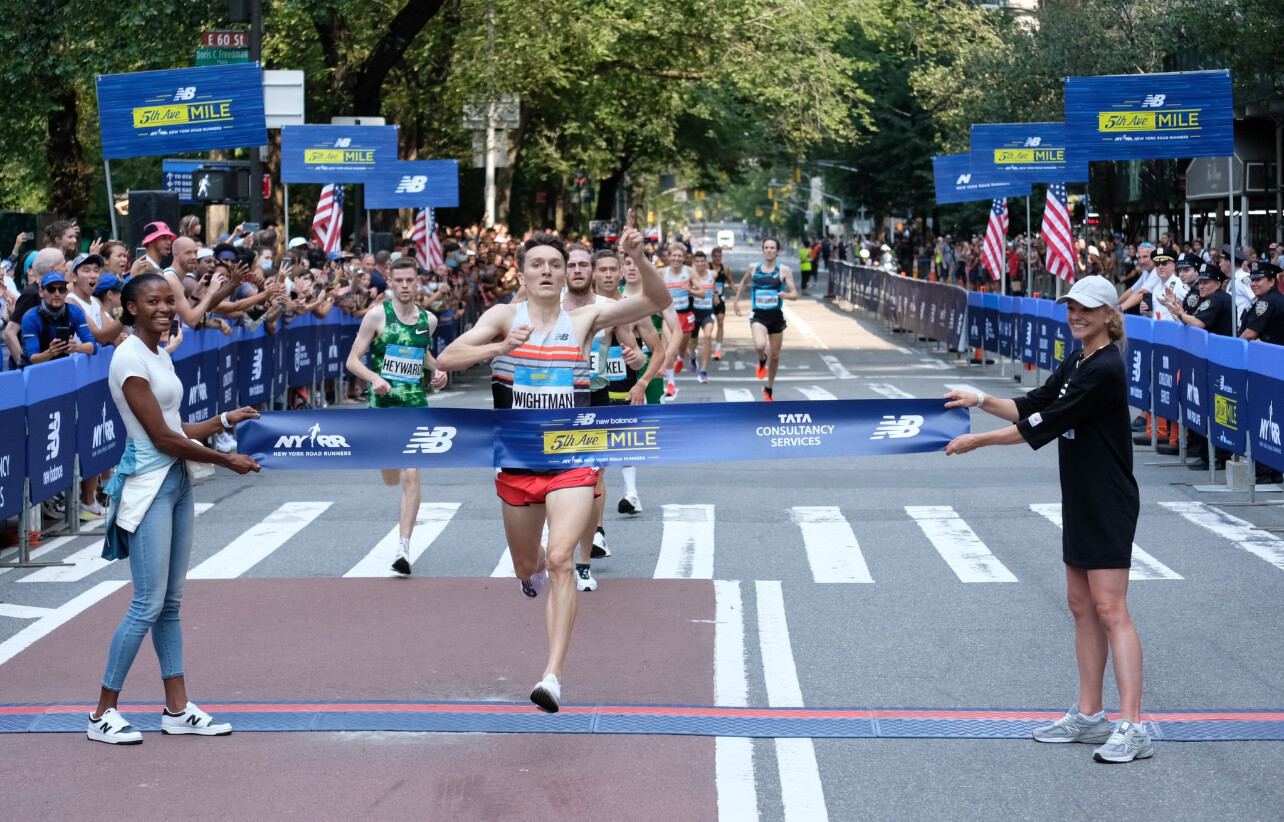
The road mile is back in the spotlight. Once overshadowed by the 5K and 10K, this short, intense race has re-emerged as a fan favorite. In cities across the U.S. and around the world, runners are lining up for high-stakes, high-speed showdowns that test both speed and tactical racing smarts.
One of the most iconic examples is the New Balance 5th Avenue Mile in New York City. Scheduled for Sunday, September 7, 2025, this legendary event draws elite professionals, masters athletes, and youth competitors for a one-mile drag race down Manhattan’s Fifth Avenue. With the skyline as a backdrop and cheering crowds lining the route, it offers one of the purest expressions of speed in road racing.
“It’s raw, it’s electric, and it’s over before you know it,” said one competitor who’s raced both marathons and the mile. “The road mile demands absolute precision—whether you’re aiming to break five minutes or six, you don’t get time to recover from a tactical mistake.”
Events like the Guardian Mile in Cleveland and the Grand Blue Mile in Iowa have followed suit, offering prize money, flat courses, and the kind of short-format excitement that appeals to both spectators and athletes. The mile, once seen as a track-specific discipline, has truly found a home on the road.
The Grand Slam of Ultrarunning
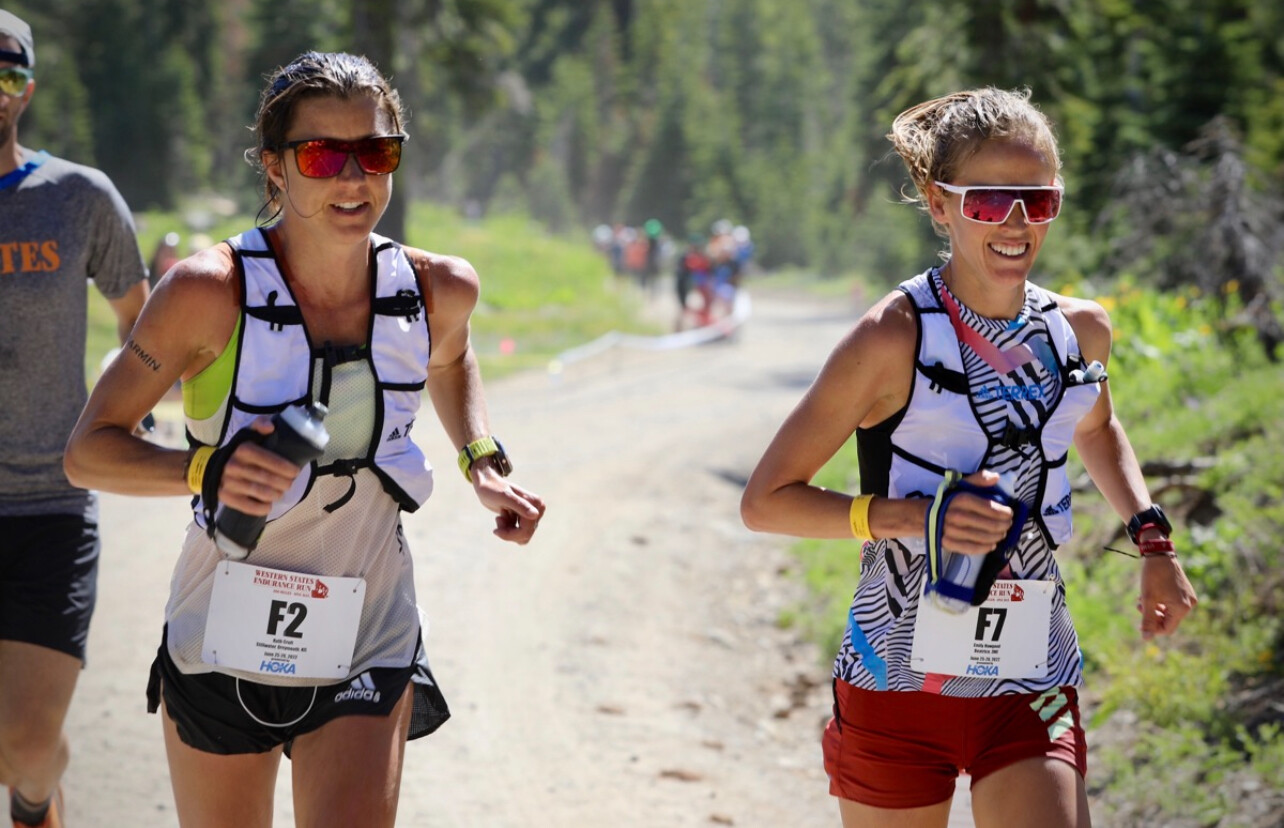
At the other extreme lies the Grand Slam of Ultrarunning—one of the sport’s most grueling and prestigious challenges. Often confused online with terms like “mile grand slam” due to the cumulative 400 miles of racing, the official name is simply The Grand Slam.
To earn this distinction, runners must complete four of the oldest and most iconic 100-mile trail races in the United States during a single summer. The core races typically include:
• Western States 100 (California)
• Vermont 100 Mile Endurance Run
• Leadville Trail 100 (Colorado)
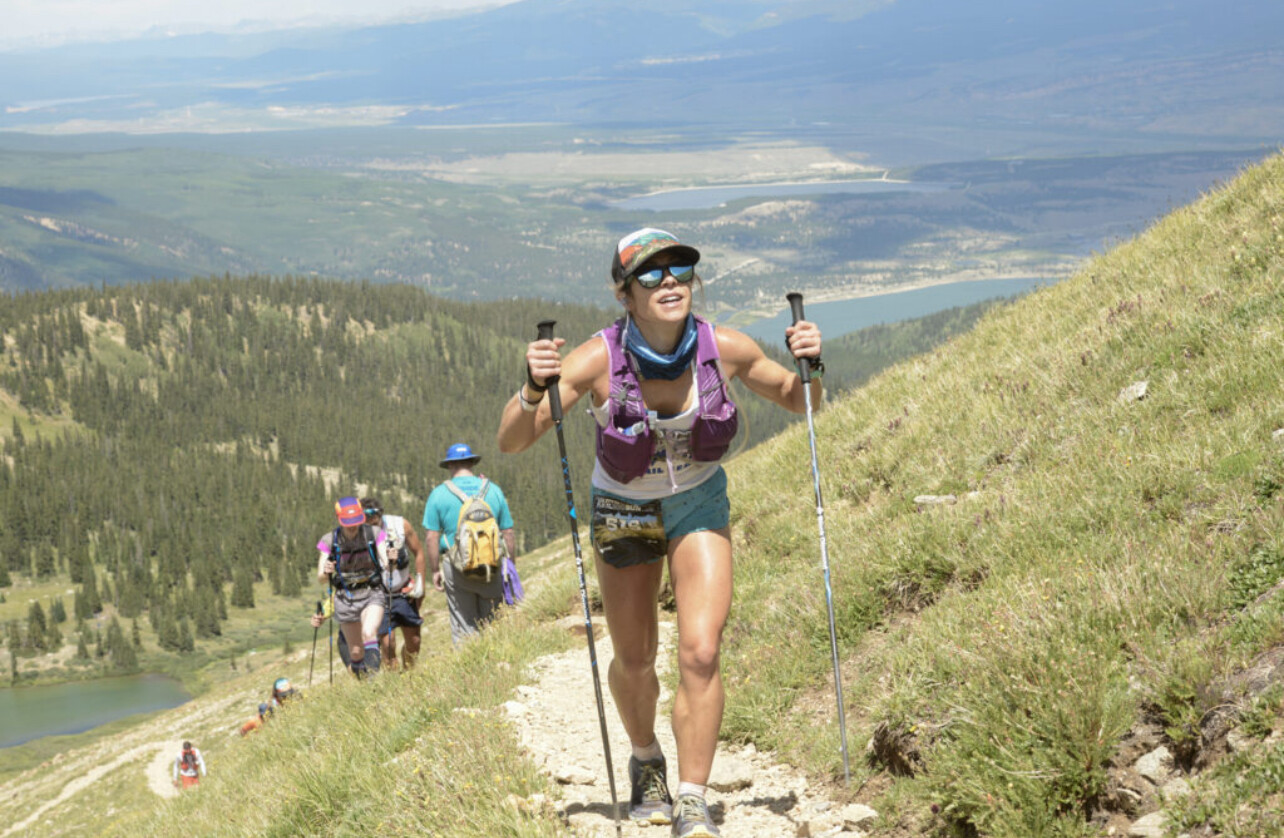
• Wasatch Front 100 (Utah)
Some years permit substitutions like the Old Dominion 100, depending on scheduling. Regardless of the lineup, the difficulty is staggering: thousands of feet of elevation gain, brutal cutoffs, altitude, heat, and sleep deprivation.
“To finish one 100-miler is an accomplishment,” said a veteran ultrarunner who’s completed the Slam. “To finish four in under 16 weeks—there’s nothing like it. It’s not about speed. It’s about survival, strategy, and heart.”
Since its formal inception in the 1980s, fewer than 400 runners have completed the Grand Slam—a testament to its difficulty and prestige.
Two Extremes, One Shared Spirit
At first glance, these two uses of the word “mile” couldn’t be more different. One is sleek and fast; the other is rugged and long. One ends before your legs even start to ache; the other pushes your limits for an entire day—and night.
But at their core, both disciplines require the same fuel: dedication, discipline, and the courage to test yourself. Whether it’s the final lean in a road mile or the final climb at mile 96 of a trail race, runners in both arenas are chasing something personal—and powerful.
Final Thought
So what does the mile mean in 2025? For some, it’s a tactical burn over 1,760 yards. For others, it’s the slow, steady march of 100 trail miles—repeated four times. Either way, the mile remains one of the sport’s most meaningful measures of challenge.
by Boris Baron
Login to leave a comment
Running on Vacation - The Rise of Destination Races and Wellness Travel
Runners are no longer just chasing personal bests—they’re chasing passport stamps, too. Around the world, thousands of runners are combining their love of travel with their passion for racing, fueling a surge in destination races and wellness-focused running getaways.
From the historic cobblestone streets of Rome to the snowcapped trails of Patagonia, destination races have become bucket-list experiences. These events are about more than just performance—they offer culture, adventure, and a chance to see the world on foot.
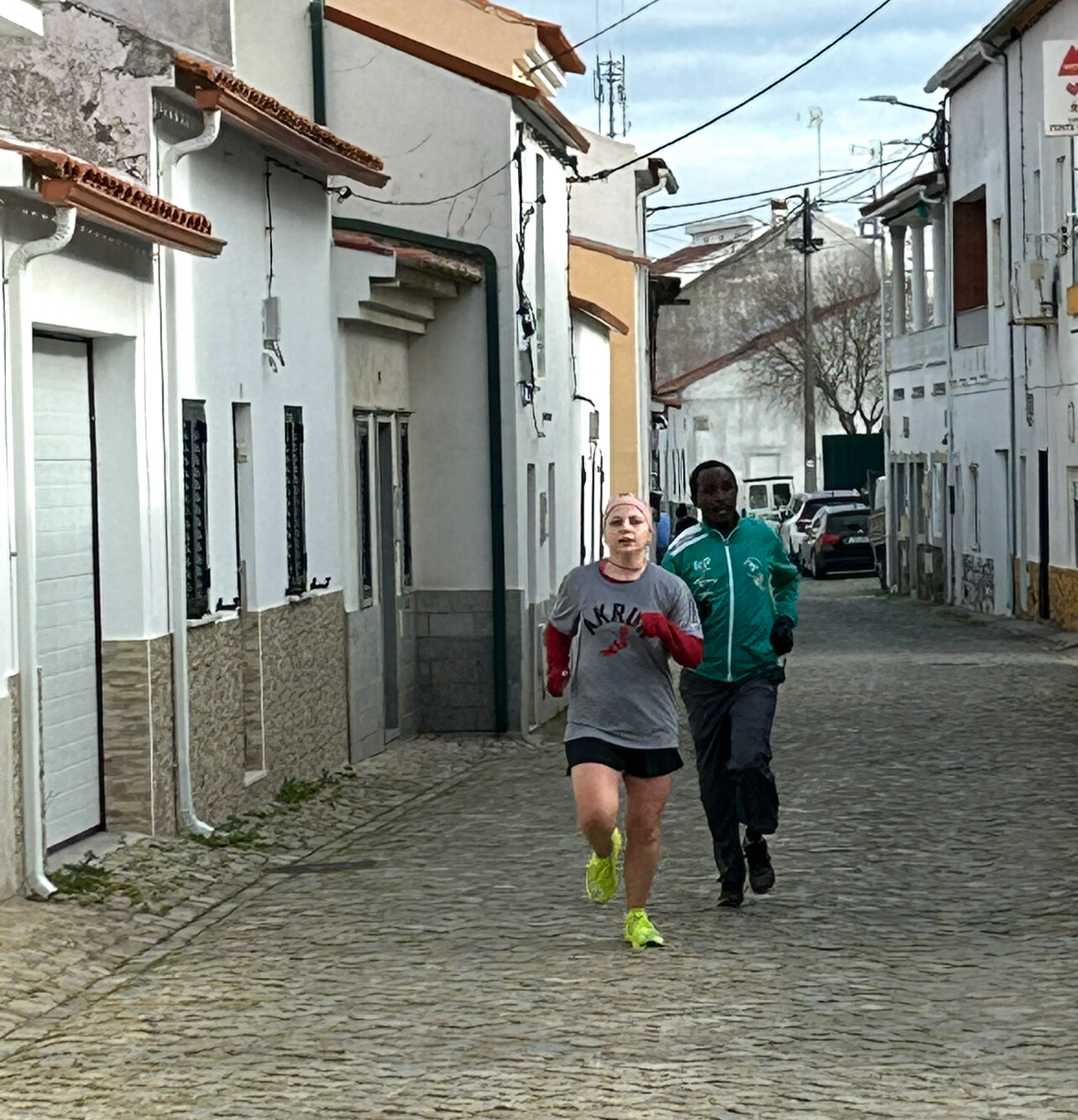
A Growing Global Trend
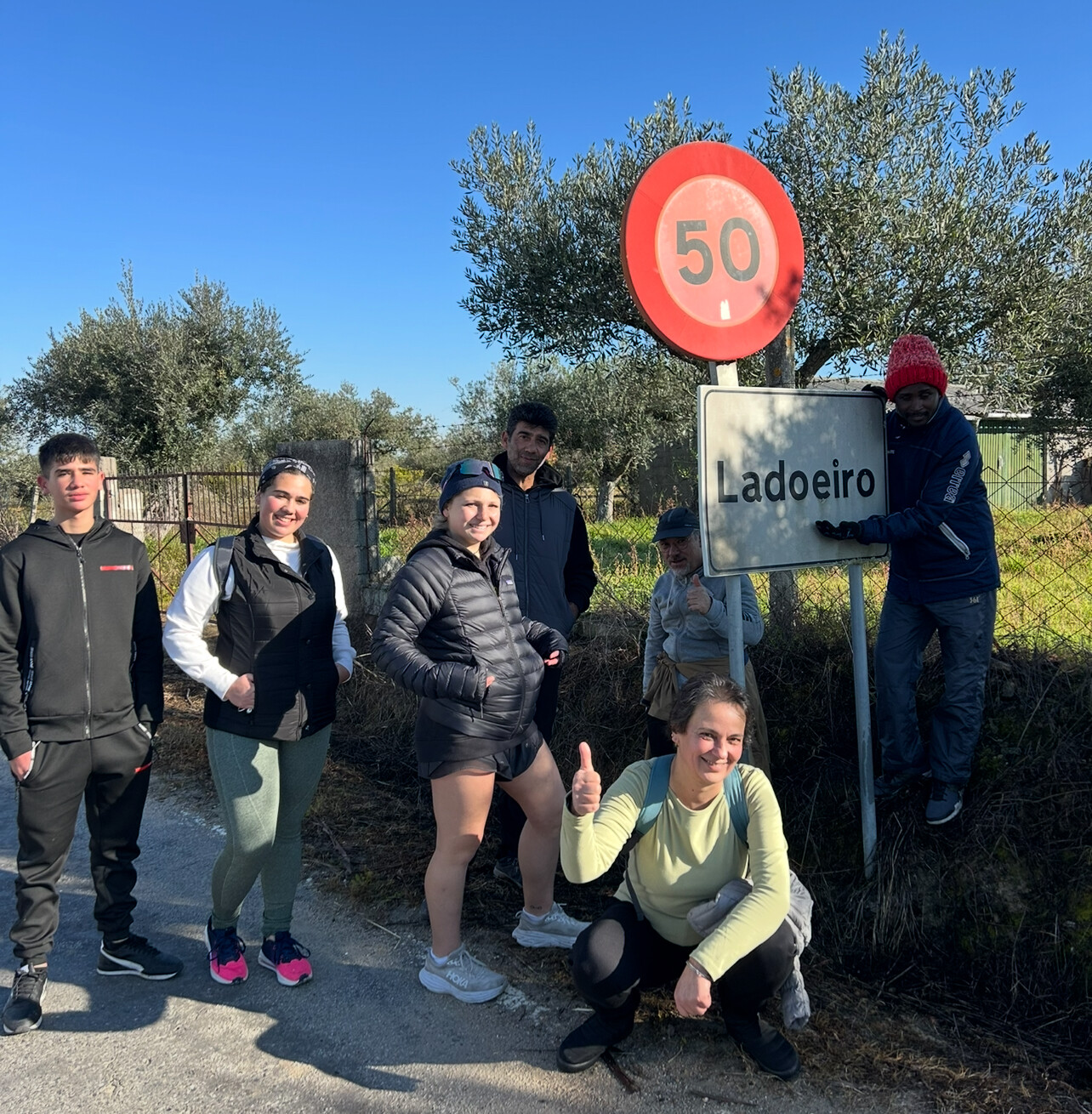
Race-cations are booming. Major marathons like Tokyo, Berlin, and Paris draw runners from dozens of countries each year, not only for the challenge but also for the immersive experience of racing through iconic cities. At the same time, trail and ultramarathons in remote locations—like the Patagonia International Marathon or the Jungfrau Marathon in Switzerland—offer a unique mix of endurance and awe-inspiring landscapes.
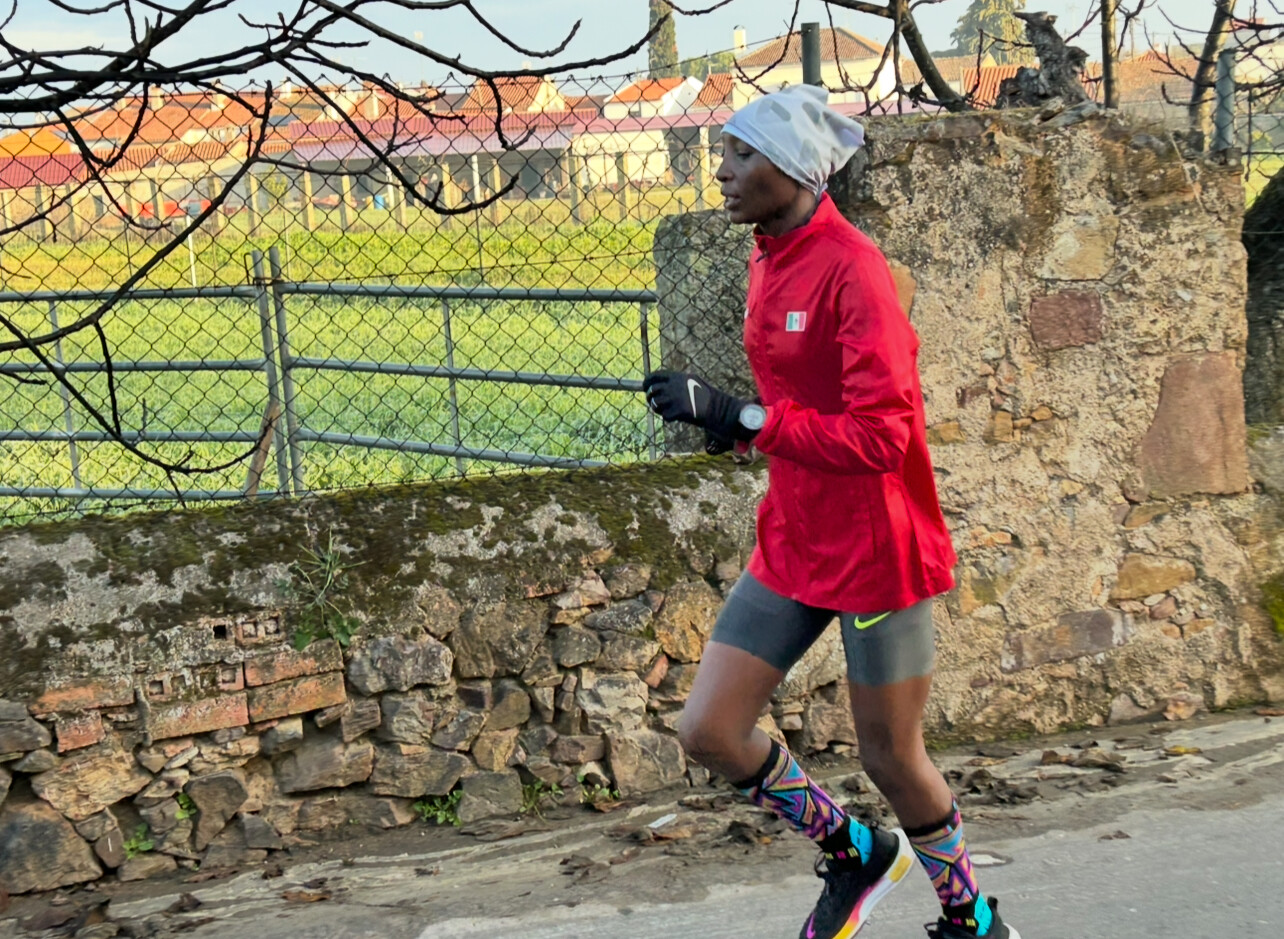
According to organizers, many participants plan these trips a year in advance, bringing along family and turning the event into a full vacation. Hotels, restaurants, and local tourism boards have taken note, often offering special packages around race weekends.

KATA Portugal and KATA Kenya: Tuning Up Abroad
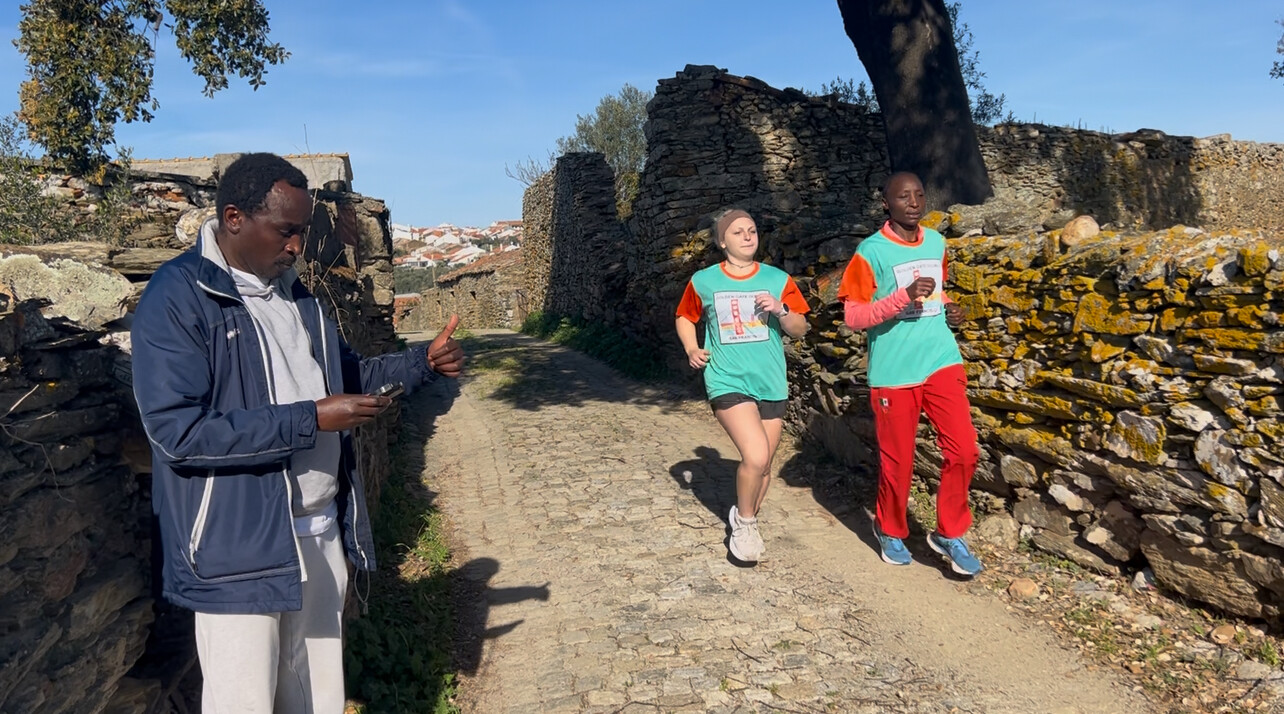
A growing number of runners are also adding a tune-up week to their itinerary—fine-tuning their fitness at dedicated training retreats before race day. Two of the most exciting options are KATA Portugal and KATA Kenya, both part of the Kenyan Athletics Training Academy network founded by running pioneer Bob Anderson.

KATA Portugal (photos 2-7), located in the scenic village of Monforte da Beira, offers personalized coaching, peaceful trails, home-cooked meals, and even massage and yoga—ideal before races like the Lisbon Marathon. Meanwhile, KATA Kenya (photo 8), based in the high-altitude town of Thika, provides a once-in-a-lifetime chance to train with world-class Kenyan athletes ahead of the Nairobi Marathon or other African events. Whether you’re a sub-3 marathoner or chasing your first finish, spending a week immersed in focused training can elevate the entire race-cation experience.
More Than a Medal
Wellness travel has also influenced the trend. Many destination races are now paired with yoga retreats, spa treatments, and recovery days in scenic locations. Runners can find themselves soaking in Icelandic hot springs after a half marathon or tasting wine in the Douro Valley after a 10K.
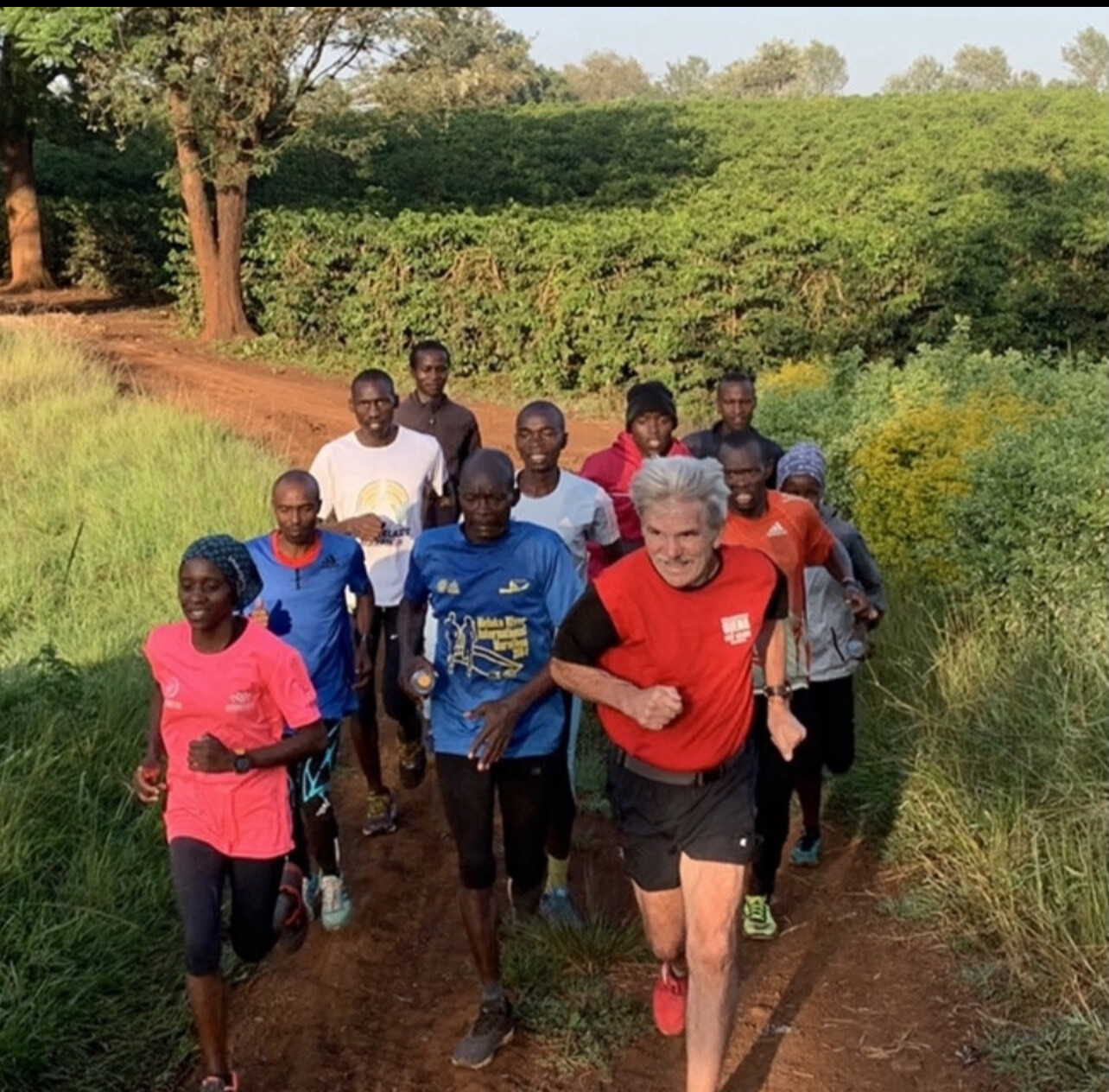
And the camaraderie is real. “There’s something unforgettable about running through a city or countryside you’ve never seen before with people who came from every corner of the globe,” says Sarah Kim, a five-time international marathoner. “You share the course, the culture, and the challenge.”
Tips for Planning a Race-Cation
• Pick Your Race Wisely: Choose an event that fits your fitness level and time zone adjustment. Be mindful of climate and elevation, too.
• Plan Around the Race: Arrive a few days early to acclimate, but schedule your sightseeing after the race. You’ll appreciate it more on rested legs.
• Pack Smart: Don’t rely on finding gear at your destination. Bring your trusted shoes, race-day fuel, and any recovery tools you use.
• Make It Memorable: Book a special meal, visit a famous landmark, or sign up for a local tour. Racing abroad is as much about the experience as it is about the finish line.
Looking Ahead
As international travel continues to rebound, destination races will likely play an even bigger role in the running world. For those who train hard year-round, what better reward than a race that ends with a view—and maybe a glass of local wine?
by Boris Baron
Login to leave a comment
Des Linden Announces Retirement From Professional Marathoning
2018 Boston Marathon Champion Eyes Ultra Distances as Her Next Frontier
Des Linden, one of America’s most celebrated distance runners and the 2018 Boston Marathon champion, has announced she is retiring from professional marathoning. Known for her grit, longevity, and no-nonsense approach to the sport, Linden is not stepping away from running altogether. Instead, she’s setting her sights on a new challenge—ultramarathons.

Linden, 40, made the announcement with characteristic clarity, emphasizing that while her days competing at the highest level in the marathon are behind her, her passion for endurance running is far from over. “The chapter on professional marathoning is closing,” she said, “but the book isn’t finished.”
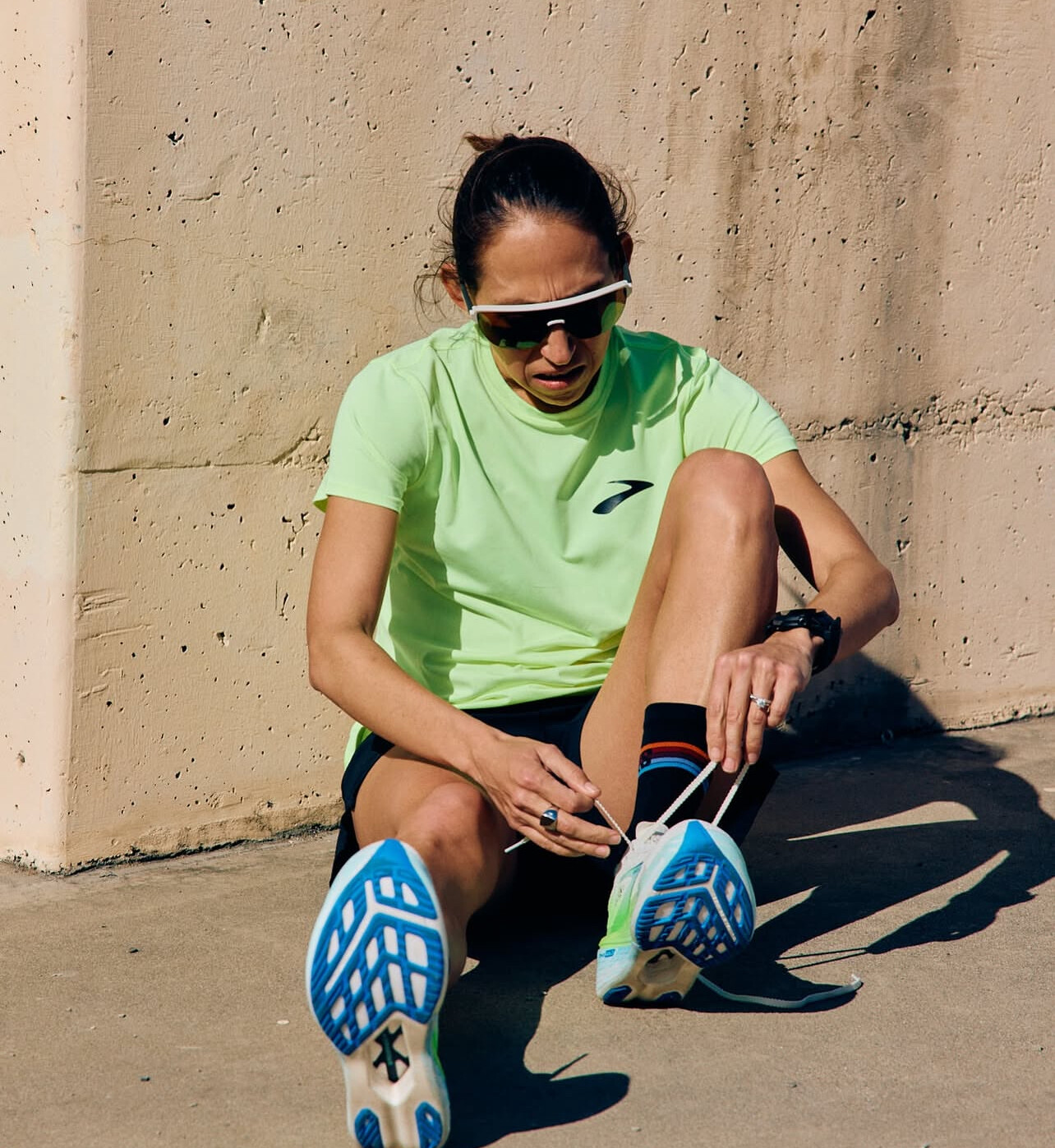
Her victory at the 2018 Boston Marathon remains one of the most iconic moments in U.S. distance running history. Battling freezing rain and headwinds, Linden surged through the elements to become the first American woman to win Boston in 33 years. That win elevated her status from elite competitor to running legend.
But Des has always been more than just one win. She’s represented the U.S. on the Olympic stage twice (London 2012, Rio 2016), placed second at the 2011 Boston Marathon, and has run more than 20 career marathons under 2:30. Her steady pacing, resilience, and loyalty to the grind have made her a fan favorite for over a decade.
In recent years, Des has hinted at her evolving interests in longer distances. She famously broke the women’s 50K world record in 2021, clocking 2:59:54—becoming the first woman to run sub-3:00 for the distance. That performance gave a glimpse of what might be next.

Now, with her professional marathoning career officially behind her, Linden plans to explore the world of trail and ultra running. “There’s something pure and raw about ultras,” she said. “It’s about effort, persistence, and the long game—things I’ve always loved about running.”
Linden’s legacy is already cemented, but her next chapter promises to be just as compelling. Whether it’s the Western States 100 or Comrades, fans can expect to see the same toughness and authenticity that made her a household name in the marathon world.
From Boston’s heartbreak hill to the rugged climbs of ultramarathon courses, Des Linden’s journey continues—just at a longer distance.
by Boris Baron
Login to leave a comment
Surviving the Sahara – Inside the Marathon des Sables, the World’s Toughest Footrace
Dubbed the toughest footrace on Earth, the Marathon des Sables (MdS) is a grueling multi-day ultramarathon that challenges participants to traverse approximately 250 kilometers across the unforgiving terrain of the Moroccan Sahara Desert. This annual event tests the limits of human endurance, self-sufficiency, and resilience.
A Brief History of a Brutal Race
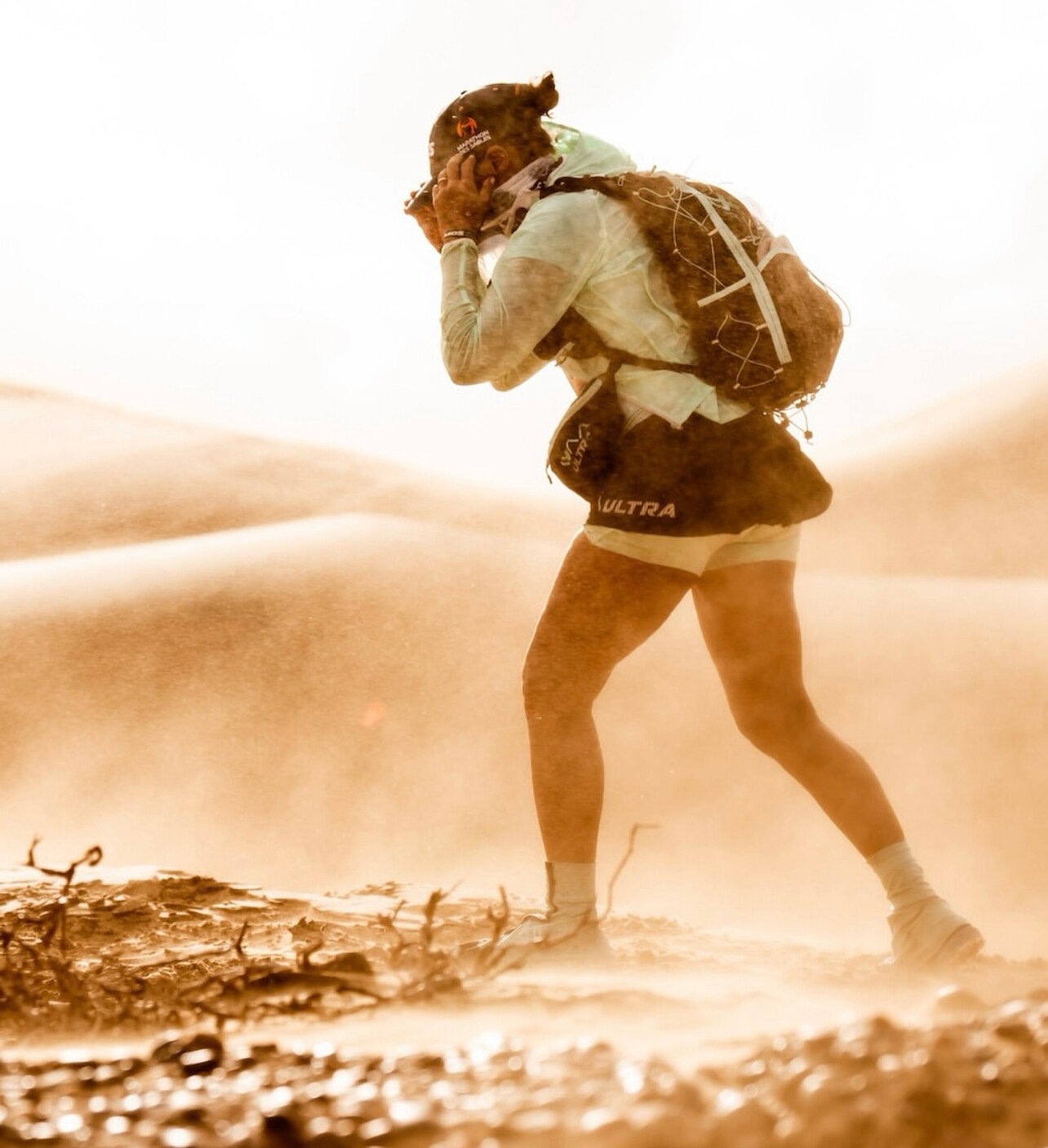
The Marathon des Sables was conceived by Frenchman Patrick Bauer, who in 1984 embarked on a solo trek of 350 kilometers across the Sahara Desert. Inspired to share this transformative experience, Bauer organized the inaugural race in 1986 with just 23 participants. Since then, the MdS has grown exponentially, attracting over a thousand competitors annually from around the globe.
The Race Format – Six Days of Pain and Perseverance
The MdS spans six stages over seven days, covering diverse and challenging terrains:

• Stages 1–3: Medium-distance runs of 30–40 km each.
• Stage 4 (The Long Day): An arduous 80+ km stretch, often extending into the night.
• Stage 5: A standard marathon distance of 42.2 km.
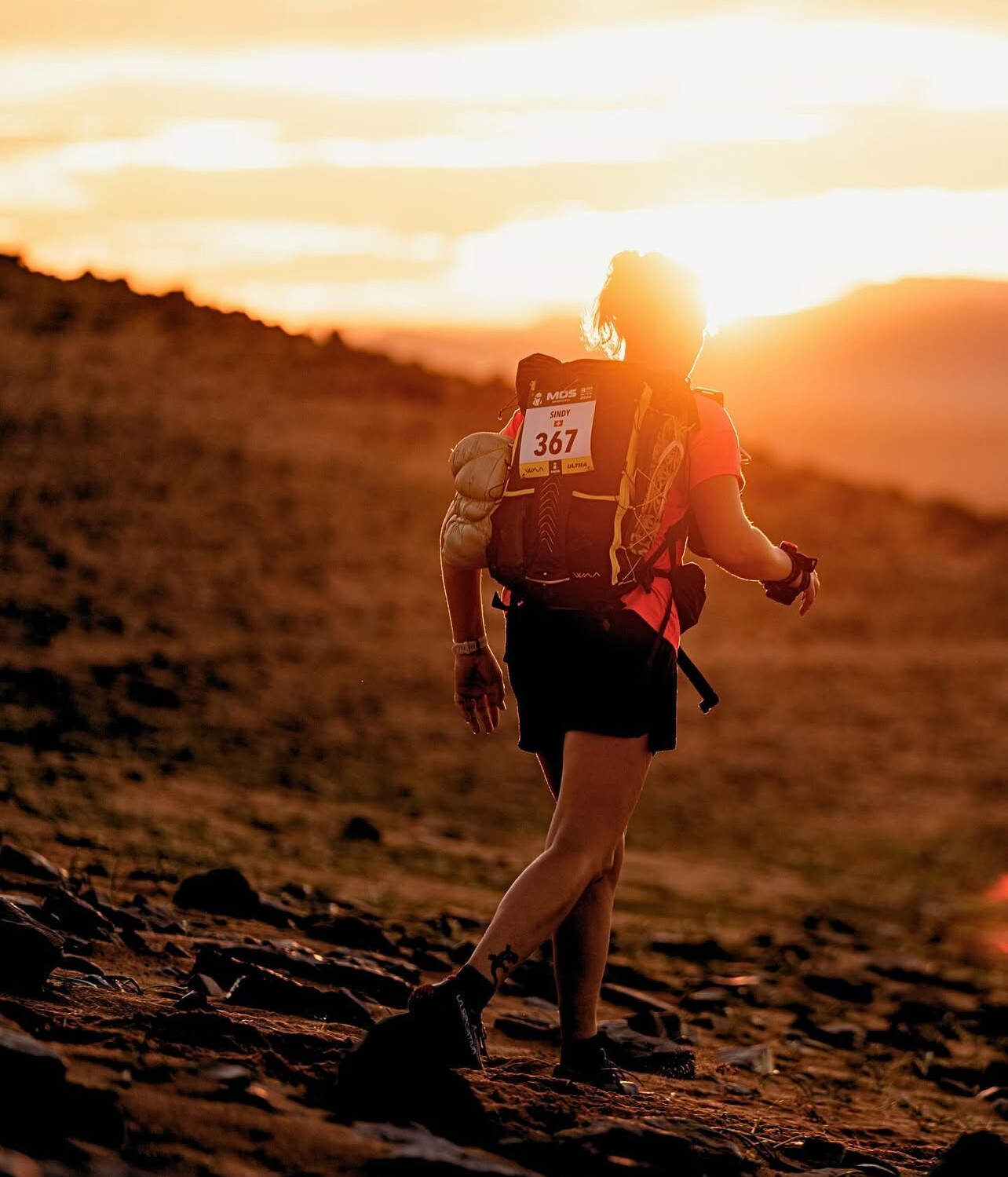
• Stage 6: A non-competitive charity stage, approximately 10 km, fostering camaraderie among participants.
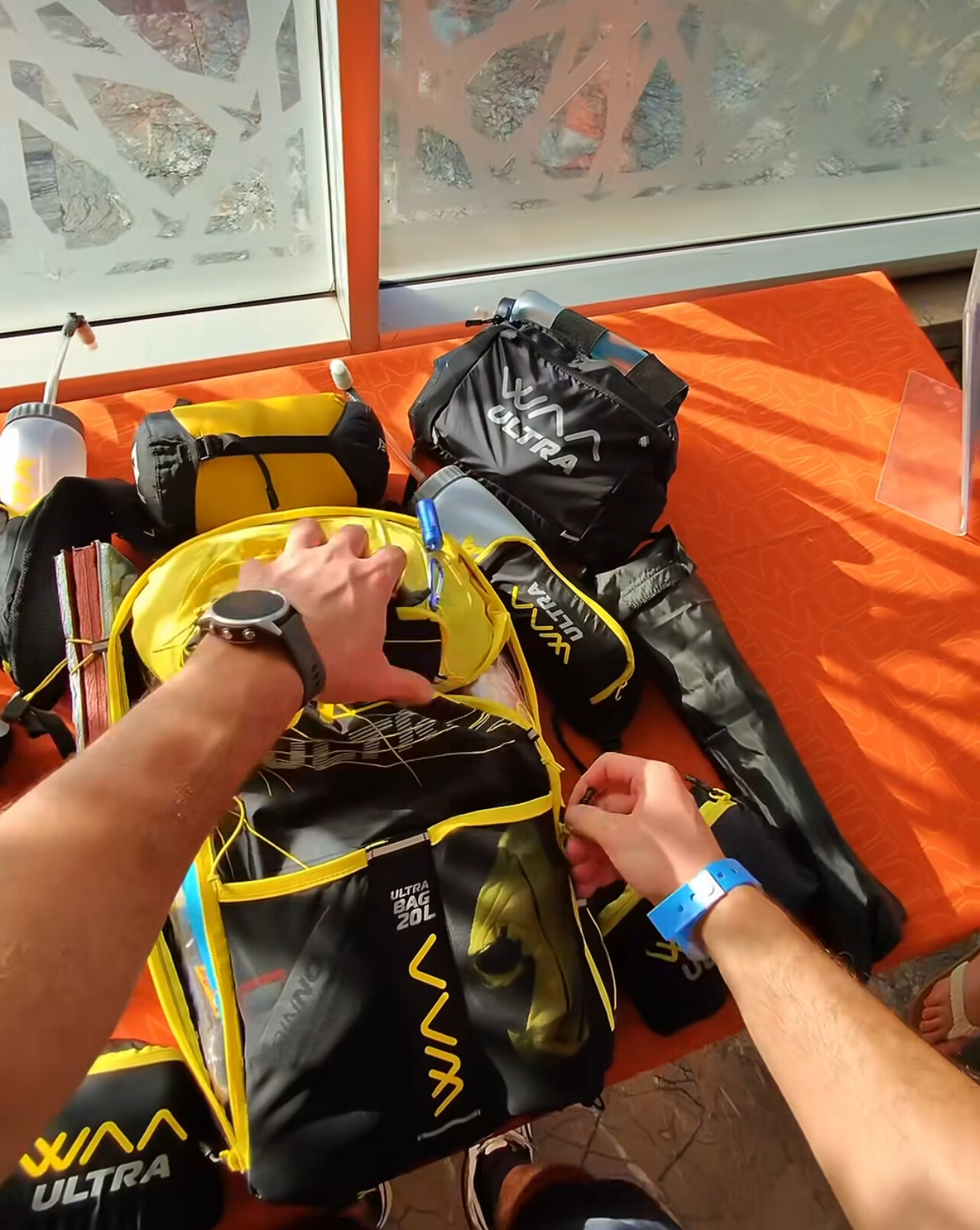
Competitors must be self-sufficient, carrying their own food, equipment, and personal belongings throughout the race. Water is rationed and provided at checkpoints, and communal Berber tents are set up at designated bivouac sites for overnight stays.

Training and Preparation – Building the Body and the Mind
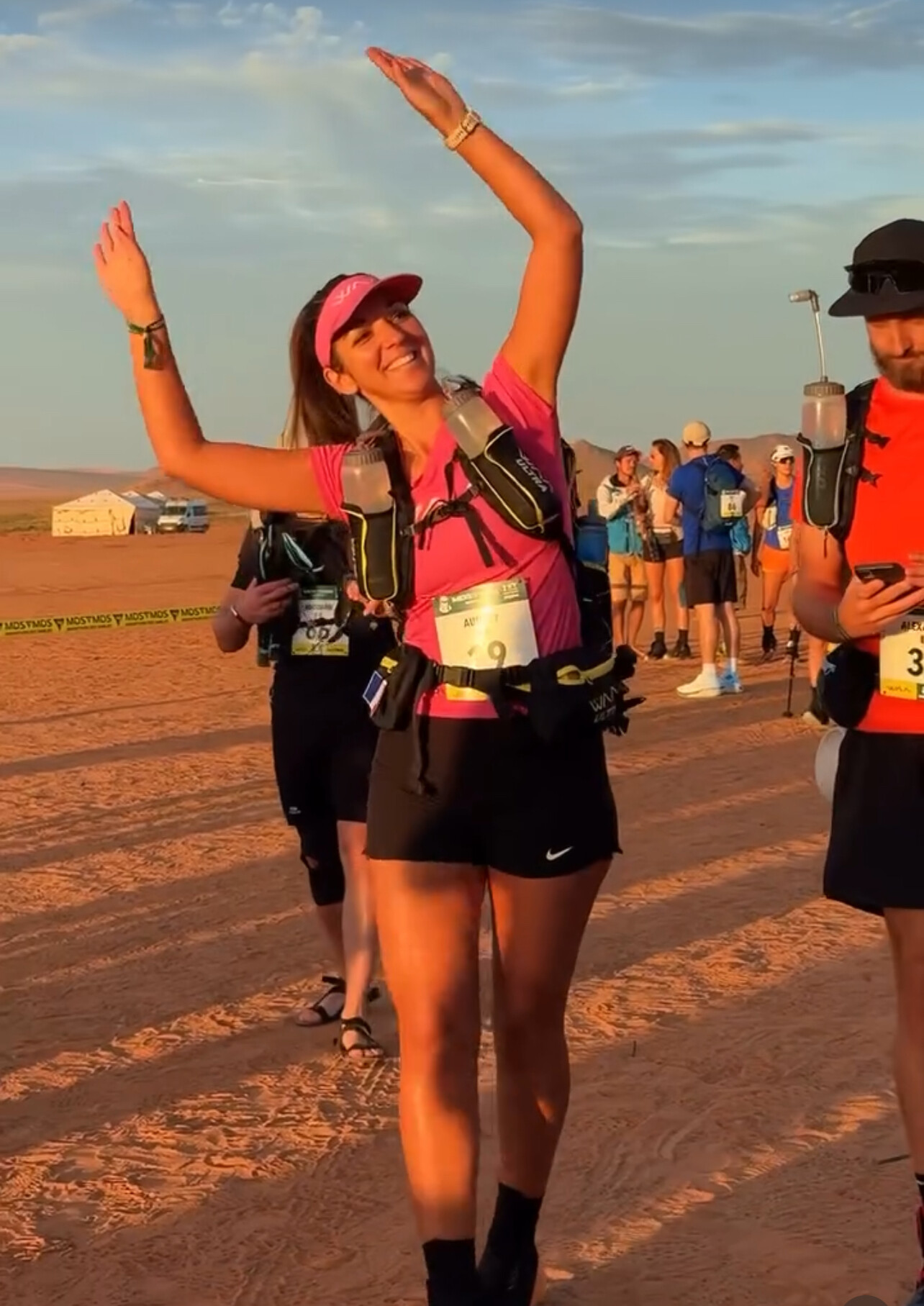
Preparation for the MdS requires a comprehensive approach:
• Endurance Training: Incorporating high-mileage runs, often back-to-back, to simulate race conditions.
• Strength Conditioning: Focusing on core and lower-body strength to handle the added weight of the backpack.
• Heat Acclimatization: Training in heated environments or during peak temperatures to adapt to desert conditions.
• Mental Fortitude: Developing strategies to cope with isolation, fatigue, and the psychological demands of the race.
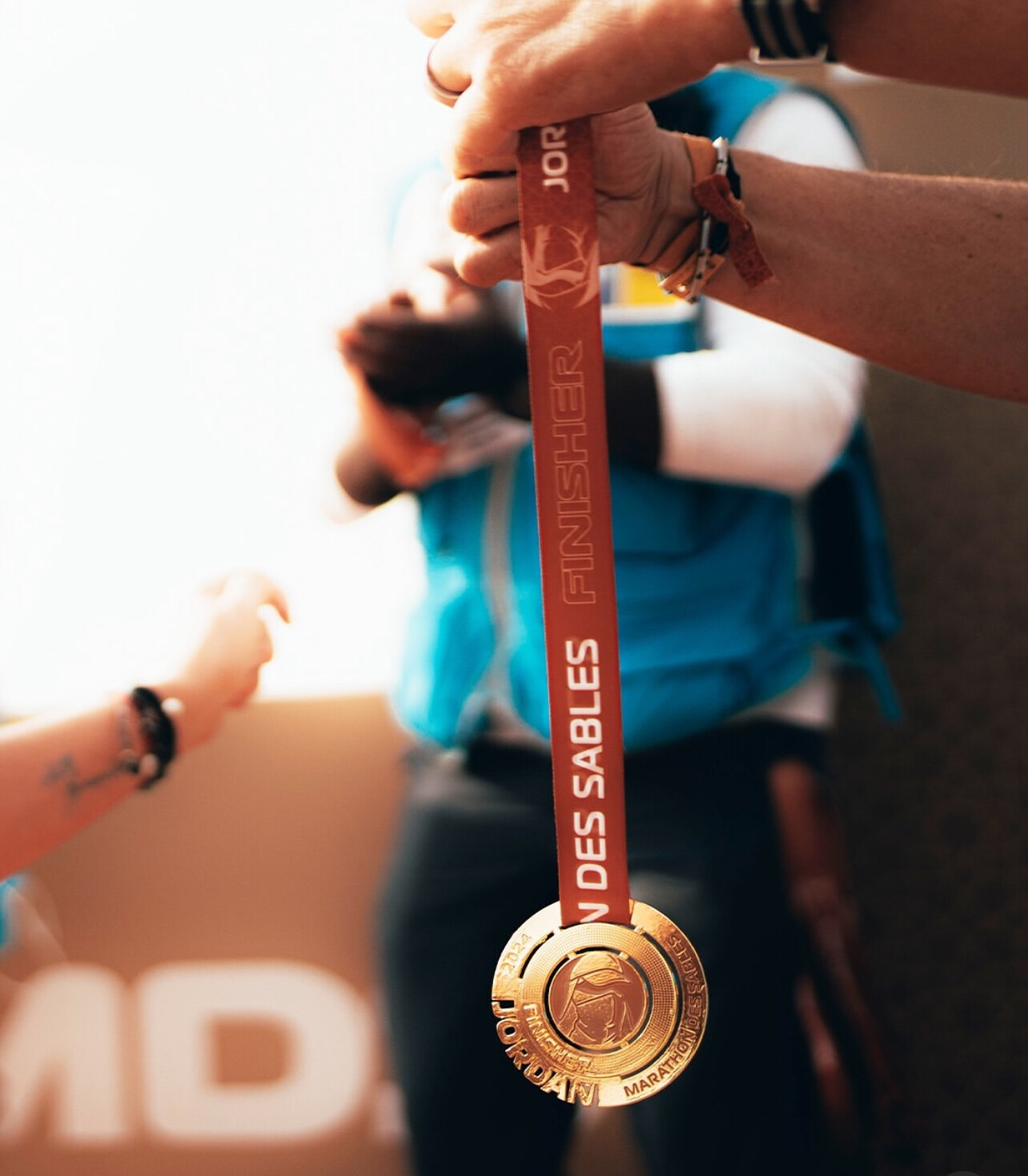
Many participants also engage in simulated self-sufficiency exercises, practicing with their race gear and nutrition plans to ensure efficiency and comfort during the event.
Gear and Packing Essentials – Living Out of a Backpack
Competitors are required to carry mandatory equipment, including:
• Sleeping bag
• Headlamp and spare batteries
• Compass and roadbook
• Emergency whistle and signaling mirror
• Minimum of 2,000 calories per day
• First-aid supplies, cooking equipment, and survival gear
Optional items often include gaiters to prevent sand ingress, specialized desert footwear, and comprehensive blister care kits. Balancing pack weight (typically between 6.5 to 15 kg) with essential supplies is crucial for performance and comfort.
The Daily Grind – Life in the Desert
Each day begins before dawn, with participants breaking camp and preparing for the day’s stage. The course presents a variety of challenges, from towering sand dunes to rocky jebels (mountains), under the relentless desert sun. Checkpoints provide rationed water and medical support, but the journey between them is a true test of endurance.
Evenings are spent at bivouac sites, where runners tend to injuries, share experiences, and rest under the starlit Sahara sky, fostering a unique sense of community and mutual support.
Famous Runners and Legendary Stories
The MdS has seen remarkable athletes:
• Rachid El Morabity: A Moroccan runner with multiple victories, renowned for his dominance in desert ultramarathons.
• Laurence Klein: A French athlete with several MdS wins, exemplifying endurance and resilience.
Inspirational tales abound, such as that of Mauro Prosperi, an Italian competitor who in 1994 survived nine days lost in the desert after a sandstorm veered him off course—drinking bat urine and eating lizards before eventually being rescued.
Why They Keep Coming Back
For many, one MdS is enough. For others, it becomes an annual pilgrimage. The appeal goes beyond running—it’s about testing your limits and discovering who you really are when stripped of all comfort.
The camaraderie, the solitude, the intensity, and the transformation draw people back. In a world filled with convenience, the MdS offers a rare crucible: a space where pain becomes purpose and exhaustion becomes transcendence.
by Boris Baron
Login to leave a comment
An amazing challenge. I am sure the feeling of crossing the finish line must be a feeling that would be hard to put in words. - Bob Anderson 4/4 3:11 am |
Marathon Des Sables
The Marathon des Sables is ranked by the Discovery Channel as the toughest footrace on earth. Seven days 250k Known simply as the MdS, the race is a gruelling multi-stage adventure through a formidable landscape in one of the world’s most inhospitable climates - the Sahara desert. The rules require you to be self-sufficient, to carry with you on your...
more...What It Takes to Go Beyond 26.2 - Taking on the Ultra
For many runners, crossing the marathon finish line is the pinnacle of endurance racing. But for an increasing number of athletes, 26.2 miles is just the beginning. The ultramarathon—defined as any race longer than a marathon—has surged in popularity, drawing runners eager to test their limits over 50K (31 miles), 100K (62 miles), 50 miles, 100 miles, and beyond.
But how do you make the leap from marathoner to ultramarathoner? What does it take to conquer these longer distances? Let’s break it down
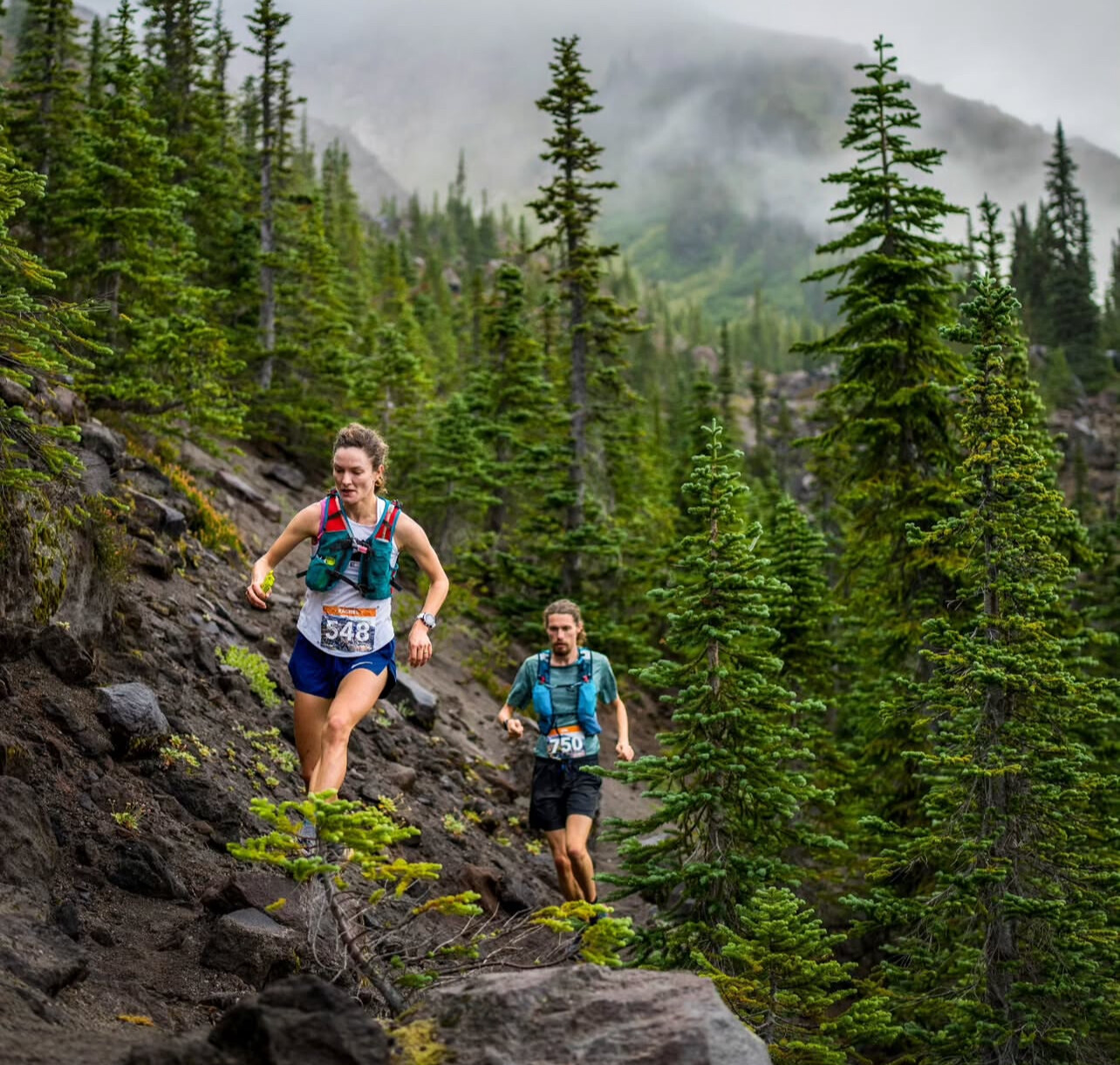
The Key Differences Between a Marathon and an Ultra
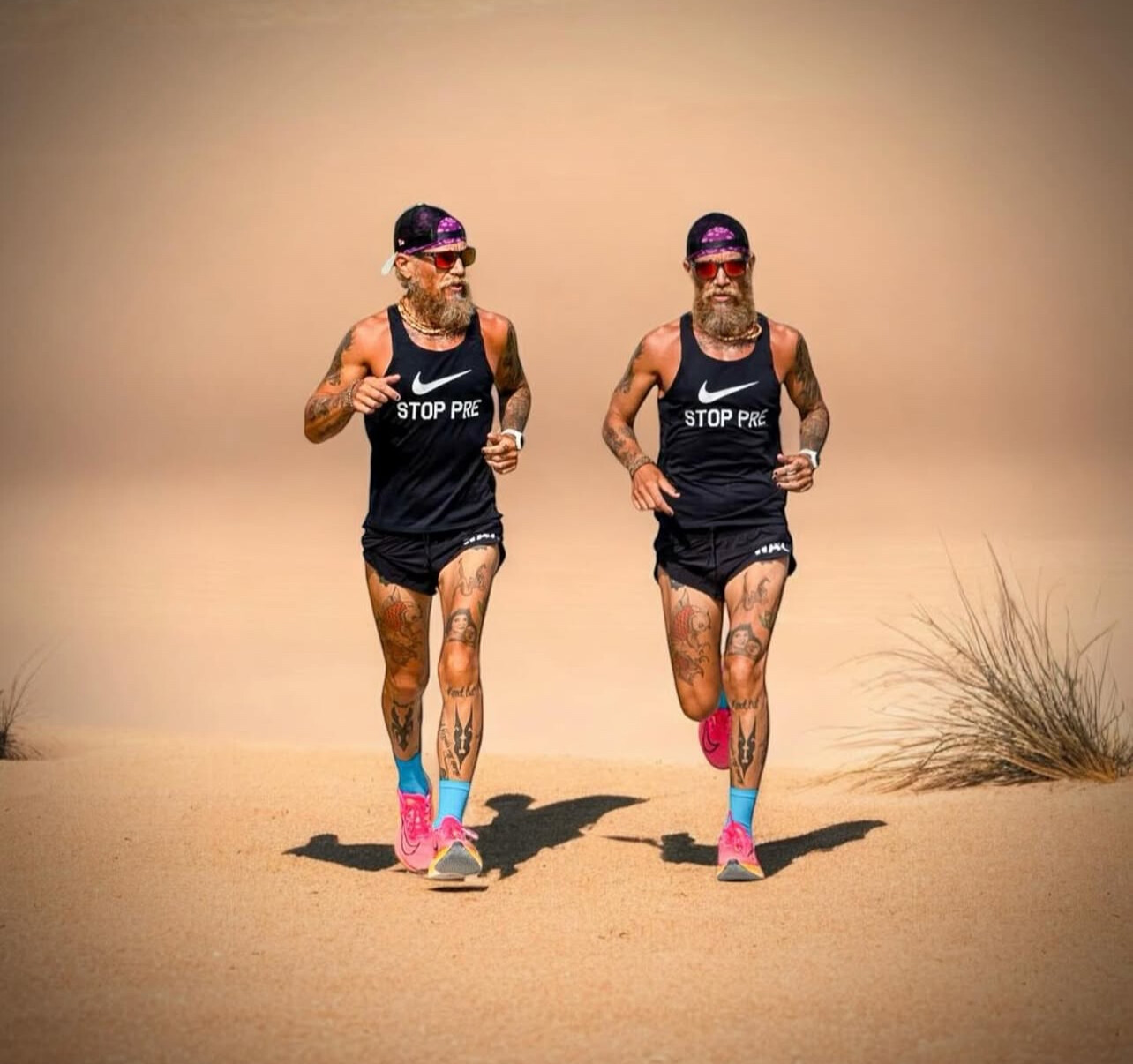
While both require strong endurance, an ultramarathon is a completely different beast from a road marathon. Here’s what sets them apart:
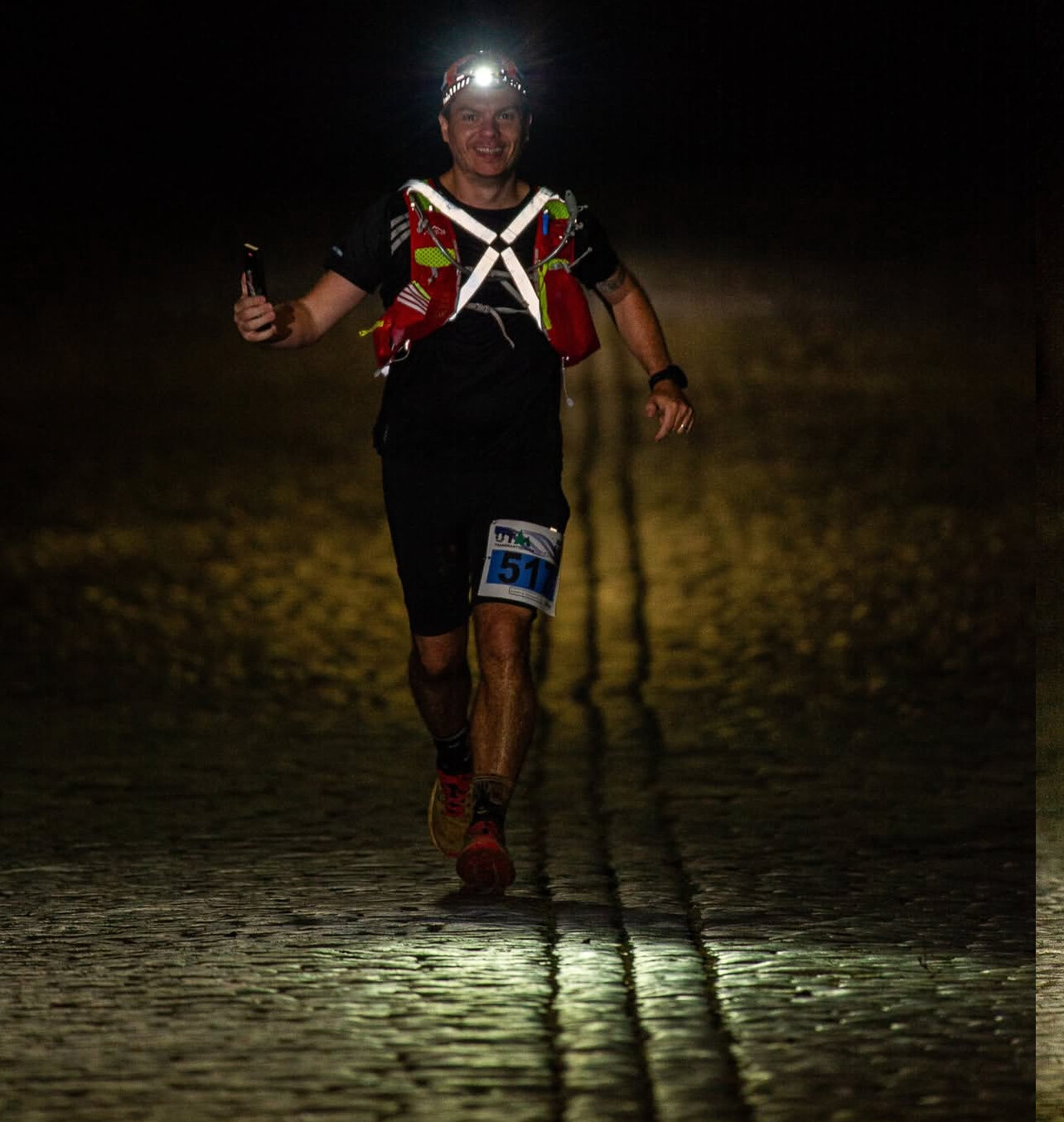
• Pacing Is Crucial – In a marathon, you can push your pace hard and still hold on. In an ultra, going out too fast can be a disaster. Starting conservatively is essential.
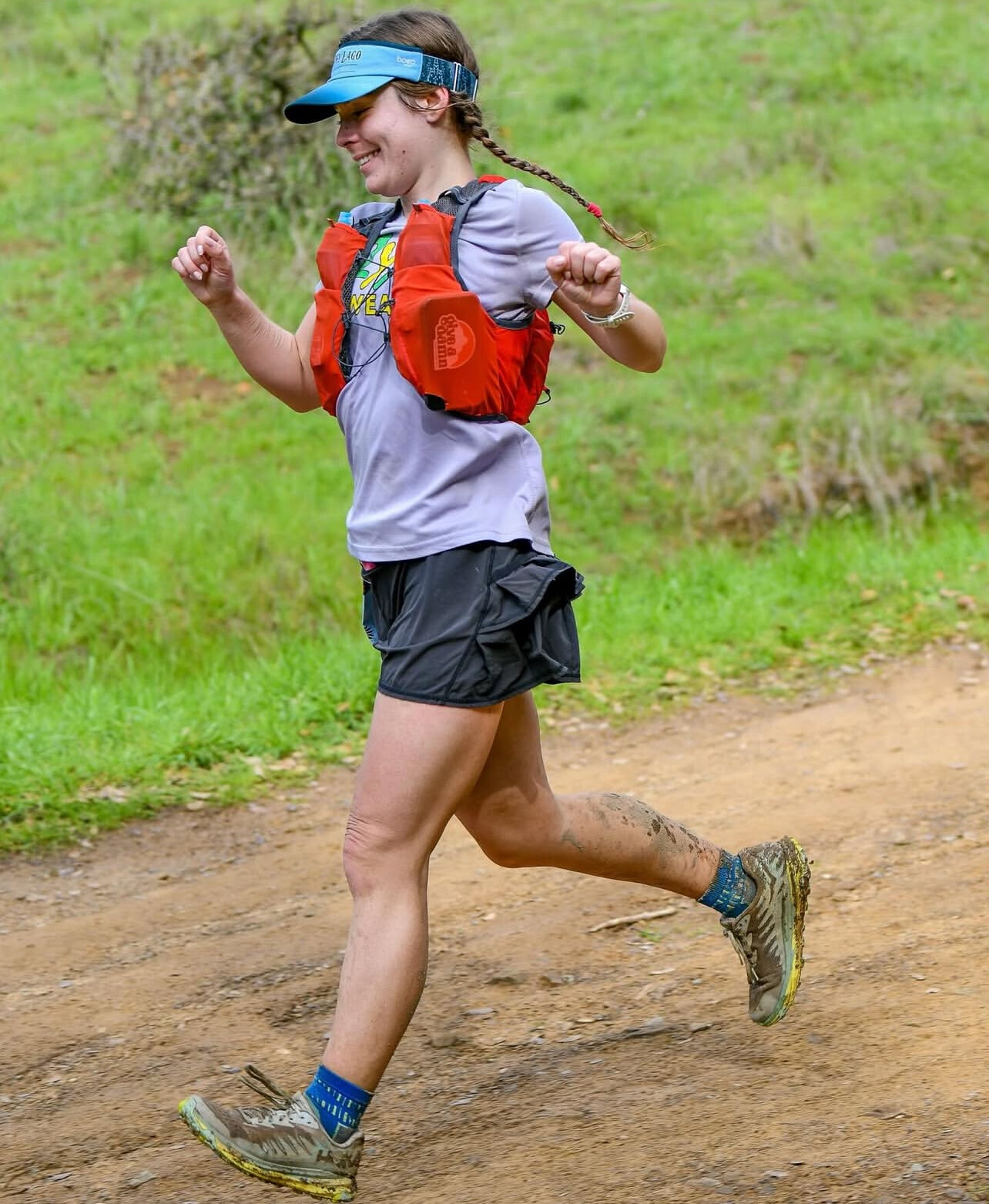
• Nutrition Matters More – Running beyond 26.2 miles means your body will need real food, not just energy gels. Successful ultrarunners eat a mix of carbohydrates, protein, and fatto sustain energy levels.
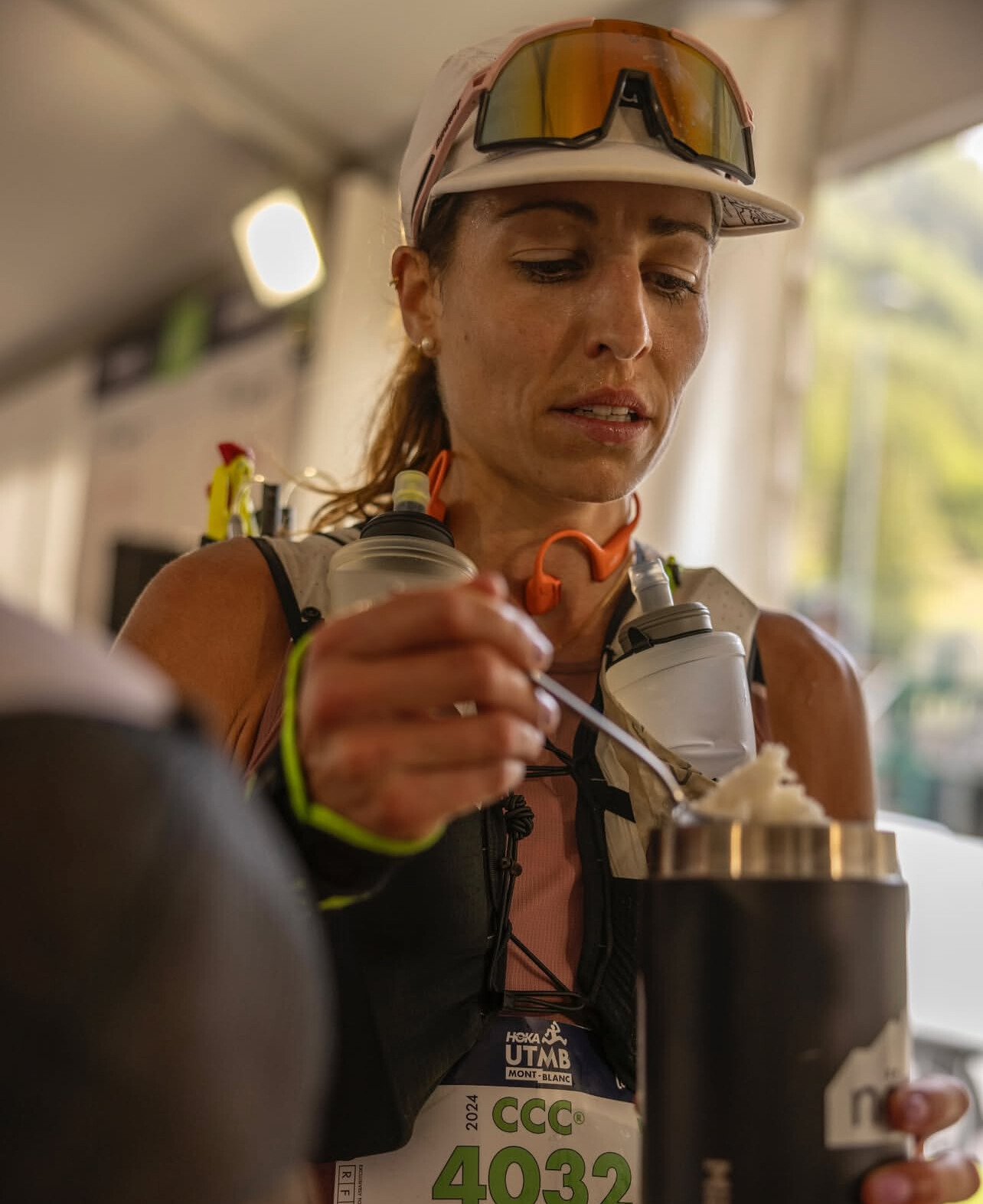
• Trail Running Dominates – Many ultras take place on rugged trails, requiring technical footwork, elevation gains, and varying terrain.
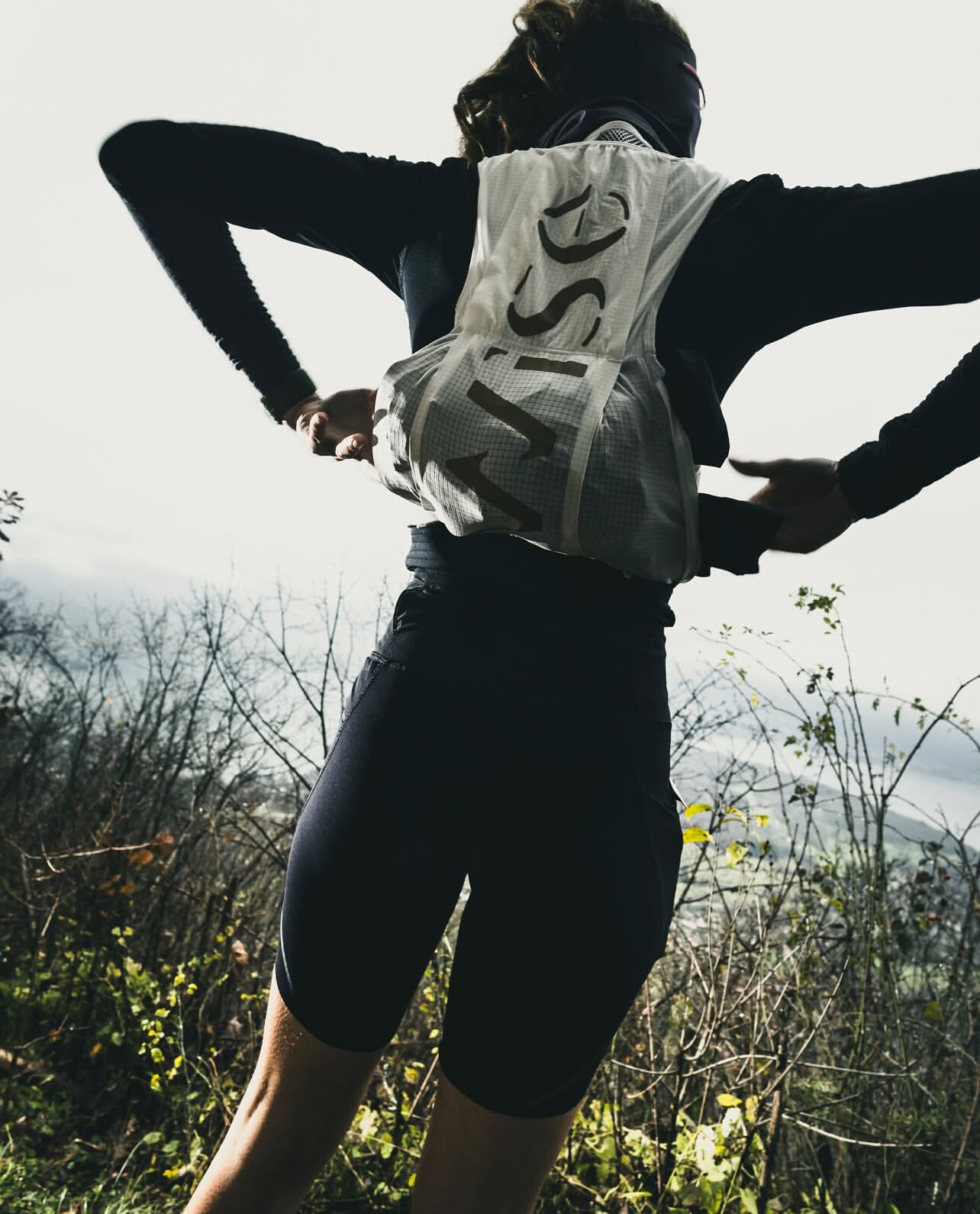
• Mental Fortitude is Everything – Ultramarathons test your mental resilience as much as your physical endurance. Learning to embrace discomfort and keep moving forward is key.
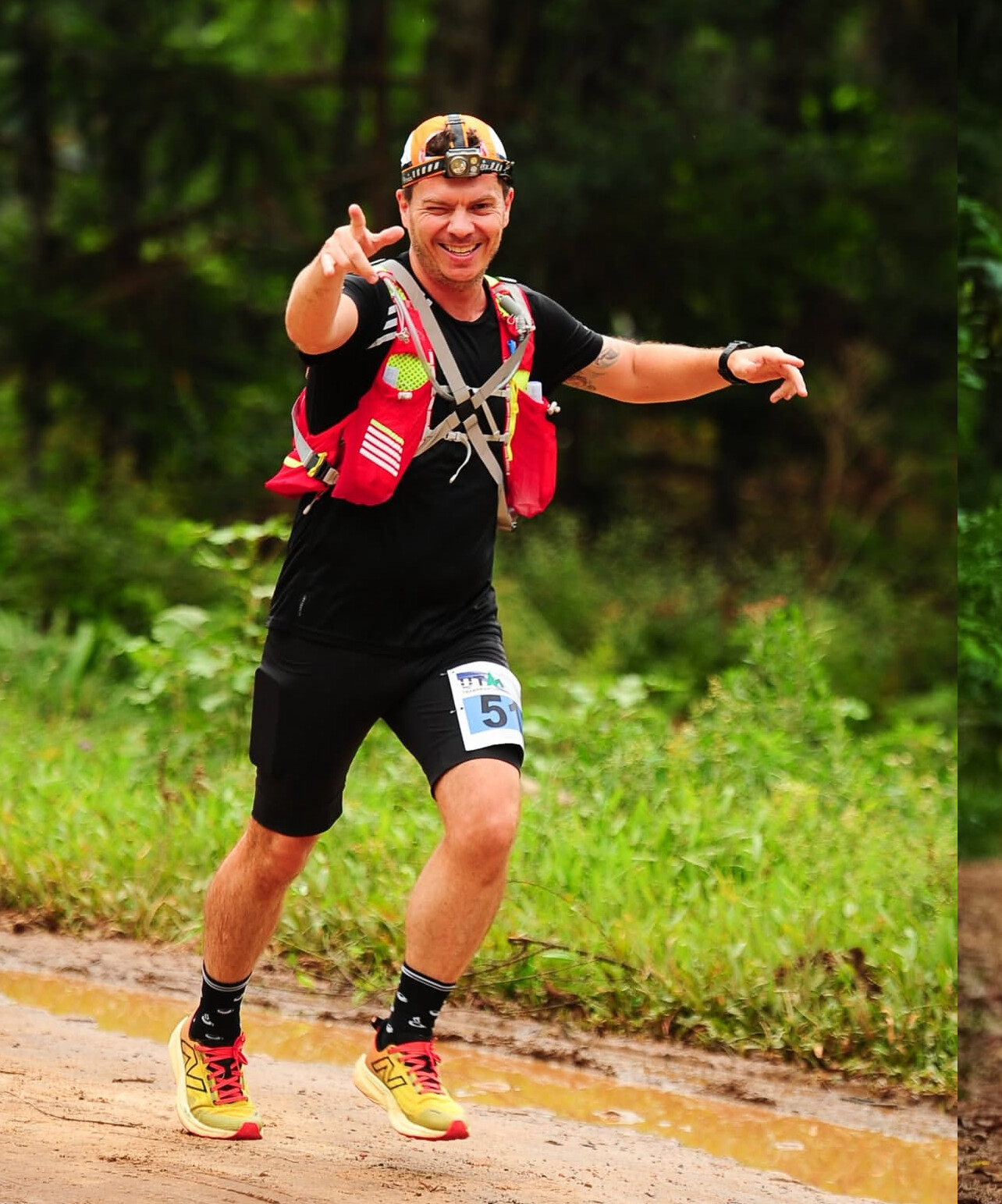
How to Train for an Ultramarathon
1. Build Your Base (Time on Feet > Speedwork)
Training for an ultra isn’t just about miles—it’s about spending long hours on your feet. Instead of focusing on speed, ultra training prioritizes slow, steady endurance.
• Increase Weekly Mileage Gradually – Aim for at least 50-70 miles per week for a 50K and 70-100 miles per week for a 100K or 100-miler.
• Back-to-Back Long Runs – Instead of one long run, many ultra plans include two long runs on consecutive days to simulate running on tired legs.
• Practice Hiking – Even elite ultrarunners hike the steep sections. Practicing power hiking helps conserve energy on climbs.
2. Strength Training & Mobility Work
Ultras put serious strain on your body. Strength training improves durability, while mobility work helps prevent injuries.
• Core Work – A strong core stabilizes you on technical trails.
• Leg Strength – Squats, lunges, and step-ups strengthen the quads, hamstrings, and calves.
• Ankle & Foot Mobility – Essential for navigating uneven terrain.
3. Master Race-Day Nutrition
Unlike marathons, where fueling is simpler, ultramarathon nutrition requires strategy.
• Eat Real Food – Ultras often include PB&J sandwiches, bananas, pretzels, and broth. Find what works for you in training.
• Stay Hydrated & Balance Electrolytes – Dehydration or electrolyte imbalances can end your race early.
• Fuel Frequently – Many ultrarunners eat every 30-45 minutes to avoid bonking.
4. Train for the Terrain
If your ultra is on technical trails, hills, or mountains, training in similar conditions is critical.
• Hill Repeats – Strengthen quads for long descents.
• Technical Trail Running – Practice on rocky or root-filled trails to improve footing.
• Night Running – Many ultras involve running in the dark, so get used to using a headlamp.
Mental Strategies for an Ultramarathon
Running an ultra is as much mental as physical. Even the fittest runners struggle if they aren’t mentally prepared.
• Break the Race Into Sections – Instead of focusing on the total distance, mentally divide the race into aid station segments.
• Have a Mantra – Simple phrases like “Relentless forward motion” or “One step at a time”can help during tough moments.
• Expect Lows—And Know They Pass – Every ultrarunner experiences physical and mental lows, but pushing through leads to new highs.
Choosing Your First Ultra
Not sure where to start? Here are three great entry points into ultramarathoning:
1. 50K Trail Race – A great intro, only 5 miles longer than a marathon but often on trails with varying terrain.
2. 50-Mile Race – A serious jump, requiring race-day nutrition and pacing mastery.
3. Timed Ultras (6-Hour or 12-Hour Races) – Rather than a set distance, these races challenge runners to cover as much distance as possible in a fixed time.
Should You Run an Ultra?
If you love endurance challenges, embrace the grind, and enjoy long hours on the trail, ultramarathoning might be your next big adventure. The transition from marathon to ultra isn’t just about running farther—it’s about running smarter, stronger, and with a mindset prepared for anything.
by Boris Baron
Login to leave a comment
Kilian Jornet is The Laid-Back Legend of the Mountains and Ultramarathons
Kilian Jornet is one of the most decorated endurance athletes in history, yet you wouldn’t know it from speaking with him. He carries his accolades with a shrug and a smile, displaying the kind of calm confidence that comes from years of pushing human limits at extreme altitudes and distances. Whether he’s setting records on towering peaks or dominating the world’s most grueling ultramarathons, Jornet approaches every challenge with an almost playful ease.
Breaking Records in the Mountains
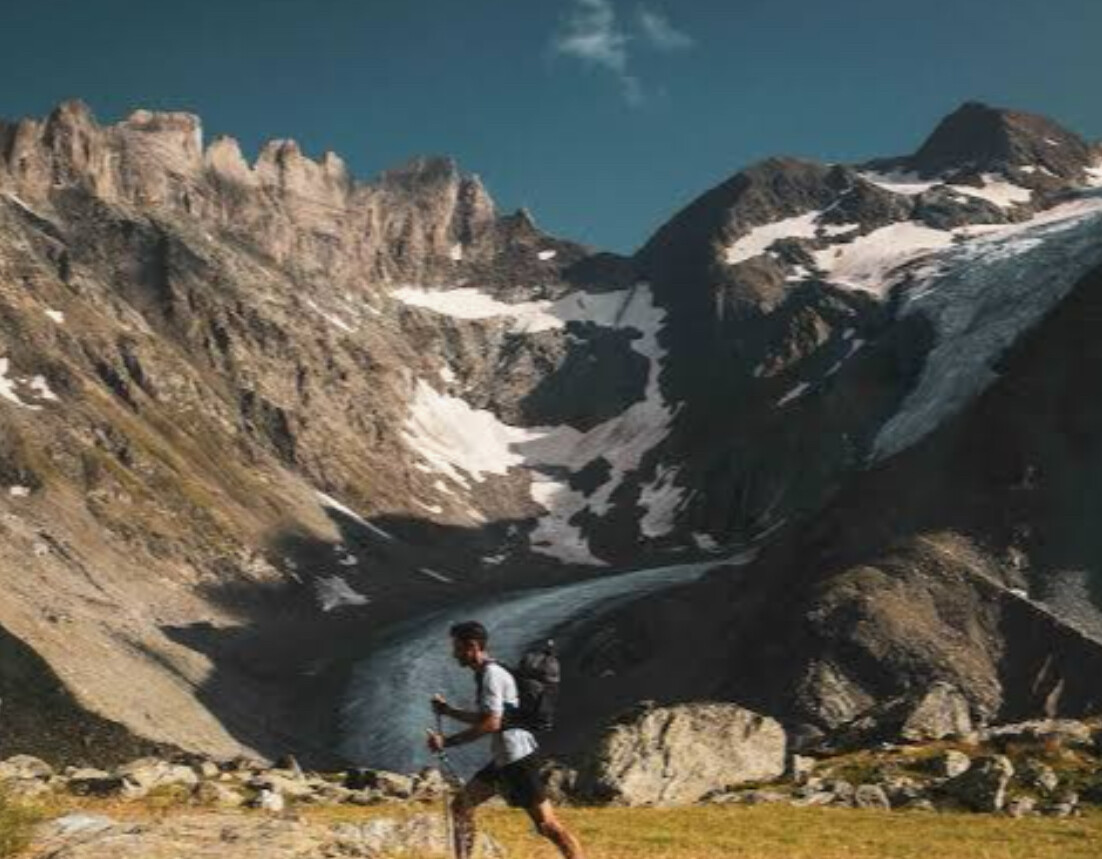
Jornet’s list of accomplishments reads like something out of a mountaineering legend’s biography. He holds the fastest known time (FKT) for ascent and descent of some of the world’s most iconic peaks, including Mont Blanc, the Matterhorn, and Denali. His 24-hour uphill skiing record—a staggering 23,864 meters (78,312 feet) of elevation gain—stands as a testament to his extraordinary endurance.
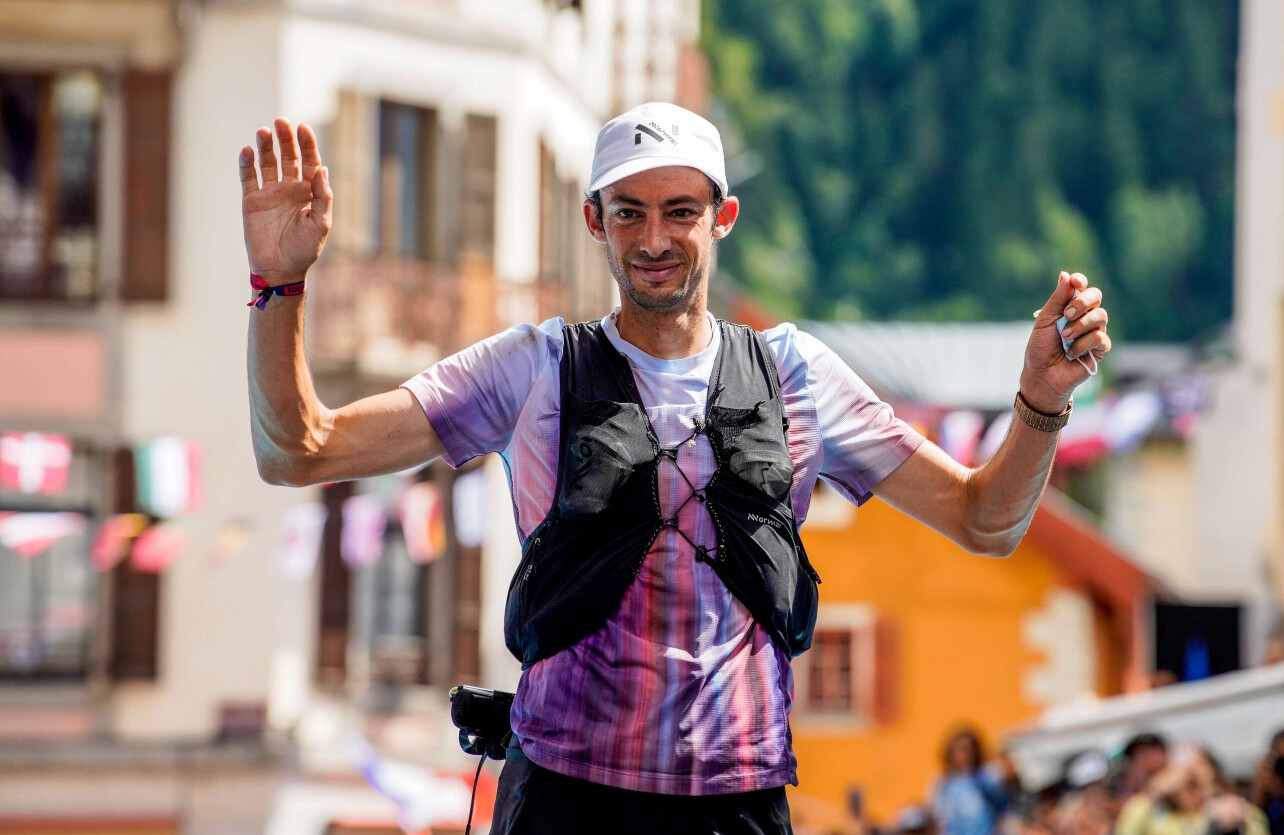
For Jornet, mountains aren’t just a competitive arena; they are home. Growing up in the Pyrenees, he was introduced to skiing and mountain running at an early age. By his teens, he was already an elite ski mountaineer, but his ambitions stretched far beyond the competition circuit. He set his sights on redefining speed and endurance in the world’s most rugged terrains.
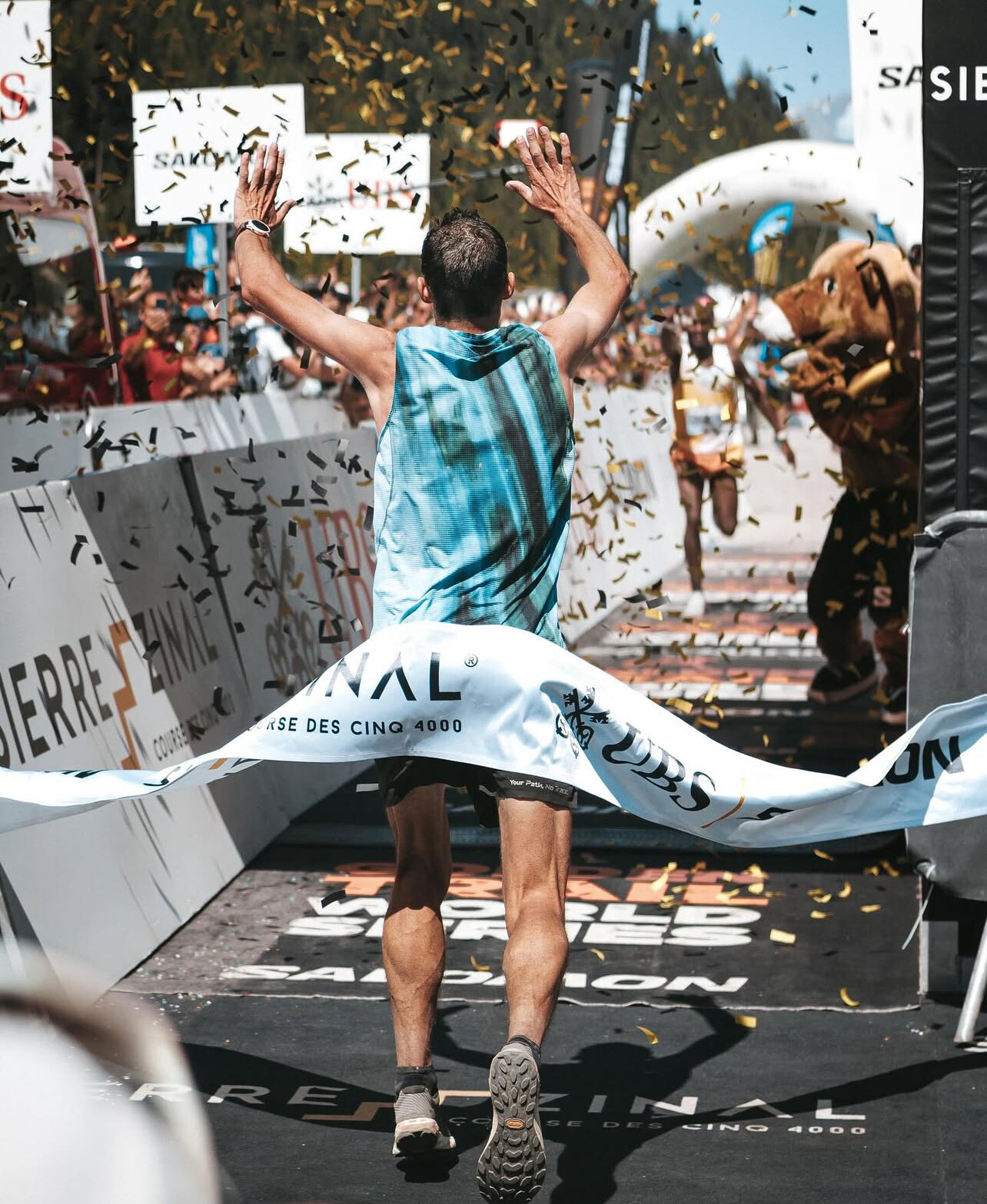
Dominating Ultramarathons
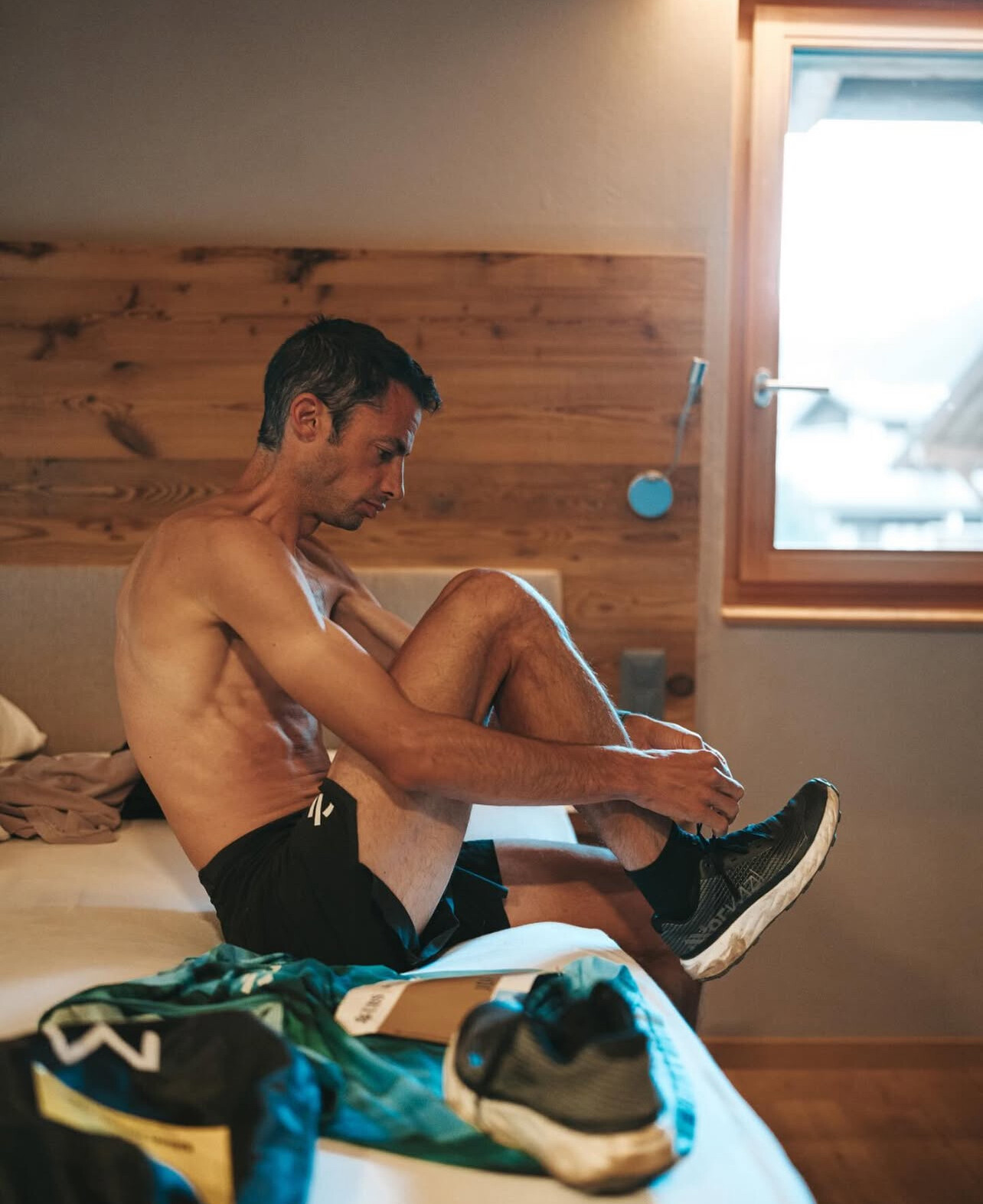
Beyond mountaineering, Jornet has excelled in ultramarathons, often obliterating world-class competition. His wins include victories at:

• Ultra-Trail du Mont-Blanc (UTMB) – Arguably the most prestigious ultramarathon in the world, where Jornet has claimed multiple titles.
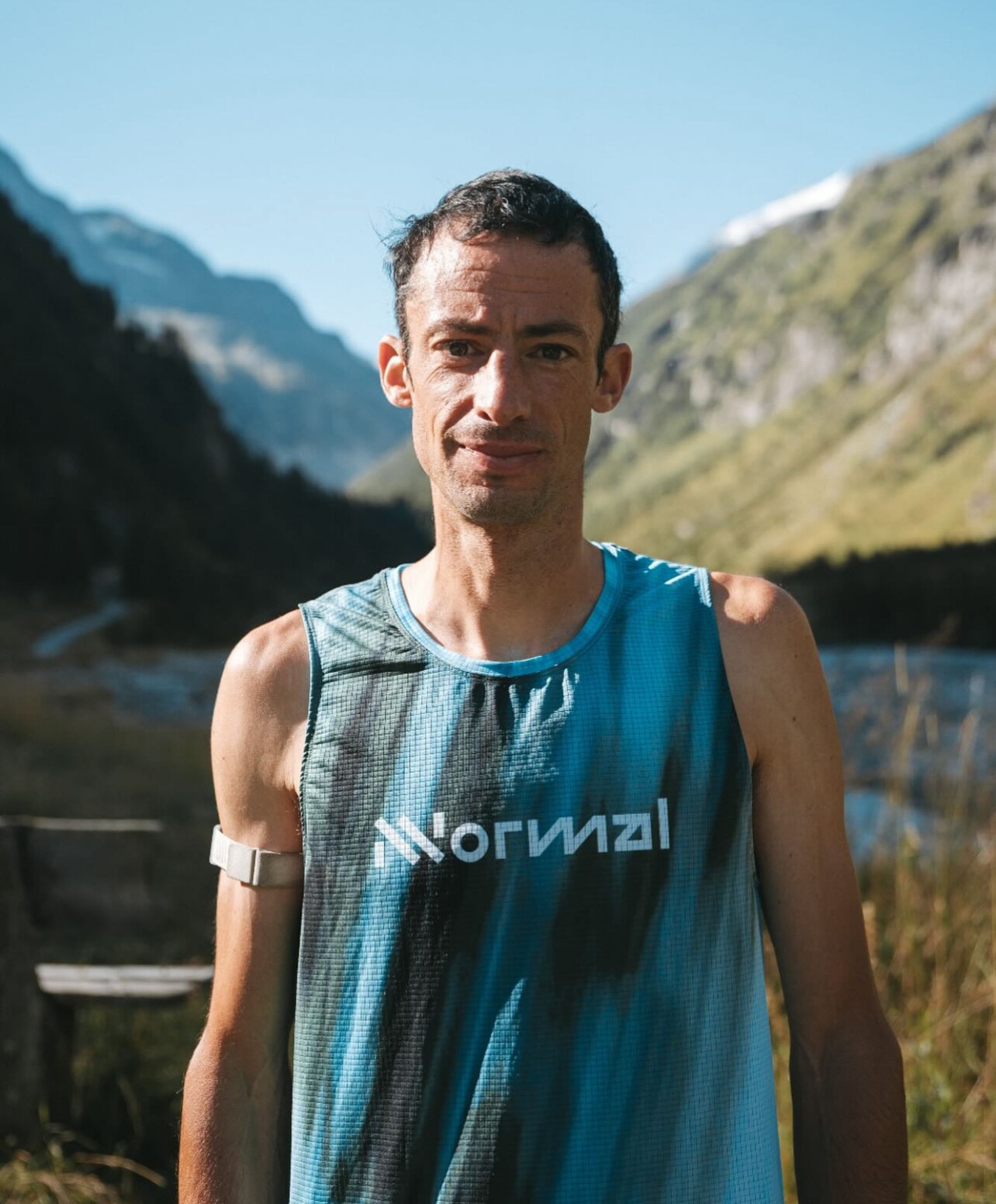
• Hardrock 100 – He’s won this brutally tough race in Colorado multiple times, including running it with a dislocated shoulder in 2017.

• Western States 100 – A race where his performance cemented his status among the world’s best ultrarunners.
• Zegama-Aizkorri Marathon – A mountain marathon in the Basque Country where he has thrilled fans with record-breaking runs.
Jornet’s dominance is not just about physical strength. His ability to read the mountains, understand his body, and adapt to extreme conditions gives him an almost supernatural edge.
The Mindset of a Champion
Despite his mind-blowing achievements, Jornet remains humble. When asked about his records, he often downplays them, focusing instead on the experience rather than the numbers. His approach to training is unconventional by traditional standards—he listens to his body, adapts his workouts based on how he feels, and prefers to spend as much time as possible in the mountains rather than following rigid training plans.
This laid-back mindset might seem at odds with his high-performance results, but it’s exactly what makes him great. He thrives in uncertainty, adapting in real time and trusting his instincts rather than fixating on data.
Looking Ahead
Jornet continues to push boundaries, not just in racing but in exploring human potential in extreme environments. His recent projects have included minimalist alpine expeditions and self-supported endurance challenges rather than traditional competitions. He is also an advocate for environmental sustainability, working to preserve the mountains he loves.
At 36 years old, Jornet is still redefining what’s possible in endurance sports. Whether he’s racing, breaking records, or simply enjoying a day in the mountains, he remains one of the most inspiring athletes the world has ever seen.
For those who dream of reaching their own endurance goals, there’s a lesson to be learned from Jornet: approach every challenge with passion, stay adaptable, and never lose sight of the joy that brought you to the sport in the first place.
by Boris Baron
Login to leave a comment
María Lorena Ramírez Running Beyond Boundaries
In a world obsessed with cutting-edge gear and high-tech performance, María Lorena Ramírez is rewriting the rules. She runs some of the toughest ultramarathons in the world, not in carbon-fiber shoes or compression gear, but in a traditional skirt and sandals made from old tires. At 30 years old, this indigenous Rarámuri athlete from Mexico’s Copper Canyon continues to defy expectations, proving that true endurance comes from within, not from what’s on your feet.
Winning on Her Own Terms
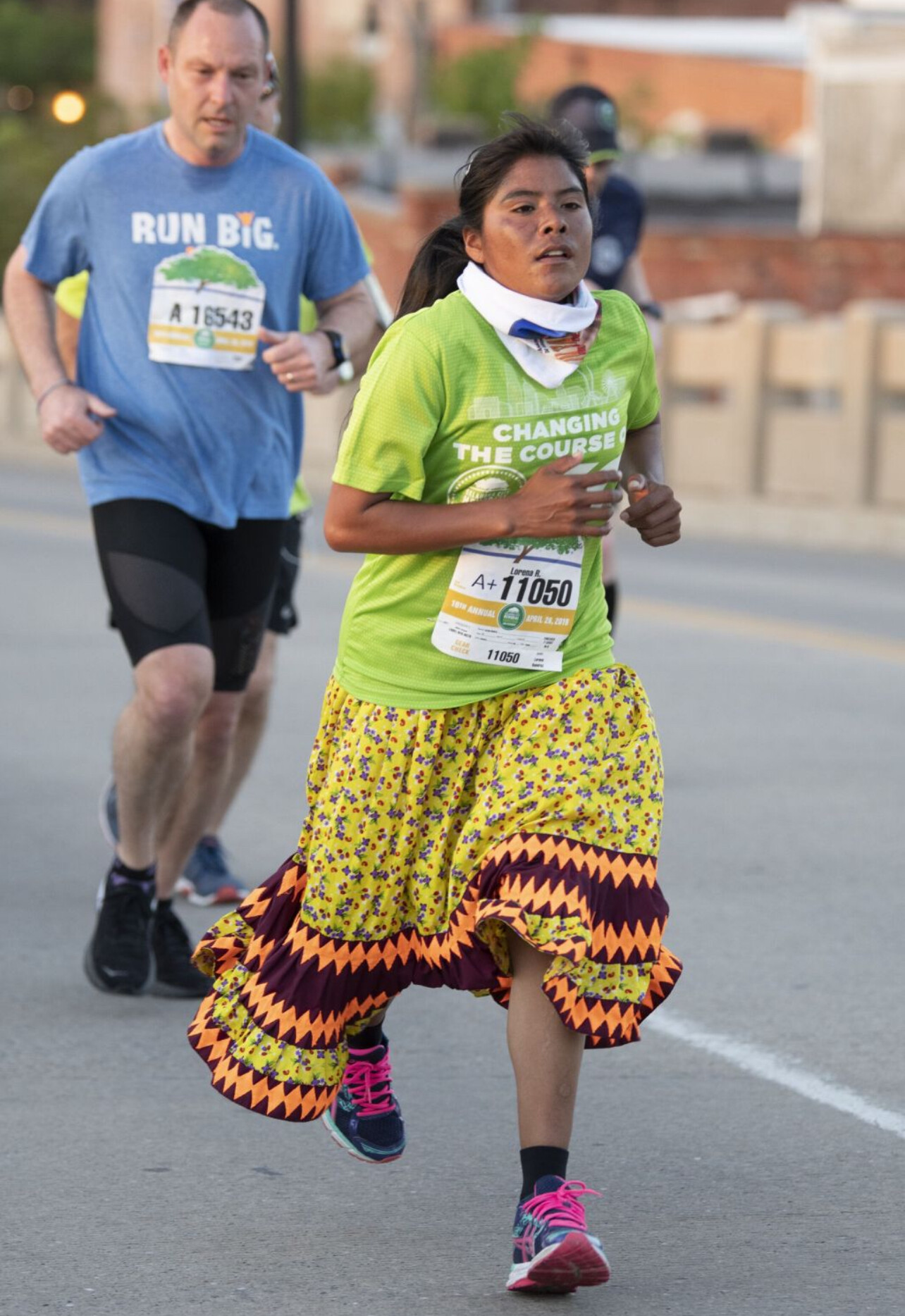
Ramírez first stunned the world in 2017 when she outran 500 competitors from 12 countries to win the UltraTrail Cerro Rojo, a brutal 50K mountain race in Mexico. She didn’t have a sports drink belt, a GPS watch, or cushioned running shoes—just a bottle of water, raw endurance, and the spirit of her ancestors.
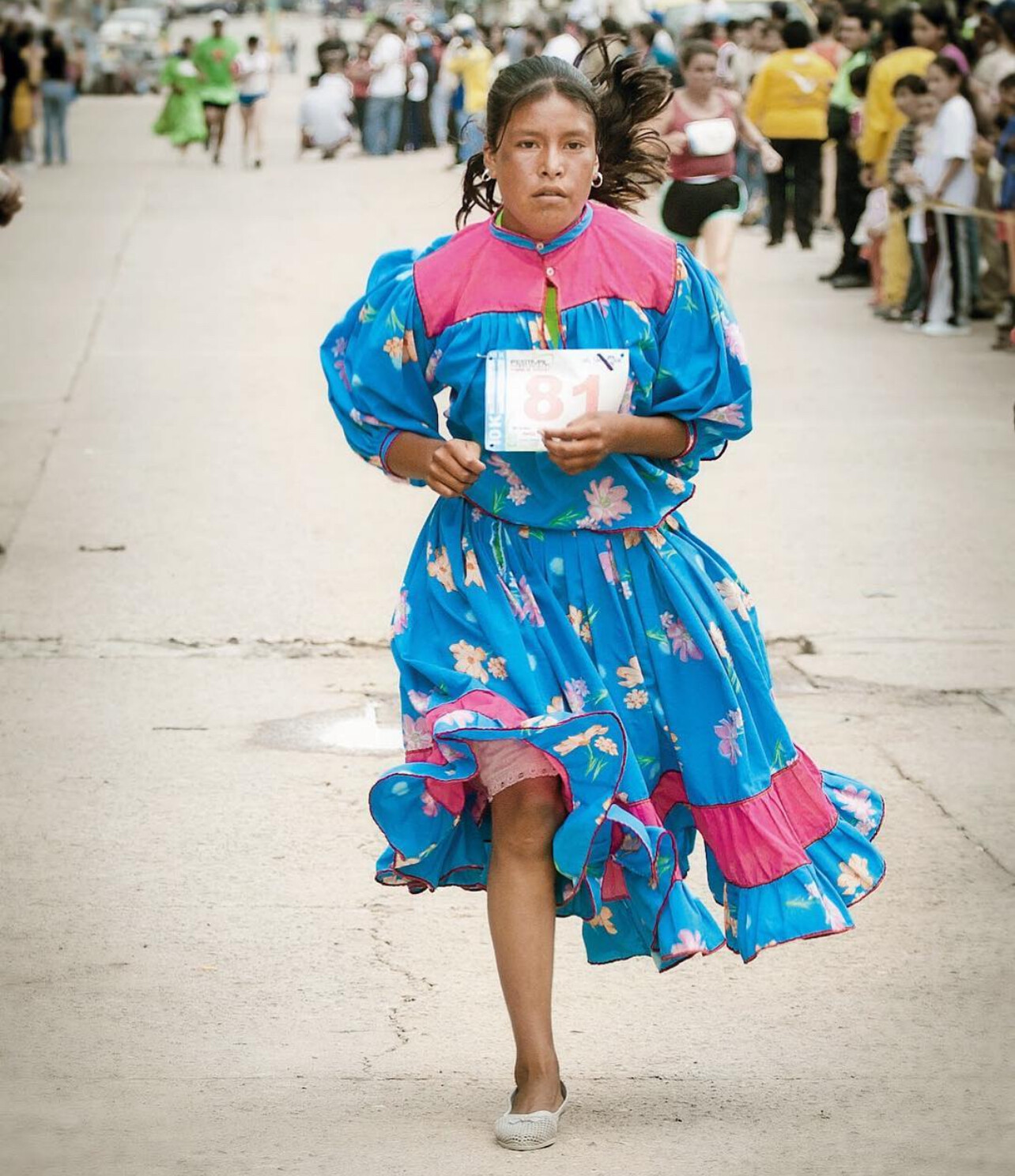
Her success didn’t stop there. Later that year, she competed in the 102K Cajamar Tenerife Bluetrailin Spain, one of the most grueling high-altitude races in Europe. Despite going up against seasoned ultrarunners with professional coaches and sponsorships, Ramírez held her own, reinforcing her status as one of the world’s most remarkable endurance athletes.
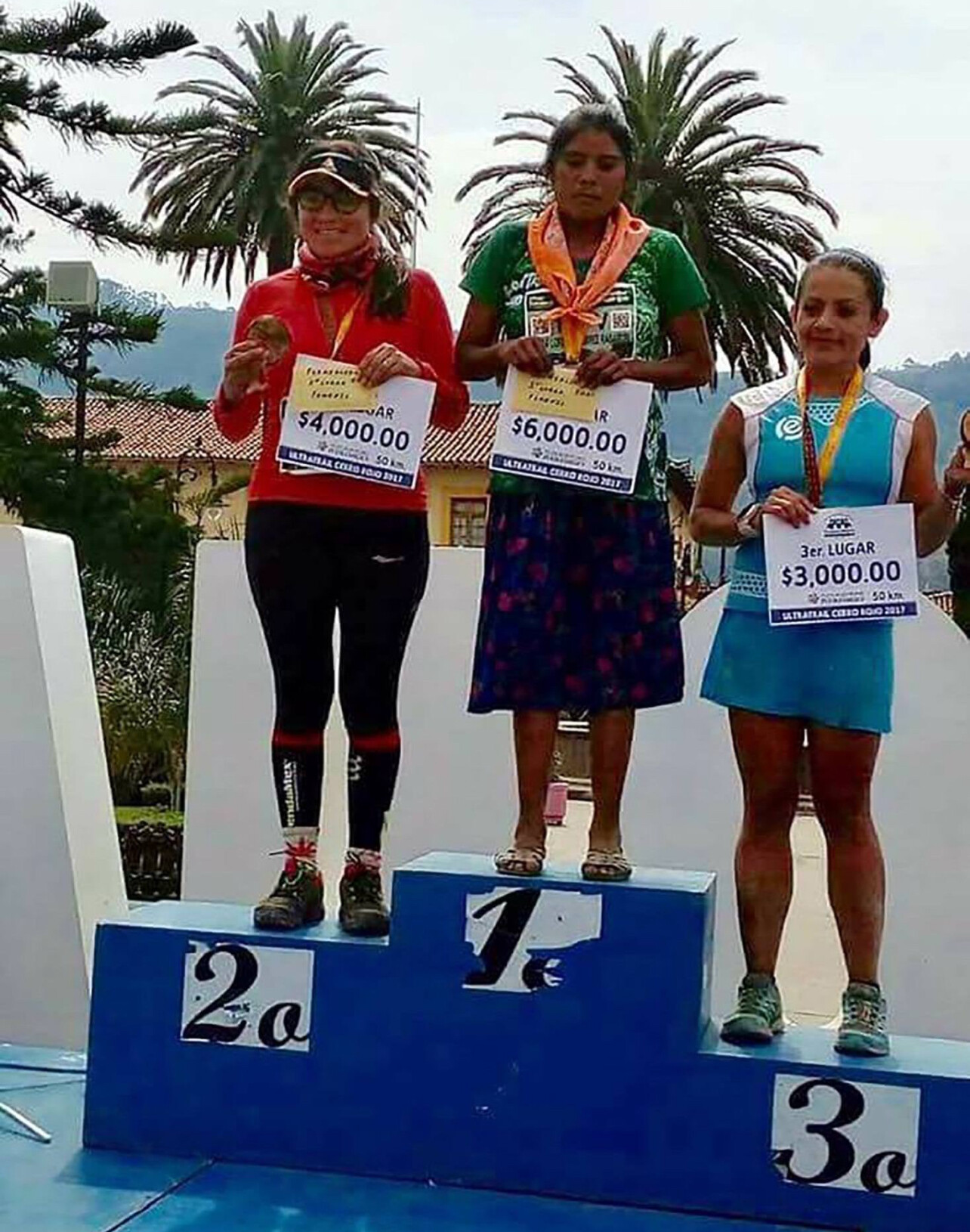
In 2025, she continued her dominance, finishing the Hong Kong Ultramarathon, a 100-kilometer race where she once again ran in her signature traditional attire and huarache sandals.

Training Through Life, Not Workouts
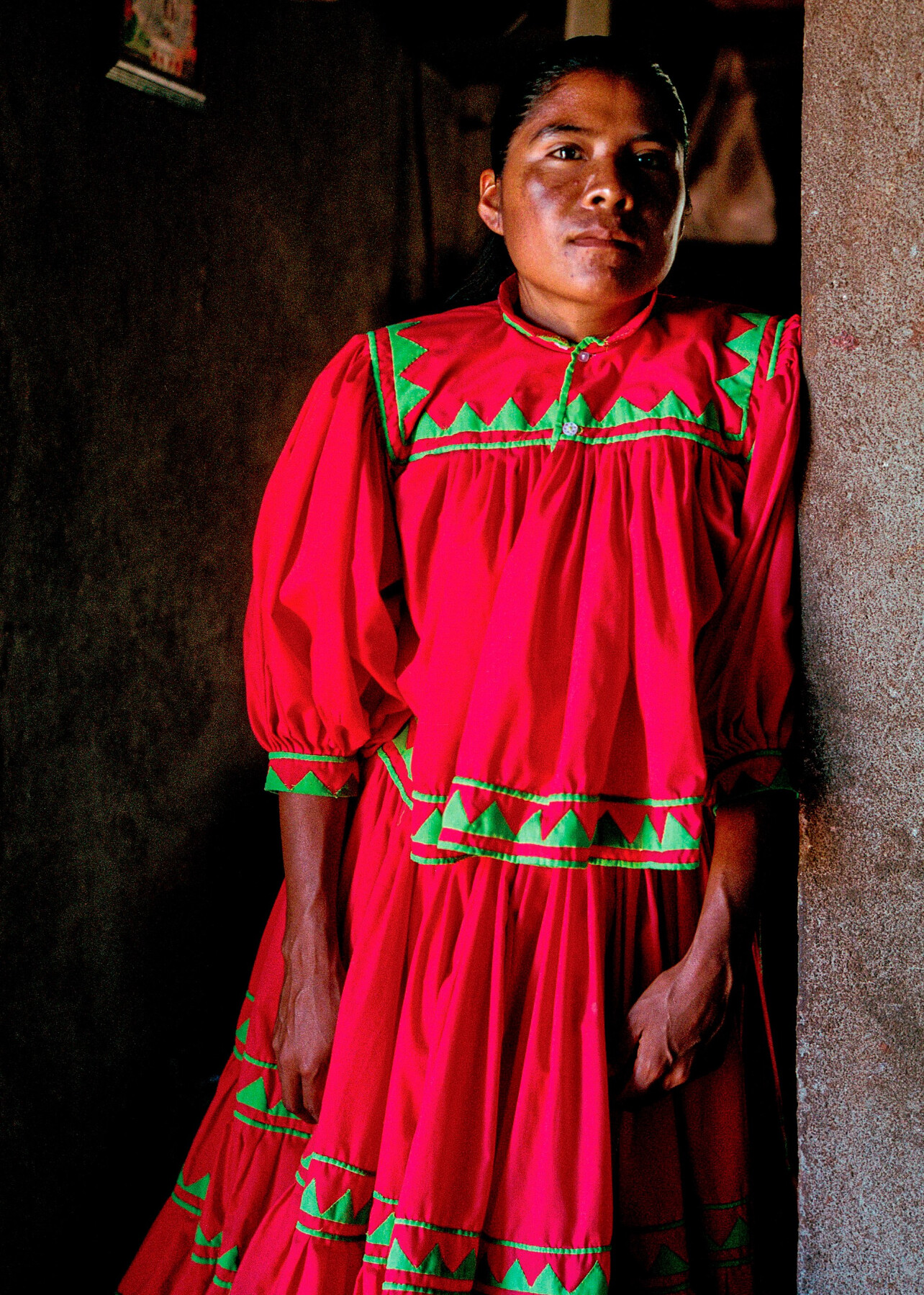
Unlike most elite runners, Ramírez doesn’t follow structured training plans. Her daily life is her training.
She spends her days in the mountains of Chihuahua, running 10–15 kilometers as she herds goats and cattle across steep, rocky terrain. Carrying water, climbing canyons, and trekking for hours are just part of her routine—without even realizing it, she has been building the stamina and strength of a world-class ultramarathoner her entire life.
For the Rarámuri (also known as Tarahumara) people, running isn’t just sport—it’s a way of life. Their name means “those who run fast,” and for centuries, they have run long distances for survival, hunting, and spiritual ceremonies. María Lorena Ramírez is simply continuing a tradition passed down through generations.
Rejecting Modern Running Shoes
Despite international fame, Ramírez refuses to abandon her roots.
When offered modern running shoes, she turned them down, saying:
“The people wearing them were always behind me.”
She has tried sneakers but prefers her handmade huarache sandals because they feel natural and keep her grounded. While others rely on energy-return soles and high-tech support, Ramírez relies on instinct, balance, and the resilience of her people.
A Champion on Her Own Path
María Lorena Ramírez is a reminder that greatness doesn’t come from expensive gear or specialized training—it comes from heart, resilience, and an unbreakable connection to one’s heritage.
She doesn’t run for fame or fortune—she runs because it’s part of who she is. And in doing so, she has redefined what it means to be a runner.
Her story is a testament to the power of the human spirit—a force stronger than any shoe, training program, or sponsorship. Sometimes, the purest strength comes from within—from those who trust their fire, run their own race, and, like Ramírez, leave everyone else in their dust.
Her journey is more than just running—it’s a movement that proves endurance is built on tradition, determination, and the will to keep moving forward.
by Boris Baron
Login to leave a comment
Estefanía Unzu Sets New Spanish 100km Record in Canberra
Just under three weeks after completing the World Marathon Challenge—running seven marathons on seven continents in seven days—Spain’s Estefanía Unzu has shattered the national women’s 100km record at the Australian 100km Championship in Canberra.
On February 22, Unzu, a 39-year-old mother of eight, finished the race in 7 hours, 47 minutes, and 46 seconds. She was the first female finisher and placed second overall, just behind men’s champion Dominic Bosher, who completed the course in 7 hours, 45 minutes, and 30 seconds.
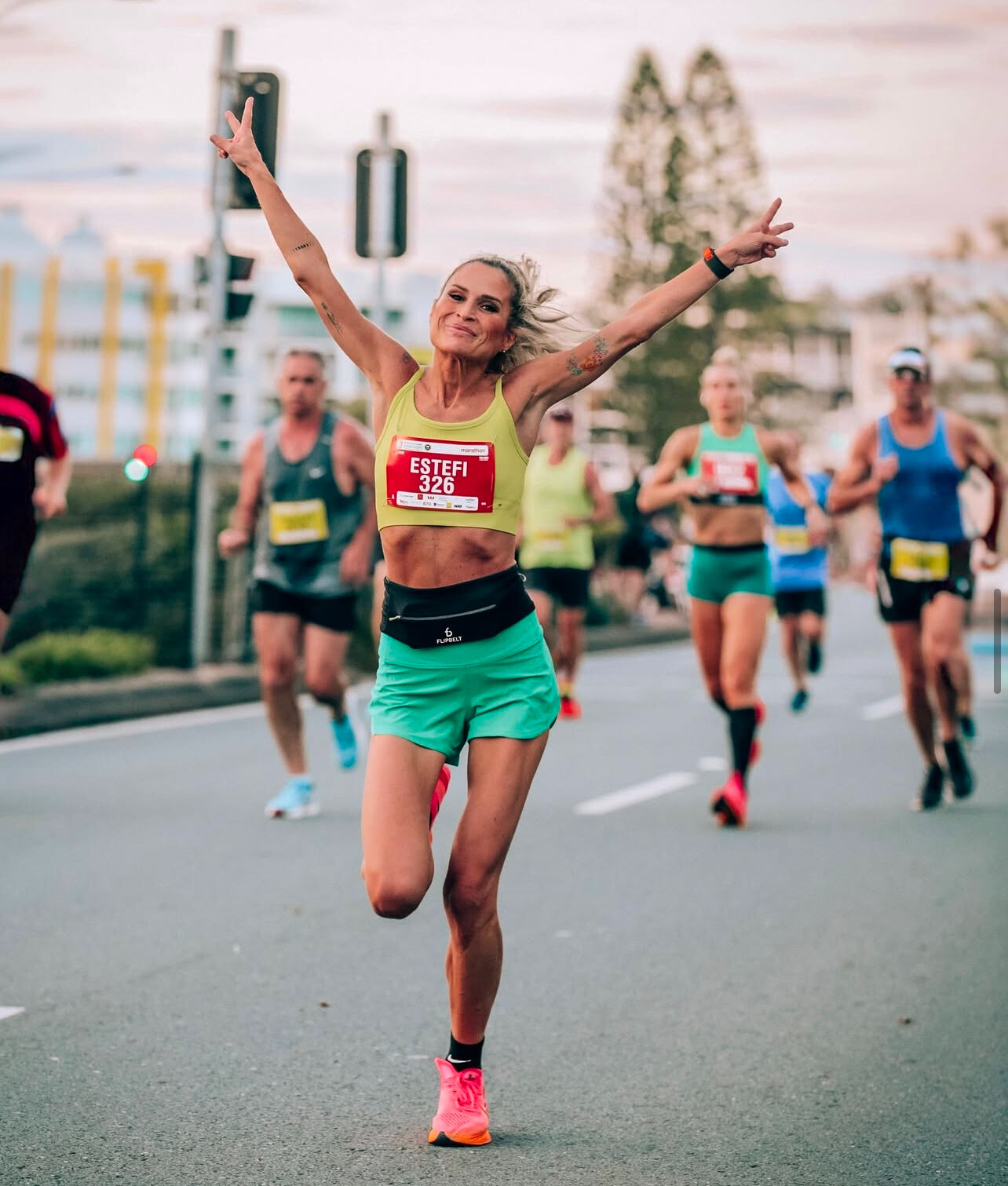
This performance broke the previous Spanish women’s 100km record of 7 hours, 52 minutes, and 21 seconds, set by Mireia Sosa in 2023. Overwhelmed with emotion, Unzu shared on social media, “I want to cry. My name will forever be a part of Spanish athletics history.”

Unzu’s achievement is particularly remarkable given her recent participation in the World Marathon Challenge, where she ran seven marathons across seven continents in one week. While many athletes require extended recovery periods after such endeavors, Unzu demonstrated exceptional resilience by promptly setting her sights on the 100km ultramarathon.
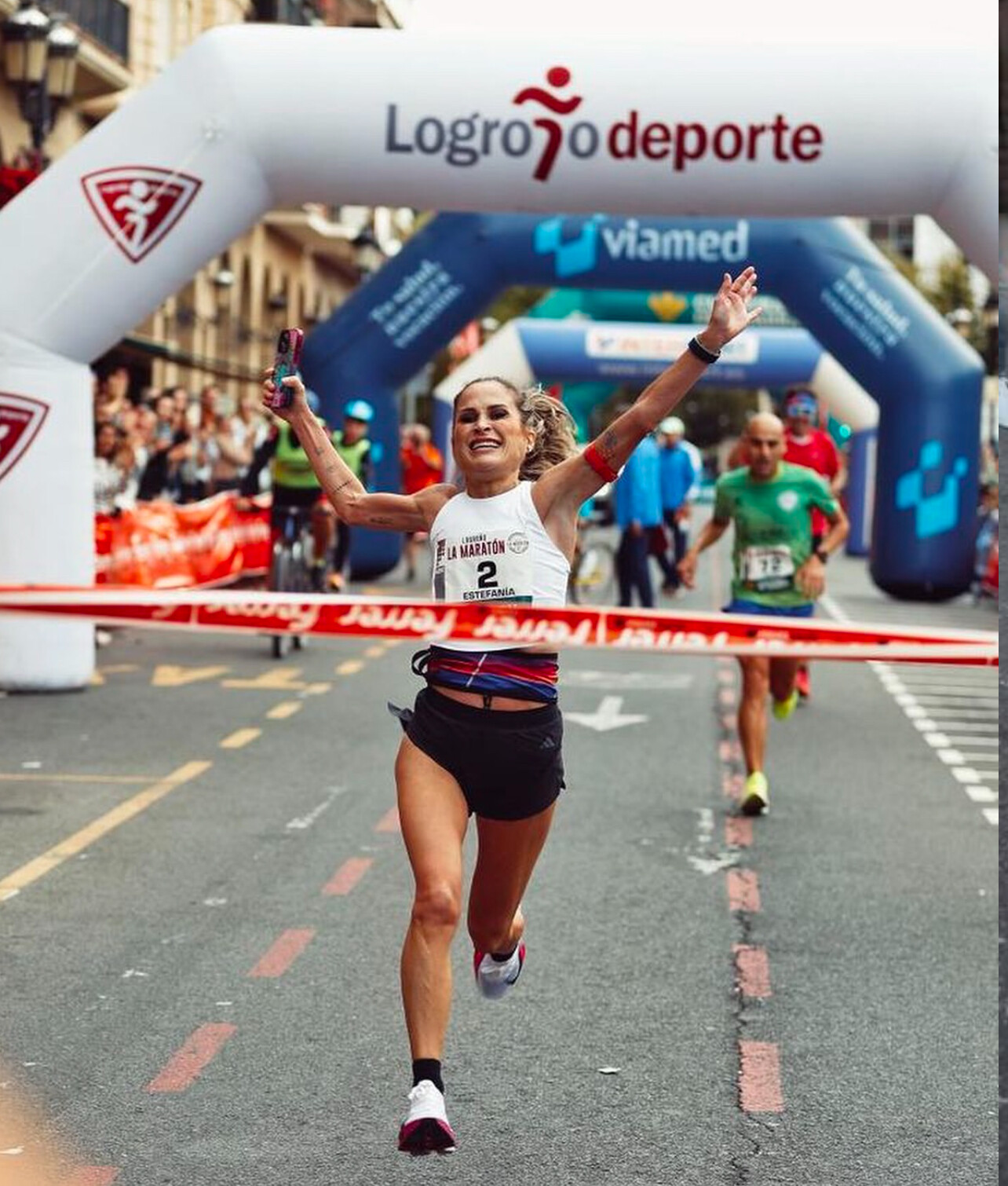
Known as “Verdeliss” on social media, Unzu has a substantial following, with nearly 1.5 million Instagram followers and over 2 million YouTube subscribers. Beyond her athletic pursuits, she is the founder and CEO of the cosmetics brand Green Cornerss and gained public attention after appearing on the sixth season of the Bulgarian reality show VIP Brother in 2014.
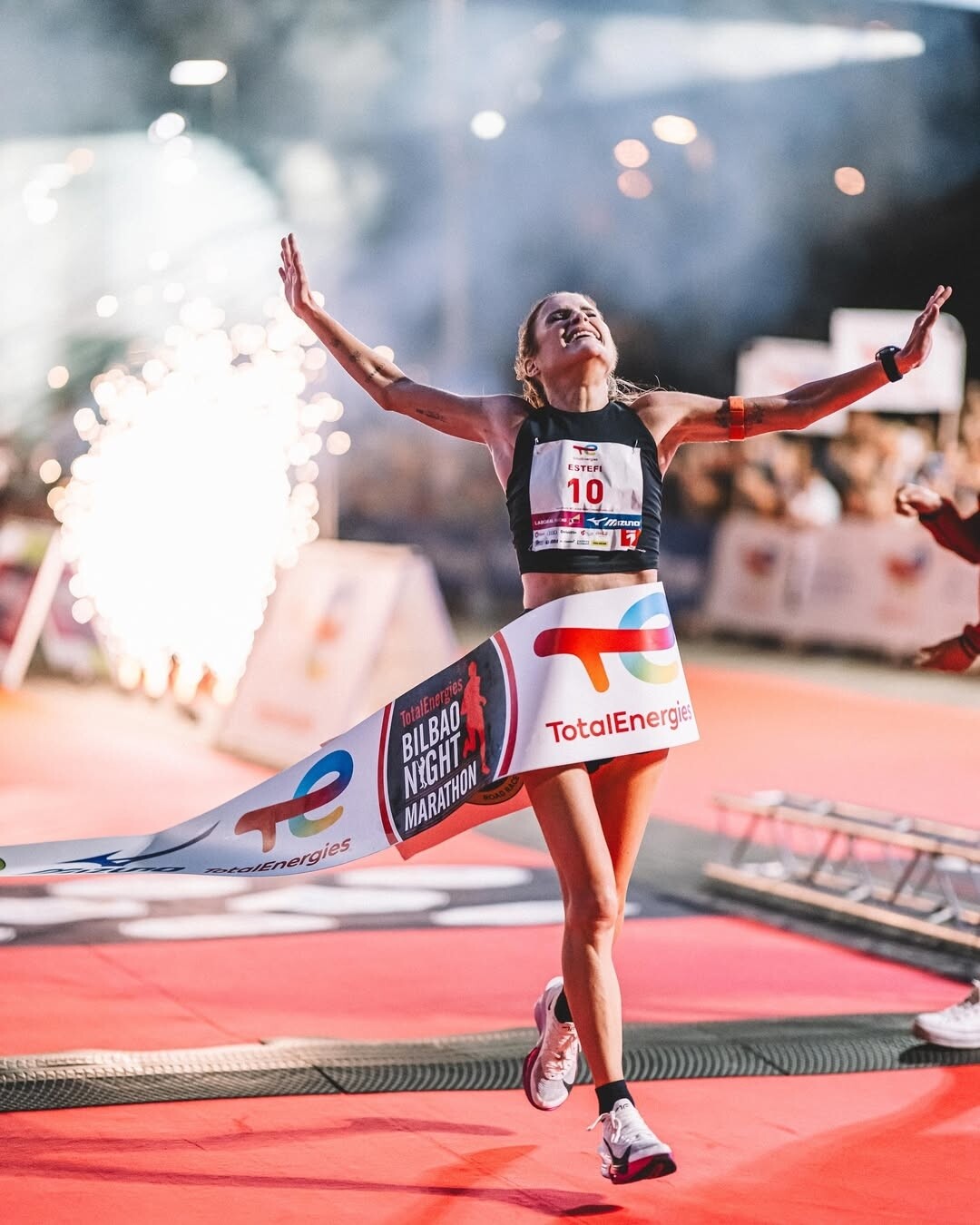
In May 2024, Unzu won the 100km distance at the Spanish National Ultra Marathon Championship with a time of 7 hours, 59 minutes, and 30 seconds. Her recent accomplishments have solidified her status as one of Spain’s premier endurance athletes, inspiring many with her ability to balance elite athletic performance and family life.

As Spain celebrates its new national record holder, the ultrarunning community eagerly anticipates Unzu’s future endeavors, confident that her determination and drive will lead to more groundbreaking achievements.
Login to leave a comment
Camille Herron and the Wikipedia Controversy: Integrity in Ultrarunning Under Scrutiny
Update: after reading our article Camille sent this to MBR "Individuals are violating World Athletic rules and publicly claiming they broke my records. It’s undermining the integrity of the sport and devaluing those who adhere to the rules and the ratified record holders, including me.
I hope Yiannis’s statement provides added clarity who’s behind the push to disregard the rules and retaliated against me."
Camille Herron recently addressed the Wikipedia controversy on her Facebook page, expressing her commitment to fairness and accountability in ultrarunning. She acknowledged the challenges of speaking up about rules and technicalities, noting that it can lead to retaliation.

Herron emphasized that the International Association of Ultrarunners (IAU) has validated her concerns twice, confirming that she continues to hold the IAU World Records and World Bests for 48 Hours and 6 Days. She concluded by thanking her supporters and reaffirming her dedication to integrity in the sport.
In September 2024, the ultrarunning community was shaken by a controversy involving American ultrarunner Camille Herron and her husband and coach, Conor Holt. The couple was accused of editing Wikipedia pages to enhance Herron's achievements while diminishing those of her competitors.
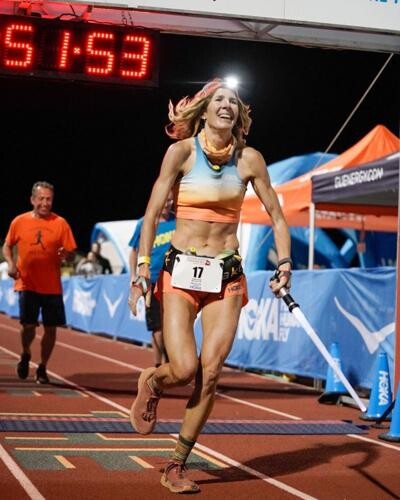
An investigation by Canadian Running revealed that two Wikipedia accounts, "Temporun73" and "Rundbowie," were linked to Herron's email and Holt's IP address. These accounts made numerous edits to Herron's page, amplifying her accomplishments, and altered the pages of fellow ultrarunners, including Courtney Dauwalter and Kilian Jornet, to downplay their achievements. For instance, statements like "widely regarded as one of the best trail runners ever" were removed from competitors' pages, while Herron was described as "widely regarded as one of the greatest ultramarathon runners of all time."
Following the exposure of these activities, Herron's primary sponsor, Lululemon, terminated their partnership with her. In a statement, the company emphasized its commitment to equitable competition and stated, "After careful consideration and conversation, we have decided to end our ambassador partnership with Camille."
In response to the allegations, Holt took full responsibility, stating, "Camille had nothing to do with this. I'm 100 percent responsible and apologize [to] any athletes affected by this and the wrong I did." He explained that his actions were an attempt to protect Herron from online harassment and bullying that had adversely affected her mental health.
The incident has sparked widespread discussion within the ultrarunning community, with many expressing disappointment over the unsportsmanlike behavior. Herron, known for her numerous world records and contributions to the sport, now faces challenges in rebuilding trust and credibility within the community.
As the situation unfolds, it serves as a reminder of the importance of integrity and sportsmanship in athletics. The ultrarunning community continues to reflect on the implications of this controversy and the lessons to be learned moving forward.
by Boris Baron
Login to leave a comment
You Should Stop Showering Between Runs—and My 7 Other Running Rules for 2025
If you’ve been on social media lately, you might have seen your friends making in-and-out lists. It’s been a thing for a few years—maybe less-so now—but the idea is to come up with some trends that you think will be popular and unpopular.
The best ones are fun and off the top of the head. Some of the thought-out ones about culture are kind of annoying. (Yeah, everyone agrees that “being mean” is out in 2025.)
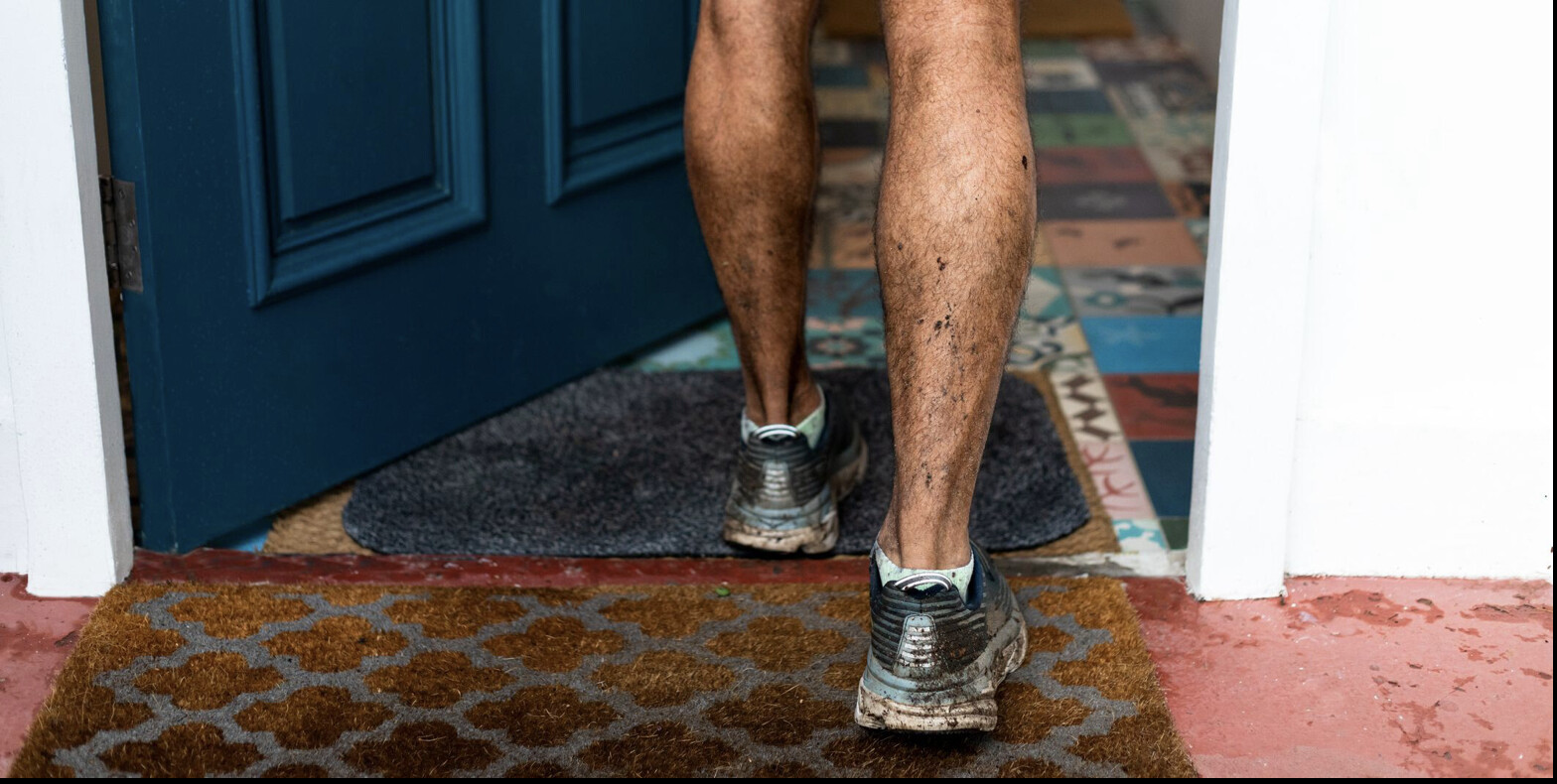
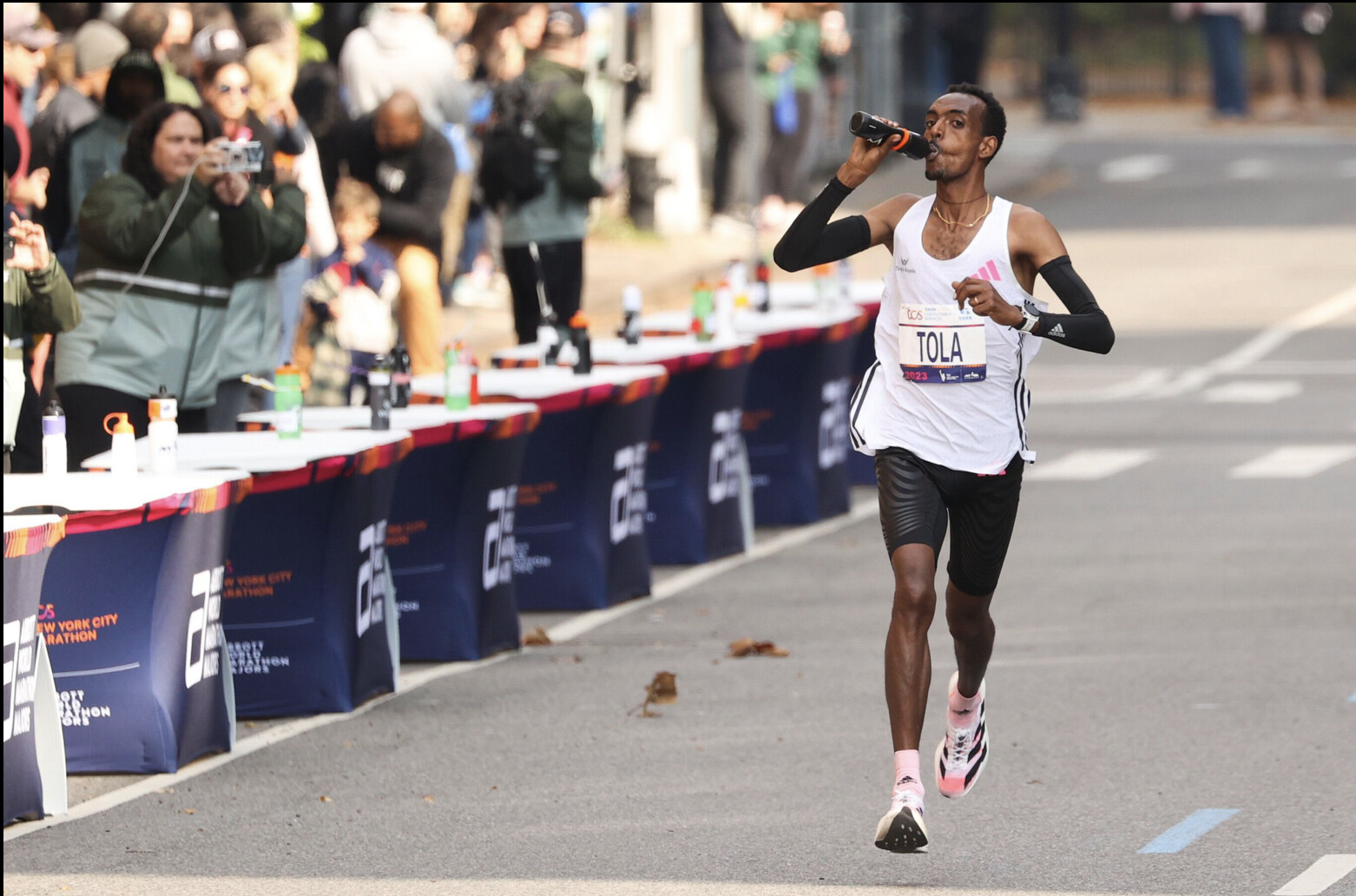
So I took the idea and applied it to my own running. Remember, these are specific to my experience. They’re not mandates or absolutes or even advice.
And at the end of the year, feel free to call me out if I was wrong. I probably was.
Out: Showering between runs
In a normal training week, I run twice a day on Wednesday and Thursday. Those are my recovery days, and I use them as a chance to get ahead on my weekly mileage. Usually, I run between 60 and 85 miles a week during marathon training, so to break it up, I’ll run once before work and then again during lunch or after work. Also known as “doubling.”
But that laundry piles up fast.
So on days when I work from home, sometimes I’ll put off my shower and stay in my workout clothes until my next run or weightlifting session. I live alone, so there’s no one to complain about my odor. (If you live with a roommate, partner, or family, use this strategy at your own risk.)
In: Wearing ugly race T-shirts
Remember the race T-shirts of the 2000s? The ones that looked like they were designed by a middle schooler and had no fewer than 1,000 ads on the back? I’ve gotten so many over the years, and most have gone straight to Goodwill or I’ve used them for yard work. But this year, I’d like to use my race T-shirts for their purpose—and run in them. There’s something fun about wearing an ill-fitting cotton tee with an ad for Jimbo’s Ford Dealership on the back.
Some races are pivoting away from shirts in favor of more environmentally friendly alternatives, but don’t expect them to completely disappear. According to Running USA, 58 percent of participants who took the 2024 Global Running Survey said that commemorative T-shirts are important to their race experience.
Out: Long runs
I’m planning on running Grandma’s Marathon in June, which means I’m building up my mileage now. But I’ve found that long runs are kind of overrated. Hear me out.
During my last marathon training block, I never ran more than 18 miles for my long run. Many programs call for 20 to 23-mile long runs, but my coach and I decided that 18-milers would get the job done. I’ve been running high mileage for close to a decade now, so I have a large aerobic base. The strategy worked, and I ran 2:27:07, hitting my goal of sub-2:28.
Right now, as I build, my coach and I are experimenting with the idea of downplaying the long run. Instead of using it as a key workout (for example, 10+ miles at marathon pace during the run), we’re focusing more on high-volume workouts twice a week, then using the long run just to get time on my feet. Similar to how Jakob Ingebrigtsen, who never runs more than 12.5 miles, trains.
A hard long run takes a large emotional and physical toll on my body, so I’ve found that I respond well when I keep the long run easy and focus on high-volume threshold sessions during the week. Of course, running on tired legs is key to running a good marathon. As I get closer to June, I’m sure there will be weeks where I use long runs as key workouts. But sometimes I need to remind myself that the other six days of the week are just as important.
In: Wearing a T-shirt over a long sleeve
For the past year, I’ve been mulling over buying a running vest. They look cool, but I keep telling myself that I don’t need to buy something that I’d probably only wear on a few runs each year. I live in eastern Pennsylvania, so I’m usually wearing something light in the fall or a full jacket in the winter. Enter, the working man’s vest: the T-shirt over the long sleeve shirt.
The sleeves keeps your arms warm while the T-shirt acts as a protectorate for your torso, insulating (not suffocating) you from the wind. Cooper Teare is a big fan.
Bonus points if you pair the look with an ugly race T-shirt. And double bonus points if you rock the look in a snowy race, like seemingly everyone did at the 2004 USATF Cross-Country Championships in Indianapolis.
In: Sunscreen
Man, I’m bad at this. If I’m preparing to sit out at the beach or pool, I lather up thoroughly. But if I’m heading out for a 90-minute run, I rarely put on sunscreen, justifying to myself that the route is shady or 90 minutes isn’t that long in the sun.
I’ve gotten better at sun protection—I almost always wear a hat and sunglasses year-round now—but I need to get better at lathering up on a regular basis. If you see me jogging this summer, ask me if I have sunscreen on and, if I don’t, shame me until I turn around and go home.
Out: Marathon bottle service
In my debut marathon at Indianapolis in November, I was lucky enough to qualify for the elite field, meaning I got perks like reserved restrooms, a separate warm-up area, and bottle service. For those unfamiliar, bottle service at a marathon is different from bottle service at a Las Vegas nightclub. Instead of access to marked-up Patrón, you get reserved spots on the course where you can stash your race fluid bottles.
Because there’s limited space, bottle stations are typically reserved for the fastest runners at a marathon. Instead of fumbling with the water or electrolyte-drink cups that the masses use, elites can consume whatever they trained with. In most cases, it’s some kind of carbohydrate mix.
At Indianapolis, there were three bottle stations: at miles 8, 14, and 20. I filled mine up with Maurten 160, but honestly, I didn’t feel like the perk was that necessary. I carried eight gels with me, taking them every 15 to 20 minutes, which was plenty. The bottles felt like more of a bonus or palate cleanser. They were cumbersome to hold and drink at race speed, and I found myself only taking a few sips then discarding them. Plus I had to pee the entire race, so I didn’t want to make the situation more dire.
Previously, I thought bottle service was non-negotiable to running a fast 26.2. But my mind has changed. If you envy the pros for their bottle access, don’t worry, you’re not missing out. Gels get the job done.
In: Off-distance races
I’m stealing this one from my 2024 in-and-out list. Off-distance races are events that diverge from traditional race distances (like the 5K, 10K, and marathon). Popular examples include the Bix 7 Road Race in Iowa (a 7-miler), the Boilermaker 15K in New York, and the Manchester Road Race in Connecticut (4.737 miles).
My favorite off-distance event is the Run for the Diamonds in Berwick, Pennsylvania. It’s a Thanksgiving day 9-miler that’s been going strong since 1908. The whole town comes out and cheers the runners up and down the massive hill that’s sandwiched in the middle of the route. Plus, the top seven men and women get real diamonds!
In: Short trail races
Speaking of race distances, let’s make short trail races a thing in 2025. Ultramarathons get most of the attention, but they’re not for everyone. At risk of contradicting myself against my previous “in,” there are plenty of trail options at the 5K, 10K, and half-marathon distance. Local state parks may host them, or sometimes there are running races tied in with mountain bike or cyclocross races. (Fifth Street ‘Cross in Pennsylvania does a great job of putting on both.)
I’d love to jump in a trail half marathon this summer between my two marathon training blocks. There won’t be any pressure to run a certain time, and let’s be real, running on the roads gets boring sometimes.
Login to leave a comment
The Distance Running Scene in 2024: A Year of Remarkable Achievements
The global distance running scene in 2024 was marked by incredible performances, new records, and innovative approaches to training and competition. From marathons in bustling city streets to ultramarathons through rugged terrains, the year showcased the resilience, determination, and evolution of athletes from all corners of the globe.
The World Marathon Majors—Tokyo, Boston, London, Berlin, Chicago, and New York—continued to be the centerpiece of elite distance running, each event contributing to a year of unprecedented performances and milestones.
Tokyo Marathon witnessed a remarkable performance by Kenya's Ruth Chepngetich, who set a new women's marathon world record with a time of 2:11:24. This achievement sparked discussions about the rapid advancements in women's long-distance running and the influence of technology in the sport.
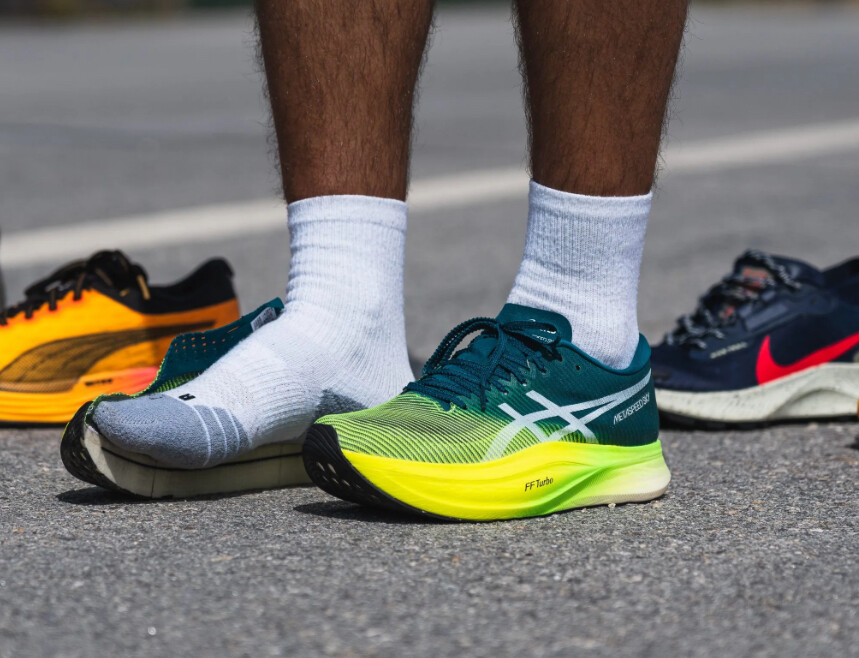
In the Boston Marathon, Ethiopia's Amane Beriso delivered a dominant performance, winning in 2:18:01. On the men's side, Kenya's Evans Chebet defended his title, highlighting Boston's reputation for tactical racing over sheer speed.
London Marathon saw Ethiopia's Tamirat Tola take the men's crown, besting the field with a strong tactical race. Eliud Kipchoge, despite high expectations, did not claim victory, signaling the growing competitiveness at the top of men’s marathoning. On the women's side, Kenya's Peres Jepchirchir triumphed, adding another major victory to her impressive resume.

The Berlin Marathon in 2024 showcased yet another extraordinary performance on its fast course, though it was Kelvin Kiptum’s world record from the 2023 Chicago Marathon (2:00:35) that remained untouched. In 2024, Berlin hosted strong fields but no records, leaving Kiptum’s achievement as the defining benchmark for men’s marathoning.
The Chicago Marathon was the highlight of the year, where Kenya's Ruth Chepngetich made history by becoming the first woman to run a marathon in under 2:10. She shattered the previous world record by nearly two minutes, finishing in 2:09:56. This groundbreaking achievement redefined the possibilities in women's distance running and underscored the remarkable progress in 2024.
The New York City Marathon showcased the depth of talent in American distance running, with emerging athletes achieving podium finishes and signaling a resurgence on the global stage.
Each marathon in 2024 was marked by extraordinary performances, with athletes pushing the boundaries of human endurance and setting new benchmarks in the sport.
Olympic Preparations: Paris 2024 Looms Large
With the 2024 Summer Olympics in Paris just around the corner, many athletes used the year to fine-tune their preparations. Qualifying events across the globe witnessed fierce competition as runners vied for spots on their national teams.
Countries like Kenya, Ethiopia, Japan, and the United States showcased their depth, with surprising performances by athletes who emerged as dark horses. Japan’s marathon team, bolstered by its rigorous national selection process, entered the Olympic year as a force to be reckoned with, particularly in the men's race.
Ultramarathons: The Rise of the 100-Mile Phenomenon
The ultramarathon scene continued to grow in popularity, with races like the Western States 100, UTMB (Ultra-Trail du Mont-Blanc), and Leadville 100 drawing record participation and attention.
Courtney Dauwalter, already a legend in the sport, extended her dominance with wins at both UTMB and the Western States 100, solidifying her reputation as the GOAT (Greatest of All Time) in ultrarunning.
On the men’s side, Spain’s Kilian Jornet returned to form after an injury-plagued 2023, capturing his fifth UTMB title. His performance was a masterclass in pacing and strategy, showcasing why he remains a fan favorite.
Notably, ultramarathons saw increased participation from younger runners and athletes transitioning from shorter distances. This shift signaled a growing interest in endurance challenges beyond the marathon.
Track and Road Records: Pushing the Limits
The year 2024 witnessed groundbreaking performances on both track and road, with athletes shattering previous records and setting new benchmarks in distance running.
Beatrice Chebet's Dominance: Kenya's Beatrice Chebet had an exceptional year, marked by multiple world records and championship titles.
10,000m World Record: In May, at the Prefontaine Classic, Chebet broke the women's 10,000m world record, becoming the first woman to run the distance in under 29 minutes, finishing in 28:54.14.
Olympic Triumphs: At the Paris Olympics, Chebet secured gold in both the 5,000m and 10,000m events, showcasing her versatility and dominance across distances.
5km World Record: Capping off her stellar year, on December 31, 2024, Chebet set a new women's 5km world record at the Cursa dels Nassos race in Barcelona, finishing in 13:54. This achievement made her the first woman to complete the 5km distance in under 14 minutes, breaking her previous record by 19 seconds.
Faith Kipyegon's Excellence: Kenya's Faith Kipyegon continued her dominance in middle-distance running by breaking the world records in the 1500m and mile events, further cementing her legacy as one of the greatest athletes in history.
Joshua Cheptegei's 10,000m World Record: Uganda's Joshua Cheptegei reclaimed the men's 10,000m world record with a blistering time of 26:09.32, a testament to his relentless pursuit of excellence.
Half Marathon Records: The half marathon saw an explosion of fast times, with Ethiopia’s Yomif Kejelchabreaking the men's world record, running 57:29 in Valencia. The women's record also fell, with Kenya’s Letesenbet Gidey clocking 1:02:35 in Copenhagen.
These achievements highlight the relentless pursuit of excellence by distance runners worldwide, continually pushing the boundaries of human performance.
The Role of Technology and Science
The impact of technology and sports science on distance running cannot be overstated in 2024. Advances in carbon-plated shoes, fueling strategies, and recovery protocols have continued to push the boundaries of human performance.
The debate over the fairness of super shoes reached new heights, with critics arguing that they provide an unfair advantage. However, proponents emphasized that such innovations are part of the natural evolution of sports equipment.
Data analytics and personalized training plans became the norm for elite runners. Wearable technology, including advanced GPS watches and heart rate monitors, allowed athletes and coaches to fine-tune training like never before.
Grassroots Running and Mass Participation
While elite performances stole the headlines, 2024 was also a banner year for grassroots running and mass participation events. After years of pandemic disruptions, global races saw record numbers of recreational runners.
Events like the Great North Run in the UK and the Marine Corps Marathon in the U.S. celebrated inclusivity, with participants from diverse backgrounds and abilities.
The popularity of running as a mental health outlet and community-building activity grew. Initiatives like parkrunand local running clubs played a pivotal role in introducing more people to the sport.
Diversity and Representation
Diversity and representation became central themes in distance running in 2024. Efforts to make the sport more inclusive saw tangible results:
More women and runners from underrepresented communities participated in major events. Notably, the Abbott World Marathon Majors launched a program to support female marathoners from emerging nations.
Trail and ultrarunning communities embraced initiatives to make races more accessible to runners from diverse cultural and economic backgrounds.
Challenges and Controversies
Despite the many successes, 2024 was not without its challenges:
Doping Scandals: A few high-profile doping cases marred the sport, reigniting calls for stricter testing protocols and greater transparency.
Climate Change: Extreme weather conditions impacted several races, including the Boston Marathon, which experienced unusually warm temperatures. Organizers are increasingly focusing on sustainability and adapting to climate-related challenges.
Looking Ahead to 2025
As the year closes, the focus shifts to 2025, which promises to build on the momentum of 2024. Key storylines include:
The quest for a sub-2-hour marathon in a record-eligible race, with Kelvin Kiptum and Eliud Kipchoge at the forefront.
The continued growth of ultrarunning, with new records likely to fall as more athletes take up the challenge.
The evolution of distance running as a global sport, with greater inclusivity and innovation shaping its future.
Conclusion
The distance running scene in 2024 was a celebration of human potential, resilience, and the unyielding pursuit of greatness. From record-breaking marathons to grueling ultramarathons, the year reminded us of the universal appeal of running. As the sport evolves, it continues to inspire millions worldwide, proving that the spirit of running transcends borders, ages, and abilities.
by Boris
Login to leave a comment
Records fall again as world’s best runners shine at California International Marathon
Tsegay Weldlibanos demolished a men’s course record that stood for more than 30 years en route to victory in his first-ever California International Marathon. British Olympian Callie Hauger-Thackery’s record-smashing pace was just enough to edge Jacqueline Gaughan and take home the women’s CIM title Sunday in Sacramento.
It was a day to celebrate, as is so often the case on one of the fastest marathon courses in the country. Sunny, dry conditions, temperatures a crisp but comfortable high 40s, and a world-class field in peak form led to another record-setting Sunday in the state capital.
Weldlibanos, of Eritrea, who lives and trains in high country Flagstaff, Arizona, turned the notoriously fast Folsom-to-Capitol course into a personal playground Sunday, crossing the finish line at two hours, seven minutes and 35 seconds — three seconds faster than the previous course best set by Jerry Lawlor in 1993.
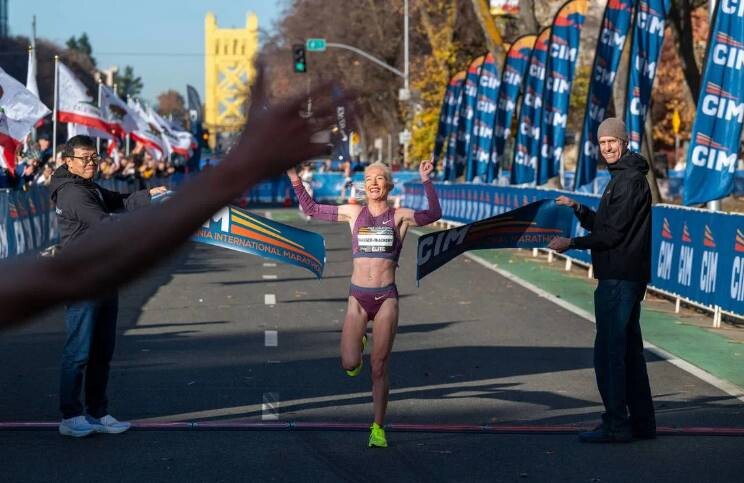
CJ Albertson, the “Fresno Kid” and come-from-behind men’s winner in 2023, missed out on back-to-back wins, taking home a second-place finish and a trip to the podium.
Hauger-Thackery set a blistering pace and needed every bit, her 2:24:28 beating Gaughan’s 2:24:40 by .12 of a second. Stephanie Bruce finished third. One of the fastest British marathoners ever, Haugher-Thackery burst onto the scene in 2023 and earned a spot to represent Great Britain in the 2024 Paris Olympics.
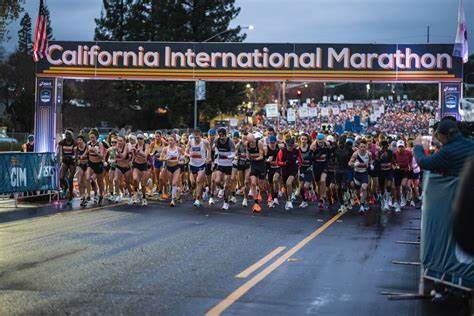
Husband and coach Nick Hauger, who finished third on the men’s side moments earlier, met the women’s winner at the finish in an emotional moment. Hauger was draped in the Stars and Stripes; the Union Jack adorned Haugher-Thackery’s shoulders as the couple embraced in victory.
Fifth-place women’s finisher Brittney Feivor’s cheering section hugged the rail at the finish. Susan Kessler, Feivor’s mother-in-law, traveled from Kenosha, Wisconsin, to watch the former Marquette University standout’s run Sunday.
“It’s exhilarating. We know how much work she puts in,” said Kessler. Feivor logs 50 to 90 miles or more a week in training. “It’s cheering and giving her the support she needs.”
The day didn’t just belong to the elites. As many as 10,000 runners and another 1,000 relay runners were expected to cross the finish line on race day, traveling from across the country and Northern California for the chance to notch a personal best or qualify for marathons on the 2025 calendar.
The California International Marathon is a qualifying race for the Boston Marathon. The 129th running is April 21. It’s a short walk — or jog — from the finish line at Ninth Street and Capitol Mall to a bell at the state Capitol’s west steps. Runners here know what the bell’s peal means: Someone’s going to Boston next year.
On Sunday, that someone was Alex Mills, 23, of Tacoma, Washington, shaking the bell nearly off its moorings as proud family — 10 in all — watched on from the Capitol steps.
Mills, who graduated this year from George Fox College in Oregon, wasted no time. Sacramento was the first marathon for the collegiate cross-country runner.
Mills’ mother, Shelly, and entourage planned their vacation around the Sacramento trip. Now, she said, they’ll have to schedule a second in Boston.
“I’m just happy to get it over with,” said Mills, still draped in his warming blanket.
Sometimes the run is about redemption. Andy Holstrom came down to Sacramento from Portland for this year’s marathon. Holstrom, bib 115, was on the course, wife Rebecca and parents Bob and Marla Mion of Newcastle cheering on from the mall. Andy and Rebecca, expecting a child in April, ran Boston last year, but after a disappointing run in the Bay State, Andy was looking for a personal best in California.
Rebecca, who recently ran an ultramarathon, carried a placard with its own bit of cheeky motivation: “Don’t embarrass our unborn son,” it read. “Run fast.”
Dad-to-be Andy delivered, cracking the 2:40 barrier with a 2:39:12.
Brandon Moran of Boston took the trip west, breaking into the coveted 2:30s, relishing the CIM’s fast downhill after running on Boston’s grueling hills. “It’s been two years since I ran this fast. I’m very, very happy with the result. It’s just the smoothest course I’ve ever run.”
by Darrell Smith
Login to leave a comment
California International Marathon
The California International Marathon (CIM) is a marathon organized by runners, for runners! CIM was founded in 1983 by the Sacramento Running Association (SRA), a 501(c)(3) non-profit organization. The SRA Board of Directors is comprised of runners with a combined total of 150+ years of service to the CIM. The same route SRA management created for the 1983 inaugural CIM...
more...88-year-old runner completes his 12th consecutive Athens Marathon
On Sunday at the historic Athens Marathon, 88-year-old Ploutarchos Pourliakas became the oldest finisher at this year’s race, crossing the line in six hours and 31 minutes—a full 20 minutes faster than his 2023 finish.
Defying both age and limits, Pourliakas completed his 12th Athens Marathon as part of the event’s 41st edition. Known as “The Authentic Marathon,” this race traces what is believed to be the original path taken by Athenian messenger Pheidippides, who ran to announce the Greek victory over the Persians in the Battle of Marathon, nearly 2,500 years ago.
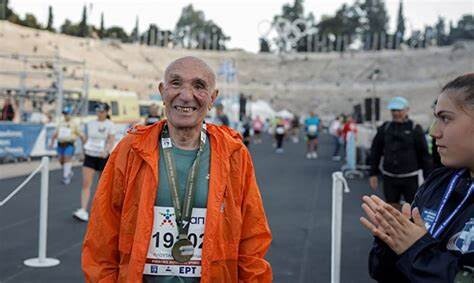
Pourliakas reached the finish line at the Panathenaic Stadium, the venue of the first modern Olympics in 1896, surrounded by his family and grandchildren. “I achieved to finish and even improved on last year,” he told Reuters in an interview. “I feel younger than my 88 years.”
His philosophy for longevity in running is simple: moderation and consistency. “I’ve never smoked. I don’t drink, and I eat in a balanced way,” said Pourliakas. He revealed that he does enjoy a daily sip of tsipouro, a traditional Greek brandy, saying he considers it more as a health tonic than as a drink.
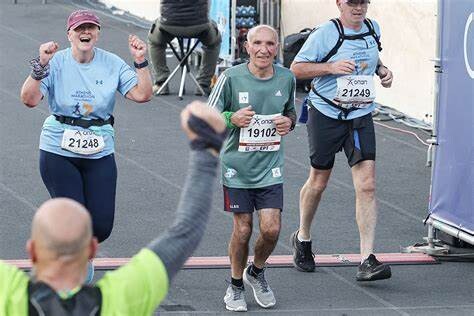
According to Reuters, Pourliakas began running at age 73, inspired by his son, who is an ultramarathoner. Now, Pourliakas follows a dedicated training regimen in his hometown of Kastoria, logging five kilometres on weekdays and 15 to 20 kilometres on weekends.
Pourliakas’s story echoes that of Canadian masters running legend Ed Whitlock, who also started running later in life. In 2000, Whitlock became the oldest person to complete a sub-three-hour marathon at age 69 and later set the men’s 85+ world record, with a time of 3:56:38, at the 2016 Toronto Waterfront Marathon. Like Whitlock, Pourliakas’s commitment and discipline inspire runners of all ages to keep pushing their limits.
“Why wouldn’t you believe it? We all can do it. As long as we want to,” Pourliakas said.
by Marley Dickinson
Login to leave a comment
Athens Marathon
The Athens Classic (authentic) Marathon is an annual marathon road race held in Athens, Greece, normally in early November. The race attracted 43.000 competitors in 2015 of which 16.000 were for the 42.195 km course, both numbers being an all-time record for the event. The rest of the runners competed in the concurrent 5 and 10 kilometers road races and...
more...Joe Klecker Plans His Half Marathon Debut
In a live recording of The CITIUS MAG Podcast in New York City, U.S. Olympian Joe Klecker confirmed that he is training for his half marathon debut in early 2025. He did not specify which race but signs point toward the Houston Half Marathon on Jan. 19th.
“We’re kind of on this journey to the marathon,” Klecker said on the Citizens Bank Stage at the 2024 TCS New York City Marathon Expo. “The next logical step is a half marathon. That will be in the new year. We don’t know exactly where yet but we want to go attack a half marathon. That’s what all the training is focused on and that’s why it’s been so fun. Not that the training is easy but it’s the training that comes the most naturally to me.”
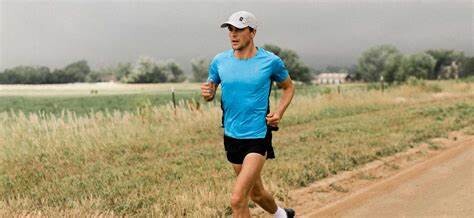
Klecker owns personal bests of 12:54.99 for 5000m and 27:07.57 for 10,000m. In his lone outdoor track race of 2024, he ran 27:09.29 at Sound Running’s The Ten in March and missed the Olympic qualifying standard of 27:00.00.
His training style and genes (his mother Janis competed at the 1992 Summer Olympics in the marathon and won two U.S. marathon national championships in her career; and his father Barney previously held the U.S. 50-mile ultramarathon record) have always linked Klecker to great marathoning potential. For this year’s TCS New York City Marathon, the New York Road Runners had Klecker riding in the men’s lead truck so he could get a front-row glimpse at the race and the course, if he chooses to make his debut there or race in the near future.
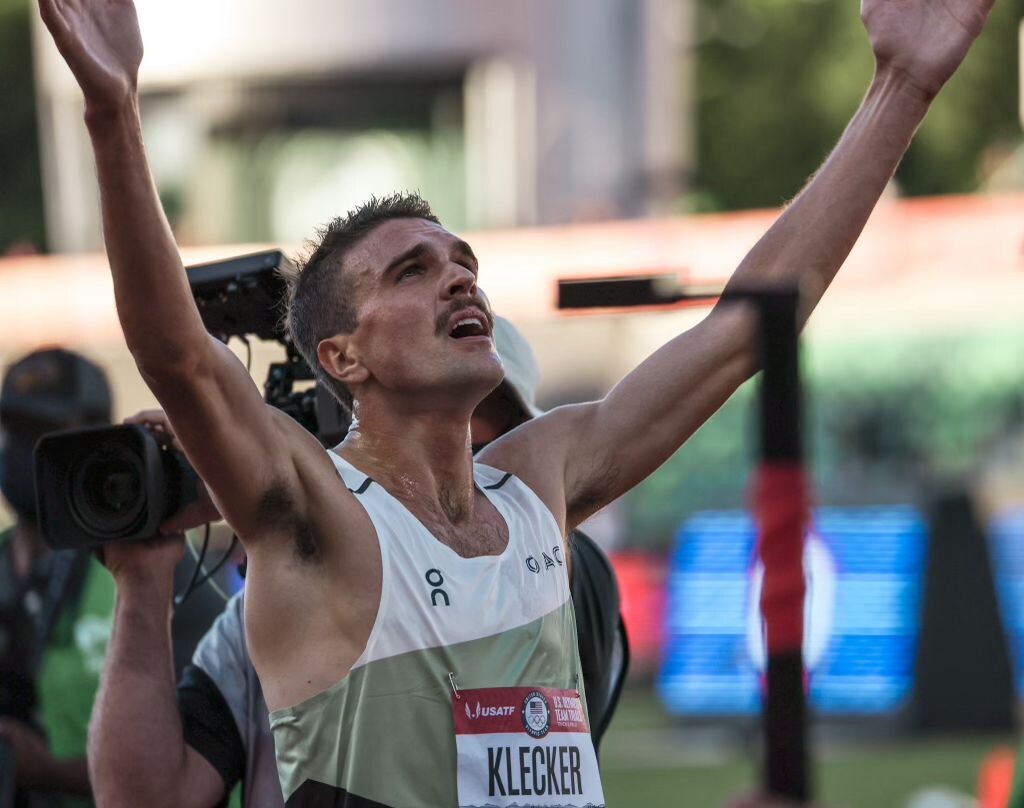
The Comeback From Injury
In late May, Klecker announced he would not be able to run at the U.S. Olympic Track and Field Trials in June due to his recovery from a torn adductor earlier in the season, which ended his hopes of qualifying for a second U.S. Olympic team. He spent much of April cross training and running on the Boost microgravity treadmill at a lower percentage of his body weight.
“The process of coming back has been so smooth,” Klecker says. “A lot of that is just because it’s been all at the pace of my health. I haven’t been thinking like, ‘Oh I need to be at this level of fitness in two weeks to be on track for my goals.’ If my body is ready to go, we’re going to keep progressing. If it’s not ready to go, we’re going to pull back a little bit. That approach is what helped me get through this injury.”
One More Track Season
Klecker is not fully prepared to bid adieu to the track. He plans to chase the qualifying standard for the 10,000 meters and attempt to qualify for the 2025 World Championships in Tokyo. In 2022, after World Athletics announced Tokyo as the 2025 host city, he told coach Dathan Ritzenhein that he wanted the opportunity to race at Japan National Stadium with full crowds.
“I’m so happy with what I’ve done on the track that if I can make one more team, I’ll be so happy,” Klecker says. “Doing four more years of this training, I don’t know if I can stay healthy to be at the level I want to be. One more team on the track would just be like a dream.”
Klecker is also considering doubling up with global championships and could look to qualify for the 2025 World Road Running Championships, which will be held Sept. 26th to 28th in San Diego. To make the team, Klecker would have to race at the Atlanta Half Marathon on Sunday, March 2nd, which also serves as the U.S. Half Marathon Championships. The top three men and women will qualify for Worlds. One spot on Team USA will be offered via World Ranking.
Sound Running’s The Ten, one of the few fast opportunities to chase the 10,000m qualifying standard on the track, will be held on March 29th in San Juan Capistrano.
Thoughts on Ryan Hall’s American Record
The American record in the half marathon remains Ryan Hall’s 59:43 set in Houston on Jan. 14th, 2007. Two-time Olympic medalist Galen Rupp (59:47 at the 2018 Prague Half) and two-time U.S. Olympian Leonard Korir (59:52 at the 2017 New Dehli Half) are the only other Americans to break 60 minutes.
In the last three years, only Biya Simbassa (60:37 at the 2022 Valencia Half), Kirubel Erassa (60:44 at the 2022 Houston Half), Diego Estrada (60:49 at the 2024 Houston Half) and Conner Mantz (60:55 at the 2021 USATF Half Marathon Championships) have even dipped under 61 minutes.
On a global scale, Nineteen of the top 20 times half marathon performances in history have come since the pandemic. They have all been run by athletes from Kenyan, Uganda, and Ethiopia, who have gone to races in Valencia (Spain), Lisbon (Portugal), Ras Al Khaimah (UAE), or Copenhagen (Denmark), and the top Americans tend to pass on those races due to a lack of appearance fees or a stronger focus on domestic fall marathons.
Houston in January may be the fastest opportunity for a half marathon outside of the track season, which can run from March to September for 10,000m specialists.
“I think the record has stood for so long because it is such a fast record but we’re seeing these times drop like crazy,” Klecker says. “I think it’s a matter of time before it goes. Dathan (Ritzenhein) has run 60:00 so he has a pretty good barometer of what it takes to be in that fitness. Listening to him has been really good to let me know if that’s a realistic possibility and I think it is. That’s a goal of mine. I’m not there right now but I’m not racing a half marathon until the new year. I think we can get there to attempt it. A lot has to go right to get a record like that but just the idea of going for it is so motivating in training.”
His teammate, training partner, and Olympic marathon bronze medalist Hellen Obiri has full confidence in Klecker’s potential.
“He has been so amazing for training,” Obiri said in the days leading up to her runner-up finish at the New York City Marathon. “I think he can do the American record.”
by Chris Chavez
Login to leave a comment
Aramco Houston Half Marathon
The Chevron Houston Marathon provides runners with a one-of-a-kind experience in the vibrant and dynamic setting of America's fourth-largest city. Renowned for its fast, flat, and scenic single-loop course, the race has earned accolades as the "fastest winter marathon" and the "second fastest marathon overall," according to the Ultimate Guide to Marathons. It’s a perfect opportunity for both elite athletes...
more...50 Motivational Running Quotes About Racing
Find Inspiration from Running Icons and Legends
Even the most motivated among us occasionally has a challenging time wanting to lace up our shoes and hit the pavement running. Bookmark this page for the next time motivation is waning for you. Read on for inspirational race quotes to pump you up before your next run.
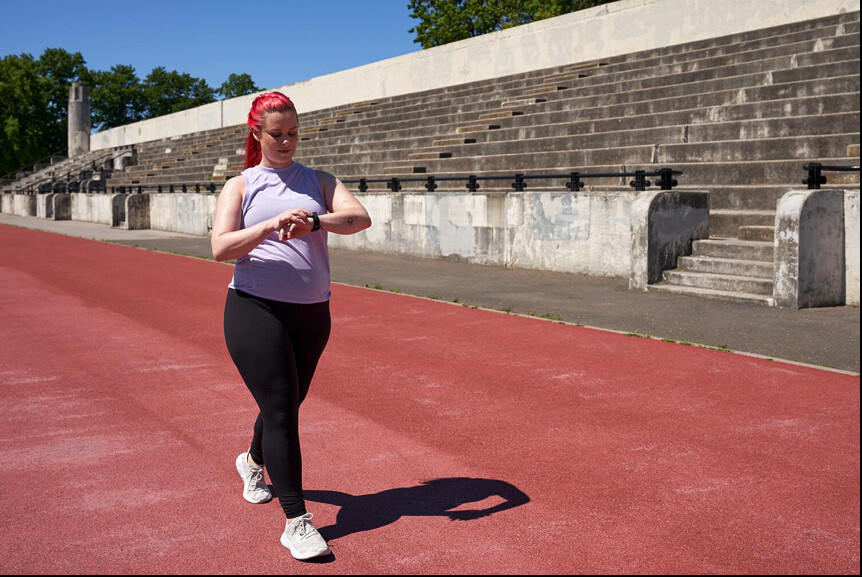
"The miracle isn't that I finished. The miracle is that I had the courage to start." —John Bingham, running speaker and writer
"Fear is gradually replaced by excitement and a simple desire to see what you can do on the day." —Lauren Fleshman, American distance runner
"It doesn't matter whether you come in first, in the middle of the pack, or last. You can say, 'I have finished.' There is a lot of satisfaction in that." —Fred Lebow, co-founder of the New York City Marathon
"When you put yourself on the line in a race and expose yourself to the unknown, you learn things about yourself that are very exciting." —Doris Brown Heritage, women's distance running pioneer
"Good health, peace of mind, being outdoors, camaraderie: those are all wonderful things that come to you when running. But for me, the real pull of running—the proverbial icing on the cake—has always been racing." —Bill Rodgers, winner of four Boston Marathons
"Big occasions and races which have been eagerly anticipated almost to the point of dread, are where great deeds can be accomplished." —Jack Lovelock, environmentalist and futurist
"I also realize that winning doesn't always mean getting first place; it means getting the best out of yourself." —Meb Keflezighi, 2004 Olympic Marathon silver medalist
"Why race? The need to be tested, perhaps; the need to take risks; and the chance to be number one." —George Sheehan, running columnist and writer
RELATED: A Beginner's Guide to Becoming a Runner
"Everyone in life is looking for a certain rush. Racing is where I get mine." —John Trautmann, Olympic runner
"I'm always nervous. If I wasn't nervous, it would be weird. I get the same feeling at all
"My thoughts before a big race are usually pretty simple. I tell myself: 'Get out of the blocks, run your race, stay relaxed. If you run your race, you'll win.'" —Carl Lewis, nine-time Olympic gold champion
RELATED: How to Plan a Running Route Using Map Apps on Your Phone
"I love controlling a race, chewing up an opponent. Let's get down and dirty. Let's fight it out. It's raw, animalistic, with no one to rely on but yourself. There's no better feeling than that." —Adam Goucher, U.S. Nationals 5K race champion
"I'm going to work so that it's a pure guts race at the end, and if it is, I am the only one who can win it." —Steve Prefontaine, legendary American long-distance runner
"Let's just say it and be done with it. Racing hurts. But here's another truth: having put in the effort to prepare for a race and then not giving it your all hurts even more. The first kind of hurt goes away in hours or a day. The second kind of hurt can last a lifetime." —Larry Shapiro, author of Zen and the Art of Running
"Different people have different reasons for racing, but
"Running is in my blood—the adrenaline flows before the races, the love/hate of butterflies in your stomach." —Marcus O'Sullivan, Irish middle-distance runner
"It's just as important to remember that each footstrike carries you forward, not backward. And every time you put on your running shoes you are different in come way than you were the day before. This is all good news." —John Bingham, American marathon runner
"Racing teaches us to challenge ourselves. It teaches us to push beyond where we thought we could go. It helps us to find out what we are made of. This is what we do. This is what it's all about." —PattiSue Plumer, U.S. Olympian
"You didn't beat me. You merely finished in front of me." —Hal Higdon, American writer and runner
"Fast running isn't forced. You have to relax and let the run come out of you." —Desiree Linden
"No marathon gets easier later. The halfway point only marks the end of the beginning." —Joe Henderson, famed running coach
RELATED: Race Day Tips for Running Your First 5K
"No matter how old I get, the race remains one of life's most rewarding experiences." —George Sheehan
"If you feel bad at
"What distinguishes those of us at the starting line from those of us on the couch is that we learn through running to take what the days gives us, what our body will allow us, and what our will can tolerate." —John Bingham, running writer and speaker
"For me, races are the celebration of my training." —Dan Browne, National Champion 5K and 20K runner
"Run when you can, walk if you have to, crawl if you must; just never give up." —Dean Karnazes, ultramarathon runner
"Every race is a question, and I never know until the last yards what the answer will be. That's the lure of racing." —Joe Henderson
"It's amazing how the same pace in practice can feel so much harder than on race day. Stay confident. Trust the process." —Sara Hall, American long-distance runner
"Winning has nothing to do with racing. Most days don't have races anyway. Winning is about struggle and effort and optimism, and never, ever, ever giving up." —Amby Burfoot, American marathon runner
"Your goal is simple: Finish. Experience your first race, don’t race it." —Bob Glover, author of The Runner's Handbook
"Don't dream of winning, train for it!" —Mo Farah, Olympic long
"Nothing, not even pain, lasts forever. If I can just keep putting one foot in front of the other, I will eventually get to the end." —Kim Cowart, runner and journalist
"The real purpose of running isn't to win a race. It's to test the limits of the human heart." —Bill Bowerman, co-founder of Nike
"Our running shoes have magic in them. The power to transform a bad day into a good day; frustration into speed; self-doubt into confidence; chocolate cake into muscle." —Mina Samuels, author of Run Like a Girl
"There is magic in misery. Just ask any runner." —Dean Karnazes
"Run often. Run long. But never outrun your joy of running." —Julie Isphording, American Olympic runner
Login to leave a comment
Runners have gone wild in the current boom, increasingly hitting the trails and embracing ultra distances
that immerse us in nature, where mile splits matter far less than the experience of respondents to a 2024 Runner’s World survey have run an ultramarathon.
65%

of those ran their first ultra in the past five years.
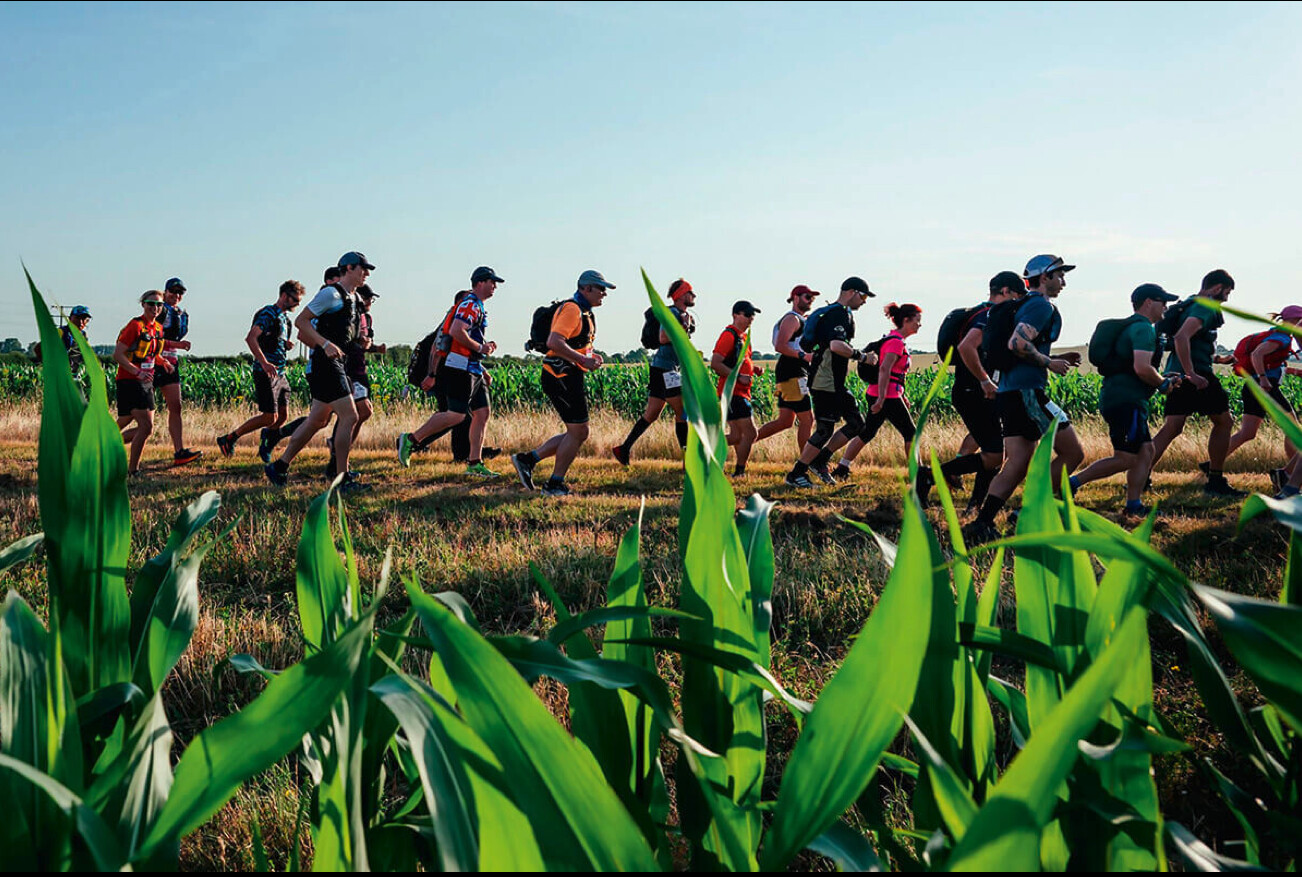
33%
said that they’re planning to run or considering running an ultra in the next two years.
‘It definitely feels more people are running trail and ultra, certainly post-Covid. The scene is really exciting with more races (and more accessible races), more brands, more sport-specific media, more younger, faster runners and more women – but they’re still a minority. Black Trail Runners and others are doing great work to make the scene more diverse. It’d be great to see more diversity, more accessibility and gender equality.’
Damian Hall, author and record-breaking ultrarunner236%
The year-on-year increase in internet searches for the Barkley Marathons from August 2023.
61%
of those surveyed by RW are interested or may be interested in following the big ultra races, such as the Barkley Marathons, Spine and Ultra-Trail du Mont-Blanc. 34%
This year’s increase in registrations for the Ultra-Trail du Mont-Blanc World Series Finals, compared with 2023. Demand is two to three times higher than max capacity.
43
Events in UTMB World Series in 2024, in Asia, Oceania, Europe, Africa and the Americas.
$7.3 billion
The value of the global trail running shoes market in 2022, according to a report by Allied Market Research. Up from $1.38bn in 2016, according to data from Grand View Research.
$12.4 billion
Predicted value of the global trail running shoes market in 2032, according to Allied Market Research.
30%
Year-on-year increase in numbers for the Montane Spine races. ‘The Montane Spine has expanded with more races within the events and more locations. We’ve had to organise other races to keep up with demand because the Montane Spine races continue to consistently sell out. We’re seeing people looking for ultramarathons to help with their mental health.’
Phil Hayday-Brown, founder of the Montane Spine Race
63%
The year-on-year increase in participants at Black To The Trails, with a waiting list operating for 2024’s sold-out event. 58% of runners were people of colour, with 14 of the 19 UK ethnic categories represented; 70% of participants were women.‘The Black Trail Runners community continues to grow daily with thousands of followers in the UK and globally, we’re a registered community and campaigning charity with the mission to increase the inclusion, participation and representation of people of Black ethnicity in trail running. If you want to see a more ethnically diverse sector, you can join us to help us do that – you don’t need to be of Black ethnicity to support the work that we do.’
Sabrina Pace-Humphreys, ultrarunner and co-founder of Black Trail Runners
5,252%
Growth in trail races with 500 or more participants in the 10 years leading up to 2022, according to RunRepeat. 11%
The year-on-year increase in runners on Strava completing at least one ultra, according to 2024 Strava data, growing at the same rate for men and women.
10% year-on-year increase in 50Ks.16% year-on-year increase in 50-milers. 14% year-on-year increase in 100Ks.
1,676% increase in ultra participation between 1996 and 2018, according to a recent report from RunRepeat, with numbers rising from just 34,401 to 611,098.
5,590 races
on the International Trail Runners Association calendar between January and August 2024: a 458% increase from the 1,002 races planned a decade ago.
49%
of respondents to the RW survey who run on trails started trail running within the past five years.
231%
Growth in trail running worldwide in the decade leading up to 2022, according to RunRepeat research. ‘All our events have been sell-outs the last couple of years. The Tolkien Trail Race sells out 500 entries in under an hour, and we’re noticing races fill up quicker and quicker each year. Trail racing has the least barriers to compete, with less emphasis on times than road racing, which can be intimidating. There’s an element of adventure, a test of endurance and the release of being in nature that’s evidently being enjoyed across ages and genders.’
Chris Holdsworth, race director for Pennine Trailsitting the trails and embracing ultra distances that immerse us in nature, where mile splits matter far less than the experience
Login to leave a comment
The Strange Saga of Ultrarunner Camille Herron and Wikipedia
The husband of runner Camille Herron admitted to having altered the Wikipedia biographies of prominent ultrarunners. The revelation came after a Canadian journalist launched an investigation.
On September 24, Conor Holt, the husband and coach of American ultrarunner Camille Herron, admitted to altering the biographies of Herron, Courtney Dauwalter, Kilian Jornet, and other prominent runners on the website Wikipedia. Holt’s edits boosted his wife’s accolades but also downgraded those of the other prominent ultrarunners.

“Camille had nothing to do with this,” Holt wrote in an email sent to Outside and several running media websites. “I’m 100 percent responsible and apologize [to] any athletes affected by this and the wrong I did.”

The confession brought some clarity to an Internet mystery that embroiled the running community for several days and sparked a flurry of chatter on social media and running forums. Herron, 42, is one of the most visible ultrarunners in the sport, and over the years she has won South Africa’s Comrades Marathon and also held world records in several different events, including the 48-hour and six-day durations. But the Wikipedia controversy led to swift consequences for Herron—her major sponsor, Lululemon, parted ways with her on Thursday morning.
The entire ordeal sprung from an investigation led by a Canadian journalist who spent more than a week following digital breadcrumbs on dark corners of
Marley Dickinson, a reporter for the website Canadian Running, began looking into the Wikipedia controversy in mid-September after receiving a tip from someone in the running community. The tipster told Dickinson, 29, that someone was attempting to delete important data from the Wikipedia entry for “Ultramarathon.”
The person had erased the accomplishments of a Danish runner named Stine Rex, who in 2024 broke two long-distance running records—the six-day and 48-hour marks—which were previously held by Herron. At the time, the sport’s governing body, the International Association of Ultrarunners, was deciding whether or not to honor Rex’s six-day record of 567 miles.
“The person making the edits said the IAU had made a decision on the record, even though they hadn’t yet,” Dickinson told me. “Whoever was doing it really wanted to get Rex’s run off of Wikipedia.”
Wikipedia allows anonymous users to edit entries, but it logs these changes in a public forum and shows which user accounts made them. After an edit is made, a team of volunteer moderators, known as Wikipedians, examines the changes and then decides whether or not to publish them. The site requires content to be verifiable through published and reliable sources, and it asks that information be presented in a neutral manner, without opinion or bias. The site can warn or even suspend a user for making edits that do not adhere to these standards.
Dickinson, who worked in database marketing at Thomson Reuters before joining Canadian Running, was intrigued by the bizarre edits. “I’ve always been into looking at the backend of websites,” he told me. “There’s usually a way you can tie an account back to a person.”
The editor in question used the name “Rundbowie,” and Dickinson saw that the account had also made numerous changes to Herron’s biography. Most of these edits were to insert glowing comments into the text. “I thought whoever this person is, they are a big fan of Camille Herron,” Dickinson said.
Rundbowie was prolific on Wikipedia, and made frequent tweaks and updates to other biographies. The account had removed language from the pages of Jornet and Dauwalter—specifically deleting the text “widely regarded as one of the greatest ultramarathon runners of all time.” Rundbowie had then attempted to add this exact language to Herron’s page. Both attempts were eventually denied by Wikipedians.
After examining the edits, Dickinson began to suspect that Rundbowie was operated by either Herron or Holt. Further digital sleuthing bolstered this opinion. He saw that the Rundbowie account, which made almost daily edits between February and April, abruptly went silent between March 6-12. Those dates corresponded with Herron’s world-record run in a six-day race put on by Lululemon in California.
But Dickinson wasn’t done with his detective work. He saw that in March, Wikipedia had warned Rundbowie on its public Incident Report page. The reason
A final Internet deep dive convinced Dickinson that he was on the right track. The IP address—a string of characters associated with a given computer—placed Temporun73 in Oklahoma, which is where Herron and Holt live. Then, on a forum page for Oregon State University, which is where Herron attended graduate school, Dickinson found an old Yahoo email address used by Herron. The email name: Temporun73.
“To me, this was a clear sign that it was either Conor or Camille” Dickinson said.
Dickinson published his story to Canadian Running on Monday, September 23. The piece included screenshots of Wikipedia edits as well as Dickinson’s trail to Herron and Holt. It started off a flurry of online reactions.
A thread on the running forum LetsRun generated 360 comments, and several hundred more appeared on the Reddit communities for trail running and ultrarunning. Film My Run, a British YouTube site, uploaded an immediate reaction video the following day. Within 12 hours, more than a hundred people shared their thoughts in the comments section.
It’s understandable why. Lauded for her accolades in ultra-distance races, Herron is also one of the most visible ultrarunners on the planet. She gives frequent interviews, and has been an outspoken advocate for the anti-doping movement, for smart and responsible training habits, and for the advancement of women runners.
“I think we’re going to continue to see barriers being broken and bars raised. I want to see how close I can get to the men’s world records, or even exceed a men’s world record,” she told Outside Run in 2023.
Herron has also spoken and written about her own mental health. Earlier this year, she began writing and giving interviews about her recent diagnosis with Autism and ADHD.
“Although I knew little about autism before seeking out a diagnosis, my husband, who observed my daily quirks and often reminded me to eat, drink, and go to bed, would jokingly speculate that I might be autistic,” she told writer Sandra Rose Salathe on the website FloSpace in July.
Dickinson told me he had a very positive image of Herron from his short time at Canadian Running. He joined the website in 2021.
“She’s always been super nice and welcoming,” Dickinson said.
Dickinson says he reached out to Herron and Holt via email and social media, but did not receive a reply. On Monday afternoon, a user on the social media platform X asked Herron about the story. “It’s made up,” Herron’s account replied. “Someone has an ax to grind and is bullying and harassing me.”
Herron’s social media accounts were deactivated shortly afterward—Holt later said he took them down.
Some online commenters questioned if the story was legitimate—something I did too, initially. Following Dickinson’s arcane trail through Wikipedia’s backend required a careful read, and a strong knowledge of the encyclopedia’s rules and regulations.
After speaking to Dickinson, I sent my notes to a Wikipedia expert named Rhiannon Ruff, who operates a digital consulting firm called Lumino that helps clients navigate the online encyclopedia. Ruff examined the story as well as the Wikipedia histories of Rundbowie and Temporun 73, and said that the evidence strongly suggested that both accounts were operated by the same person. But, since Wikipedia allows for anonymity, you cannot make the connection with 100 percent certainty.
Ruff pointed out that Wikipedia’s internal editors strongly believed the two accounts had a biased with Herron, because the accounts had attempted to write in the same sentence. “Both tried to add details about her crediting the influence of her father and grandfather, and how she runs with a smile,” Ruff said.
Ruff also pointed me to the prolific editing history of Temporun73. Started in 2016, the account had made approximately 250 edits to
“I never got a chance to say anything to the Canadian Running website before they published it,” Holt wrote.
Holt admitted that he was the operator of the Temporun73 and Rundbowie accounts. But he said his Wikipedia editing was aimed at combating online bullies who had removed biographical details from Herron’s Wikipedia page in the past.
“I kept adding back in the details, and then they blocked my account in early February of this year,” Holt wrote. “Nothing was out of line with what other athletes have on their pages. Wikipedia allows the creation of another account, so I created a new account Rundbowie. I was going off what other athletes had on their pages using the username Rundbowie and copying/pasting this info.”
“I was only trying to protect Camille from the constant bullying, harassment and accusations she has endured in her running career, which has severely impacted her mental health,” he added. “So much to the point that she has sought professional mental health help.”
Outside asked Holt via email to provide further details, but we did not receive a response. In an email to Canadian Running, Holt said he was focused on Herron’s upcoming race, and would not be conducting interviews.
But the fallout from the admission came quickly. On Thursday morning Dickinson broke more news: apparel brand Lululemon, which has backed Herron since 2023, had ended its partnership. In a statement provided to several outlets, the brand said it was dedicated “to equitable competition in sport for all,” and that it sought
by Outside Online
Login to leave a comment
The Legend of Cliff Young: The potato farmer who miraculously won a 544-mile marathon at age 61
At the start of the 1983 Sydney to Melbourne Ultramarathon, Cliff Young quickly fell behind and seemed on track to finish last. But while the others stopped to sleep, Young kept running at his tortoise pace for five days straight — and won.
In 1983, a 61-year-old Australian potato farmer entered the first ultramarathon between Sydney and Melbourne. Few bet on the farmer winning the race.
Not only did Cliff Young have a strange, slow running stride resembling a shuffle, but he’s said to have shown up to the race wearing work boots and overalls. During the event itself, rather than wearing sleek running clothes like the other competitors, Young donned a cotton t-shirt and long trousers, explaining that it was important to reduce his risks of skin cancer.
But Young had a secret weapon.
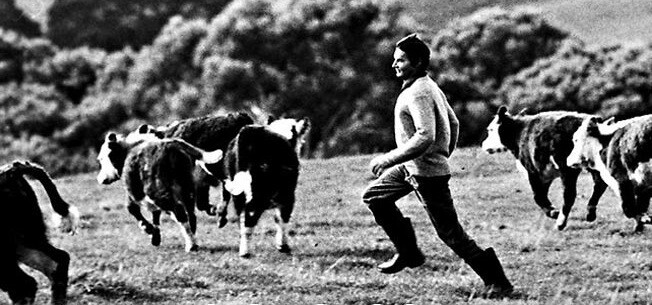
“I grew up on a farm where we couldn’t afford horses or tractors,” Young said in an interview, according to Adventure Journal. “And the whole time I was growing up, whenever the storms would roll in, I’d have to go out and round up the sheep. We had 2,000 sheep on 2,000 acres.”
Rounding up sheep gave Young a taste for long-distance running.
“Sometimes I would have to run those sheep for two or three days. It took a long time, but I’d always catch them. I believe I can run this race.”
In less than six days, Cliff Young ran 544 miles and won the ultramarathon — and broke the previous record by two whole days. His unorthodox style and surprising victory shocked the world. How did a 61-year-old farmer win one of the most challenging races in history?

Cliff Young’s Real-Life Tortoise And The Hare Story
From the starting gun, it looked like Cliff Young would be at the back of the pack.
When the ultramarathoners left Sydney, Young quickly fell behind. With his slow signature shuffle, Young could barely match the pace of the other racers. But everything changed the first night of the race.
Although he’d fallen far behind the other runners at the end of the first day, by dawn on the second day Young had a massive lead. The Sydney Morning Herald reports that that was thanks to Young’s trainer, Wally Zeuschner. Known for his tough tactics, Zeuschner reportedly told one athlete that he could take a break when his eyes started bleeding.
In fact, Zeuschner’s eyes helped Cliff Young win the ultramarathon. Young turned in to sleep the first night and Zeuschner set the alarm. But because of his poor eyesight, Young’s trainer set the alarm for 2 a.m., several hours earlier than the planned wakeup call.
When the alarm rang, Young leaped up and began running. It took the groggy racer some time to realize that it was still dark.
Those hours of early morning running put Cliff Young at the head of the pack. And Young turned that accidental advantage into a strategy. Instead of stopping to sleep at night, he kept running.
“I’m just an old tortoise,” Young told reporters during the race, according to The Age. “I have to keep going to stay in front.”
Cliff Young also had an unusual running style. The press dubbed it the “Young-Shuffle,” because Young seemed to shuffle rather than run.
But the shuffle-step gave Young a significant advantage during an ultramarathon. By conserving his energy, Young was able to run longer without rest. His shuffle was also more aerodynamic than other running styles, according to the Sydney Morning Herald.
Not long after the ultramarathon, other runners adopted Young’s signature style. In fact, three subsequent winners of the Sydney to Melbourne ultramarathon took first place using the Young-Shuffle, according to Elite Feet.
Fans and reporters tracked Cliff Young as he inched closer and closer to Melbourne. During days and nights of running, someone asked Young what he planned to do first when he reached the finish line.
“I’m going to the toilet first,” Young declared.
As the days passed, Young remained at the head of the pack. At dawn on the sixth day, Melbourne was in sight. But it would take Young several more hours of running to officially win the race.
When he reached Melbourne, Young barely stopped for the cameras — they had to wait outside while he went to the toilet.
Sharing The Prize Money
In the final leg of the ultramarathon, runner Joe Record thought he might catch Young. As reported by The Age, Record, 41 years old, boasted, “I think I can catch old Cliff. He says he’s a tortoise but I think the old bastard is a hare in disguise.”
But Cliff Young carried the day, reaching Melbourne in the record time of 5 days, 15 hours.
At the end of the race, Cliff Young walked away with $10,000 in prize money. Instead of keeping it for himself, he gave away most of the money to his competitors.
“Joe Record and I had a pact before we ran that if either of us won we would split the prize money between us,” Young told the New Vegetarian and Natural Health magazine in a 1997 interview. “I forgot about Joe and started giving it away left, right and center. I gave $4,000 away to the other runners.”
Luckily, Record didn’t mind when Young handed him $3,000.
Later, when asked about the highlight of the ultramarathon, Young said, “The prize money of ten thousand dollars! Now that’s a helluva lot of potatoes.”
The Legacy Of Cliff Young
When he won the first Sydney to Melbourne ultramarathon, Cliff Young became a hero in Australia. Suddenly, everyone wanted to know about the potato farmer who ran 544 miles.
Reporters pestered Young to learn more about his diet. An avid vegetarian, Young explained how eating grains and fruit powered his runs. “The secret to a long life is preserved pears and jogging,” Young told the Sydney Morning Herald. “It sure beats having a drink in the pub.”
Young also had advice for fellow older runners.
“Get out of your wheelchairs and start doing a few laps, if you can,” he told the New Vegetarian and Natural Health magazine. “If you don’t get any exercise your joints start seizing up like a rusty engine.”
Young never retired from running. He returned to the Sydney to Melbourne ultramarathon the next year, 1984, and came in 7th. In his 70s, Young attempted to run around all of Australia. He only stopped when his support crew member fell ill. In 2003, Cliff Young died at the age of 81.
Cliff Young inspired generations of runners. So did Kathrine Switzer, the first woman to run the Boston Marathon. And don’t forget to check out more uplifting stories from history.
by Genevieve Carlton, Maggie Donahue
Login to leave a comment
How Recreational Runners Get Through UTMB: 'It's All About Digging Deep into Yourself'
Wearing purple shorts, a blue and white tie-dyed T-shirt, a bright pink hat, a light blue Salomon hydration pack, fluorescent yellow-rimmed Oakley sunglasses, and a pair of Hoka Speedgoat 5 shoes, Chaiwen Chou was a vibe as she crossed the finish line of Ultra-Trail du Mont-Blanc (UTMB) on Sunday afternoon in Chamonix, France.
Chou, who had also freshened up the pink and purple tint of her hair before the race, stood out among the numerous other dusty and weary runners clad in more traditionally colored trail garb as they took their final strides in the epic 106-mile race around the Mont Blanc massif.

But what was most remarkable about the 41-year-old software developer from New York City was the huge smile on her face and expression of pure joy that emanated from her. When she arrived at the finish line after 45 hours and 15 minutes of running-about 75 minutes before the cutoff-she was beaming ear to ear and greeted with big hugs from her mom, brother, partner, and a good friend who helped crew her on her journey.

While her interest in running started on a bit of a whim a decade ago, her continued passion and progression have led her to run more than 30 trail running races, including the biggest and most celebrated one in the world. On Sunday, she was one of 95 American runners to complete the grueling UTMB course.
"So when I turned 30, I had this typical New Year's resolution, like, I want to get fit, I want to learn how to run," said Chou, who grew up in Massachusetts. "And then I met a friend who ran, and I started running with him and doing group runs. And then we started running trails, and we specifically entered The North Face Endurance Challenge, and that's where I ran my first marathon, and fell in love with trail running and then learned about ultrarunning and this whole world that I never even knew existed."For many recreational ultrarunners from around the world like Chou, UTMB sits at the top of their lifelong bucket list. It means starting at the same time as the elite professional runners on Friday evening in Chamonix, and maneuvering through the same rugged and aesthetic 106-mile loop with a daunting 32,000-feet plus of climbing and descending. It's historic, and the crowds and the energy around it are unparalleled.
It's also a monumental challenge to complete.
Trail Running's Infectious Buzz
Ultra-trail running is having a moment right now-especially since the end of the Covid pandemic-but it probably started a decade ago as the urge to run beyond the marathon gained mainstream traction and destination races around the world started to become desirable goal races for recreational runners.The North Face Endurance Challenge began as a singular 50-mile championship-style trail race near San Francisco in 2006 with a $30,000 prize purse, but it evolved into a multi-distance race weekend (from 10K to 50 miles) aimed at encouraging runners of all abilities to immerse themselves in the sport. After a few successful years of the event in Mill Valley, California, it expanded to several locations across the U.S.-upstate New York, Madison, Wisconsin, and Washington D.C., among others-and around the world.
Although The North Face pulled the plug on the series in late 2019 with a suggestion that it was going to reimagine the event format, nothing ever materialized after the Covid-19 pandemic temporarily disrupted the world-and specifically running events-in 2020. But those events played a big role in introducing runners and non-runners alike to the unique aspects of trail running, and many of those who caught the bug-like Chou-have continued to chase their passion in global events like the UTMB World Series.
Chou and her friends returned to The North Face Endurance Challenge four years in a row and she upped the ante each time, going from the marathon to the 50K and finally to consecutive finishes in the 50-miler. She competed in the 50-mile race in San Francisco in 2017 and 2019 and then started traveling to other races around the U.S. and eventually around the world. By 2020, she had completed the Madeira Island 115K race in Portugal and the Tarawera Ultramarathon 100-miler in New Zealand.
Once Covid subsided, Chou set her sights on trying to get into UTMB, which she did by collecting running stones and finishing seventh at the Grindstone 100 amid torrential rain storms last September in northwest Virginia. Her training for UTMB was interrupted in February when, just a week after she found out she secured an entry into UTMB through the lottery, she broke her ankle. Then once she got to Chamonix a week before the race, she smashed her left knee on a shakeout run and it swelled up pretty badly.
As such, her UTMB experience was rougher than she had hoped-the 80-degree heat and the 32,000 feet of vertical gain and descent pushed her to her limits-as she had challenges fueling consistently and also got sick several times. But she persevered and reached her primary goal of finishing.
Officially, she was the 1,542nd finisher out of 1,760 runners who completed the full loop. (A total of 1,001 runners started but did not finish.) She did whatever it took and she crossed the finish line.
"So this is the first time I've been in the Alps, and I'm just blown away by how beautiful it is," she said. "Even though I was in pain pretty much the whole race because the climbing and the elevation gain here are insane compared to the East Coast! But it was just so beautiful everywhere. It's pretty crazy. But you get to be out there all day though, so that's fun."Every Runner Has a Story
Becky Convery only started running four years ago in the middle of the Covid lockdown. What started as short, occasional runs turned into a passion for trail running that was fueled, in part, by doing group runs with the Virginia Happy Trails Running Club.
Like Chou, Convery also qualified for UTMB through the Grindstone 100. The 58-year-old Washington D.C. attorney almost quit that race, but she dug deep to finish. During UTMB, Convery dealt with GI issues from early on in the race and couldn't keep any food down. It was so bad, she almost dropped out at the 51.5-mile aid station in Courmayeur, Italy. But then she thought of Wayne Chang, a running buddy from Virginia, who did just that last year and immediately regretted it. With her friend's experience top of mind as she struggled, Convery persevered and finished in 45:27 with an hour to spare."I wanted to quit at Grindtone last fall. I was miserable and just wanted to go to bed, but he wouldn't let me quit," Convery said. "He's like, 'Look, I quit UTMB and I woke up a couple hours later, and I was like, 'Oh my God, what have I done?' So when it got hard out there (during UTMB), I thought of Wayne, and even though I couldn't keep food down, I said to myself, 'What would Wayne do?' He'll kill me if I quit, so I knew I couldn't quit. So I just kept going."
As much as UTMB gets considerable international notoriety for the livestream and media coverage around the elites-and understandably so, it draws many of the world's best runners-at the heart, UTMB is a personal journey of courage, commitment, and hope for most of the 2,800 runners who toe the starting line.
And really, that's what the entire sport of ultra-trail running is all about and what differentiates it from road racing. For many, it's not about racing at all-competing against other runners or even the clock-it's about challenging yourself and the natural terrain in pursuit of a dream that might seem like it's on the realistic edge of your abilities.
"It's all about digging deep into yourself," Convery said. "With this race, it's so international and there are so many nations represented, it's just an amazing time up there. Even though most people don't speak each other's language, everybody gets it. Everyone is pulling for each other. It's a great environment out there. I'm glad I made it."
Going the Distance
That's always been the case for 67-year-old Mike Smith, a retired resident of Santa Fe, New Mexico, who reached the finish line 15 minutes after Convery. It was Smith's second year in a row finishing UTMB, and because he won his age group at the Canyons 100K in April, he'll likely be back next year.
"The best part about it is always the people," Smith says. "But, oh gosh, chasing the time cutoff at that last aid station, that hike up to the La Flegere ski area, that's always a challenge."Smith relishes in those kinds of ultra-trail challenges. By reaching the finish line in Chamonix, he recorded the 224th 100-mile trail race finish of his career dating back to the mid-1990s. According to an ultrarunning history site, he ranks No. 2 in the world in all-time 100-mile finishes and first among 100-mile trail races. (Last year's UTMB was his 205th finish, which means he completed 18 100-mile ultra-trail races in the interim.
"This is always a spectacular finish," said his wife, Sandra, who wrote a book about what it's like to crew her husband at races. "This is one of the most exciting finish lines there is. The finish lines at smaller races are exciting because there's such a close community of people, but here, there are so many people from around the world, and that's just wonderful."
In all, 2,761 runners started this year's UTMB and 1,760 finished, including 95 U.S. runners who reached the finish line (out of 152 American starters) under the cutoff. Frenchman Vincent Bouillard was the overall winner in 19:54:23 on Saturday afternoon, but 20 hours later there were still about 1,000 runners moving toward the finish line and trying to beat the 46.5-hour cutoff on Sunday afternoon. Among the 95 U.S. finishers, 41 completed the course after the 40-hour mark.
Lamont King, 51, a runner from Roseville, California, has watched and been inspired by runners finishing in the golden hour of the Western States 100 as a fan and as a board member of the race for years. So finishing UTMB on his first try in 45:59-about 30 minutes before the cutoff-was a special moment for him.
"The race was very, very tough. We just don't have that kind of vertical in California where I'm from," said King, who has been trail running for 20 years. "But it's just amazing to be in this scenery in the mountains. It's just fantastic, and it makes up for a little bit of pain. I did have to push a little bit more than I probably would've liked, but I got it done. Coming in with all those people cheering for you in that final finish is almost overwhelming. It's just beautiful."
by Trail Runner Magazine
Login to leave a comment
Training for a Marathon? Why Time on Feet Is a Key Metric
According to coaches, focusing on time has key benefits for both new and experienced runners.
Rather than hold yourself to a specific number of miles when you go out for a run, what if you focused more on the time on your watch? You do the work, keep an eye on the clock, and when your time is up, that’s it. You’re done.
This training method is known as “time on feet” and it is both simple and effective. Time on feet measures how much time you spend running, walking, and cross-training rather than the distance you cover. For example, when you wake up on a Sunday morning instead of setting a distance goal, you might run for 75 minutes. Shorter midweek runs may clock in between 30 and 45 minutes.

How far you go will depend on your pace, and other elements that affect runs, like weather, terrain, and how you feel that particular day. It’s the time on feet that matters, though, not the other metrics, such as distance and pace.
To learn more about when to include time on feet in your training plan, we spoke with three different running coaches. Here’s what they had to say about counting minutes instead of miles.
The Benefits of Following Time on Feet as a Metric
Whether you’re a new runner or a runner with loads of miles in your shoes, using time on feet can improve your runs.
It Helps Distance and Pace Progression
“I coach almost exclusively in time instead of mileage,” Will Baldwin, USATF and VDOT-certified running coach tells Runner’s World. Baldwin explains that when researchers look at how running affects your body, they do so in time increments, not mileage.
“We know, on average, it takes 30 to 35 minutes of time on feet to get a measurable aerobic benefit from a run,” Baldwin says. For one runner, 35 minutes may equate to five miles. For another, it may mean three miles.
Runs of at least 30 minutes provide enough stimulus for predictable aerobic adaptations, such as increased mitochondrial density, enhanced capillary growth, and improved fat metabolism, says Baldwin. Importantly, this duration allows the body to begin utilizing fat as a fuel source, which is a crucial aspect of endurance training. “A minimum of 30 minutes helps to ensure meaningful and measurable improvements in aerobic fitness,” Baldwin adds.
“If you’re brand new to the sport, adding five to 10 minutes of running in lieu of adding miles can make things a bit more manageable,” Matt Forsman, USATF/RRCA-certified running coach and race organizer at Sasquatch Racing tells Runner’s World.
Beginners and new runners will eventually see their distance increase during their typical run time. “As fitness goes up, even though it’s the same amount of time, you might actually run quite a bit farther because you’re able to move faster,” Forsman says. “It can be motivating seeing how much farther you’re getting in the same amount of time.”
If you’re training for a race, it helps to combine both time on feet and mileage. For example, the Galloway run/walk plans include both time on feet (during the week) and distance (for weekend long runs). This helps runners get familiar with what a specific distance feels like.
It’s Key for Specific Types of Races
While time on feet is a helpful metric for new runners, it’s also helpful for those going for super long distances.
“[Time on feet] is useful when running ultramarathons, as not all miles are created equal when tackling distances beyond 26.2 miles,” Forsman says. “If you’re training for ultras, it’s likely you’re doing it on the trails, which means uneven terrain, hills, and variable pacing throughout the course of your runs. So, a time-on-feet approach versus a strict mileage-based approach makes sense.”
Similarly, if you’re training to run a multi-day race, it helps to plan back-to-back runs that align with your event, no matter the distance. “You definitely want to have that experience of time on feet day after day as part of your training block,” says Chris Twiggs, chief training officer of Galloway Training Programs, an Atlanta-based coaching company, and a marathoner and ultrarunner. “You want to try to simulate what you’re going to go through in a multi-day event.”
One thing to keep in mind: If you’re training for a long endurance event, Twiggs warns that once you creep over the six-hour mark during a training run, “you’re going to see diminishing returns” and “you’re going to have a hard time recovering from that.”
It Offers a Psychological Boost
Most long-distance training plans, including those for a marathon or half marathon, don’t have you running the full distance of the race in one go. However, logging comparable time on your feet prerace can boost your confidence before an event, even if you don’t run that distance at race pace.
Twiggs says that just walking for your predicted race time establishes a sense of capability while offering real training benefits.
“Doing a five-hour walk, for example, will not give you the same pounding that you would get from a 26-mile run,” Twiggs says. “But if you are out there for the same amount of time that you’re going to be, and if you do it at the same time of day that the event’s going to take place and over the same sort of terrain, then you’re getting those adaptations as well.”
Plus, it helps you mentally prepare for the length of time you’ll be out there moving your body, potentially helping you develop the mental stamina required for running long distances.
How to Calculate Time on Feet in a Training Plan
There’s no clear-cut formula to determine how much time you need on your feet because it depends on a handful of factors, including event type and distance, typical pace, current levels of experience and fitness, and your schedule.
“For something like a 5K, you’ll likely want to gradually get to a point where you can handle [about] 40 minutes of continuous running,” Forsman says. “This time frame roughly aligns with the amount of time it takes most new runners to complete the 5K distance.”
Of course, your race time will vary depending on your pace. So, even if you prefer to use time-on-feet training, knowing your average mile time is helpful, as it determines how long it will take you to finish a specific distance.
Also, there is more that goes into race training than only time on feet—especially if you have a goal time in mind. “If you’re training for a road half marathon and want to run two hours, it’s a bit trickier,” Forsman says. Building up to two hours of time on feet is really just step one. You also need quality work, like tempo runs and intervals, which involve targeted pace work. This is what will help you develop the ability to hold a 9:09-per-mile pace to reach your two-hour half-marathon goal. “So, strictly using a time-based approach for this kind of goal might not be the best idea,” he adds.
Mixing in distance-based runs can also provide assurance that your training is on track. Baldwin almost always gives marathoners a 20-mile run during their training. “For whatever reason, that’s a huge mental barrier for a lot of folks. It makes them feel very confident that they’ve run 20 miles going into a marathon,” he explains.
Likewise, during marathon training, tapering with time on feet—cutting back on running volume and intensity in the days or weeks leading up to an event—follows the same general principles, whether you’re using time or distance as a metric. For example, in the final three weeks of training, marathoners typically reduce their weekly mileage by 20 to 30 percent each week. If you’re using time on feet, you simply trim your minutes by the same percentage.
Other Factors That Play Into Time on Feet
When it comes to accounting for daily activity, don’t overthink it. The coaches recommend focusing on intentional workouts when tallying time on feet, so you don’t need to factor in a leisurely walk or your daily steps. Though you do want to keep in mind that if you’re limiting time on feet during a taper or the days before a race, walking will add up.
As for cross-training, like cycling or the elliptical, unless you’re working with a coach or training platform that can accurately calculate the difference in training modalities, just use the same time you would if you were running. So, if you’ve got a 35-minute run on the calendar but need to jump on the elliptical, do a 35-minute workout. “It’s not going to be perfect. We’re not going to get the same amount of fitness,” Baldwin says. “But at least we’re keeping our schedule and our rhythm.”
by Runner’s World
Login to leave a comment
One of the World’s Best Ultra Trail Runs Gets Better
With new distances and the chance to compete in the Canadian Trail Running Championships, Québec Mega Trail gives runners more ways than ever to experience the Québec outdoors in 2025What makes a world-class trail running event? Amazing scenery, a challenging course, a supportive community, and opportunities for runners of all levels. Québec Mega Trail checks all the boxes.
You have the intensely green landscape near the St. Lawrence River, the epic singletrack through the Laurentian Mountains, and the beautiful region of Charlevoix. You have the cheers and smiles of spectators at the base of Mont-Sainte-Anne. And you have a wide variety of distances at the QMT race series, making it possible for runners of all levels to be pushed by the terrain and supported by the local community, culminating in an unforgettable experience. Here’s what’s new for 2025.First, the iconic Québec Mega Trail 100-miler—historically the longest event offered at QMT—will be replaced by a 135-kilometer race, which is approximately 84 miles. The new course will have a higher distance-to-elevation ratio, with 6,000 meters of cumulative altitude gain. The additional climbing will take runners from the starting point in the quaint town of Baie-Saint-Paul, on the northern shore of the St. Lawrence River, to Mont-Sainte-Anne, a ski mountain situated within the Laurentian Mountains.


“The idea is to get the most out of our trails,” says Jean Fortier, general director and founder of Québec Mega Trail. “Taking into account the opinions of athletes and after consulting our large community, we decided to shorten the legendary 100-miler to make it even more competitive. Ultimately, it is the runners who will tell us if we made the right choice.” This change will help increase participation, as the 135K distance is attainable for a larger group of skilled runners.Since its debut in 2012, QMT has attracted accomplished trail runners from around the world. It is recognized as one of the most beautiful—and most difficult—trail races in Canada, crossing through the Charlevoix and Côte-de-Beaupré regions of Québec to Mont-Sainte-Anne. The terrain is extremely technical, with many exposed mountain passages and singletrack winding through dense forests.
In addition to the new 135K race, the 2025 QMT will host 50K and 80K events of the Canadian Trail Running Championships, which include classic up-and-down races and trail ultramarathons, providing opportunities for runners to measure themselves against trail running’s best athletes. Additional distances ranging from a 1K kids’ run to a 110K will continue to be offered.In 2024, Québec Mega Trail joined the World Trail Majors (WTM), a ten-race global running series. Despite joining an international stage, Fortier says the weekend of trail running continues to be rooted in the richness of Québec’s mountains, forests, and community.
“With our presence within the WTM, we are of course noticing more and more international athletes interested in QMT,” Fortier says. “We will have a very good elite lineup on our trails in 2025, and there will certainly be fierce battles to watch closely.”In the final QMT 100-mile race, Anne Champagne broke the women’s course record with her finish in 24:28:27, and Jean-François Cauchon took the men’s course record by 25 minutes, crossing the finish line in 19:01:28.
Québec Mega Trail’s 2025 races are set for June 3–6. Early-bird pricing is offered in limited quantities with rates discounted up to 25 percent. Learn more, sign up to volunteer, and register here.
QMT is a legendary ultra trail race, renowned as one of the most beautiful and one of the hardest in Canada. More than 3,500 racers meet there every year. Founded in 2012, Québec Mega Trail actively promotes trail running while being a reference in terms of safety, sustainable development, and constant innovations.
Login to leave a comment
Are You Drinking Water Wrong? According to Researchers, You Probably Are
Here’s how to hydrate for better performance.Here’s how to hydrate for better performance.Staying hydrated seems simple enough—drink water when you’re thirsty and stop when you feel like you’re done, right? Well, it’s a bit more complicated than that, especially for runners.
That’s because not understanding the complicated equation of race distance and intensity combined with water and electrolyte intake can ruin a long run or race, not to mention have serious health repercussions. Drink too little and your ability to power through your workout suffers; drink too much and you can get sidelined by nausea and frequent pee breaks.
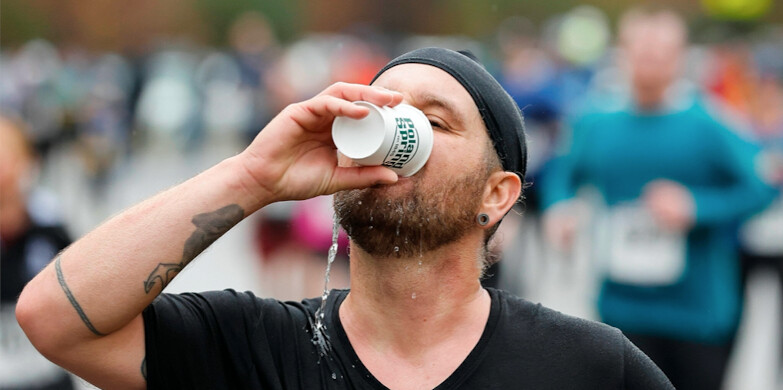
And even though you might first worry about dehydration for those summer runs, researchers found that the newer you are to running and the slower you run, the more likely it is that you will drink too much water while racing. (We’ll talk more about this later.)
To that end, much of the research demonstrates that mastering the art of hydration when you run isn’t as simple as it seems. Keep reading to find out if you drink water the wrong way—and how to drink water right.
6 Ways You Drink Water Wrong and 6 Ways to Drink Water Right
❌ Wrong Way: Gulping water during a race
✅ Right Way: Sip as you run
It’s okay to slow a little to make sure you’re getting in your fluids during a race, but gulping water at each aid station can ultimately slow you down and also lead to an upset stomach.
That’s because drinking too much water too quickly overloads the stomach, causing it to rapidly stretch. This can lead to discomfort and potential nausea, Justin Mullner, M.D., a board-certified primary care sports physician with the Orlando Health Jewett Orthopedic Institute in Florida tells Runner’s World.
Take small sips of water (or electrolyte drink) every 15 to 20 minutes, depending on the temperature and intensity of the run.
Combining a run with too much water is even more likely to cause nausea. That’s because intense exercise directs blood flow away from the stomach and toward the muscles, causing digestion to slow down. “So you put a bunch of water in there and the stomach really can’t handle it effectively and efficiently,” Mullner says.
A better strategy is to take small sips of water (or electrolyte drink) every 15 to 20 minutes, depending on the temperature and intensity of the run. “This approach helps maintain a steady level of hydration and prevents the stomach from becoming overly full,” Meghan Kennihan, a RRCA- and USATF-certified running coach, tells Runner’s World.
❌ Wrong Way: Drinking from a dirty water bottle✅ Right Way: Regularly clean your bottle
Your trusty water bottle is always there when you need it. Sadly, constant use means you’re probably getting more than water. Unless you regularly clean your water bottle—which means daily according to Mullner—you could be getting a dose of bacteria or even mold.
Every time you put your mouth to the water bottle and use your hands to open and close it, you transfer bacteria that can make its way inside. The moist environment inside your water bottle provides an optimal breeding ground for bacteria and mold, especially if you live in hot, humid areas. If left unchecked, the bacteria and mold can continue growing, potentially causing you to experience symptoms similar to food poisoning (such as stomach pain or cramps, diarrhea, and vomiting), per the Centers for Disease Control and Prevention. People with mold sensitivities can have a flare-up of allergy symptoms.Ideally, you’d wash out your reusable bottle—whether plastic, stainless steel, or glass—with soap and warm water each time, Mullner says. “It’s even more important if you’re using the bottle every single day or drinking beverages other than water,” he says. Mixing electrolyte powders or adding a sports drink to your bottle, for example, means more material for bacteria.Signs your bottle could use a good scrubbing include visible residue, a funny or foul odor, or changes in how things taste, Mullner says.
❌ Wrong Way: Waiting too long to hydrate before a run or race✅ Right Way: Start early
When preparing for a long run or race, many runners forget to hydrate until they’re practically toeing the starting line, “which is a bad idea because it doesn’t give the body enough time to absorb and utilize the fluids,” Kennihan says.
Staying well-hydrated in the days leading up to your long run or race can help you perform well, avoid feeling overly full, and reduce restroom stops. Be especially diligent about drinking water starting the day before a long run or race, and check your urine color to be sure you’re getting enough. “Really dark yellow is a sign that you’re not well-hydrated,” Mullner says. “Ideally, it has a slight tinge of yellow.”
Drink 16 to 20 ounces of water about 2 to 3 hours beforehand and then another 8 to 10 ounces 20 to 30 minutes before running.
Individual fluid needs vary. However, a general guideline for the day of the event is to drink 16 to 20 ounces of water about 2 to 3 hours beforehand and then another 8 to 10 ounces 20 to 30 minutes before running, Kennihan says. You may need to adjust your intake according to your body size, run distance, and outside temperature.
❌ Wrong Way: Drinking too much water on long runs✅ Right Way: Balance electrolyte intake with water
It’s critical to drink enough water during long training runs and races. However, drinking lots of water, and only water, can lead to overhydration, meaning you have too much water in your body.
Hyponatremia is an extreme version of overhydration, and occurs when sodium levels in the blood are lower than recommended, leading to muscle cramps, headaches, nausea and vomiting, low energy, and confusion, per the Cleveland Clinic. Normally, your body keeps your electrolytes in balance by taking the minerals from the foods you eat and filtering the excess through your urine. However, intense exercise causes electrolytes (particularly sodium) to be quickly lost through sweat, and hot, humid temperatures only accelerate this loss, per the American College of Sports Medicine.
It's not just new runners who tend to overhydrate. At the other end of the spectrum, 41 out of 63 finishers at an ultramarathon also finished with mild or severe hyponatremia, according to a 2019 Frontiers in Nutrition study.
Take in electrolytes in addition to water if you’re running for longer than 60 minutes or in hot, humid temperatures. Drinking water without replacing electrolytes dilutes the remaining electrolytes (again, sodium in particular) in your blood. “You can potentially get yourself into trouble with hyponatremia,” Mullner says.
To prevent an electrolyte imbalance, take in electrolytes in addition to water if you’re running for longer than 60 minutes or in hot, humid temperatures. Bring an electrolyte drink, some gels, or another electrolyte supplement.
❌ Wrong Way: Drinking a pure sports drink✅ Right Way: Water it down
Sports drinks offer a convenient delivery system for carbs and electrolytes while running. Still, many runners prefer to water things down.
“Many sports drinks are too concentrated, leading to stomach cramps and nausea. Diluting them can still provide the necessary electrolytes and carbohydrates without overwhelming the stomach,” Kennihan notes.
The optimal ratio of sports drink to water depends on your preferences and the makeup of your drink. Mullner suggests diluting your sports drink to the point where it’s most palatable for you.
Diluting sports drinks can still provide the necessary electrolytes and carbohydrates without overwhelming the stomach.
The exception: Don’t dilute a sports drink that contains carbohydrates if you’re using it for energy purposes. “Some sports drinks have carbs in there to help extend the amount of time you can perform, and if you’re trying to absorb carbs better, you would have it with some electrolytes,” Mullner says. Adding water can cut down on how many carbs you get per sip, limiting performance benefits.❌ Wrong Way: You don‘t know about your med’s side effects
✅ Right Way: You read labels and talk to your pharmacist
Some over-the-counter and prescription medications can affect an athlete’s hydration, says Kennihan. NSAIDs, such as ibuprofen and aspirin, can reduce blood flow to the kidneys, which can impair their ability to conserve water and electrolytes, potentially leading to dehydration, especially during prolonged physical activity like running.
Similarly, diuretics, which are prescribed for conditions such as hypertension and edema, increase urine production and promote the excretion of water and electrolytes from the body. Increased urine output can lead to a significant loss of fluids and electrolytes, making it easier for runners to become dehydrated, particularly in hot and humid conditions or during long-distance runs.
Likewise, antihistamines can reduce saliva production and increase the risk of dry mouth and dehydration, while laxatives can cause increased bowel movements and fluid loss.Lastly, stimulant medications, such as those used for attention deficit hyperactivity disorder (ADHD), can increase sweating and fluid loss, potentially leading to dehydration if fluid intake is not adequately maintained.
Bottom line: As a runner, remember that hydration is as much a part of your performance as actual time on your feet.
The authors of a 2019 article published in the International Journal of Sport Nutrition and Exercise Metabolism recommended that runners develop a “personalized and practiced race plan” to optimize their fluid and carbohydrate intake based not only on their distance and intensity, but also taking into account their body composition, as well as the weather and other race conditions, such as refueling stations, at each event.
Login to leave a comment
This Ultramarathoner Runs 100s of Miles to Build Inner Strength and Confidence
“Through ultrarunning, I’ve learned how tenacious and resilient I am.”
Name: Rachel Bambrick Age: 31 Hometown: Philadelphia Occupation: Occupational therapist, ultrarunning coach, founder of Women in Ultrarunning Time Running: 9 years Reason for Running: Running, and ultrarunning in particular, teaches me something new about myself every time I’m out on the trail.
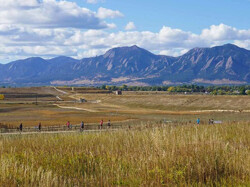
When I moved to Philadelphia in 2016, I wanted to find an active community to meet new people and continue to challenge myself. I laced up my shoes, and started running with run clubs in the city.
In 2018, I watched a friend take part in the Run Across Haiti, a 200-mile run in eight days, organized as a fundraiser for WORK, a nonprofit which financially empowers families through employment.
I knew it would be difficult to push myself through the distance. I had never run an ultramarathon before, but I was determined to see how far I could go. I decided to take the leap and give ultrarunning a try through a worthwhile cause in Haiti.
Inspired by my friend, I completed Run Across Haiti in 2019, raising money for WORK. The adventure made me reflect on what drew me to ultra distances. While fighting sore muscles, scorching heat, and self doubt, I surprised myself that I still continued and succeeded. This journey of self-discovery empowered me to explore my limits.
I kept running ultramarathons following Run Across Haiti, and eventually set my sights on something longer: the epic Cocodona 250-mile race, which leads from Black Canyon City to Flagstaff, Arizona through the rugged and exposed trails of the backcountry.
In May 2023, I set off from Black Canyon City. For more than 119 hours, I wondered if I was strong enough to finish, and if I would make the cut-off time. When I could actually sleep, it was just for an hour or two at aid stations, or curled up in the dirt on the side of the trail.
But I kept moving, and telling myself “I am exactly where I need to be” and “It will get better.” I cried and smiled when I saw the finish line in Flagstaff. I was proud of how far I had come and of my inner strength in those many challenging moments.
I’ve been lucky to reach many starting lines these past few years and meet amazing people. But I felt like something was missing. I wanted to create a space for women to share experiences, knowledge, and support in ultrarunning.
So, I founded Women in Ultrarunning in January 2024 as a four-part program providing women in the Philadelphia area with a space to learn about ultrarunning. The group is a mix of seasoned ultramarathon runners and newer ultra runners who are looking to sign up to their first ultra race.
The first events began at local trailheads with an introduction to ultra running, mental strategy, nutrition, and how to navigate technical trails.
After discussions, we set off through the trails for a 90-minute run, maintaining an average 13-minute-per-mile pace to stay together. Our goal is to foster community and connection, not break speed records. We’re out there to enjoy the company, stay together, and learn from one another. A time-based group run allows us to be pace inclusive and welcome those who may be out on their first trail run.
Women in Ultrarunning is now a community across the United States, and an online community on Heylo to celebrate each other’s successes, help find training partners for runners, and chat about all things ultrarunning, like gear, nutrition, and strength and conditioning. It has been surreal to see an idea that lived in my head grow into fruition and take shape.
Through ultrarunning, I’ve learned how tenacious and resilient I am. I’ve also found a supportive community that I’m proud to be a part of. Because of the Women in Ultrarunning community, I’ve experienced a connection to ultrarunning in a way I never thought was possible.
I hope to be here for years to come with glitter on my cheeks and a smile on my face to continue to cheer on women as they achieve their toughest goals.
These three tips have made my running journey a success:
1. Be consistent and patient with nutrition on the run
Just like training your legs for races, you need to train your stomach for races. Don’t be disheartened if you have a string of discouraging runs. The process can be very rocky, and you may need to try a few brands before you find what works for you! It took me years to be comfortable with fueling on long runs.
2. Remember that trail pace is different than road pace
Getting used to running on rocky terrain, sand, or dirt takes time and practice. While it’s easy to get swept up in paces on the roads, try to run on trails based on effort. Some miles will be slow going! What matters is you are still moving forward.
3. Give yourself grace
Remember in running you’ll have low moments, but what is important is how you pull yourself out of the negativity. Feel the struggle and remind yourself it’s okay to feel down, then put yourself back into a mindset that allows you to continue positively. If you fall or fail, give yourself grace to get back up and continue on.
Rachel’s Must Have Gear:
→ WildSense Run Glitter: My approach to running and ultras is all about adding softness and sparkle wherever I can. Wild Sense’s glitter is all natural and biodegradable so I can feel good about the sparkly little trail I may leave behind.
→ HOKA Challengers: Living in the city of Philadelphia, being a trail/ultrarunner can be tough sometimes! Often my runs have one objective: How can I get to the trails? The Challengers are perfect because they’re designed as all-terrain shoes so I can easily take them from city streets to the trails of the Wissahickon.
→ Zensah Seamless Run Bra: As an ultrarunner, chafing can be a huge issue. Especially with sports bras. This bra from Zensah has been my go-to for all my long efforts and races for years. I used these bras for the entirety of the Cocodona 250 in 2023 and walked away without any bra hotspots.
by Runner’s World
Login to leave a comment
Western States 100: Walmsley Wins a Fourth Time While Schide Rocks the Women’s Field
For hours, Katie Schide (pre-race and post-race interviews) chased ghosts. For hours, Jim Walmsley (pre-race and post-race interviews) and Rod Farvard (post-race interview) chased each other. And in the end, after 100 courageous, gutsy miles at one of the world’s most iconic ultramarathons, it was Schide and Walmsley who won a fast, dramatic 2024 Western States 100.
Schide, an American who lives in France, was on pace to break the course record until late in the race, while Americans Walmsley and Farvard battled throughout most of the second half of the race, alternating the lead as late as mile 85.
Schide’s winning time was 15:46:57, just over 17 minutes behind Courtney Dauwalter’s 2023 course record, almost an hour faster than her own time last year, and the second fastest women’s time ever. Walmsley, meanwhile, won his fourth Western States in 14:13:45, the second fastest time ever — only behind his own record of 14:09:28 that he set in 2019.
Second and third in the men’s race came down to an epic sprint finish on the track between Farvard and Hayden Hawks (pre-race and post-race interviews), who finished in 14:24:15 and 14:24:31, respectively.
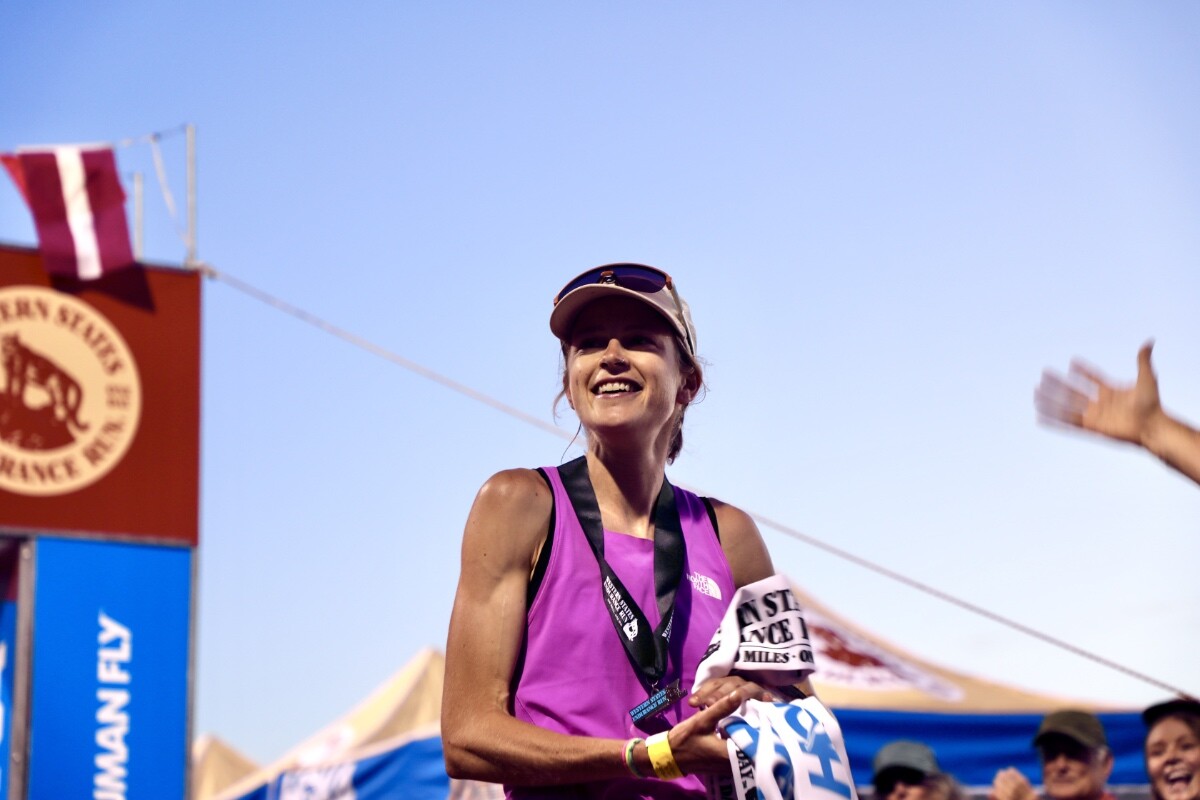
In the women’s race for the podium, Fu-Zhao Xiang (pre-race and post-race interviews) finished second in 16:20:03, and Eszter Csillag (pre-race and post-race interviews) took third for the second time in a row, in 16:42:17.
Both races featured one of the deepest and most competitive fields in race history, with the men’s top five all coming in faster than last year’s winning time, and the women’s top 10 finishing just under 40 minutes faster than last year’s incredibly competitive top 10.
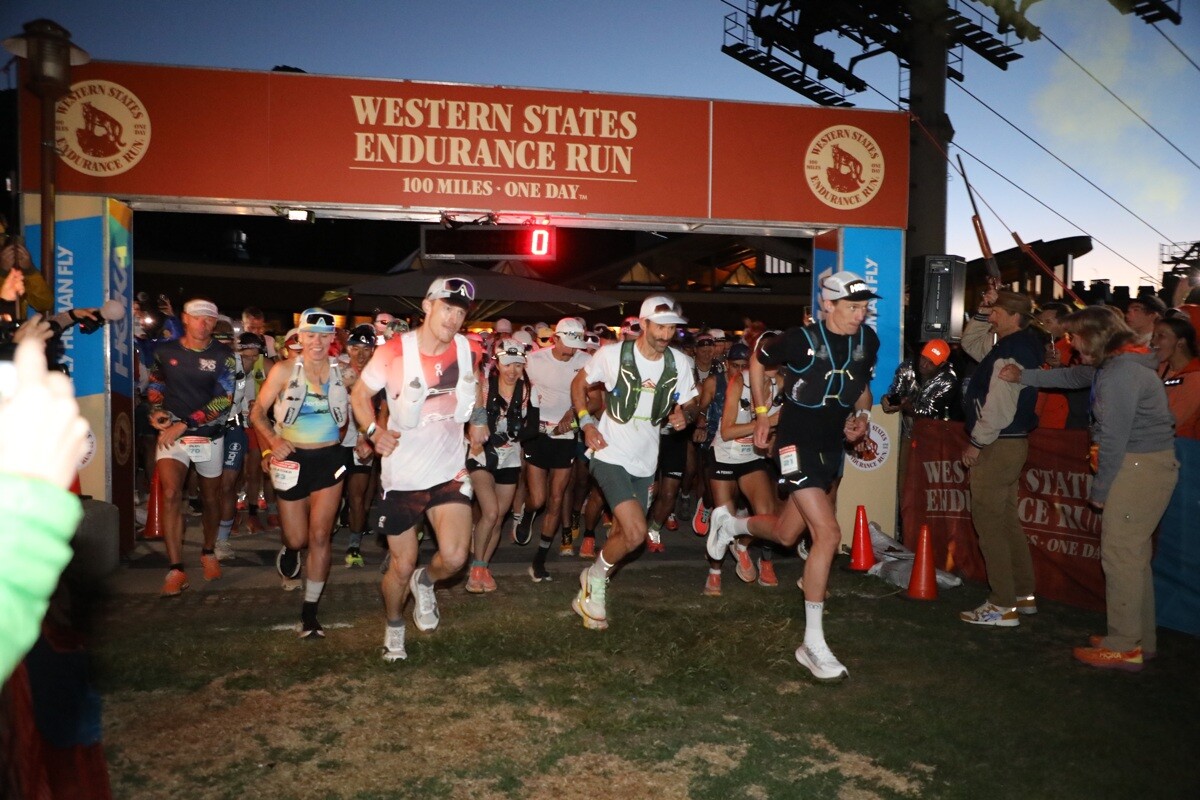
At 5 a.m. on Saturday, June 29, they were all among the 375 runners who began the historic route from Olympic Valley to Auburn, California, traversing 100.2 miles of trail with 18,000 feet of elevation gain and 22,000 feet of loss. After last year’s cool temperatures, the weather at this year’s race was a bit warmer, albeit with a notable lack of snow in the high country. The high temperature in Auburn was in the low 90s Fahrenheit.
A special thanks to HOKA for making our coverage of the Western States 100 possible!
2024 Western States 100 Men’s Race
In his return to the race that propelled him to the heights of global trail running and his first ultra on American soil in three years, Jim Walmsley (pre-race interview) demonstrated why he is, once again, the king of Western States. Before the race, Walmsley exuded a calmness that perhaps eluded him during his first attempts, when he attacked it with an obsessive intensity that led him to famously take a wrong turn and then dropping out in back-to-back years.
“We’ll just roll with what plays out and just kind of see what happens in the race,” he said in his pre-race interview. There’s a marked difference when compared to his remarks from his interview before the 2016 race.
What happened in the race was this: In his fourth Western States, Rod Farvard (post-race interview) had the race of his life to push Walmsley like he’d never been pushed before in his long history with the event.
Farvard — a 28-year-old from Mammoth Lakes, California, who has improved his finish each year at the race, from a DNF in 2021 to 41st place in 2022 to 11th place last year — put himself in a strong position from the start, leading a large pack of runners that included Walmsley at the top of the Escarpment, the 2,500-foot climb in the first four miles of the race. For the next 45-plus miles, Farvard remained in the top 10, part of a chase pack of American Hayden Hawks (pre-race and post-race interviews), Kiwi Dan Jones (pre-race interview), and Chinese runner Guo-Min Deng, among others.
At the Robinson Flat aid station at mile 30 — the symbolic end of the runners’ time in the high country, which features an average elevation of around 7,000 feet — Walmsley, who started the race conspicuously wearing all black, came through in 4:24 looking fast and smooth, now wearing an ice-soaked white shirt. Jones, the 2024 Tarawera 102k champion and fifth-place finisher in his Western States debut last year, and Hawks, who set the course record at February’s Black Canyons 100k after dropping out of last year’s Western States, followed about 90 seconds later. The two runners, frequent training partners, ran together frequently throughout the day, with Hawks often foregoing ice at aid stations.
After the trio of Walmsley, Hawks, and Jones went through Last Chance at mile 43 together, Walmsley put nearly two minutes on them up the climb to Devil’s Thumb. “I was with everybody at the bottom,” he said, according to the race’s official livestream.
About halfway through, at mile 49.5, the order remained the same: Walmsley in the lead with an elapsed time of 6:58, followed by Jones one minute back, Hawks two minutes back, and Farvard just over two and a half minutes back. The rest of the top 10 were last year’s 17th-place finisher Dakota Jones; 2024 Transvulcania Ultramarathon champion Jon Albon (pre-race interview), who is from the U.K. but lives in Norway; 2023 fourth-place finisher Jia-Sheng Shen (China) (pre-race interview); 2023 Canyons 100k champion Cole Watson; Western States specialist Tyler Green (pre-race interview); and Jupiter Carera (Mexico).
Then began a thrilling, chaotic second half of the race — featuring a gripping back-and-forth between Walmsley and Farvard, a wildfire near the course, a two-man river crossing, and a sprint finish on the track.
It all started when Walmsley entered Michigan Bluff at mile 55, again looking calm and in control, changing shirts and getting doused with ice. Farvard came in just behind him and left the aid station first, leading the race for the first time since the first climb up the Escarpment. The same routine took place seven miles later at Foresthill: Walmsley entering first, Farvard leaving first.
For the next 18 miles, the two runners alternated in the lead. By mile 78, they were so close that they were crossing the American River at the same time. Their battle underscored the overall depth of the field at this year’s race: At mile 80, the top five men were within 16 minutes of one another.
Around then, the 15-acre Creek Fire, which started not long before, was visible from the final quarter of the course and crews were temporarily not permitted to travel to the Green Gate aid station at mile 80 because the route to it passed close to the fire. Eventually, a reroute was established for crews to get to Green Gate and, later, after the wildfire was controlled, the regular route was reopened.
At Green Gate, Farvard came through in the lead, with Walmsley four minutes back and looking like he was hurting. It was then, perhaps, that the thought entered people’s minds: Could Farvard really take down the champ?
But Jim Walmsley is Jim Walmsley for a reason, and he again proved why he is among the world’s best. Against the ropes, facing one of his first real challenges in the race that shaped him, he delivered, entering the next aid station, Auburn Lake Trails at mile 85, more than a minute earlier than Farvard. He had made up five minutes in five miles.
Walmsley never trailed again, increasing his lead to 11 minutes by the Pointed Rocks aid station at mile 94 and then picking up his crew, including his wife, Jess Brazeau, at Robie Point to run the final mile with him. He entered the track at Placer High School to loud cheers, his loping stride still looking smooth, stopping a few steps short of the tape to wave to the crowd and raise his arms in triumph. He had done it again.
Behind him, Farvard was fading but determined to cap an extraordinary race with a second-place finish. Hawks, who had made up five minutes on Farvard in the couple miles between Pointed Rocks and Robie Point, was on the hunt, and by the time he stepped on the track, Farvard was within sight.
It was then that fans were treated to one of the most unique sights in all of ultrarunning: After 100 miles of racing, two men were sprinting against each other on a track. In the end, Farvard’s lead held, and he finished 16 seconds ahead of Hawks. He collapsed at the finish line — a fitting end to an epic performance.
Dan Jones ended a strong race with a fourth-place finish in 14:32:29, with Caleb Olson capping an impressive second half of the race — from 11th at mile 53 to fifth in 14:40:12 at the finish. All five men ran a time that would have won the race last year.
Behind Olson came Jon Albon, running 14:57:01 in his 100-mile running-race debut, followed by the surgical Tyler Green, who finished in seventh for his fourth straight top 10 finish at the race. Green’s time of 15:05:39 also marked a new men’s masters course record, breaking the 2013 Mike Morton record of 15:45:21.
Rounding out the top 10 were Jia-Sheng Shen in eighth with a time of 15:09:49, Jonathan Rea in ninth who methodically moved his way up during the last 60 miles to finish in 15:13:10; and Chris Myers in 10th in 15:18:25.
2024 Western States 100 Women’s Race
Through the high country, into and out of the canyons, and along the river of the world’s oldest 100-mile trail race, Katie Schide (pre-race and post-race interviews) raced only the ghosts of the clock and history. Smiling throughout, she seemed unaffected by the solitude and the enormity of the possibility that lay before her: to attempt to break the course record of one of the world’s most iconic trail races.
Schide, an American who lives in France, came into the race as the clear favorite, and for good reason: She finished second last year, breaking Ellie Greenwood’s previously untouchable 2012 course record by more than three minutes and losing to only Courtney Dauwalter, who broke Greenwood’s record by an astounding 78 minutes on her way to a historic Western States-Hardrock 100-UTMB triple win. Schide, winner of the 2022 UTMB and 2023 Diagonale des Fous 100 Mile, spent the last two-and-a-half months in Flagstaff, Arizona, training for Western States, winning this year’s Canyons 100k in an impressive tune-up and putting in a monster training block.
In her pre-race interview, Schide said that she had thought about ways to improve her race from last year, which perhaps should have been the first warning to her competition. The second, then, was her immediate separation from the women’s chase pack: She summited the Escarpment, a 2,500-foot climb during the first four miles, in first place and never looked back. By the first aid station — Lyon Ridge at 10 miles — she was already 12 minutes under course record pace, and by Robinson Flat at mile 30, she was 21 minutes ahead of second-place Emily Hawgood (pre-race interview), from Zimbabwe but living in the U.S.
The lead only ballooned from there. By Dusty Corners at mile 38, Schide was an incredible 26 minutes under course record pace, and though she lost a few minutes from that pace by the time she climbed up to Michigan Bluff at mile 55, her smile had not waned even slightly. She smoothly entered the iconic aid station, doused herself with ice, changed shirts, and was soon on her way. She never sat down.
Twenty-seven minutes behind her was Hawgood, looking to build on back-to-back fifth-place finishes. Eszter Csillag (pre-race and post-race interviews), a Hungarian who lives in Hong Kong, followed soon after, in the same third spot she finished in last year.
After them ran a dense pack of women: Only 16 minutes separated Hawgood in second from Lotti Brinks in 11th.
At the halfway point, the top 10 were Schide, 33 minutes up in an elapsed time of 7:26; Csillag; Hawgood; Chinese runner Fu-Zhao Xiang (pre-race and post-race interviews), the fourth-place finisher at last year’s UTMB; Lin Chen (China); American Heather Jackson, a versatile former triathlete who recently finished fifth at a competitive 200-mile gravel bike race; ultrarunning veteran Ida Nilsson (pre-race interview), a Swede living in Norway; Becca Windell, second in this year’s Black Canyon 100k; 2023 CCC winner Yngvild Kaspersen (Norway); and Rachel Drake, running her 100-mile debut.
Schide, easily identifiable in her pink shirt, maintained her large lead throughout the second half of the race, remaining calm, controlled, and upbeat throughout the tough canyon miles. By Foresthill at mile 62, she was 19 minutes ahead of course record pace and 48 minutes ahead of the second-place Xiang. Schide’s stride still looked smooth as she waved to fans and even high-fived a cameraman.
Schide’s aggressive pace eventually slowed — by Green Gate at mile 80, her lead on the course record had dissipated — but her spirits did not. After a quick sponge bath at Auburn Lake Trails aid station at mile 85, she fell behind course-record pace for the first time all day, only 15 miles remained until the finish.
Schide entered the track a couple of hours later, running with her crew and no headlamp. She would finish before dark. She stopped for a hug on the final straightaway and lifted the tape with, of course, a smile.
Xiang had methodically pulled away from Hawgood and Csillag during an incredibly strong second half to win the battle for second. Fu-Zhao Xiang finished in 16:20:03 for the third fastest time in race history. Chen, who dropped out at mile 78, was one of the few elite runners who had a DNF on this day, which was categorized by a lack of attrition in both the women’s and men’s elite races.
Eszter Csillag came in about 22 minutes behind Xiang in 16:42:17 for her second consecutive third-place finish, a 30-minute improvement from last year — a statistic that perhaps exemplifies the speed of this year’s race better than any other.
The battle for fourth and fifth was nearly as close as Farvard and Hawks’s race for second in the men’s race a couple of hours earlier.
At Pointed Rocks at mile 94, Hawgood led by barely two minutes, running hard and straight through the aid station. Kaspersen, meanwhile, was drinking Coke and made up almost a minute by Robie Point.
Emily Hawgood’s lead ultimately held, and she finished fourth in 16:48:43 to improve her finish from prior years by one spot. Yngvild Kaspersen was less than two minutes back in 16:50:39. Ida Nilsson capped a strong day to finish sixth in 16:56:52 and break Ragna Debats’s masters course record by almost 45 minutes. That means the top six women all finished in under 17 hours in a race that had only ever had three women finish under that mark — and two of them, Dauwalter and Schide, were last year.
The rest of the top 10 were Heather Jackson in seventh in 17:16:43, and, in close succession, Rachel Drake in 17:28:35, Priscilla Forgie (Canada) in 17:30:24, and Leah Yingling in 17:33:54.
The top 10 women were all faster than the 12th-fastest time in race history going into the day.
by Robbie Harms
Login to leave a comment
Hardrock 100
100-mile run with 33,050 feet of climb and 33,050 feet of descent for a total elevation change of 66,100 feet with an average elevation of 11,186 feet - low point 7,680 feet (Ouray) and high point 14,048 feet (Handies Peak). The run starts and ends in Silverton, Colorado and travels through the towns of Telluride, Ouray, and the ghost town...
more...Why you should splurge on a medical pedicure
Runners’ feet take quit a beating in training and competition. Calluses, bunions, black toenails or no toenails at all are things most runners deal with, but even mild foot pain can cause you to unconsciously alter the way you walk and run, which leads to compensation and compromises your muscles and joints in other ways. If it gets to the point where your foot or feet are painful, it’s time for a trip to your local salon for a pedicure–while skipping the nail polish.
A medical pedicure, or “medi-pedi,” is a footcare practice more closely resembling a medical procedure than your typical nail appointment. The specialized treatment targets the overall health of your feet, rather than just their appearance.
Typically, the longer your race distance, the more foot issues you will deal with. Ultramarathoners are definitely familiar with the pain that even the smallest blister can cause, and need to take extra steps to care for their feet. Especially at these distances, when no amount of moisturizer or blister bandages can provide you with relief, you’ll be prompted to take more serious interventions.

Your technician, a trained chiropodist, will assess your foot for underlying health conditions such as warts, ingrown toenails, athlete’s foot or fungal infections and will address the discomfort you may be experiencing. The procedural steps include sanitizing, trimming and filing your toenails, softening and buffing thick calluses and intensive moisturizing. Believe it or not, the calluses you’ve developed over time to toughen up your feet can become too thick and eventually cause your skin to crack.
The treatment will not only leave your feet feeling smooth and soft, but will also set you up to avoid painful blisters, worsening infections, black toenails or ingrown toenails. The technician also provides advice for properly caring for your feet to treat and/or prevent future issues.

Follow-ups for your medi pedi should be done every three to six months, but you can go more often until your discomfort is properly addressed. There are two drawbacks to the procedure: being in a doctor’s office makes it a little less relaxing than your typical spa day, and the price tag accompanying the service could be $200 or more. On the bright side, it is much more sterile than a salon, and may be covered by your private health insurance. Running pain-free does sound like a pretty good return on your investment!
by Cameron Ormond
Login to leave a comment
2024 Western States 100 Results: Walmsley Wins a Fourth Time While Schide Rocks the Women’s Field
For hours, Katie Schide chased ghosts. For hours, Jim Walmsley and Rod Farvard chased each other. And in the end, after 100 courageous, gutsy miles at one of the world’s most iconic ultramarathons, it was Schide and Walmsley who won a fast, dramatic 2024 Western States 100.
Schide, an American who lives in France, was on pace to break the course record until late in the race, while Americans Walmsley and Farvard battled throughout most of the second half of the race, alternating the lead as late as mile 85.
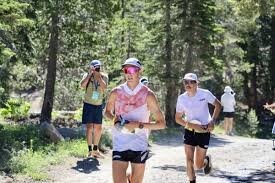
Schide’s winning time was 15:46:57, just over 17 minutes behind Courtney Dauwalter’s 2023 course record, almost an hour faster than her own time last year, and the second fastest women’s time ever. Walmsley, meanwhile, won his fourth Western States in 14:13:45, the second fastest time ever — only behind his own record of 14:09:28 that he set in 2019.
Second and third in the men’s race came down to an epic sprint finish on the track between Farvard and Hayden Hawks , who finished in 14:24:15 and 14:24:31, respectively.
In the women’s race for the podium, Fu-Zhao Xiang (pre-race interview) finished second in 16:20:03, and Eszter Csillag took third for the second time in a row, in 16:42:17.
Both races featured one of the deepest and most competitive fields in race history, with the men’s top five all coming in faster than last year’s winning time, and the women’s top 10 finishing just under 40 minutes faster than last year’s incredibly competitive top 10.
At 5 a.m. on Saturday, June 29, they were all among the 375 runners who began the historic route from Olympic Valley to Auburn, California, traversing 100.2 miles of trail with 18,000 feet of elevation gain and 22,000 feet of loss. After last year’s cool temperatures, the weather at this year’s race was a bit warmer, albeit with a notable lack of snow in the high country. The high temperature in Auburn was in the low 90s Fahrenheit.
A special thanks to HOKA for making our coverage of the Western States 100 possible!
Login to leave a comment
How Many Carbs Are in Spring Energy, Really?
This fruit-based energy gel, once touted for its high-carb intake and low volume, contains about a third of calories than advertised, multiple independent nutritional analyses suggest
For the past 10 years, Spring Energy has provided endurance athletes with energy gels, and more recently drink mixes, made from “real” foods. Athletes looking for wholesome alternatives to more traditional sugar-based gels made in a lab have flocked to Spring’s smoothie-like gels made with fruit and basmati rice.
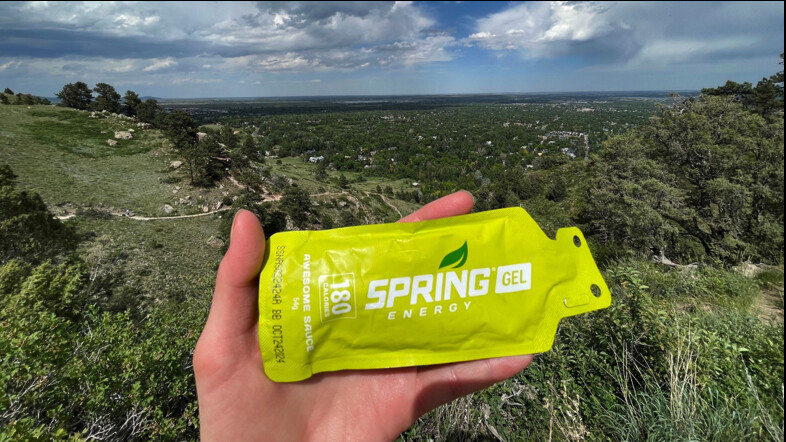
While Spring products are more expensive than many gels, many athletes have found the tradeoff for high-quality, real food fuel that goes down easily on the run to be worth it. Until now.
After skepticism about the actual contents of Spring’s gels began brewing late last year, it turned into a full-blown controversy this week.
In January 2021, Spring Energy released a game-changing gel, Awesome Sauce. In collaboration with coaches and runners Megan and David Roche (who taste-tested and named the flavor), the applesauce, basmati rice, and sweet potato-based gel was designed to provide endurance athletes with a whopping 180 calories per 54 gram packet.
This high-carb alternative became especially enticing when a study was published in April 2022 reporting that ultrarunners should consume 240 to 360 calories (60-90 grams of carbohydrates) per hour. It’s no surprise that Awesome Sauce (sold at $5 a gel), with its small but surprisingly mighty nutritional content, initially flew off the shelves. It seemed too good to be true.
After several third-party lab tests, that appears to be the case.
In late 2023, runners took to Reddit to discuss their doubts in Awesome Sauce’s nutritional facts, which were printed on the packaging and stated on Spring Energy’s website. Though it’s unclear who first performed a concrete test on the gel, two months ago, Liza Ershova, a Reddit user who uses the username “sriirachamayo”, posted in a thread called “False nutritional info on Spring Energy gels.” Ershova allegedly performed a test “in an environmental chemistry lab” and found that the dry weight of Awesome Sauce is 16g instead of the stated 45. She hypothesized that, “If all of those grams are carbs, that corresponds to about 60 calories, not 180.”
On May 17, German endurance sport speciality shop Sports Hunger released a video stating that they, too, had Awesome Sauce gels tested by a third party, and allegedly found that each packet contains 16g of carbs instead of the 45g that Spring Energy claimed.
“The maker of Spring Energy assures us that they will rework their manufacturing process to ensure that they will again reliably achieve their high numbers that they declare to have,” a Sports Hunger representative says in the video. “We hope that this is really going to happen because we believe that natural food for many of our customers is a great alternative to the regular gels.”
On May 28, ultrarunning coach Jason Koop, who coaches elite athletes sponsored by Spring Energy, posted an Instagram Reel saying that he’d paid for Spring Energy Awesome Sauce to be tested by a third party, RL Food Laboratory Testing in Ferndale, Washington. The results showed that the gels tested contained 76 calories and 18g of carbs. The lab results can be found on Koop’s website. Koop declined to be interviewed for this article.
Other runners have also come forward after attempting to replicate the gels with varying degrees of Awesome Sauce’s ingredients: organic basmati rice, organic apple sauce, apple juice, yams, maple syrup, lemon juice, vanilla, sea salt, and cinnamon—and could not achieve the gel’s original volume of 54g. Their experiments suggest that it’s impossible to fit all of those ingredients into the small Awesome Sauce package while achieving the stated nutritional content.
On May 22, the Ershova shared Spring Energy’s response to their experiment on Reddit: “Our analysis supports the accuracy of our product labeling. However, we will reevaluate to make sure our data is accurate. Although we hoped your experience with our products would have been wholly satisfactory, we recognize that individual needs can vary. Given the wide variety of options available across different brands, we are confident you will find the right product that suits your specific requirements.”
Four days later, on the Sunday of Memorial Day weekend, Spring Energy sent out an email to newsletter subscribers stating:
“In early May we submitted Awesome Sauce for third-party caloric and biomolecular analysis. Although the results indicated that on average our products deliver the designed nutrition value, we have recognized weaknesses in our processes and ingredients which can introduce unwanted variations in some batches.To mitigate those variations in our small batch production, we decided to modify some of the formulations, revise and innovate processes, and re-evaluate ingredient sources. These changes will bring higher quality and more consistency to our products. Enhancements of our products aimed to stabilize their nutrition values are on the horizon, and within the next few weeks, you’ll see the results of our efforts. A new and improved version of Awesome Sauce will soon be available.”
The internet outrage ballooned swiftly.
“‘On average’ – if someone has a beat on where I can grab packets of Awesome Sauce at 75g of carb per pack to allow for the average of their product to be 45g overall, hit my inbox,” @aidstationfireball posted on X. “Excited to taste the new, re-formulated, $7 gels they’ll replace these with.”
David and Megan Roche, the Boulder, Colorado-based running coach couple who collaborated with Spring Energy on Awesome Sauce, discussed the backlash on their podcast. They weren’t involved in the chemical composition and makeup of the gel, they claimed. Rather, they simply proposed the concept of a high-carb gel to their friend Rafal Nazarewicz, the founder and CEO of Spring Energy. They stated they understand the public’s outrage, and Megan added that they “didn’t really use it” during their runs because she didn’t feel that her body was responding to the energy it was supposed to provide.
In addition, the Roches stated on their podcast that they have quietly harbored concerns about Awesome Sauce for years, and while they did not explicitly tell their athletes not to use it, they made a point of promoting other gels instead. (The Roches currently have a financial partnership with The Feed, the online warehouse that sells a wide variety of sports fuel, including Spring Energy.)
David elaborated in a lengthy Instagram post on May 29: “It’s sad and infuriating that the nutrition was wrong, and we are thankful to the really smart people who figured it out on Reddit (including an athlete we coach who started the initial thread). When we described concerns to Spring, we were assured that the nutrition was correct and they followed all FDA regulations. We left the Spring sponsorship years ago, and we never received compensation for proposing the name/doing taste testing (outside of the $200 per month that we both received during the sponsorship). Since then, we have publicly directed athletes to other options for high-carb fueling, while hoping to be a source of love and support in the community. Our podcast covered our concerns as soon as the German lab testing indicated that we wouldn’t be risking making defamatory statements about a business without substantial evidence.”
While concerns around Awesome Sauce instigated this investigation, it’s not the only flavor under scrutiny. Koop sent additional Spring Energy gels, Canaberry (named after professional ultrarunner Sage Canaday) and Hill Aid, to the lab for testing. The results indicated that both of these flavors also contain fewer calories than stated on their nutrition labels.
The lab results showed that the batch of Canaberry that was tested contains 10g of carbs (versus the stated 17g), and the Hill Aid sample contains 10g of carbs (versus the stated 20g).
Koop also paid for Gu Chocolate Outrage to be tested. The results were consistent with the nutrition facts. All three of these reports can also be found on Koop’s website.
These vast discrepancies between Spring Energy’s reported nutrition facts and the lab results raise the question: which gels can be trusted?
According to the U.S. Food and Drug Association (FDA), most running gels fall under the category of “dietary supplements”, which don’t have to be approved before being sold. However, the FDA requires that all dietary supplements have nutrition information clearly marked on a product’s packaging (including serving size, number of servings, and ingredients) and periodically inspects manufacturing facilities to confirm that products meet the labeling requirements. The FDA also reviews product labels for accuracy.
“Dietary supplements are regulated by the FDA, but much of our role begins after products enter the marketplace. In fact, in many cases, companies can produce and sell dietary supplements without even notifying the FDA,” the FDA states on their website.
The FDA allows nutrition labels to have an inaccuracy margin of up to 20 percent—for reference, based on multiple lab results, Awesome Sauce’s caloric content is about 57 percent less than what the label says.
Sports psychologist and ultrarunning coach Krista Austin works with some of the top endurance athletes in the world, and is best known for training Meb Keflezighi to his 2009 New York City Marathon win. She recommends several products out on the market to her ultrarunner athletes, as well as suggestions that might work with a person’s individual plan. Typically, she suggests that athletes rotate gel flavors to avoid flavor fatigue, which can impact an athlete mentally and derail performance. So if a certain brand is proven to work well for an athlete, she says, use a variety of flavors.
“I usually use high molecular weight carbohydrates, but the thing is, they’re not as sweet as other sports nutrition products out there,” says Austin, who owns a consulting business providing sport performance services to Olympic and professional athletes as well as military and industry personnel. “So what we’ll do is we might throw in another gel like the Awesome Sauce to help give them that sweet component. It’s just in their arsenal.”
She says, in general, her athletes who have consumed Awesome Sauce have had positive experiences, but that because these gels were just one part of the fuel plan, that muddies the waters a bit. In addition, the potential lower calorie count of this gel may make it easier to digest. However, Austin recalls that one of her clients was taking in one Spring Energy gel (multiple flavors) every hour in her ultra, but found herself so hungry that she needed to eat a lot of the food provided at aid stations on the course, too.
“She was a smaller ultrarunner, and I thought it was interesting that she was taking in all these calories,” Austin says. “She was using Spring Energy gels, and I now I’m thinking, ‘Maybe this is why she needed all the additional food on the course, too, because she wasn’t getting what we thought she was.’”
Ultramarathon dietician Julie Shobe is surprised and disappointed in the news about Awesome Sauce. “My clients and myself bank on the efficiency of the gel being easy and light to carry,” she says. “Underfueling within a long run can create acute symptoms like low energy, nausea, or brain fog. Ultrarunners find themselves in dangerous situations on long runs and races, and are often in remote areas, so unintentionally underfueling could have negative consequences.”
Austin says runners can still rely on information they’re receiving about endurance fuel, but that it’s always possible there are, as Spring Energy suggests, bad batches. She’s leaning toward this being the reason for the nutritional inaccuracies (keeping an open mind that more information can come out) because she’s had experiences with bad batches of gels in the past, where the product tasted off and she brought it to the attention of the brand, who confirmed it was an error on their part.
By May 30, Spring Energy had removed Awesome Sauce from its website, although it can still be purchased in the All Inclusive and Vegan Spring sampler packs. There, Awesome Sauce is described as, “our best-seller, has been created for all carb lovers who want to fuel in a healthy way, with wholesome products free of added sugars!”
Nashville Running Company owner Lee Wilson has made the decision to take Awesome Sauce, Canaberry, and Hill Aid off store shelves. “It came down to the integrity of it,” Wilson says. “After the other flavors came out with the test results, we decided we can’t sell it.”
Nashville Running Company crew member Eric May added that this whole ordeal is disappointing, especially because the gel was so popular in the community.
“We used to have people come in when we got shipments and walk out with boxes of them,” May says. “It’s a bummer.”
He adds that a few customers have remarked that they still really enjoy Awesome Sauce and will keep using it.
“How a company reacts to the issue tells you a lot about them, and the fact that they’ve taken down their product, it means they’re probably doing their homework to see what’s going on,” Austin says. “I would say, give them a chance to rectify the situation.”
Sabrina Stanley, a pro ultrarunner from Silverton, Colorado, has used Awesome Sauce frequently in the past, but says she stopped eating it when she felt she was taking in three times what she should be consuming to keep hunger at bay. She adds that though it’s a huge disappointment that athletes thought they were buying a gel under the impression it was a different product, the company is the only party at fault.
“Professional athletes aren’t responsible for making sure the nutrition label is correct,” Stanley says. “They are often sub-contracted to give opinions and help promote a product in hopes of making a few extra dollar to continue doing what they love. They aren’t in the lab developing the product and writing the nutrition label, like the consumers, they are trusting the hired them to do their due diligence.”
On May 29, Spring Energy released an official statement on its Instagram, with Nazarewicz saying they’ve identified weaknesses in the manufacturing process, and that only some batches were accidentally made with varying nutritional values. Nazarewicz apologized and stated Spring Energy is introducing changes to its process and hopes to continue its mission toward making real food performance products.
“Spring Energy has admitted to inconsistencies in their product and also said in a recent IG post this was not intentional or malicious,” Shobe says. “However, to be this far off from your stated nutrition label deserves some major inspection. The whole thing made me question not only the integrity of their products but the nutritional labels of other products. Why, as a dietician, didn’t I become more suspicious of Awesome Sauce in the first place?”
by Outside Online
Login to leave a comment
There might have been cheaters at the Comrades Marathon
An investigation into allegations of cheating at the recent Comrades Marathon is underway, the race organisers have announced.
The Comrades Marathon Association (CMA) had underlined in the build-up to the 2024 event which took place on 9 June, that there would be a zero-tolerance approach towards cheating.

Before the event, over 50 runners were prevented from taking part due to fraudulent entry submissions, some of which involved getting others to achieve the required qualifying time.
The 86km ultramarathon alternates from an ‘up’ route from Durban to Pietermaritzburg – as it was this year – to a ‘down’ version in reverse.
Known as the ‘Ultimate Human Race’, it is hugely popular, with hundreds of thousands of spectators lining the route, national TV coverage, high prestige and big prizemoney.

This year there were 18,884 starters – and 17,313 finishers.
Looking for ‘anomalies or inconsistencies’
But in a statement released on Thursday the CMA said: “The Office has received a number of tip-offs from concerned participants and spectators who have reported several instances of suspected cheating within the duration of the race.
“In addition, the CMA has continued to receive information from athletes and clubs regarding the submission of fraudulent qualifying information.
Ann Ashworth, the CMA Race & Operations Manager, stated that while she is aware of various social media posts allegedly exposing several athletes of cheating at the event, the CMA has yet to communicate the full and final results of its investigations to KwaZulu-Natal Athletics and has not yet publicly identified those athletes whom it suspects of cheating.
The statement continued: “We are currently working through the full set of electronic results provided to us by FinishTime with a view to identifying any anomalies or inconsistencies within the results.
“Our Office is also working through data which suggests that several athletes missed the non-disclosed (or secret) timing points along the route, the purpose of which was to identify runners who engaged in course cutting. All inconsistencies will then be compared to any photographic evidence available.”
Issue with first timing point
Ashworth has also indicated that the CMA is aware of a problem which occurred at the first timing point (at approximately 5km) and assures athletes that the absence of a timing reading at this particular point is not necessarily indicative of course cutting.
The statement concluded: “The CMA hopes to conclude its investigations over the next few days after which the names of all race day cheats will be provided to KwaZulu-Natal Athletics for disciplinary action.”
Login to leave a comment
Comrades Marathon
Arguably the greatest ultra marathon in the world where athletes come from all over the world to combine muscle and mental strength to conquer the approx 90kilometers between the cities of Pietermaritzburg and Durban, the event owes its beginnings to the vision of one man, World War I veteran Vic Clapham. A soldier, a dreamer, who had campaigned in East...
more...How to Find Your “Sweet Spot” Race Distance
Expert advice for focusing on your best event to maximize your running potential.Ever notice that some runs and races are more satisfying than others? These workouts aren’t necessarily the easiest runs or even the ones that are the most fun. Instead, they’re fulfilling because the distance feels challenging, but doable. You collect your medal and walk away thinking, “I bet I can do even better next time,” rather than, “thank goodness that’s over.”
If you have already clicked with a specific distance, you may have already found your running “sweet spot,” or the race length that fires up your inner athlete and gets you training for your next PR. But if you’re new to running or haven’t yet hit your racing stride, some experimentation and a little self-reflection will help you determine where to focus your time and effort when registering and training for events. To help you land on your sweet spot (and figure out what to do when you get there), we chatted with a few run coaches who have worked with athletes of all levels of experience and race preferences. Here’s what you need to know.
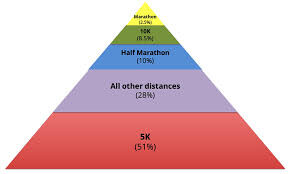
What factors determine your sweet spot race distance?
Before you declare yourself a 10K devotee or commit to running a marathon in every state, give yourself adequate time to build a personal relationship with running and experience different races.
“I don’t know if there’s really a set amount of time required to figure this out,” Matt Forsman, USATF/RRCA-certified running coach and race organizer at Sasquatch Racing, tells Runner’s World. “Some people run for years before determining what distance is their sweet spot. For others, a certain distance immediately speaks to them. If you’re new to running, I’d say give yourself at least six to nine months to build some running fitness, try a few distances, and go from there.”
As you rack up the miles and try different races on for size, it can be helpful to keep these factors in mind:
Fitness and Experience
“Your current level of running fitness should be an important part of the calculus in determining what race distance is best for you,” Forsman says, noting that shorter distances like 5K and 10K, while they present their own unique challenges, are generally more beginner-friendly than half marathons and marathons.
You may find that, even as a newbie, these shorter distances enable you to make noticeable progress that’s reflected in your race times. These wins are valuable, as they can keep you engaged and motivated.
Schedule and Lifestyle
Anyone who’s trained for a marathon or ultramarathon will tell you how all-consuming it can be. Some people have the necessary bandwidth or a flexible schedule. Others have the support and resources to fit training between competing priorities, like work, family obligations, and social events. But if you simply don’t have the time and energy to train for a specific distance, it’s probably not your sweet spot.“You should fit running in and around your life and not life in and around your running,” Todd Buckingham, Ph.D. exercise physiologist at PTSportsPRO in Grand Rapids, Michigan tells Runner’s World. “We do this because it’s fun. We do this because we want to push ourselves. But hopefully not to the extent of alienating friends and family. You need to find a distance that will work with your life.”
Location
If you train outdoors, you will always contend with temperature, climate, and terrain. Therefore, where you live will likely play a role in determining your sweet spot, Will Baldwin, USATF and VDOT-certified running coach in Flagstaff, Arizona tells Runner’s World
“If summer temperatures soar, focusing on local 5Ks instead of marathon training will be much more manageable,” Baldwin says. Of course, you can beat the heat by logging miles before or after sunrise, running on a treadmill, but workarounds often require extra planning and schedule adjustments. The same goes for training in frigid, icy temps.
In some cases, your zip code may present an advantage, as year-long temperate weather and extended daylight hours open up more opportunities for longer outdoor training runs.
“And if there’s a fantastic trail system nearby with plenty of races, it’s the perfect chance to test those trail-running skills and have some fun with it,” Baldwin adds.
Past Performance
Your race history is a clue to where your natural talents lie, which can help inform your sweet spot. “Genetics do play a role,” Buckingham says. “Some people have the diesel engine where they can just go all day long, but they can’t go any faster…other people are really good at short distances but struggle at long distances.” Buckingham and Baldwin recommend checking out online tools like the VDOT Running Calculator, which uses one race distance time to determine your estimated time for other distances. Runner’s World also has an easy-to-use race time predictor. Say, for example, your half-marathon PR is 2:10. The calculator uses this information to suggest an exhaustive list of predicted race times, including a 58:40 10K. However, if your 10K PR is actually 56:10, you may be better suited to the 10K.
“Athletes can use this tool to see which of their PRs is the most distinguished for each distance, helping them determine their ideal race distance,” Baldwin says.
You can also garner a lot of information by participating in local races and looking at race results. “See where you finish in relation to other people your age and sex because that will probably tell you just as well,” Buckingham says.
Injuries
“I think it's important to consider any aggravations and injuries you’ve incurred,” Forsman says. “Running is a high-impact sport that generates about three to seven times your bodyweight in impact force per foot strike. If you have [had] a number of injuries in your recent or distant past, shorter distances like the 5K or 10K may make the most sense. Conversely, if you’ve never had any running-related injuries and your running fitness level is high, a longer distance might work great for you.”
Your Happiness and Enjoyment
Do you notice that some races are simply more fun than others? Pay attention to those gut-level feelings, even if they contradict all of the other data you’ve collected, Baldwin says.
“When figuring out an athlete’s ideal race distance or their sweet spot, I love to start with what excites them the most,” he says. “Even if someone shines in a 10K or half marathon, their heart might be set on the full marathon. Passion is often the fuel source of consistent training, so tapping into that excitement is really important.”How do you level up in your sweet spot race distance?
Once you find your sweet spot, you may need to make some adjustments to your running routine because a training program should be tailored to your upcoming event, if you plan to race.
“If you’re currently running a few easy miles a few times a week but really want to run a fast 5K, you’re going to need to inject some ‘quality,’ like tempo, intervals, and hills, to develop strength and speed,” Forsman says. “If you want to simply tackle a longer distance like a half or full marathon, you’re going to need to gradually add some more miles into your training to build stamina and endurance.”
Focusing on one distance also allows you to fine-tune your fueling and hydration strategy, especially if you opt for longer distances. “If the event we’re training for is going to take us over 90 minutes to complete, we have to start talking about and practicing fueling. We’ll need to incorporate either some liquid fuel or energy gels to help us finish the race and utilize all of our fitness,” Baldwin says. “It’s an added expense to have fuel for all of the important long runs and races, so it’s also something to consider when choosing your ideal race distance,” he adds.
Are there downsides to sticking with one race distance?
It can be rewarding to climb the ranks in sweet spot events, but the experts caution against getting too “stuck” in your sweet spot.
“You should definitely be mixing up the types of races you do,” Baldwin says. “It’s common for a marathon runner to come to me who has been stuck at a certain level for years. When I go back through their training history, they almost always have been doing only marathons for several years in a row. They’ve neglected the shorter races, speed work, and their leg turnover.” Baldwin explains that training at different paces engages different energy systems, and temporarily focusing on shorter, faster distances can improve your speed and efficiency, even on slower endurance runs.
The same concept applies to runners with a shorter sweet spot. “If shorter distances like the 5K or 10K are your thing, there’s still utility in tackling longer distances. Training for a longer distance can help you better manage fatigue in the latter stages of your 5K or 10K,” Forsman says.
Plus, you could miss out on what got you hooked on running in the first place. “Professional athletes have to specialize and really just focus on one event because that’s how they earn their livelihood. But the average runner should have fun with it,” Buckingham says. “If you have fun doing one race distance, that’s fine. But don’t be afraid to jump in the local 5K if your friends ask you to join them.”
by Runner’s World
Login to leave a comment
Comrades Marathon: Gerda Steyn Sets Course Record; Piet Wiersma Wins Men’s Race
At the 2024 Comrades Marathon, South African Gerda Steyn sets a course record in her third win while Dutchman Piet Wiersma gets his first victory.
At 5:30 a.m. on Sunday, June 9, in the raucous darkness of Durban, South Africa, more than 20,000 runners, powered by nerves, adrenaline, and the “Chariots of Fire” theme song, crossed the start line of the 2024 Comrades Marathon to take part in the oldest and largest ultramarathon in the world: nearly 86 kilometers of road running throughout the hills of South Africa’s KwaZulu-Natal province. It was the 97th running of the event, which has only missed four editions since World War I veteran Vic Clapham started it in 1921 to commemorate the lives of South African soldiers.
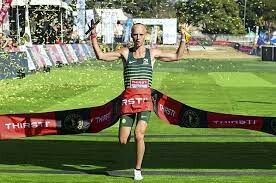
Two of the runners — Gerda Steyn, of South Africa but who lives in the United Arab Emirates, on the women’s side and Piet Wiersma of The Netherlands on the men’s — cemented their names in race lore by taking home wins, and sizable paydays, in their respective races. The race has a massive prize purse, with a total 4,092,000 Rand ($217,000) on the line.
Steyn, the defending champion, broke her own course record for the Up run direction by more than nine minutes for her third win at Comrades. She also holds the women’s course record for the Down run when the race is held in the opposite direction, which she set in 2023.

Wiersma, meanwhile, backed up his impressive Comrades debut last year — where he finished second only three seconds behind the winner — with his first win at the race.
The Comrades Marathon famously alternates the direction each year, and this year’s race, which was run in relatively ideal conditions with temperatures ranging from the mid-50s to low-70s Fahrenheit, was the 49th Up race, meaning runners began in the lower-altitude Durban and ended in the higher-altitude Pietermaritzburg. The race featured around 1,750 meters of elevation gain, with most of it during the first half of the race, when the course runs through three of its “Big Five” hills. The Up run, therefore, demands a smart, measured racing strategy.
For the race’s first half, Piet Wiersma (The Netherlands) seemed content to stay conservative and save his energy for the back half. A two-man pack of Jobo Khatoane (Lesotho), looking for his first Comrades finish, and Aleksei Beresnev (Russia), back for a second time after debuting inside the top 10 last year, were within a minute of each other at Drummond, around the halfway mark, with the next runner more than five minutes back and Wiersma sitting in 10th, almost nine-and-a-half minutes off the lead.
But then Wiersma dropped the hammer, increasing his pace to 3:37 per kilometer from 3:58 per kilometer to jump into the top five by the Cato Ridge checkpoint at 56.6 kilometers into the race. That seemingly set the tone for big moves for the race’s second half, where Beresnev was still holding the lead and followed by Degefa Yohannese Lafebo (Ethiopia). With this race, Lafebo was moving up in distance following two top-10 finishes at the Two Oceans Marathon, a 50k race.
South Africans Tete Dijana, the two-time defending champion, and Dan Moselakwe, a prior Comrades podium finisher, sat in third and fourth, respectively.
Wiersma continued to run strong and moved into the lead by Umlaas Road, 67.5k, passing Lafebo, and by Mkondeni at 79.1k, he had increased to nearly a minute. Behind him, Beresnev dropped off the pace, while Dijana couldn’t hang on, either. The pair would finish, but outside the top 10 this year.
Moselakwe took advantage of fading runners to move himself into second. Joseph Manyedi (South Africa), meanwhile, methodically moved his way up to finish in fourth, his eighth and best Comrades finish, while Andrew Davies (U.K.) jumped from 12th to fifth over the course of the second half of the race. This was Davies’ first Comrades finish.
At the finish line, Wiersma would stay clear of Moselakwe by 45 seconds and third-place finisher Lafebo by nearly three minutes.
by Robbie Harms
Login to leave a comment
Comrades Marathon
Arguably the greatest ultra marathon in the world where athletes come from all over the world to combine muscle and mental strength to conquer the approx 90kilometers between the cities of Pietermaritzburg and Durban, the event owes its beginnings to the vision of one man, World War I veteran Vic Clapham. A soldier, a dreamer, who had campaigned in East...
more...Why women-only run clubs are dominating the scene
Amid 2024’s run-mania, with races frequently selling out across Canada, female-exclusive run clubs are gaining momentum. In honour of Sexual Assault Awareness Month, we’re discussing how the sport has evolved, with women’s run clubs paving the way for female runners to feel seen, safe and empowered.
Run clubs are in


Women’s running has been on the rise since the ’70s, when recreational jogging first became popular. However, the recent surge in gender-exclusive running clubs is a significant development. According to Reddit, this is not just a passing trend. Women’s run clubs have become especially attractive to women who’ve experienced gender-based discrimination or sexual harassment in mixed-gender clubs.“As a woman that has participated in many mixed-company athletic pursuits, [I feel that] men often react poorly to women being skilled or successful in a sport, in addition to the usual perils of being harassed or bothered,” said one Reddit user. Another pointed out that “this obnoxious masculinity is woven into the history of run clubs.”
Confronting patriarchy
Running, like many other sports, was designed by men for men. Women in France began challenging this norm in 1903 with a race in Paris known as “The Race of the Midinettes” (a 12-km walking race for seamstresses or assistants in the Paris fashion industry). While the French press called these midinettes derogatory names like “streetwalkers” (sex workers), feminist scholars such as Florys Castan-Vicenet (in her 2023 report in Front Sports Act Living) strongly argue otherwise, considering them pioneers. Amsterdam’s 1928 Olympic Games marked a revolutionary moment in women’s running. For the first time, female runners were invited to participate in the 800m. This feat was short-lived however, as the event was immediately banned, and would remain so until 1960. In 1967, Kathrine Switzer became the first woman to run the Boston Marathon with an official bib (though she was physically assaulted by the race manager for doing so).
“Female runners were spearheading a revolution, changing common beliefs about the limits of women’s physical endurance,” shared Louise Wood in her story “Into the Boys’ Club”. By the turn of the 21st century, feminist movements were changing the landscape of women’s running.
Women supporting women
During this time, feminist thinkers like Sara Ahmed confronted topics like gender inequity and female objectification that commonly deterred women from joining the sport. “What I hate is, for example when someone comments on your run,” wrote Ahmed in her 2000 novel Strange Encounters. “They mean it as a compliment, but for me, it just emphasizes, ‘I don’t expect this from someone who looks like you.'” As female runners and feminists continued to reshape the narrative, gender-exclusive run clubs emerged, reflecting a significant rise in women’s participation in running. A report by International Journal of Environmental Research and Public Health says between 1953 and 2017, sex differences decreased dramatically in 100-mile ultras worldwide. By 2020, according to RunRpeat, 57 per cent of Canadian runners and 23 per cent of ultramarathon participants identified as female, marking a significant increase.
Strength in numbers
Today, women are choosing to forgo late nights on the town for a good night’s sleep and morning run club with the girls. These clubs are not just about running; they are about women sprinting together through life’s challenges, forming strong bonds and a sense of community that extends beyond the club. Women-only run clubs across Canada, such as Switzer’s 261 Fearless (which has chapters in 14 countries; the Canadian chapter is in Toronto), and runs celebrating women, like Lululemon’s Further 6-day ultra (based in Vancouver), are surging in popularity. Still, in a 2023 study by Adidas, it was reported that 38 per cent of women have experienced physical or verbal harassment while running, with more than half receiving unwanted attention (56 per cent), sexist comments or unwanted sexual attention (55 per cent). According to a 2024 study by Asics, a startling number of Canadian women have cited “lack of safe spaces” as a barrier to running.
Chix Run (located in Toronto and Calgary) has been dedicated to offering women this safe space. Since founding the club four years ago, Amanda Richardson, 42, has observed a significant improvement in the sport’s female representation. “Toronto run clubs used to be focused just on performance, but now it’s all about community, where women are out there connecting on topics like motherhood, marriage or their love of coffee—a post-run highlight.”
The club strives to take the emphasis off competing and winning to make running more about having fun, being active with other women and creating friendships. “Many people have noticed running is advertised as a place to date,” Richardson laughs. “Turning up to a running club where you know it’s all women there, free to say what you want to say, be who you want to be, they don’t have to worry about how they look; there is no hidden agenda.”
Girlhood and good vibes
According to Strava, women under 25 are the fastest-growing community using the app today, promising a more balanced and inclusive future for running. The Girls run the 6ix run club has quickly become a regular hotspot for young female runners in Toronto. The club was founded in December by Jill Amirault, 26, and Claire Milburn, 23, and already has 5,000 Instagram followers.“I think for someone new to running, it can be really intimidating to go to a gender-diverse run club, because men are typically competitive,” says Amirault. “Some women need that safe space, similar to a gym with a ‘women only’ section.” The club embarks once a week on a 6-km route through the city, in which its members can be found swapping stories about dating misadventures and connecting about girlhood. For a long time, there was a lack of female-exclusive run clubs in Toronto, says Amirault.
“Now, with more female run clubs and influencers, people are certainly beginning to notice that this is an environment where women can succeed,” says Amirault. “Pace doesn’t matter; what’s important is that we motivate, connect and celebrate our womanhood.”
by Running Magazine
Login to leave a comment
How to Prepare for Western States 100 Trail Race
The Western States 100, the world’s oldest 100-mile footrace, stands as a monumental test of human endurance. Traversing California’s Sierra Nevada Mountains, this race demands competitors climb over 5,000 meters, challenging even the most seasoned athletes. It has become synonymous with the legends of ultrarunning, including Jim Walmsley, Scott Jurek, and Ann Trason.
The Western States 100 began as a horse riding event in 1955. It wasn’t until 1972 that a group of infantry soldiers attempted the trail on foot, with seven successfully completing the 100-mile distance in under 48 hours. Inspired by this feat, Gordy Ainsleigh ran the course alongside horses in 1974, finishing in 24 hours and 42 minutes. This marked the birth of the official footrace in 1977.
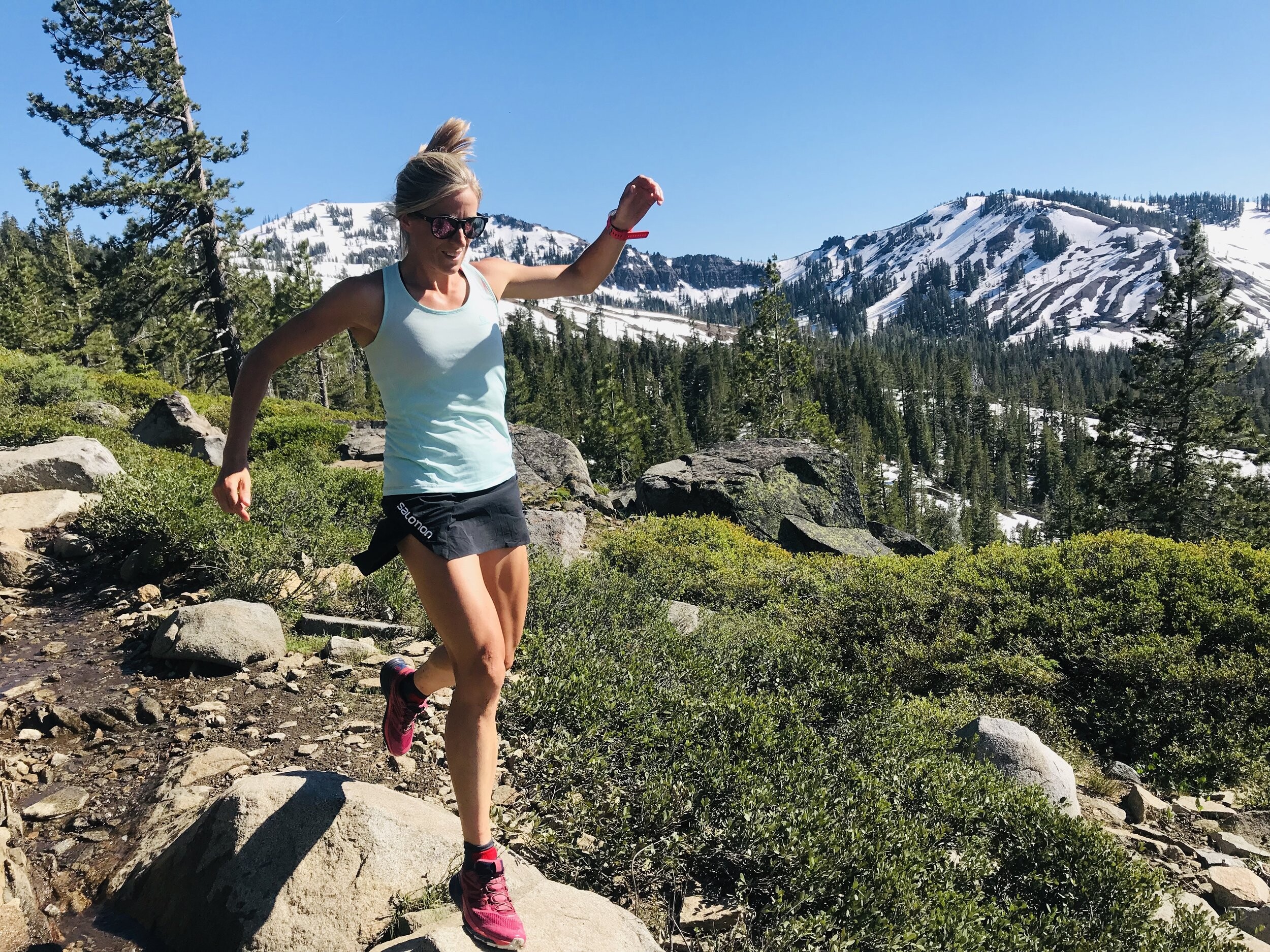
Ann Trason holds the record for the most victories at Western States, securing 14 wins from 1989 to 2003. Scott Jurek dominated the men’s competition with seven consecutive victories from 1999 to 2005. In 2021, Beth Pascall of the UK won the women’s race, recording the second-fastest time in the history of women’s 100-mile races with a finish of 17:10:42.
The Course: A Test of Will and Stamina
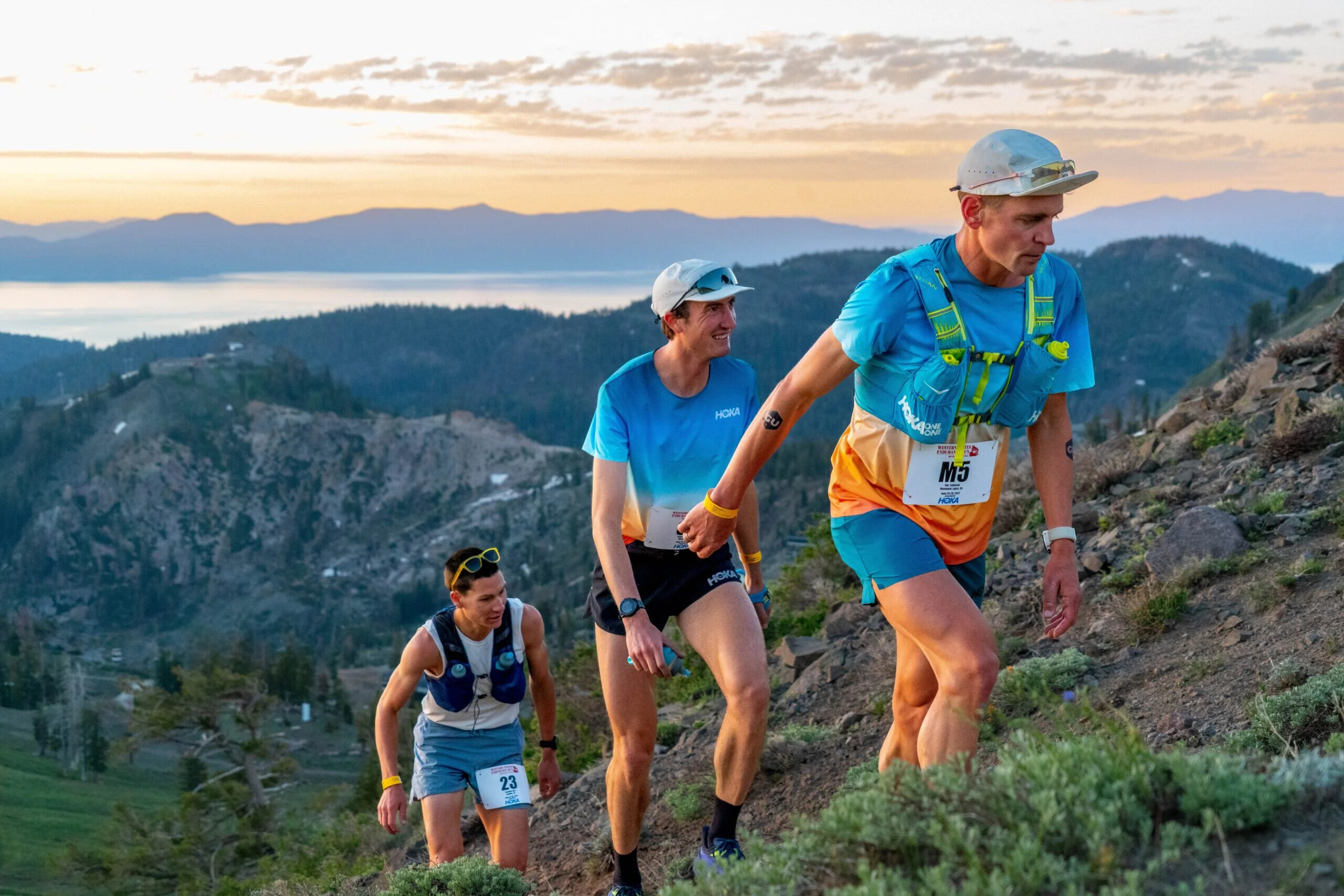
The Western States Trail stretches from Olympic Valley to Auburn, California. Runners start at 5 a.m. on Saturday and must reach the finish line by 10:59:59 a.m. on Sunday to be eligible for an award. The race begins with a steep 777-meter ascent to Emigrant Pass in the first 4.5 miles, then follows historic gold and silver mining trails, climbing an additional 4,700 meters and descending 7,000 meters to Auburn.
The trail cuts through rugged, remote terrain, accessible only by foot, horse, or helicopter. With temperatures reaching up to 35°C, the race tests runners’ resilience in extreme conditions. Despite the challenges, support is robust, with a volunteer-to-runner ratio of 4:1 and 20 aid stations, including 10 medical checkpoints.
The Coveted Buckle
Finishers of the Western States 100 are awarded a buckle, a nod to the race’s roots in endurance horse racing. A silver buckle is given to those who finish under 24 hours, and a bronze buckle to those finishing within 30 hours.
Securing a spot in the Western States 100 is highly competitive, with only 369 entries available each year. Runners must qualify through designated races and enter a ballot. Automatic entries are granted to the top 10 finishers from the previous year and top performers in Golden Ticket Races such as the Black Canyon 100K. Additionally, the race offers a pregnancy deferral policy, allowing expectant participants to defer their entry without a time limit.
Preparing for the Race
Runners typically arrive in Olympic Valley early in the week, with pre-race activities including a shakeout run on Thursday and a mandatory briefing on Friday. The nearest airports are in Reno, Sacramento, and San Francisco. Accommodations are available in Olympic Valley, home to the Palisades Tahoe ski resort, and in nearby Truckee and Tahoe City. Although the start and finish locations differ, transportation options are plentiful, with rideshares and shuttles available.
The Western States 100 is more than just a race; it is a journey of perseverance and grit. Finishing the 100-mile course within the 30-hour limit is a badge of honor, joining the ranks of those who have conquered one of the toughest ultramarathons in the world.
by Runner´s Tribe
Login to leave a comment
Western States 100
The Western States ® 100-Mile Endurance Run is the world’s oldest and most prestigious 100-mile trail race. Starting in Squaw Valley, California near the site of the 1960 Winter Olympics and ending 100.2 miles later in Auburn, California, Western States, in the decades since its inception in 1974, has come to represent one of the ultimate endurance tests in the...
more...She’s the First Woman to Finish the Barkley Marathons—Ever. Here’s How She Did It.
Jasmin Paris did the “impossible” with the same pair of shoes she wore in her first two attempts. The Barkley Marathons is not a race in the traditional sense. It’s a war of attrition where participants, at times, work together more than they want to beat each other to the finish line. Completing five 20-ish mile laps under the 60-hour time limit is the goal—the order of the finishers is secondary.
The 2024 edition of the race, which started at 5:17 a.m. on March 20 and concluded 2.5 days later on March 22, was historic. Five runners completed the arduous race—the most in one year ever—including the first woman to finish, Jasmin Paris, a 40-year-old British mother of two.
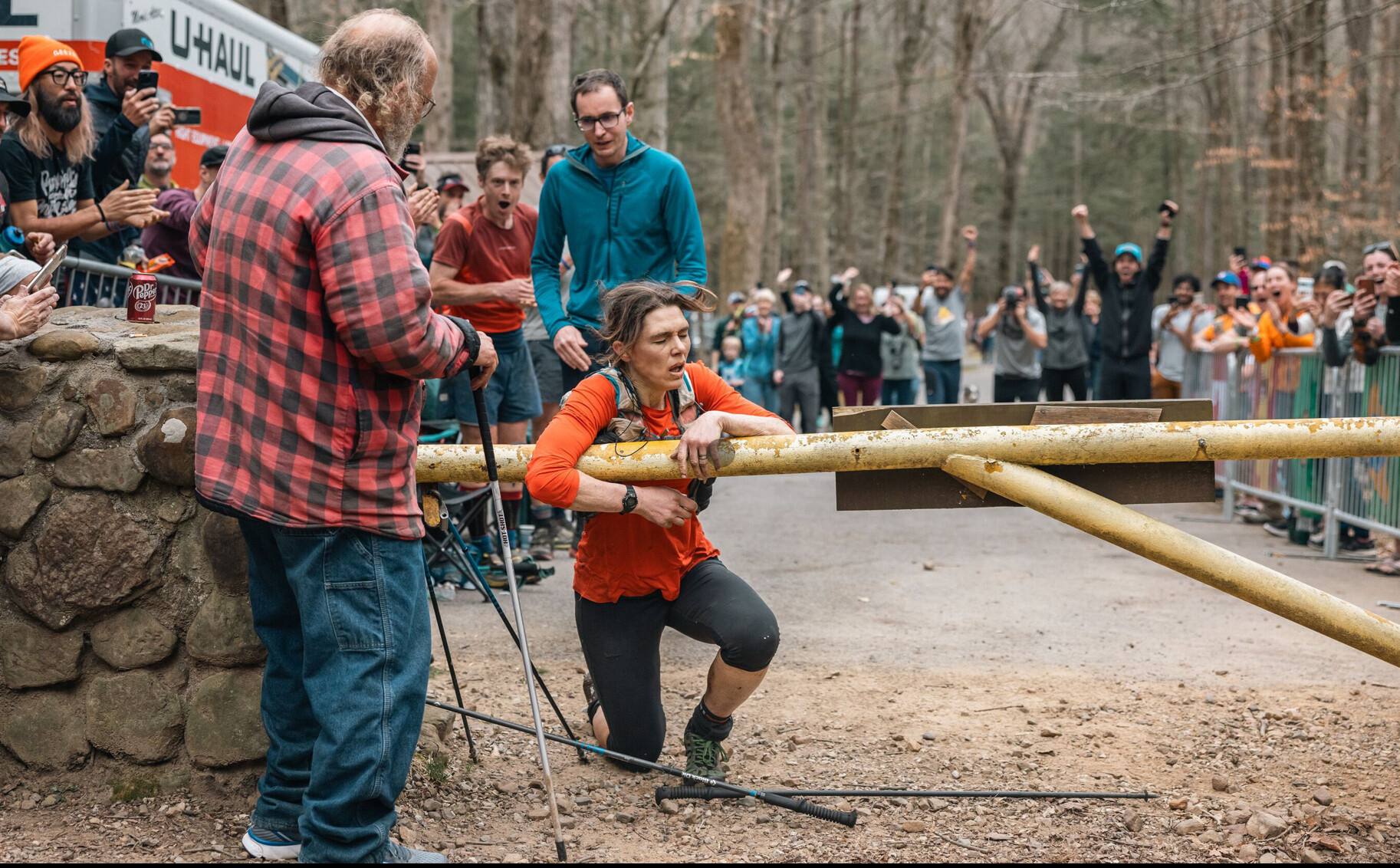
Skeptics, including the race’s controversial organizer, Lazarus Lake, have stated in years past that it was impossible for a woman to complete Barkley. But Paris broke the glass ceiling, finishing with less than 2 minutes to spare, in 59:58:21. (At this year’s race, only four of the 40 participants were women.)
“I’ve always enjoyed proving people wrong, especially if it’s something to do with being told that a woman can’t do it,” Paris said after the race. “It gives me great satisfaction.”
Runner’s World caught up with Paris, fresh off a well-deserved vacation with her family, to talk about how she prepared for the unpredictable ultramarathon.
Hills pay the bills
Barkley is a race where experience matters. It’s uncommon for someone in their first year to finish. But after becoming the first woman to complete three loops in 2022 and again in 2023, Paris was hungry to come back.
“The first time, I was intrigued by this idea of something that was on the very cusp of what was possible,” she said. “And clearly, the likelihood is that you would fail. But there’s still this glimmer of a chance that you might not fail.”
Barkley is difficult to plan for because of secrecy. It’s invitation-only, and participants are quietly told that they can race an undisclosed amount of time before the event. The starting date changes year-to-year, but it’s generally sometime in March or early April.
Paris had an inkling that she’d be given a chance to become the first woman to finish, so she planned her winter training on the assumption that she’d line up. Metatarsal pain in November and December forced her to cross-train on the elliptical or bike for six weeks, but by Christmas, she was back running.
Paris then hunkered down on hill work. At Barkley, a race with an estimated 65,000 feet of elevation gain, it’s essential to practice climbing—something that Paris doesn’t shy away from anyway. For years, she honed her skills at fell races—a niche sport where runners race off-road over hilly terrain—and this Barkley cycle, she added even more elevation than in years past.
As a cornerstone of her training, Paris added circuits of hills into her long runs around the foothills near her home in southern Scotland. She would also supplement her running (and hiking) with sessions on the stair climber, where she’d knock out 3,200 feet of climbing in 40-minute intervals.
About a month out from Barkley, Paris completed her toughest week of training yet: 90 miles of running with an extra 20 miles of hiking. She estimates she traversed around 36,000 to 39,000 feet of elevation that week. (Mt. Everest is 29,000 feet tall, for comparison.)
Her most Barkley-like training run was a 22-miler over the winter. Usually, Paris will run before she drops her kids off at the pool on Saturday mornings, but she planned a long workout, so she went to bed at 8 p.m. the night before and started her run at 1 a.m. The session, in driving rain that turned to snow, simulated the testy conditions she might experience at Barkley on a bad day. Since a large portion of Barkley isn’t on marked trails, Paris logged much of the eight hours of hills off-trail, totaling over 15,400 feet of net gain.
"That was really good training for Barkley,” she said. Strength training is key
The biggest change that Paris made in recent years was adding more strength training into her routine.
As a girl growing up in northern England, Paris was an avid horseback rider, competing in competitions as well as riding for fun at the local stables. But when she was 17, she partially tore the ACL in her left knee after falling off her horse and landing on a fence—then fully tore it chasing after a train. Paris never got reconstructive surgery, so to this day, the ligament is not connected in her knee.
Trail running can test your balance, especially on technical courses with hairpin turns, so Paris has focused on strength training in recent years to stabilize her knee. Now, the joint is as strong as ever, she said, and weights have become a fixture in her training routine.
Paris takes a 30-minute online strength class three times a week, where a virtual coach monitors her form and prescribes movements like lunges, single-leg squats, bridges, and sit-ups. But Paris said that advancing past bodyweight exercises to weights has especially leveled-up her strength.
“I definitely felt stronger going into this year,” she said. “Not just my legs, but my core and my upper body as well.”
Don’t stress over the little things
Part of what makes Barkley so tough to complete is its unpredictability. The spring weather in Tennessee can be bitterly cold or sweltering hot, but participants don’t know what to expect until days before, since the start time is kept a secret.
Paris, in turn, took a laissez-faire attitude toward her race preparation.
The 60-hour time limit at Barkley leaves little room for sleep—Paris told The Guardian she slept about 3 minutes during the race—but she doesn’t believe in simulating tiredness before the event. In fact, quite the opposite.
In the lead-up to Barkley, Paris focused on starting the race feeling refreshed. And although she knew exhaustion was inevitable, she said that coming over from the U.K. was actually an advantage. Because her hometown is five hours ahead of the time zone in eastern Tennessee, Paris said the middle of the night—when sleepiness would naturally kick in for U.S.-based athletes—felt like the morning to her since she was still used to U.K. time.
Nutrition is also difficult to dial in, or anticipate, Paris said, because she usually doesn’t have trouble eating until the 10 or 12-hour mark of an ultramarathon. And that’s if she’s moving fast. She rarely trains that long, if at all, so it’s difficult to simulate hunger.
“It’s hard to repeat in training that sort of dry feeling [where you] can’t swallow,” Paris said. At Barkley, she turned to moist foods, like frittatas, pizza (without the crust), and hot cross buns with raisins.
Paris packed for the race intently, although she admits she forgot some things, like electrolytes. An ardent environmentalist and co-founder of the The Green Runners, Paris prefers to use existing gear, or borrow from others, rather than buy new products—even if hers is worn.
Days before Barkley, Paris’s mother helped sew up the holes in her pants. Paris even wore the same pair of shoes that she used during her previous two attempts at Barkley, Inov-8 Mudclaw G 260s, after repairing some holes in the uppers.
“You don’t really need the newest stuff; that’s not really what makes you able to run well or what keeps you going,” Paris said. “It’s more about what’s in your head and what training you’ve done.”
Login to leave a comment
Your first trail ultra: three things to consider
So you’ve decided to run an ultramarathon–congratulations. Whether you’re coming from a pure road running background or you’ve dabbled in some shorter trail races, when you take on a distance of 50 kilometers or more by foot, you’re in for an entirely new experience.
Trail runners often describe ultramarathons as “life-changing,” and for good reason: covering such long distances, runners often find themselves running alone, in nature, up against conditions that road running simply doesn’t provide. Regardless of your running background, there are several things that every runner should consider before choosing their first ultramarathon.
1.- Your current training environment

Stepping up in distance is a challenge, so limiting new variables like terrain and altitude can help ensure success in your first ultra. Where you train should factor into the first race you choose. Unless you have access to challenging terrain, choosing a technical course for your first race is risky. Same goes for altitude; if currently live and run at sea-level, you’d be wise to choose a race in the same region for your first attempt. Fortunately, there are a number of popular races across Canada that serve as great options for a road runner making the move to ultrarunning for the first time.
2.- Start small
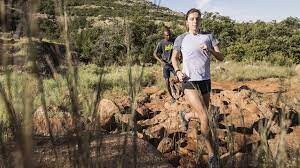
As ultramarathons range from 50K to multi-day events comprising hundreds of kilometers, first-time runners should be realistic about what they can successfully complete in their first race. As your pace will already be slowed on trails, consider how long you may be on your feet for any given distance. For most runners, 50K will be a big enough step up in single-day running, making it a great place to start. Once you have more ultrarunning under your belt, distances like the 100K and 100-miler will be more manageable.
3.- Your support system
Many ultramarathons allow racers support from unregistered runners accompanying them on various parts of the course. For long races, it can be crucial to have a crew to help you to the finish line, as navigating trails in harsh conditions when you’re already tired is much easier when you have someone with you. Consider who from your running network you can lean on to support you in your first race–having someone on course with you could be the key to a successful finish.
Outside of race-day support, first-time ultramarathoners should also consider the support they have in the lead-up to a race. To train for an ultramarathon, you’ll need to be out running for long periods of time, week after week. For the everyday runner with a job and family, this will take planning ahead and making sure your loved ones are on-board to support you when you need it.
by Claire Haines
Login to leave a comment
Time on feet training–is it right for you?
Time on feet training is becoming increasingly popular, but who is it best for?
Time on Feet (ToF) training is an approach that prioritizes the duration of a run rather than specific distances. Emphasizing the time spent running, rather than the pace or distance covered, this training method can offer unique benefits for certain types of runners. Canadian Running spoke with Jason Fitzgerald, a coach, 2:39 marathoner and host of the Strength Running Podcast, to learn what ToF training entails and who should consider incorporating it into their program.
The basics
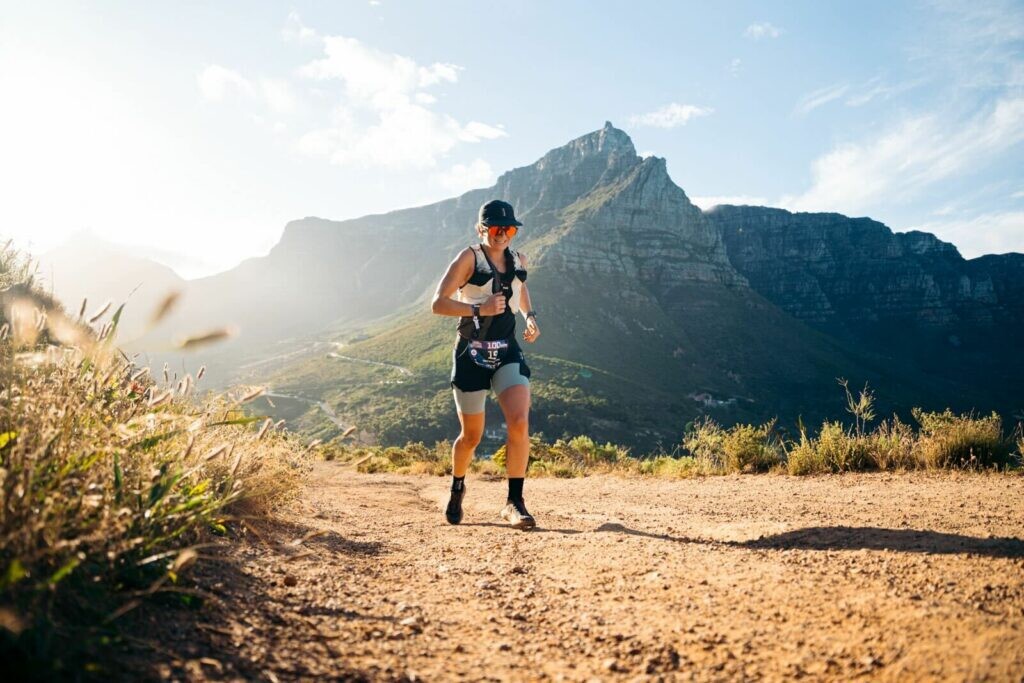
In ToF training, runners aim to meet a prescribed duration for their training runs instead of focusing on a specific distance. For instance, a training plan may specify a two-hour long run, rather than a set mileage. This approach allows them to maintain a consistent effort without the pressure of reaching mileage targets.
Benefits for competitive runners

Fitzgerald says ToF training can be particularly valuable for competitive runners who want to avoid the pressure of running at a specific pace. By prioritizing time, athletes can focus on maintaining a comfortable effort level without the constraints imposed by set distances. This approach allows for better pacing control and helps prevent overexertion during training.
Fitzgerald notes that race-specific workouts and training for specific distances should not be neglected entirely. While ToF training provides flexibility, distance-focused training is crucial to prepare for races that follow set distances. “Races are rarely run by time (i.e., the most you can run in one hour) so it’s helpful to focus on distance when you want to run race-specific workouts or ensure that you can finish a long race, like a marathon,” he says.
The benefits for new runners
For novice runners, ToF training offers a valuable approach to building endurance and capacity gradually. Rather than focusing solely on hitting specific distances, new runners can concentrate on running for longer durations. This approach allows their bodies to adapt and gradually increase their running capabilities, reducing the risk of injury associated with pushing distances too soon.
Considerations for track athletes
Track athletes primarily focus on shorter distances and require precise training to improve their speed and performance. “Their workouts will likely be on the track, which is a venue that helps you run particular distances more precisely,” says Fitzgerald. “But even track runners can use this methodology for some of their runs when distance isn’t important, like an easy “base” run for an hour.”
Utility for ultrarunners
Fitzgerald says ultrarunners, in particular, can greatly benefit from ToF training. This method prepares them to endure prolonged periods on their feet, including walking and rest stops during races. By practising running for extended periods, ultrarunners can develop the stamina and mental fortitude necessary to tackle gruelling events.
“Many ultramarathoners will venture onto the trails for a two- to four-hour long run. Their goal is time on feet, not distance or pace, which prepares them to stay on their feet for a very long time on race day,” he says.
How to add ToF training to your schedule
The good news is that implementing ToF training into your program is simple. “Just convert distances to time, and run those instead,” says Fitzgerald. “So if your training plan asks you to run four miles, you can instead run a certain amount of time that generally corresponds to that distance.”
The bottom line
Time on feet is a great training option when you’re trying to control your pace during runs, prepare for a long race like an ultra or avoid increasing your mileage too quickly when you’re new to running or returning from an injury. It’s easy to implement, and can take some of the pressure off your runs, so you can get more enjoyment out of your training.
by Brittany Hambleton
Login to leave a comment
Early Morning Race Start? Here’s How to Reset Your Sleep Schedule
Training plans include time and distance on your feet, but rarely do they block out time in bed—maybe it’s time they do.
At first glance, the start times of most marathons—around 9 a.m. or 10 a.m.—seem easy enough. But when you factor in travel and wait time, runners often have to leave their home or hotel rooms before dawn to get to the start. That leaves typical sleep schedules in the dust.

“I had four races last year and all of them required getting up as early as 3:30 a.m.,” Joe English, elite-level master’s multi-sport athlete and former national coach for the Leukemia and Lymphoma Society’s Team-In-Training program, tells Runner’s World. Especially for the bigger races, where there are a lot of logistics involved, it’s necessary to get up and race super early.
So if you need to reset your sleep schedule before a race to accommodate those pre-dawn times, how do you do it and how long will it take?
Why You Should Reset Your Sleep Schedule
“Sleep used to take a back seat to exercise and nutrition, but in the past decade, we’re starting to realize that it’s really a tripod when it comes to athletic success,” James Maas, Ph.D., author of Sleep to Win: Secrets to Unlocking Your Athletic Excellence in Every Sport tells Runner’s World. “I have personally seen runners who adjusted their sleep and nothing else and have greatly improved their running as a result.”
Extensive research confirms this observation. A systematic review published in Sports Medicine in 2023 about sleep and athletic performance, found that while elite athletes feel rested with eight hours of sleep every night, they often sleep less than seven. Long travel and resting in unfamiliar environments often disrupted their sleep, as did the same things that keep many of us awake: social demands, work and family commitments, and lifestyle choices like diet.
The researchers also found, though, that extending sleep by about 45 minutes to two hours, rather than napping, improved both sleep quality and performance, as shown by metrics like strength and power.
To gain the same benefits, here’s how long it takes to reset your sleep schedule in order to wake up early for a race and how to make it happen so you’re ready for a solid performance.
How to Reset Your Sleep Schedule
If there is a race in your schedule that involves travel crossing time zones, both experts say it takes up to four weeks to adjust your sleep schedule, so start planning for that new wake-up time well in advance.
Here’s what you should do to adjust:
1. Set an Alarm—for Bedtime
You may have the best intentions to go to bed at a reasonable hour, but then OME (One More Episode) Syndrome sets in. Set an alarm to tell you it’s time to wind down.
Consider taking 30 minutes to an hour to move from your couch to your bed, giving yourself enough time to take care of that process. “I have an alarm that goes off at 9:15 every night and that’s when I know to start my wind-down time no matter what,” Ryan Hurley, a sleep performance coach and former ultramarathoner and Ironman racer tells Runner’s World.
2. Create a Consistent Routine
Part of good sleep hygiene—creating the ideal environment for getting a good night’s rest—is consistency. “If your focus is on having a regular sleep cycle all the time, an early race is going to have less of an impact, because you’ll be better rested [overall] and therefore more capable of dealing with that bump in the road,” says English. To help keep him consistent, English sets his lights to automatically dim at the same time in the evening to cue his bedtime.
3. Write Tomorrow’s To-Do List
Writing down your to-do list for the next day before you go to bed can help keep nighttime ruminating at bay. “By writing it down, you’re making space for it but you’re not bringing it into the bedroom with you to worry about,” says Hurley.
4. Act as Your Own Sleep Detective
Tracking your sleep can change your rest game in ways you don’t even yet realize, says Hurley. “I always thought that I was getting enough sleep because I was getting seven hours, and the common recommendation is seven to nine hours,” he says. “But it wasn’t until I started tracking my sleep that I realized I wasn’t getting enough REM sleep.”
“I’ve found that people aren’t very good at judging how much sleep they got,” Maas adds.
To assess your rest, ask yourself these questions: Do you tend to feel tired when you’re in a warm room, a dull meeting, have a heavy meal, or after a couple drinks? Do you typically fall asleep within five minutes of hitting your pillow? Do you sleep extra hours on the weekend? Do you need an alarm to wake up? If yes to any of these, you probably need more rest, he says.
5. Get Grateful
Having an “attitude of gratitude” sounds like a nice catch-all phrase we hear a lot these days, but it can actually help turn your mood around. “Every night, I review the good things that happened to me that day, and it helps puts me into a good mindset to fall asleep,” says Hurley.
6. Replicate Start Times
Replicating race conditions—which includes time of day—can help your body adjust by the time you hit the start. “You should do at least some portion of your training at the time of day of your race,” says English. “It helps acclimate you to running under the conditions in which you’ll be racing.”
How to Schedule Your Sleep the Night Before a Race
If adjusting your sleep schedule for four weeks before a race is unrealistic, English emphasizes that it’s likely, with the help of adrenaline, you’ll be able to push through a race on less sleep than usual. It’s more important to be well-rested the two weeks leading up to the race. Then, if you can, squeeze in a nap if you know you won’t get a full night’s rest before the race.
If you don’t sleep well the night before, don’t let it derail you. Instead focus on the training you’ve done to remind you that you’re ready for the race, English suggests.
To make sure you get the best sleep possible in the days leading up to the start to support your performance, here’s what to do:
Stay Awake Until Bedtime
If you have a 3 a.m. wake-up call, simple math would deduce that you should go to bed much earlier that night. Not so, says English. “The number one thing runners would tell me the night before the big race is ‘I’m going to go to bed at 4 p.m.,’ and I tell them that is a recipe for a disaster, because you’re going to confuse your body into thinking you’re taking a nap, and will wake up after two to three hours,” he says. “My advice instead is to go to bed at a reasonable hour, but not more than an hour or two earlier than normal.”
Go With the Flow
Whether it’s a 24-hour relay, a time zone change, or simply a super-early start time that you couldn’t prepare for, there will be some races that basically happen in your middle of the night. “I remember once I was at the Disney World Marathon which has a really early start, and I was on the bus at 3 a.m., which was midnight my time, and here I was just about to start running,” recalls English. Times like that, there’s only so much you can do, he says. “Just do what you can, and know that your training will carry you through.”
Make Time for a Well-Timed Nap
When you can’t get a full night’s rest, count on the power of a short-and-sweet nap. “Napping can increase your alertness, reaction time, and coordination,” says Maas, who coined the term “power nap.” The sweet spot for nap timing is less than 30 minutes or more than 90 minutes, according to Maas. “Otherwise, you’ll be groggy,” he says
Don’t Sweat the Alarm
The “will I wake up for the race?” panic is so ubiquitous that Jerry Seinfeld was put in charge of waking up a New York City Marathon runner who famously slept through his Olympic race. But let’s separate fact from fiction: According to English, this scenario likely won’t happen. “I’ve probably helped 5,000 runners reach the starting line of a race and I don’t recall anyone oversleeping,” he says. “If anything, it’s the opposite—they’re up at 2 a.m. because of the adrenaline.”
by Runner’s World
Login to leave a comment
Olympian Army major gets ready for 250km ultramarathon
Two-time Olympic rowing champion and Army major Heather Stanning is ready for her next challenge.
Alongside a famous face, she is set to take on the Marathon des Sables, an extraordinary race and adventure that's been taking place in the southern Moroccan Sahara since 1986.
Forces News caught up with her in Cyprus during training.

This event is the ultimate ultra race and certainly not for the faint-hearted – which is probably why Maj Stanning said 'yes' when asked if she would take part.
The Marathon des Sables sees competitors race 250km over six days, self-sufficient and in the Sahara desert.
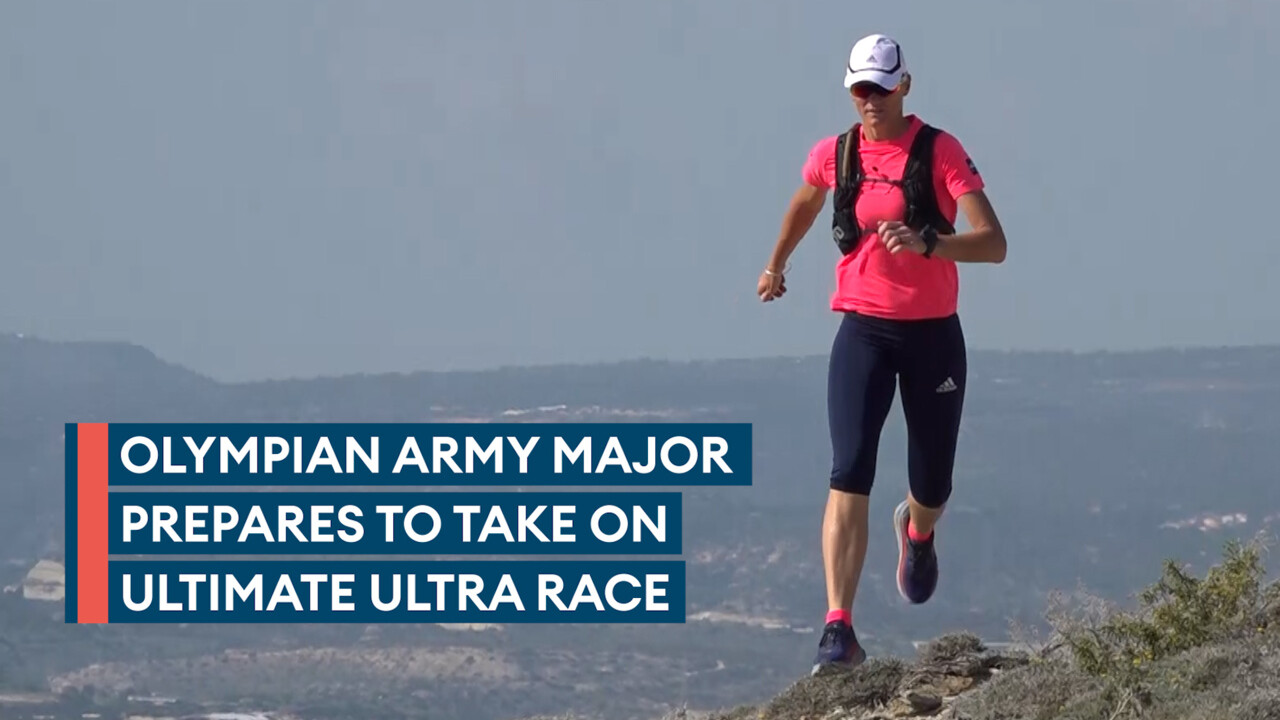
Maj Stanning's team is made up of three other British Army personnel and TV personality Judge Robert Rinder.
Maj Stanning said: "Why am I doing it?
"The Army Benevolent Fund approached me and said 'It's our 80th year, we want to do a big challenge, raise awareness and raise some money, will you do this challenge for us?'.
"I was like 'Oh absolutely' and then they told me, I was like 'Oh wow, that is a challenge'."
"I've been training since before Christmas, just gradually building up," Maj Stanning explained.
"For me, the biggest thing is staying in one piece and not getting injured.
"I may not be doing loads and loads of miles every week, but it's just gradually building up.
"It's time on my feet. Quite honestly, I will probably walk the majority of it. And that's probably where us in the military will do quite well.
"Let's not think we are all going to be ultra runners and break some records. It's about getting to the finish line."
by Sofie Cacoyannis
Login to leave a comment
Marathon Des Sables
The Marathon des Sables is ranked by the Discovery Channel as the toughest footrace on earth. Seven days 250k Known simply as the MdS, the race is a gruelling multi-stage adventure through a formidable landscape in one of the world’s most inhospitable climates - the Sahara desert. The rules require you to be self-sufficient, to carry with you on your...
more...Conquer Your Longest Distance Yet With These 9 Tips
Ultrarunners and coaches share their best advice for building mileage without getting injured.
Whether you want to progress from a 5K to a half marathon or a marathon to an ultra, a few general rules on how to run longer can help you get there.

While building mileage and time on your feet is paramount, the key to doing it successfully involves patience and persistence. “As much as volume matters—volume is king—too much volume too soon can get you on the sidelines,” Bertrand Newson, RRCA-certified run coach and founder and team captain of Too Legit Fitness, based in San Jose, California, tells Runner’s World.
Follow these tips from Newson and other coaches and ultramarathoners to successfully increase your mileage, avoid injuries, and crush your longest distances.
1. Build a Base, Then Keep It Consistent
“I steadily built up to running 250-mile races over many years, but I started by running one mile at a time,” says Sarah Ostaszewski, pro ultrarunner with Tailwind Nutrition who won the 2023 Ouray 100-Mile Endurance Run. “Build a strong base and try to keep a consistent running routine, so then adding a little extra here and there won’t seem so daunting.”
Base training typically requires about four to eight weeks (before following a race training schedule) to strengthen your cardiovascular system and your muscles, but the longer you can regularly run and set a foundation, the better. Your base work should involve mostly easy runs, low mileage, and maybe low-key speedwork (depending on your fitness level), like ending a run with strides. This part of your training is all about consistency, rather than actually building mileage.
Ultrarunner Mirna Valerio stays consistent by focusing on time on her feet, rather than distance. “This has been mentally freeing,” the author of A Beautiful Work in Progress tells Runner’s World.
“I have a standing appointment with my treadmill a couple times a week,” says Valerio, who will aim to run a minimum of 12 hours a day over six days at the Lululemon Further event, an ultramarathon for women in March. “I just get it done, which incidentally is one of my mantras.”
2. Find Your Best Approach to Building Volume
If you’re new to running and want to run longer, add another day of a short, easy run to your schedule, suggests Stefanie Flippin, an ultrarunner, Lululemon ambassador, and doctor of podiatric medicine, who has earned a first-place finish at several 100-milers.
Maxed out on available days of the week? Add to your long-run mileage, which is what Leah Yingling, ultrarunner and biochemical engineer who will see how far she can run in 24 hours at Lululemon Further, does first when aiming to build volume. The general rule is to increase your weekly mileage by about 10 percent each week, adding to that long run. For example, if you currently clock 17 miles per week with three four-mile runs during the week and a long run of five miles on the weekend, you would keep your midweek mileage the same, but kick up your long run to about seven miles next weekend.
Yingling, and many other pros, also do two runs a day. While this won’t work for everyone, if you don’t have a significant single block of time, clocking some miles in the morning and again in the evening and resting between can help you clock more mileage. One must-do to make it work: Tame the intensity on at least one of those runs.
Charlie Lawrence, 50-mile world record holder, views his second run of the day as a sort of active recovery. He often goes for double digits in the mornings, then runs for about four miles (at minimum) in the evening, keeping the effort light.
No matter what, testing out strategies to see what works for your schedule is the best way to run longer. “That might be adding a walk a few days a week in addition to your daily runs, or maybe you’re adding back-to-back long runs,” says Yingling. “Whatever you do, find something that is sustainable.”
3. Follow a Progressive Training Plan
A good training plan will slowly build mileage to decrease your risk of getting sidelined, as research shows taking on too many miles too soon is one of the biggest risk factors for overuse injuries.
When choosing your training plan, you have to be realistic about the time you have to build up to the distance you want to conquer—and where you’re at now, says Newson. For example, if you have your sights set on a half or full marathon, think about what you can comfortably run today. Then, following the loose rule of adding 10 percent more miles each week, how long do you need to train? If you currently run five miles without stopping and feel good after, and can comfortably clock 12 miles per week, you can probably conquer a 10-week half marathon plan.
Another important factor to look for when it comes to mileage on a training plan: recovery weeks. Newson explains you’ll typically see this as three weeks of building, then a week in which you back off mileage a little to give your body time to recover and actually make gains from all the work you put into your plan. This will also keep your body strong and help you sidestep aches and pains, he adds.
4. Keep Easy Runs Easy
You’ve heard it before but it’s especially true when trying to run longer: Don’t overdo your low-effort days.
“It’s important for me to always run my easy runs, short or long, at a conversational, aerobic rate of perceived exertion. This means that I can easily chat with a training partner for the duration of my runs without becoming out of breath,” Flippin says, who also clocks her heart rate to make sure she’s in an easy zone.
Don’t worry about what shows on Strava, either. “I think a lot of runners run their easy runs too hard and that is because of ego and they don’t want people to think they are slow,” says Devon Yanko, ultrarunner who’s placed first in several 100-mile races and will aim to conquer her longest distance over six days at the Lululemon Further event. “I delight in the idea that people may look at my Strava and think I am too slow, because on race day that won’t be the case!”
More generally, applying the 80/20 rule to your training overall can also help you record more low-intensity runs, Newson says, as it means 80 percent of your workouts should happen at a low intensity, and 20 percent at a hard effort.
It’s these easy runs that will help keep you running consistently—the key that unlocks higher mileage. “A B+ average of consistent runs, strength work, and recovery measures stacked over weeks, months, and years will always trump sporadic A+ weeks followed by a total drop-off,” Flippin says.
5. Master the Long Run
For most people, the long run will make up the bulk of your weekly mileage, but it doesn’t just help you clock more time on your feet. It also teaches you mental stamina, how to deal with fatigue, and it can help you get comfortable with being uncomfortable. With years of practice, this is what many pros say pulls them through farther distances.
Even though Lawrence can deal with being uncomfortable for long periods of time, he still turns to mind games to mentally check off miles. For example, he often breaks a race down into small, manageable chunks, often focusing on the next fuel stop (typically about every four miles) as a check point. If he’s struggling to get to the next four-mile marker, he may tell himself he’ll feel better in 10 to 15 minutes and checks in again then.
In addition to breaking your long run up into segments, Newson also suggests dedicating each mile to someone else, which takes it outside of yourself and gives you another reason to keep going, and says to focus on the mile you’re in, simply putting one foot in front of the other.
Finally, the long run is the perfect time to practice your fueling and fluid intake, Newson says, considering you need energy to clock longer miles. Aim to take in carbs when going for 90 minutes or longer, and go for about 30 to 60 grams per hour after the first hour.
6. Schedule a Few Harder Workouts
To build endurance, you want to run long, but you can also add intervals and speed work into your schedule.
Lawrence gets on the track for VO2 max-specific workouts at least once a week. VO2 max is the amount of oxygen you can take in while running and is a major marker of fitness—the better this metric, the easier running will feel, which will help you go longer with less effort. Focusing on VO2 max intensities on runs means going for about 90 to 100 percent of your max heart rate or about 5K pace, and it could involve intervals like 400-meter repeats.
You could also focus on lactate threshold training. Your lactate threshold is the point at which your body produces lactate at a rate you can no longer clear, leading to fatigue. To help you prolong that side effect—helping you go faster for longer—practice running at your threshold pace. (Here’s how to calculate your running speed at lactate threshold).
To do this, Ostaszewski prefers longer interval workouts with work periods ranging from six to 10 minutes near aerobic threshold. But tempo runs at your threshold speed are also smart.
7. Supplement Your Runs With Mobility and Strength
Before you jump into high mileage, you need a solid warmup. Lawrence has been doing the same activation drills before runs for a long time. He starts with foam rolling most of the lower body, then does a series of exercises, like:
Leg swings
Down dog to lunge rotation
Ankle mobility moves
Banded work, like glute bridges
This go-to routine wakes him up and gets him in run mode, even when he’s not feeling it.
Cross-training workouts are also key. Valerio mixes strength training, mobility workouts, Pilates, and rowing into her training schedule, which she says helps her avoid overuse injuries. Meanwhile, Flippin points to strength training in particular as crucial to running longer. She suggests starting with one day a week to build consistency, then adding on days from there.
Lawrence focuses specifically on doing core workouts every day (one of his go-to moves: the ab roll out), along with dedicated gym time for lifting, in which he conquers moves like hex bar deadlifts.
8. Make Recovery a Priority
Many pro runners turn to a solid nutrition practice to jumpstart recovery and fuel future performances. “I ensure I’m always getting in carbohydrates and protein within 30 minutes of finishing a key workout or long run,” Yingling says.
Finding time for other recovery practices, like mobility work, foam rolling, even meditating, can also support your training and get you prepped for the next round of mileage, Newson says. Full rest days are also important, especially if you’re feeling any aches and pains.
And you can’t forget about sleep for recovery—striving for at least the recommended seven to nine hours—especially for those looking to push their mileage.
9. Don’t Rely on Motivation Alone
Running your longest distance takes dedication and determination, but don’t expect to feel motivated every day. “People often wait to do things until they are motivated, when instead, they should have been focused on completing their plan or working toward their goal,” says Yanko. “I don’t jump out of bed every morning peppy and excited to run, but I am committed to doing the work and thus, I simply get the work done.”
Yanko also suggests tapping into curiosity to keep you going longer. “That is, instead of being intimidated by a workout or long run, I allow myself the opportunity to be curious about what might happen if I simply begin the session,” she says. “I do not believe that one workout or one long run ‘proves’ anything about my fitness or ability to race, so having curiosity means I can get into a session and allow it to unfold with confidence that if I just continue to show up and do the work, I will build my fitness brick by brick.”
Newson also suggests a running group to keep you accountable and consistent, and to elevate the fun of your workouts.
“On the mental side, I always try to see the big picture and remember that all the miles I’m running are for fun and for my own personal enjoyment,” Ostaszewski adds. “I’m always aiming to enjoy the process and recognize growth in the journey.”
by Runner’s World
Login to leave a comment
Runners Are Racing More than Ever
Strava’s year-end report shows that more runners are turning to competition and how different generations compete differently
This month, Strava released its annual Year in Sport, with fascinating insights about where running might be headed. Running was the most-uploaded sport in 2023. (Hear that? That’s the sound of job security!) Most runners log their miles solo, 9 percent are in groups of three or more people, and an additional 9 percent are logged running in a pair.
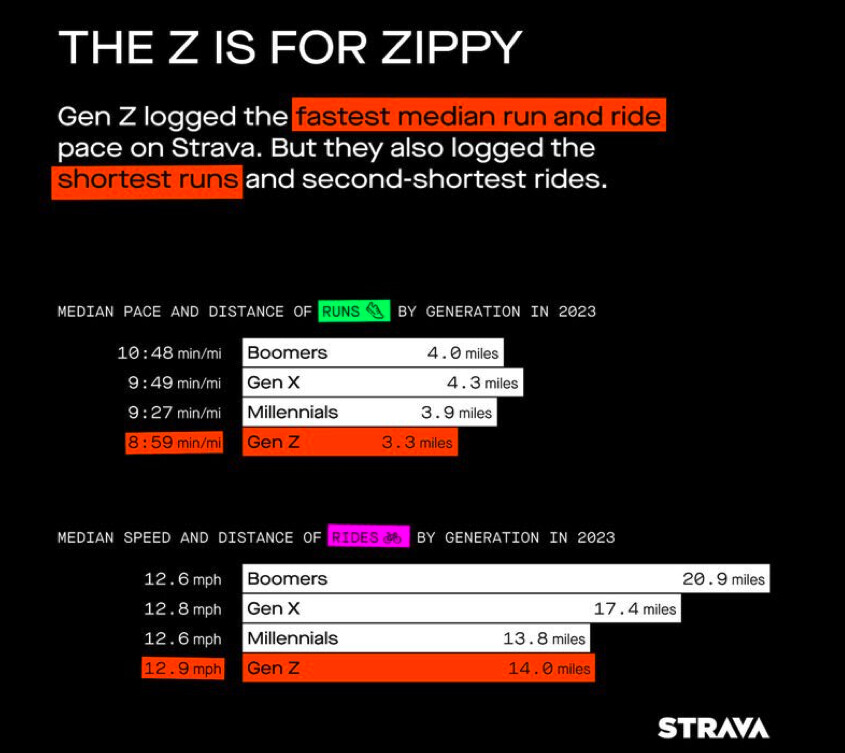
Trail running, specifically, continues its trend upwards, with the share of athletes running off-road up 6 percent year over year. Almost half (47 percent!) of runners took at least one trail run. Friends, welcome to the club. We have jackets! (Haha, no we don’t.)
Many runners use competition as motivation and inspiration. Plus, athletes who race are 5.3 times more likely to set a distance PR. While men are currently more likely to compete than women, the rate at which men and women are participating is increasing at the same speed.
When life after the COVID lockdowns stabilized for many folks, the Strava Year in Sport review shows that they laced up their running shoes to compete. Twenty-one percent of runners on Strava ran at least one race in 2023, a 24 percent increase over 2022.
Racing was equally split across genders, with 21 percent of men and women competing at least once. Runners from Gen X (born between 1965 and 1980) were the most likely to race, with 26 percent logging at least one competition on Strava. Twenty-two percent of millennials (born between 1981 and 1996) raced, and 24 percent of boomers (born before 1965) pinned on a bib in 2023.
Ultramarathons, while still less popular than shorter distances, are steadily becoming more popular, too, according to statistics. While just 2 percent of runners on Strava completed an ultra in 2023, that’s still up 11 percent from 2022.
Out of all ultrarunners on the app, two-thirds completed at least one 50K, meaning plenty of runners double-dipped on super long-distance runs in 2023. Women were 43 percent less likely to have run an ultra of any distance (so, yeah, we might have a problem). Participation in ultras may be growing at the same rate among men and women, but there is still plenty of work to be done—for instance, addressing childcare disparities that leave women with three to four fewer hours per week to train—in order to reach equity. The longer the distance, the greater the gender gap tends to be, with half marathons having the smallest disparity—7 percent of women completing a half and 8 percent of men.
Longer races are less popular this year, sure, but participation is growing by about 10 to 15 percent. Less than 1 percent of runners on Strava completed an ultra over 50K, though this distance remains the most popular to run. Participation in 50 miles is roughly half that of 50Ks, and 100K participation is roughly half that. So, if you ran a 100K this year, pat yourself on the back, as you’re part of the 1 percent (.0025 percent, to be exact).
Marathons remain a popular distance for runners. Five percent of runners on Strava ran a 26.2-mile race in 2023, up 20 percent from last year. Again, women were 32 percent less likely to have run a marathon than men (4 percent of women on Strava ran a marathon versus. 5 percent of men), but both groups saw participation jump 20 percent compared to last year.
Gen Zers are not running as much as previous generations did at their age. Running, while less cost-prohibitive than, say, surfing, skiing, or mountain biking, still requires some financial investment. A 2020 survey by the Running Shoes Guru pinned the “average” run budget to between $937 and $1,132 annually. I guess those gels really do add up!
And when you consider that 60 percent of young adults don’t feel their basic needs are met, a decline in participation makes sense. According to Running USA, an independent group that produces industry surveys, the number of runners in the 35-44 and 45-54 age groups has dropped significantly since 2015, while participation in the 25-34 age group only increased slightly. According to the report, Gen Z runners prefer to run for experiential benefits like socializing, fun, and mental health.
Interestingly, data about Gen Z runners on the Strava Year in Sport says the opposite, reporting that this generation is 31 percent less likely to exercise primarily for their health compared to millennial and Gen X counterparts. The difference could be that runners committed enough to sign up for an activity tracking app are already a self-select group. Zoomers on Strava report that their primary motivation for exercise is athletic performance. This is echoed by the speed of their training runs, which average out to be a pace of 8:59 a mile. Zoinks!
Interestingly, data about Gen Z runners on the Strava Year in Sport says the opposite, reporting that this generation is 31 percent less likely to exercise primarily for their health compared to millennial and Gen X counterparts. The difference could be that runners committed enough to sign up for an activity tracking app are already a self-select group. Zoomers on Strava report that their primary motivation for exercise is athletic performance. This is echoed by the speed of their training runs, which average out to be a pace of 8:59 a mile. Zoinks!
Gen Z runners are also more run-dominant than other generations. Seventy percent of the generation’s Strava users uploaded runs onto the app versus 52 percent of Gen X, a 35 percent higher likelihood (this might as well be the likelihood to Google “What is a Zendaya?”) Gen Z runners saw the greatest percentage of growth in race participation this year, with a 60 percent jump in attendance at the marathon distance and a 68 percent increase at 13.1. (My mind would fully melt if I lined up against someone born in 2004, but also, welcome! Please be gentle.) According to Running USA, Gen Z runners gravitate towards races with a compelling theme or cause that resonates with their values.
Trends are different across training habits, too. Gen Z runners are twice as likely as boomers to have weekday activity after 4 P.M. and are 31 percent less likely to exercise before 10 A.M.. Fascinatingly, 39 percent of Gen Z Strava athletes started a new job, and a third of the cohort reported relocating in 2023, which could speak to flexibility or economic instability for younger runners.
Over the year, Gen Z runners logged 17 percent less mileage than Gen X athletes, explained primarily with a shorter average run length. Plus, Gen Z athletes have slightly fewer running weeks in a year. (Maybe if they weren’t so busy eating all that avocado toast, they could run more!) JK, as the kids on TikTok say. In truth, Gen Z runners might train less because they are shooting for shorter distances, or the other way around—it’s impossible to disentangle causation here.
It’s not only a fun pastime to browse the year-in-review data, poking fun at the generations before or after us like they’re siblings (“No, I run more!” “Well, I run faster!”), but it’s also a way to see where the industry is lacking.
The Strava Year in Sport data shows that the running industry will have to work to bring in more Gen Z athletes. This might mean that race directors and event organizers will have to continue tailoring their offerings to speak to a younger, more experience-driven demographic. Numbers also prove that, while the female section of the running pie has grown overall, more changes need to be made to reach gender equity. The statistics tell us a lot, but one of the biggest, if not the biggest, takeaways is that people are running more now than ever. And that? Well, that’s pretty rad.
Login to leave a comment


